desegregation
description: the process of ending racial segregation in institutions such as schools and buses
264 results
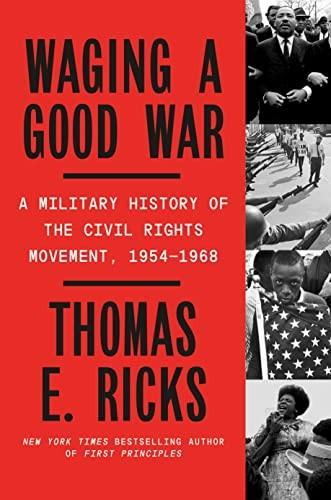
Waging a Good War: A Military History of the Civil Rights Movement, 1954-1968
by
Thomas E. Ricks
Published 3 Oct 2022
Schlesinger, Arthur Schmitt, Brad SCLC, see Southern Christian Leadership Conference schools and education, see education school segregation and desegregation Brown v. Board of Education ruling on busing and in St. Augustine at Little Rock High School at University of Mississippi, see University of Mississippi incident Schudel, Matt Schulke, Flip Schultz, Bud Schultz, Ruth Schwerner, Michael “Mickey” Schwerner, Rita Scott, Willie Emma Seale, Bobby Sears, Zena segregation and desegregation of armed forces of buses; see also Montgomery bus boycott delay tactics against desegregation in housing in interstate travel Jim Crow laws local versus national laws on of lunch counters of restaurants of schools, see school segregation and desegregation Selma campaign and “separate but equal” and Wallace on segregationists assessment of power of Black veterans and and children employed in civil rights movement communism and cultural myths promoted by defeat and defensive territory of economic power wielded by errors made by exposure of violence of isolation of Jews and Catholics targeted by lack of records kept by lack of successful outcome for language of NAACP banned by racial mixing and self-deceptions of white support of Seigenthaler, John attack on Self, W.
…
Trying to connect as a human being, she asked him in an almost gentle voice whether discrimination based on color is moral. Trying to be informal, but instead coming off as awkward and condescending, West addressed Nash as “little lady.” No, it is not, he conceded. So, she said, should the lunch counters be desegregated? “Yes,” the mayor responded. They shook hands. With that exchange, the desegregation of Nashville began. But it would take several years for all the city’s restaurants, movie theaters, and hotels and motels to comply. The birth of SNCC The next night, Martin Luther King, Jr., came to Nashville and spoke to a packed auditorium downtown.
…
As the lawyer for the Citizens’ Council in Selma, Alabama, put it in November 1954, the organization’s plan was “to make it difficult, if not impossible, for any Negro who advocates desegregation to find and hold a job, get credit or renew a mortgage.” This was not an empty threat. Rather, it was a time-tested formula. In August of that year, nineteen Blacks in the Selma area had signed a petition against school segregation. By September, sixteen of them had lost their jobs. Newspapers helped by publishing the names and addresses of those who tried to register. The fallback line of defense was tying up desegregation in the courts, fighting it in every county and school district. This approach produced much delay but few long-term victories.
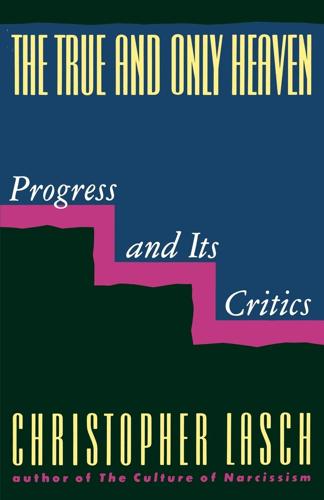
The True and Only Heaven: Progress and Its Critics
by
Christopher Lasch
Published 16 Sep 1991
Ione Malloy's diary of the South Boston -565- conflict was published under the title Southie Won't Go: A Teacher's Diary of the Desegregation of South Boston High School (1986). Additional information can be found in J. Michael Ross and William M. Berg, "I Respectfully Disagree with the Judge's Order": The Boston School Desegregation Controversy (1981); Thomas J. Cottle, Busing (1976); and the book by Dentler and Scott, cited at the beginning of this chapter. Jon Hillson, The Battle of Boston (1977), sees nothing but "racism." On desegregation in St. Louis, see Daniel J. Monti, A Semblance of Justice: St. Louis School Desegregation and Order in Urban America (1985). On desegregation in general, see George R.
…
On desegregation in general, see George R. Metcalf, From Little Rock to Boston: The History of School Desegregation (1983); and Jennifer L. Hochschild, The New American Dilemma: Liberal Democracy and School Desegregation (1984). Hochschild's book is a puzzle. The author supports desegregation but introduces a good deal of evidence damaging to the belief that desegregation is the best way to improve black education. Contrary to the assumption underlying the Brown decision and the whole struggle for desegregation—"that white institutions are superior to black ones," in Hochschild's words—"evidence seldom shows that racially isolated blacks have impaired self‐ esteem, and it all too often shows that blacks in desegregated schools do."
…
Contrary to the assumption underlying the Brown decision and the whole struggle for desegregation—"that white institutions are superior to black ones," in Hochschild's words—"evidence seldom shows that racially isolated blacks have impaired self‐ esteem, and it all too often shows that blacks in desegregated schools do." One study cited by Hochschild concludes that desegregation leads to "bitter rejection, isolation, and intellectual incompetence." Desegregation often means, moreover, that black teachers lose their jobs and that black principals are demoted. The legally sanctioned belief in the inferiority of black institutions endangers black colleges and businesses. The most damning testimony comes from black professionals who contrast their own experience in segregated schools, where teachers "made very strong demands" on them, with their children's experience in desegregated schools.
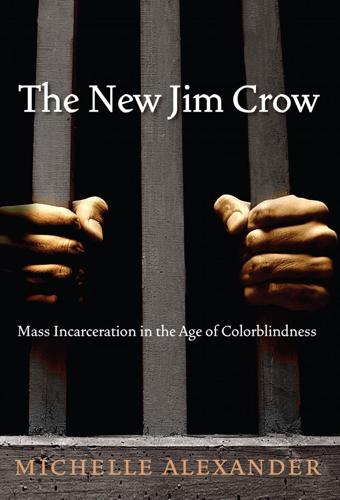
The New Jim Crow: Mass Incarceration in the Age of Colorblindness
by
Michelle Alexander
Published 24 Nov 2011
Two years later, the Court voided any real estate agreements that racially discriminated against purchasers, and in 1949 the Court ruled that Texas’s segregated law school for blacks was inherently unequal and inferior in every respect to its law school for whites. In 1950, in McLaurin v. Oklahoma, it declared that Oklahoma had to desegregate its law school. Thus, even before Brown, the Supreme Court had already begun to set in motion a striking pattern of desegregation. Brown v. Board of Education was unique, however. It signaled the end of “home rule” in the South with respect to racial affairs. Earlier decisions had chipped away at the “separate but equal” doctrine, yet Jim Crow had managed to adapt to the changing legal environment, and most Southerners had remained confident that the institution would survive.
…
In the streets, resistance turned violent. The Ku Klux Klan reasserted itself as a powerful terrorist organization, committing castrations, killings, and the bombing of black homes and churches. NAACP leaders were beaten, pistol-whipped, and shot. As quickly as it began, desegregation across the South ground to a halt. In 1958, thirteen school systems were desegregated; in 1960, only seventeen.31 In the absence of a massive, grassroots movement directly challenging the racial caste system, Jim Crow might be alive and well today. Yet in the 1950s, a civil rights movement was brewing, emboldened by the Supreme Court’s decisions and a shifting domestic and international political environment.
…
Board of Education decision and endorsed by civil rights litigators “did not offer poor whites even an elementary framework for understanding what they might gain as a result of integration.”58 Nothing in the opinion or in the subsequent legal strategy made clear that segregation had afforded elites a crucial means of exercising social control over poor and working-class whites as well as blacks. The Southern white elite, whether planters or industrialists, had successfully endeavored to make all whites think in racial rather than class terms, predictably leading whites to experience desegregation, as Derrick Bell put it, as a net “loss.”59 Given that poor and working-class whites (not white elites) were the ones who had their world rocked by desegregation, it does not take a great leap of empathy to see why affirmative action could be experienced as salt in a wound. Du Bois once observed that the psychological wage of whiteness put “an indelible black face to failure.”60 Yet with the advent of affirmative action, suddenly African Americans were leapfrogging over poor and working-class whites on their way to Harvard and Yale and taking jobs in police departments and fire departments that had once been reserved for whites.
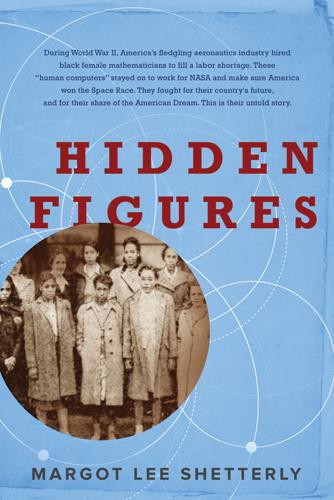
Hidden Figures
by
Margot Lee Shetterly
Published 11 Aug 2016
Henderson, “Henderson Speaks: Closing Schools No Way to Cope with Sputniks,” Norfolk Journal and Guide, November 23, 1957. 169 forcing each of those Virginia school districts to integrate: Smith, They Closed Their Schools, 144. 169 “the ‘separate but equal’ education of the Negroes marks time”: James Rorty, “Virginia’s Creeping Desegregation: Force of the Inevitable,” Commentary Magazine, July 1956. Rorty’s article offers a fascinating snapshot of Virginia’s struggle with desegregation in the years just after Brown v. Board of Ed. 170 “Eighty percent of the world’s population is colored”: Paul Dembling to file, July 7, 1956. 171 NASA: For years, the folks who had worked for Langley prior to 1958 could be distinguished by the fact that they said the name of the new agency after the fashion of the old one, pronouncing each letter separately: “the N-A-S-A.” 171 “to provide for the widest”: The Space Act of 1958, http://www.hq.nasa.gov/office/pao/History/spaceact.html. 171 “the bearer of a myth”: McDougall, The Heavens and the Earth, 376. 171 “the West Area Computers Unit is dissolved”: Floyd L.
…
See also mathematicians men as, 205 Mustangs and Tuskegee airmen, 52 supervisor duties, 89 Virginia Tucker as head computer, 5, 40, 86 West Area segregation, 7, 37, 43–45, 48, 104–105 West Computing boom, 105, 107 West Computing dissolved, 171–173, 204, 218–219 West Computing downsize, 165–167 West Computing section, 39–40, 48–49, 81, 87, 88, 102, 250, 264 “woe unto thee,” 58–59 women as, xvi–xvii, 4–5, 59, 81–82, 83–84, 115, 166, 180 working outside Langley, 289 Cooke, Arminta (West Computer), 171, 204 Cooper, Gordon, 228 Copeland Park (Newport News, VA), 29, 62, 64, 67 Cox, Elbert Frank, 13 Cronkite, Walter, 111, 239–240 Crosby, Bing, 71 Cuba, 207, 222 Curtiss Wright computer pool, 82, 289 Czarnecki, Kazimierz “Kaz,” 109–110, 142–143, 197, 254–255 Darden, Christine (data analyst) as data analyst, 231–232, 260–261 doctorate in mechanical engineering, 262–263 Hampton Institute, 202–203, 225 Katherine Johnson on, 250 sonic boom research, 261–262 Darling, Frank, 38 Darling processing plant, 38, 93 Darling Stadium, 225 “data analysts” for mathematicians, 259 Davis, Benjamin O., 51 Davis, John W., 72, 74–75 defense industry desegregation, 6, 15–16, 32 Delta Sigma Theta sorority, 40, 105 Dembling, Paul, 170 Derring, Eldridge, 90, 91 desegregation Brown v. Board of Education, 135, 140–141, 153–154, 157, 304 defense industry, 6, 15–16, 32 Dorothy Vaughan textbook, xvii “Four Freedoms,” 31 Girl Scouts, 198, 256 graduate school programs, 24–25, 75 Holiday Inn bar, 146 Langley Air Force Base, 168 Little Rock, 150 military, 104 Senator Byrd versus, 141, 168–169, 170, 184–185 universities, 24, 25, 75, 152, 157 Virginia schools, 203, 304, 306 See also segregation Double V, 35–36 Dryden High-Speed Flight Research Center (CA), 84, 163 Du Bois, W.
…
Later generations would associate the black freedom movement with King’s name, but in 1941, as the United States oriented every aspect of its society toward war for the second time in less than thirty years, it was Randolph’s long-term vision and the specter of a march that never happened that pried open the door that had been closed like a bank vault since the end of Reconstruction. With two strokes of a pen—Executive Order 8802, ordering the desegregation of the defense industry, and Executive Order 9346, creating the Fair Employment Practices Committee to monitor the national project of economic inclusion—Roosevelt primed the pump for a new source of labor to come into the tight production process. Nearly two years after Randolph’s 1941 showdown, as the laboratory’s personnel requests reached the civil service, applications of qualified Negro female candidates began filtering in to the Langley Service Building, presenting themselves for consideration by the laboratory’s personnel staff.
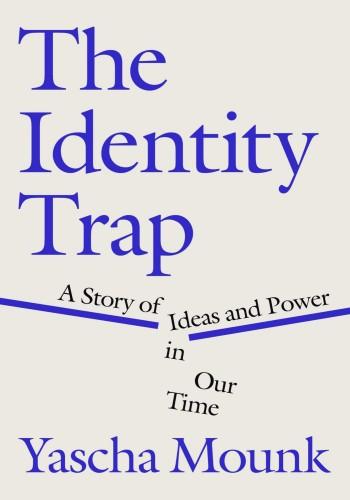
The Identity Trap: A Story of Ideas and Power in Our Time
by
Yascha Mounk
Published 26 Sep 2023
Drawing on his own experiences, Bell observed that many civil rights attorneys litigating cases over public schools in the American South were guided by an ideological commitment to desegregation. But the Black clients on whose behalf they were working often had different goals. They wanted their children to have access to a quality education, irrespective of the composition of the student body. At times, this even made them oppose efforts at desegregation outright. As a coalition of Black community groups wrote in a letter to a Boston district court that Bell used as the epigraph for his article, Any steps to achieve desegregation must be reviewed in light of the black community’s interest in improved pupil performance as the primary characteristic of educational equity. . . .
…
We think it neither necessary nor proper to endure the dislocations of desegregation without reasonable assurances that our children will instructionally profit. Bell’s article was written in the sober, even painstaking, tone typical of contributions to American law reviews, with lengthy citations to relevant cases often taking up the bulk of each page. But anybody who read it must have recognized that his conclusion was a political bombshell. Drawing on a line of argument that (as Bell himself acknowledged) had originally been advanced by racist opponents of desegregation, he warned that civil rights lawyers were trying to “serve two masters” at the same time.
…
Drawing on a line of argument that (as Bell himself acknowledged) had originally been advanced by racist opponents of desegregation, he warned that civil rights lawyers were trying to “serve two masters” at the same time. Caught in a conflict between their clients’ wishes and their own ideals, they were wrongly prioritizing what they themselves thought was right. “Having convinced themselves that Brown stands for desegregation and not education,” Bell complained, “the established civil rights organizations steadfastly refuse to recognize reverses in the school desegregation campaign—reverses which, to some extent, have been precipitated by their rigidity.” It was time for civil rights lawyers to listen to their Black clients. And that, according to Bell, also meant becoming more open to legal remedies that would create schools that were separate yet truly equal.
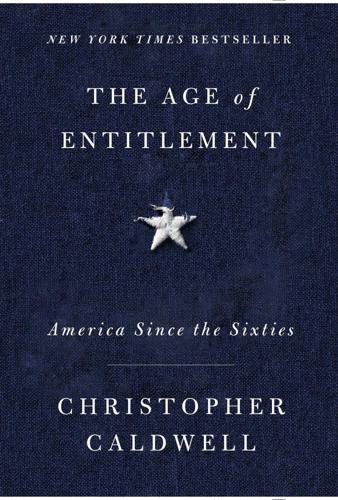
The Age of Entitlement: America Since the Sixties
by
Christopher Caldwell
Published 21 Jan 2020
After the election the Opinion Research Corporation asked a similar question (“In the area of civil rights, which government policy do you favor . . . vigorous enforcement of the new civil rights law or moderation in enforcement of the new civil rights law?”) and got almost identical results: 19% vigorous enforcement of the new civil rights law 68% moderation in enforcement of the new civil rights law 13% no choice For all their pious sentiments about desegregating the South, whites opposed every single activist step that might have brought desegregation about, and every single activist who was working to do so. In 1961, they thought, by a margin of 57 to 28 percent, that the black students staging sit-ins at North Carolina lunch counters and the “Freedom Riders” occupying segregated buses between Washington, D.C., and New Orleans “hurt” rather than “helped” the cause of civil rights.
…
Who would hire such a person to run a corporate department? Who would elect such a person to Congress? The same “white proles of Boston” Fallows described would be subjected to the most high-handed carrying out of federal law in the decade to follow: the court-ordered “desegregation” of Boston’s public schools, starting in 1974. The word desegregation belongs in quotation marks because most of the schools affected were within white ethnic (mostly Irish-American and Italian-American) neighborhoods. There had never been any black people there to segregate. The process involved two-way busing, transporting white students into poor and violent Boston neighborhoods and replacing them with bused-in black students.
…
What the debt paid for was social peace, which had come to be understood as synonymous with the various Great Society programs launched by Lyndon Johnson in the two years after the Kennedy assassination. We should understand the Great Society as the institutional form into which the civil rights impulse hardened, a transfer from whites to blacks of the resources necessary to make desegregation viable. Desegregation was, as we have said, the most massive undertaking of any kind in the history of the United States. Like any massive undertaking, it required endurance, patience, and prohibitive expense. Almost everyone who did not benefit from it was going to be made poorer by it. Now it was being presented to the public as the merest down payment on what Americans owed.

NurtureShock: New Thinking About Children
by
Po Bronson
and
Ashley Merryman
Published 2 Sep 2008
The Diverse Environment Theory is the core principle behind school desegregation today. Like most people, I assumed that after thirty years of school desegregation, it would have a long track record of scientific research proving that the Diverse Environment Theory works. Then Ashley and I began talking to the scholars who’ve compiled that very research. For instance, Dr. Gary Orfield runs the Civil Rights Project, a think tank that was long based at Harvard but has moved to UCLA. In the summer of 2007, Orfield and a dozen top scholars wrote an amicus brief to the United States Supreme Court supporting school desegregation in Louisville, Kentucky, and Seattle, Washington.
…
One of those was Louisville, which appears to be a place where desegregation has had the intended benefits. Surveys of high school juniors there show that over 80% of students (of all races) feel their school experience has helped them work with and get along with members of other races and ethnic groups. Over 85% feel their school’s diversity has prepared them to work in a diverse job setting. But other districts didn’t look so great. Lynn, Massachusetts, which is ten miles northeast of Boston, is generally regarded as another model of diversity and successful school desegregation. When its students were polled if they’d like to live in a diverse neighborhood when they grow up, about 70% of the nonwhite high school juniors said they wanted to.
…
When its students were polled if they’d like to live in a diverse neighborhood when they grow up, about 70% of the nonwhite high school juniors said they wanted to. But only 35% of whites wanted to. Dr. Walter Stephan, a professor emeritus at New Mexico State University, made it his life’s work to survey students’ racial attitudes after their first year of desegregation. He found that in 16% of the desegregated schools examined, the attitudes of whites toward African Americans became more favorable. In 36% of the schools, there was no difference. In 48% of the schools, white students’ attitudes toward blacks became worse. Stephan is no segregationist—he signed the amicus brief, and he is one of the most respected scholars in the field.
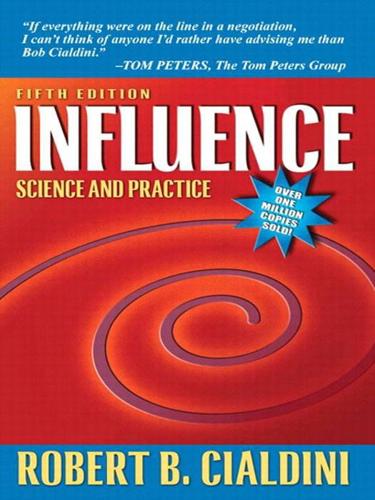
Influence: Science and Practice
by
Robert B. Cialdini
Published 1 Jan 1984
For instance, although white students’ achievement levels remain steady, it is 10 times more likely that the academic performance of minority students will significantly increase rather than significantly decline after desegregation (Stephan, 1978). We must be cautious in our approach to school desegregation so that we do not throw out the baby with the bath water. The idea, of course, is to jettison just the water, leaving the baby shining from the bath. Right now, though, our baby is soaking in the Schmutzwasser of increased racial hostility. Fortunately, real hope for draining away that hostility is emerging from the research of education specialists into the concept of “cooperative learning.” Because much of the heightened prejudice from classroom desegregation seems to stem from increased exposure to outside group members as rivals, these educators have experimented with forms of learning in which cooperation rather than competition with classmates is central.
…
They argue that, simply by providing individuals of different ethnic backgrounds with more exposure to one another as equals, those individuals will naturally come to like each other better. However, when scientists have examined school integration—the area offering the single best test of the contact approach—they have discovered quite the opposite pattern. School desegregation is more likely to increase prejudice between blacks and whites than to decrease it (Stephan, 1978). Let’s stay with the issue of school desegregation for a while. However well intentioned the proponents of interracial harmony through simple contact are, their approach is unlikely to bear fruit because the argument on which it is based is terribly misinformed. First of all, research has shown that the school setting is not a melting pot where children interact as readily with members of other ethnic groups as they do with their own.
…
Children who fail in this system become jealous and resentful of the successes, putting them down as teacher’s pets or even resorting to violence against them in the school yard. The successful students, for their part, often hold the unsuccessful children in contempt, calling them “dumb” or “stupid.” (Aronson, 1975, pp. 44, 47) Should we wonder, then, why strict school desegregation—whether by enforced busing, district rezoning, or school closures—so frequently produces increased rather than decreased prejudice? When our children find their pleasant social and friendship contacts within their ethnic boundaries and get repeated exposure to other groups only in the competitive cauldron of the classroom, we might expect as much.

This Is Only a Test: How Washington D.C. Prepared for Nuclear War
by
David F. Krugler
Published 2 Jan 2006
By 1965, 60 percent of the District’s residents were black.52 White flight was a national trend, but in Washington it overlapped with postwar desegregation. For a democratic nation committed to fighting communism, a segregated capital often proved embarrassing. Foreign visitors and diplomats of color held out their passports to get lunch counter service, a State Department official implored a hotel to honor the reservation of the foreign minister of an African nation.53 In response, both Presidents Truman and Eisenhower publicly committed themselves to desegregating Washington, but as historian Constance McLaughlin Green noted: “The battle for Washington was not to be won merely by a message from the White House.”
…
Citing the 5th Amendment’s due process clause, the Court also ruled the District’s segregation to be unconstitutional. For more on the desegregation of the District’s schools, see the articles in Washington History 16, no. 2 (Fall/Winter 2004/05), a special issue commemorating the fiftieth anniversary of the Brown and Bolling decisions. Samuel Spencer to Eisenhower, May 26 and June 7, 1954, box 282, folder “71-U Segregation in District of Columbia,” White House Central Files, Official File, DDEL; Walter Goodman, “The Capital Keeps Calm,” New Republic 131, no. 17 (October 25, 1954): 10–13; Carl F. Hansen, Miracle of Social Adjustment: Desegregation in The Washington, D.C. Schools (New York: Anti-Defamation League of B’Nai Brith, 1957), 45–50; Eugene Davidson, “An Analysis of Desegregation in the District of Columbia,” box A226, folder “Desegregation: Schools Branch Action—District of Columbia 1954–55,” NAACP Records, Group II, LOC, Manuscript Division.
…
Schools (New York: Anti-Defamation League of B’Nai Brith, 1957), 45–50; Eugene Davidson, “An Analysis of Desegregation in the District of Columbia,” box A226, folder “Desegregation: Schools Branch Action—District of Columbia 1954–55,” NAACP Records, Group II, LOC, Manuscript Division. Hansen, Miracle, 50–9; U.S. News, “Race Problem,” 38. U.S. News, “Race Problem,” 35. Hansen, Miracle, 59–60. David Lawrence, “Washington’s Worry,” U.S. News & World Report 46, no. 14 (April 6, 1959): 120. Green, Secret City, 323. GSA, “Basic Principles and Assumptions Governing Preparation of the Long-Range Plan for the Security of the Nation’s Capital,” June 1950, box 48, folder “545-15-85 ‘Security for the Nation’s Capital,’ ” RG 328, Planning Files, 19.
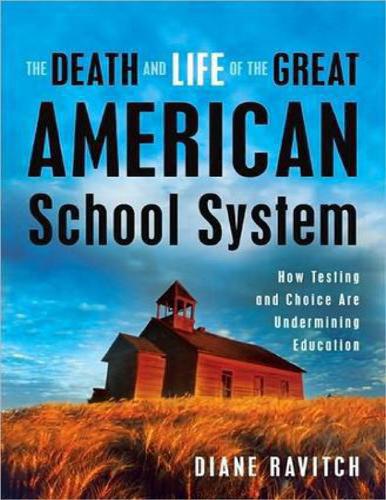
The death and life of the great American school system: how testing and choice are undermining education
by
Diane Ravitch
Published 2 Mar 2010
In fact, the federal government used the funding from the 1965 act to force Southern districts to dismantle segregated public schools, threatening to withhold federal dollars if they did not desegregate. This approach was the very opposite of Friedman’s goal of maximizing individual freedom through school choice. As the federal government kept up the pressure for desegregation and as resistance to mandatory busing increased, some school districts attempted to encourage voluntary desegregation through choice. They opened magnet schools—schools with specialized offerings in the arts or sciences or other fields—to encourage white students to attend urban schools that would otherwise be heavily nonwhite.
…
The Houston schools were segregated, and the local school board had no intention of complying with the decision. Anyone who spoke up on behalf of racial integration was likely to be called a communist or a pinko. Over the next decade, political leaders in some Southern states declared that they would never desegregate their schools, that they would hold out forever against the Court’s decision. Some school districts in the South responded to the Court’s pressure to desegregate by adopting “freedom of choice” policies. Under “freedom of choice,” students could enroll in any public school they wanted. Big surprise: White students remained enrolled in all-white schools, and black students remained in all-black schools.
…
When the federal government and the federal courts began compelling segregated districts to reassign black and white pupils to integrated schools, public officials in some Southern states embraced a new form of choice. They encouraged the creation of private schools to accommodate white students who did not want to attend an integrated school. These “schools of choice” were also known as “segregation academies.” In Virginia, which had a policy of “massive resistance” to desegregation, the state gave tuition grants to students to enroll in a private school of their choice. During the 1950s and 1960s, the term “school choice” was stigmatized as a dodge invented to permit white students to escape to all-white public schools or to all-white segregation academies. For someone like me, raised in the South and opposed to racism and segregation, the word “choice” and the term “freedom of choice” became tainted by their use as a conscious strategy to maintain state-sponsored segregation.

City on the Verge
by
Mark Pendergrast
Published 5 May 2017
“The reality,” observed historian Kevin Kruse, “was that the city had enacted a minimalist program of tokenism that amounted to the smallest commitment to desegregation imaginable.” The new black students were ostracized, harassed, pushed, tripped, spat on, and cursed. White teachers tacitly encouraged such behavior by ignoring it. One girl found a note in her locker: “Go back to Africa, Jungle Bunny.” As the rate of school, park, swimming pool, restaurant, and department store desegregation increased in the early 1960s, white flight snowballed. In 1962, for instance, after a local elementary school switched from white to black, Grant Park homes sold to blacks within weeks.
…
Workers lived in neighborhoods near factories (like Atlanta’s Cabbagetown, near the Fulton Bag and Cotton Mill) serviced by railroads. Wealthier people lived further out along the streetcar lines in the first suburbs (like Inman Park). During the 1920s, the automobile began to change that way of life and culture. In the postwar era, desegregation and white flight to the suburbs hollowed out downtowns, a trend ultimately tied to important public health issues such as air pollution, global warming, water availability, affordable housing, and increased obesity. Still a young city, Atlanta has yet to clearly define itself or its future. After General William Tecumseh Sherman reduced it to ashes in 1864 during the Civil War, it re-created itself as the “Phoenix City,” and it has been reinventing itself ever since, boasting about the “Atlanta Spirit,” labeling itself “the World’s Next Great City,” all the while unsure of its real character.
…
Meanwhile, Mayor Hartsfield introduced his “Plan of Improvement,” which led to the January 1, 1952, expansion of Atlanta’s city limits, primarily to incorporate Buckhead, the wealthy community to the north, thereby ensuring a white majority for the next two decades, as Atlanta’s black population dropped instantaneously from 41 to 33 percent. (The annexation included my parents’ house, so as a three-year-old, I became a citizen of Atlanta.) In 1955, the year after the Brown v. Board of Education decision mandated eventual school desegregation, Hartsfield declared Atlanta “the city too busy to hate,” and it did indeed avoid most of the racial violence that occurred in places like Little Rock and New Orleans. Still, it was unclear whether Georgia public schools would survive. For several years, it appeared that Atlanta public schools might be shuttered.

The Quiet Coup: Neoliberalism and the Looting of America
by
Mehrsa Baradaran
Published 7 May 2024
Board of Education—or, rather, the backlash to Brown. After oral arguments in the case, Justice Felix Frankfurter worried that his colleagues on the Court would decide to desegregate schools. As Alexander Bickel, one of the justice’s clerks that term and a future Yale Law professor, recounted, Frankfurter asked the Department of Justice to brief the history of the Fourteenth Amendment, specifically to answer the question: “Did the framers of the Fourteenth Amendment intend or contemplate school desegregation to fall within the scope of the equal protection clause?” According to the historian Calvin TerBeek, the plaintiffs addressed this question during the oral arguments with a deep historical excavation of the Reconstruction amendments as well as of the “founders’ intent.”
…
The “urban slums of our country” must be brought, continued Greenspan, toward “a civilized state.” The uncivilized “riots” to which Greenspan referred were of a particular sort: those with Black Americans as the central actors. He had nothing to say about the white mobs opposing busing, the hollering masses blocking the desegregating schoolhouse door, or the vigilantes who threw bombs into churches, lobbed glass bottles at protesters, or burned crosses to terrorize. The memo was similarly unconcerned with antiwar protesters, draft card burners, and activist students. It made clear that Greenspan’s opposition to the left’s agenda for economic justice was primarily based on its high cost.
…
In other words, Becker’s and Friedman’s—and Greenspan’s—theories were nothing more than a fantasy. It was good politics, however. The new neoliberal theories advanced by Greenspan and the Chicago anti-Keynesian economists gave right-wing southerners cover by coding their racist preferences, such as opposition to civil rights laws and school desegregation, as simple fidelity to the free market. Compared to George Wallace’s rabid racism, the economists’ views allowed for the genteel maintenance of the status quo. Still, sometimes the mask slipped to reveal that perhaps there was more than just love of markets driving neoliberal theories and the solutions that followed from them.
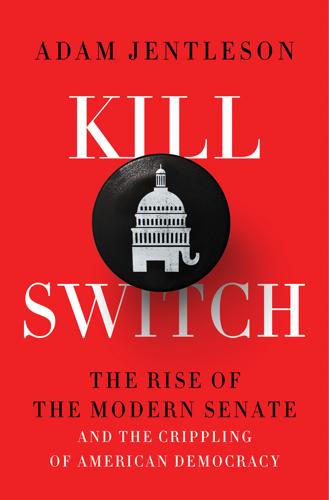
Kill Switch: The Rise of the Modern Senate and the Crippling of American Democracy
by
Adam Jentleson
Published 12 Jan 2021
Eisenhower’s Supreme Court nominees included Chief Justice Earl Warren, who wrote the Brown decision and presided over the most favorable stretch of civil rights rulings in American history. His administration had worked to desegregate the District of Columbia, where the federal government had exclusive jurisdiction. While Truman had issued an executive order desegregating the armed forces, he did not enforce it aggressively; Eisenhower did. He also desegregated the Veterans Administration and created a presidential commission dedicated to ending discrimination by federal contractors, a successor to the defeated FEPC.33 Some of the progress was the work of Eisenhower’s attorney general, Herbert Brownell, an aggressive advocate of civil rights, who occasionally pushed the administration further than it wanted to go.34 And the administration’s record did not amount to a sea change.
…
Circuit Robert Bork and, 185 Citizens United case, 218 Merrick Garland and, 183, 228 Brett Kavanaugh and, 203 Utah, 138 Value Voters Summit, 231 Vandenberg, Arthur, 79 Vavreck, Lynn, 132 Vermont, 127 Veterans Administration, desegregation of, 95 veto power, 58, 207 “Viewpoint” (TV news show segment), 140–41 Viguerie, Richard, 143 Virginia, 95, 126–28 Virginia Resolution, 38–39 Vitter, David, 134–37 Vitter amendment, 135 Voinovich, George, 206, 213 Voorhees, Daniel, 62 voter intimidation, 61 voter registration, 150 voter suppression, 129, 253 voter turnout, 129 Voting Rights Act (1965), 13, 253 Wallace, George, 240 War of 1812, 32 Warren, Earl, 95 “war room,” Reid’s, 172–73, 177 Washington, DC, desegregation of, 95 Washington, George, 8–9 Washington Federalist, 47 Washington Post on Nelson Aldrich’s previous question rule bill, 62 on McConnell’s refusal of nuclear option under Trump, 233 on nuclear option vote, 112 on Social Security privatization, 174 Watergate, 147, 184 Watford, Paul, 182 Watt, Mel, 117 wealth of Republican senators, 130 and Senate corruption in late 1800s, 59–60 and voters who put Republican senators in office, 129–30 Weaver, Paul, 241 Webster, Daniel, 35–37, 48, 57, 159 “Webster’s Second Reply to Hayne,” 36–37 Weinberger, Caspar, 149 Wellstone, Paul, 196 westward expansion, slavery and, 54–56 Wheeling and Dealing (Baker), 163–64 Whig Party, 50 whip, 89, 200–201 White, William, 101 white identity, 132 White Identity Politics (Jardina), 131 white supremacy/supremacists and Calhoun’s support for planter class, 54 and Electoral College elimination battle, 242 and evolution of filibuster, 209 need for obstructionist rules, 67–68 and Rule 22, 66–67, 84 Richard Russell and, 76–77, 89 Why We’re Polarized (Klein), 121 Wild, Claude, 164 Wilkins, Roy, 106 Williams, John, 107 Wilson, James, 22 Wilson, Woodrow, 64–65, 160 women’s rights, 149–50 World Trade Organization (WTO), 196 WRAL-TV (Raleigh, North Carolina), 140–41 WWACs (wealthy, white, anti-choice conservatives), 12, 128–33 filibuster as means of imposing will of, 245 McConnell and, 239 and Senate power in Trump era, 236, 237 and Tea Party membership, 137 Wyoming, 127, 129 Additional Praise for KILL SWITCH “With a grasp of history combined with his insider experience and knowledge, Adam Jentleson has written a clear, concise, and compelling book on the history and evolution of the filibuster, and the rise of its abuse and misuse by Mitch McConnell and Senate Republicans.
…
New York: Ballantine Books, 1980. 232. 29.Douglas, In the Fullness of Time. 282. 30.Caro, Master of the Senate. 798. 31.Douglas, In the Fullness of Time. 283. 32.See, e.g., Green, Kristen. Something Must Be Done about Prince Edward County. New York: Harper Perennial, 2016. 33.Mayer, M. “The Eisenhower Administration and the Desegregation of Washington, D.C.” Journal of Policy History 3, no. 1 (1991): 24–41; Nichols, David A. A Matter of Justice: Eisenhower and the Beginning of the Civil Rights Revolution. New York: Simon & Schuster, 2008; Serwer, Adam. “Why Don’t We Remember Ike as a Civil Rights Hero?” MSNBC. May 17, 2014. 34.A compelling account of Brownell’s role pushing Eisenhower to the left on civil rights is Anderson, J.
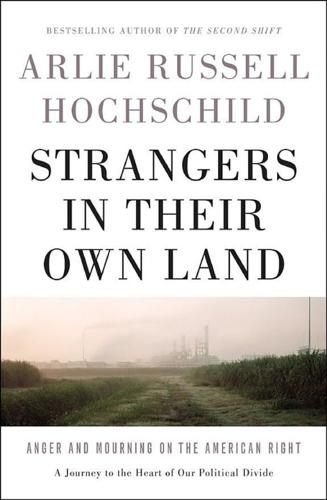
Strangers in Their Own Land: Anger and Mourning on the American Right
by
Arlie Russell Hochschild
Published 5 Sep 2016
Kaitlin Mulhere, “In the Face of Colossal Cuts,” Inside Higher Ed, April 27, 2015, https://www.insidehighered.com/news/2015/04/27/anxiety-over-massive-proposed-cuts-louisianas-colleges-felt-across-state. 95“explore options and ramifications of ending the Desegregation Order” See CSRS, Southwest Louisiana Regional Impact Study (accessed August 4, 2015), 121, http://www.gogroupswla.com/Content/Uploads/gogroupswla.com/files/SWLA%20Regional%20Impact%20Study_Final.pdf. The U.S. Department of Justice has listed twenty-five un-desegregated schools on its Civil Rights Division’s “Open Desegregation Cast List.” And it has held up a school voucher program in an attempt to force desegregation—locking children into failing schools, critics charge. Since Brown v. Board of Education in 1954, desegregation of public schools has been legally mandatory.
…
Only after public outcry did the governor restore some funds to public education—and cut public health and environmental protection instead. As for poor public schools, the study suggested “re-drawing attendance zones to accommodate growth in enrollment,” and added, matter-of-factly, that the state should “explore options and ramifications of ending the Desegregation Order.” Now a privately funded report was telling the town Sasol was moving into that its public sector was down on its heels. Your first-rate integrated schools? Where are your un-cracked sidewalks? Your clean lakes? To attract outside talent for the private sector, it turned out, you needed a thriving public sector, for which the two-term, Tea Party–supported governor had drastically cut funds.
…
See also Sasol Confederate officials, 270nn20–21 Conoco, 45–46 Corexit, 275n65 corporate gifts, 13 corporate goodwill, 78 corporate income taxes, 75 corruption, 47–48 cotton industry, 210–11 covenant marriage, 216–17 crawfish farmers, 271n32 creation care, 124 Creoles, 269n16 Cruz, Ted, 224, 229, 242 cultural marginalization, 221–22 Cushing, Robert G., 6, 263n6 deep story, 268n16 American Dream and, 136–37, 140–41 betrayal as, 139–40 catcalls, 144–45 class, free-market, and, 148–51 description of, 135, 297n135 emotions and, 297n135 gender and, 147–48 government services and, 143 intermission, 140–43 line cutters, 137–39, 145–46 of progressive left, 235–36 race and, 146–47 social life and, 135 of Tabor, J., 170–75 for Tea Party, 135–51, 227 Trump’s rise and, 221–22, 227 waiting in line, 136–37 Deepwater Horizon, 46, 276n65 description of, 64–65 marine mortality after, 277n65 Obama, B., on, 65 Deitrick, Bob, 234 Democrats, 60–61. See also specific topics blue states, 78–80, 232–33 catcalls by, 144–45, 298n144 derogatory remarks, 227–28 desegregation, 213, 287n95 dioxin rates, 110, 291n109, 292n110 Dodd-Frank restrictions, 274n59 Douglass, Michael T., 77 Dow and Union Carbide, 102 drilling permits, 108–10, 291n110 drinking water, 275n63 Duke, David, 226 Durkheim, Emile, 225–26 Earned Income Tax Credit, 256 earthquakes, 100, 105, 107, 288n100 ECHO database, 274n59 economic agenda, 14 economic growth, 234 common impressions on, 260–62 environment and, 78, 283n78 from fracking, 90 high road strategy on, 77, 282n77 low road strategy on, 77, 282n77 oil and, 76–77, 260–61 regulation relating to, 78, 283n78 Republicans relating to, 261 economic progress, 50 economic recovery, 8 economic self-interest, 228 EDC.
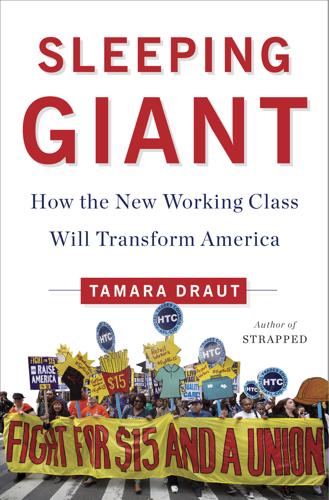
Sleeping Giant: How the New Working Class Will Transform America
by
Tamara Draut
Published 4 Apr 2016
Bureau of Labor Statistics at http://www.bls.gov/emp/ep_table_104.htm. What happened to the promise of Section VII, the provision of the Civil Rights Act that would provide equal opportunity in the workplace? In a deeply researched and quantitative assessment of the drive to desegregate America’s workplaces, Kevin Stainback and Donald Tomaskovic-Devey tell the story in Documenting Desegregation of substantial progress despite stubborn and durable privilege. In the years immediately following the Civil Rights Act, from 1966 to 1972, major gains were made among black men, black women, and white women—but, importantly, not at the expense of white men, who actually got a major bump up the advantage ladder.14 As black men and black women made big gains into working-class jobs, white men got propelled upward into even more managerial positions.15 Working-class jobs became more integrated, with more black women and white women working together than before, and more black men and white men working together on an equal-status basis.
…
Kevin Stainback and Donald Tomaskovic-Devey, Documenting Desegregation: Racial and Gender Segregation in Private-Sector Employment Since the Civil Rights Act (New York: Russell Sage Foundation, 2012), p. 115. 11. Cobble, The Other Women’s Movement, p. 219. 12. MacLean, Freedom Is Not Enough, p. 105. 13. John Nichols, “A. Philip Randolph Was Right: ‘We Will Need to Continue Demonstrations,’ ” The Nation, April 15, 2014, at http://www.thenation.com/article/philip-randolph-was-right-we-will-need-continue-demonstrations/. 14. Stainback and Tomaskovic-Devey, Documenting Desegregation, p. 98. 15. Ibid., p. 115. 16.
…
But there remained deep racial divisions among the rank-and-file, an issue the civil rights community argued the national federation was negligent in addressing. Racial discrimination at union locals was rampant, and not just in the South. White union members were often vehemently opposed to opening up apprenticeship programs to black workers and to integration efforts in society more broadly, particularly the use of busing to desegregate the nation’s schools. By 1960 African Americans were more likely than any other racial or ethnic group to be union members (this is still true today), giving black union leaders considerable leverage within the larger federation. That leverage coalesced with the formation of the Negro American Labor Council (NALC), led by A.
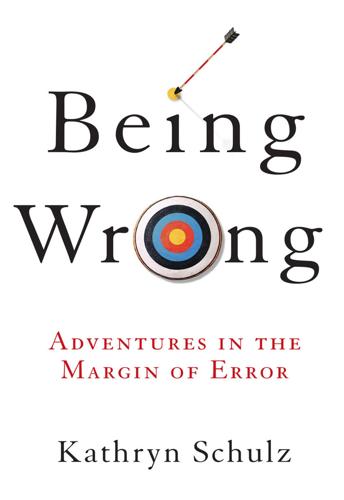
Being Wrong: Adventures in the Margin of Error
by
Kathryn Schulz
Published 7 Jun 2010
Bill Riddick, the man charged with running the workshops, saw immediately that Ellis and Atwater were the two people in the room with the power to either salvage or sabotage his efforts, and he decided that his most pressing task was to get the two of them to work together. Not being a man to do things by half measures, Riddick asked them to co-chair the desegregation workshops. Across the board, the initial reaction was horror. The African-American community and its allies were outraged: Who in his right mind would invite a KKK leader to chair a committee on desegregation? Ellis, meanwhile, was almost equally appalled. As he later told Davidson, his first thought was, “ain’t no way I can work with that gal!” Still, his resistance was tempered by two factors.
…
Thanks to the Klan, and for the first time he could remember, Ellis was enjoying some measure of confidence, respect, and power. Then something happened: the course of C. P. Ellis’s life intersected, in a small but significant way, with the course of history. In 1970, the federal government funneled $75 million to North Carolina to desegregate its schools. That money should have been unnecessary—sixteen years earlier, the Supreme Court had declared, in Brown v. Board of Education, that school segregation was unconstitutional—but the state’s schools were still a legal, racial, and educational disaster. The federal funds were divvied up, and $80,000 was earmarked for a series of workshops to persuade Durham’s citizens to cooperate in integration.
…
The second and more surprising factor was that Ellis had privately accepted that segregation was a lost cause. He knew about the Supreme Court decision, he had seen what had happened in other states, and he had concluded that the Klan was powerless to stop this particular train in its tracks. There wasn’t much he could do, he decided, except (in Davidson’s words), “help make desegregation less painful for white children”—including his own. To do that, he would need to accept Bill Riddick’s invitation. When he learned that Ann Atwater had said yes, he followed suit. Like the first planning meeting, the first meeting of the committee co-chairs was disastrous. It took place in a café in downtown Durham, and Ellis spent much of it pacing around the restaurant, unwilling to sit down in a public establishment with black people.
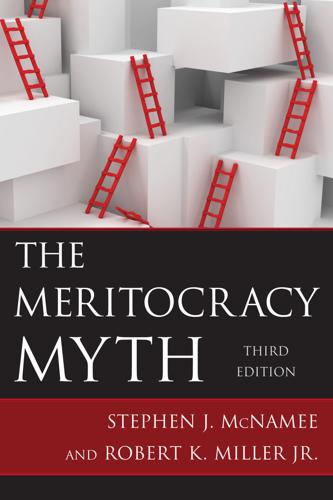
The Meritocracy Myth
by
Stephen J. McNamee
Published 17 Jul 2013
Most recently, the issues of institutional discrimination regarding sexual orientation have focused on military service and marriage. The military has often been seen as a vanguard institution in overcoming discrimination. The military was largely racially segregated until 1948 when President Harry Truman signed an executive order to desegregate the military, long before the height of the civil rights movement and desegregation of other major social institutions. The U.S. military, however, did not permit homosexuals to openly serve. President Bill Clinton’s attempt in 1993 to end this discriminatory policy met with severe opposition in Congress and from some segments of the general population.
…
New York: Palgrave. Schmitt, John, and Janelle Jones. 2012. “Where Have All the Good Jobs Gone?” Center for Economic and Policy Research. http://www.cepr.net/documents/publications/good-jobs-2012-07.pdf (accessed January 20, 2013). Stainback, Kevin, and Donald Tomaskovic-Devey. 2012. Documenting Desegregation: Racial and Gender Segregation in Private-Sector Employment since the Civil Rights Act. New York: Sage. Thurow, Lester C. 1999. Building Wealth: The New Rules for Individuals, Companies and Nations in a Knowledge-Based Economy. New York: HarperCollins. Tolbert, Charles, Partick Horan, and E.
…
Since World War II, the position of the federal and state governments has gradually changed from requiring, supporting, or tacitly accepting discriminatory practices to formally and actively opposing discrimination. These changes began in the late 1930s and culminated with the passage of the Civil Rights Acts of 1957, 1960, 1964, 1965, and 1968. For example, court rulings, legislation, and executive orders were designed to desegregate the military, end educational segregation and discrimination, protect voting rights, and require federal contractors to comply with nondiscrimination policies. The banning of overt discrimination and segregation in privately owned businesses came later in the form of legislation against employment and housing discrimination.

Survival of the Friendliest: Understanding Our Origins and Rediscovering Our Common Humanity
by
Brian Hare
and
Vanessa Woods
Published 13 Jul 2020
Army recruited 2,500 black soldiers to fight in the Battle of the Bulge, even the more intolerant white soldiers from the South who fought alongside the new recruits came out of the conflict with more positive attitudes toward black people than white soldiers who did not.52 This effect was also observed when the U.S. Marines desegregated in 1948. After World War II, a U.S. housing shortage in the mid-1940s made mixed neighborhoods a necessity. White women who had friendly conversations with their black neighbors liked their black neighbors more and were more supportive of interracial housing. Not only that, but half the white tenants who lived in desegregated housing were more likely to support unrestricted access to future unsegregated housing, while only 5 percent of white people who lived in segregated housing supported this view.59, 60 * * * — This kind of beneficial contact can be as simple as a casual conversation, a work partnership, or a mixed classroom.
…
Carlos*1 was in the fifth grade at a public school in Austin, Texas. English was his second language. He answered questions with a stammer, and when the other children mocked him, he stammered even more. He became withdrawn, rarely speaking at all. Many social scientists had predicted that school desegregation would be an unqualified success. It was assumed that once all children were on an equal footing in the classroom, white children would leave school less racist, not just toward people of color in their schools, but toward those they encountered throughout their lives. Minority children would receive a first-class education, which would set them up for successful careers.
…
They assumed that people felt safer in their own communities where others spoke the same language and ate the same food in the same way. Protecting cultural identity, especially to minority groups who felt disadvantaged, seemed like a priority. Many black civil rights activists argued against desegregation. “I can see no tragedy in being too dark to be invited to a white school social affair,” wrote Zora Neale Hurston in 1955.51 They foresaw the hard road ahead for their children, as well as the firing of thousands of brilliant, caring black teachers and administrators (while white parents might tolerate having their children educated alongside black children, they certainly would not tolerate having their children educated by black teachers.)
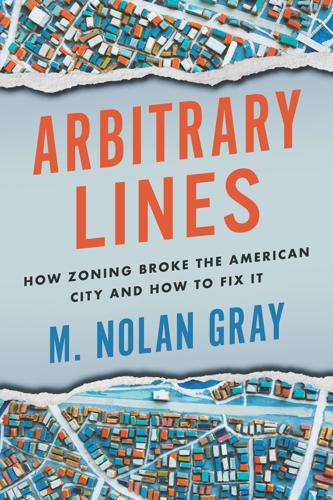
Arbitrary Lines: How Zoning Broke the American City and How to Fix It
by
M. Nolan Gray
Published 20 Jun 2022
The Case for Abolishing Zoning Why Reform Isn’t Enough Steelmanning Zoning Meanwhile, Back in the Real World Chapter 9. The Great Unzoned City The Compromise That Saved Houston How Cities Organize Themselves Land-Use Regulation after Zoning How to Abolish Zoning in Two Easy Steps Chapter 10. Planning after Zoning It’s the Externalities, Stupid! Desegregating the Post-Zoning City Reviving the Plan Conclusion Appendix: What Zoning Isn’t Zoning Isn’t the Market Zoning Isn’t the Only Kind of Land-Use Regulation Zoning Isn’t Environmental Regulation Zoning Isn’t City Planning Acknowledgments Notes Recommended Reading Index About the Author Introduction As Americans, we take comfort in the idea that we have the right to plan our own lives.
…
Rather than ignoring such services, planners—newly free of dutifully administering the dictates of zoning—should play an active role, developing frameworks for equitably addressing recurring land-use conflicts, discovering and promoting emergent solutions, and advocating on behalf of communities traditionally victimized by such conflicts. If a revitalized land-use planning can get the balance of regulation and mediation right, the post-zoning city could end up being a far more pleasant place. Desegregating the Post-Zoning City According to the Othering & Belonging Institute at the University of California, Berkeley, over 80 percent of all large metropolitan areas in the US were more racially segregated in 2019 than they were in 1990.8 Today, racial segregation is most acute not in the South but in the Midwest and mid-Atlantic regions.
…
In the same way that planners proactively segregated our cities, so they have an obligation to proactively advance integration.10 In affluent neighborhoods and suburbs, this will mean integrating low- and moderate-income housing into high-opportunity areas—that is to say, those areas with easy access to good jobs and quality public services. In a gentrifying context, this will mean keeping low-income families in place as neighborhoods gradually desegregate. Let’s consider each in turn. OPENING UP THE HIGH-OPPORTUNITY AREAS The first priority for planning in a post-zoning world should be opening up those affluent neighborhoods and suburbs that have historically used zoning to exclude the less affluent. Cities and states have at least two levers at their fingertips for determining where income-restricted housing goes.
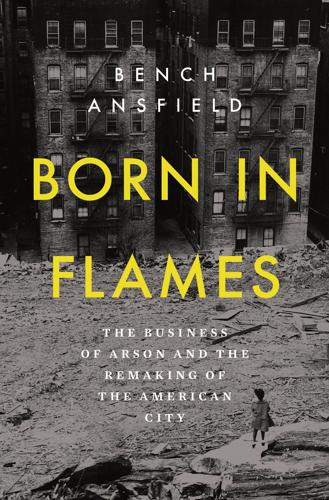
Born in Flames
by
Bench Ansfield
Published 15 Aug 2025
With its ethnic white resident base steeped in leftist unionism, the area was less inclined toward segregationist vitriol. Through the 1950s, the South Bronx could claim to be a beacon of interracial solidarity. It was here that activists with the Forest Neighborhood Committee successfully fought for the desegregation of Forest Houses, touted as the city’s first integrated public housing development.10 But these experiments in desegregation were happening at the same time as the flight of Jewish, Irish, and Italian Bronxites, which took off in the 1940s and accelerated in the 1950s. At its peak in the 1970s, the exodus saw the borough bleed out three hundred thousand residents, one-fifth of its population.
…
As one journalist put it, “When it became the ‘South Bronx,’ the South Bronx was doomed.”12 As the newly christened South Bronx expanded, the name became a shorthand for describing the racial anxieties that accompanied the fires. The label seemed to encompass well-worn tropes of the decades of urban renewal and blockbusting (the practice of racial fearmongering by real estate agents cashing in on white flight), when the specter of “racial succession”—or desegregation—was seen as an existential threat to the integrity of white enclaves. Cancer metaphors proliferated. As the New York Post put it: “Like a cancer, the borders of the ‘South Bronx’ slowly keep spreading with the line of fires that are eating northward through the borough.” The Los Angeles Times published a front-page feature headlined “Bronx—Landscape of Urban Cancer.”
…
The progenitor of the NWBCCC, the MHNIA, itself began with an all-white board, though it soon integrated tenants of color into the leadership. Whether the NWBCCC exhibited racially exclusionary impulses in its initial years is difficult to gauge, largely because the struggle against disinvestment and the resistance to desegregation often shared a common rhetoric of contagion. When NWBCCC members warned of the possibility that “our neighborhood will become the next ‘South Bronx,’” what were they signifying: the burning and disinvestment of Bronx apartment houses or the race and class of the tenants who lived in them? The answer, though muddled during the coalition’s first years, becomes easier to decipher by the late 1970s and early 1980s, when the NWBCCC grew into the powerhouse of racial and economic justice organizing it remains as of this writing.18 In Morris Heights, Brant’s line-in-the-sand ambitions were washed away by the arson wave’s relentless advance.
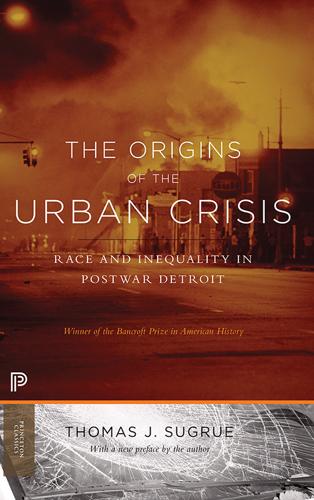
The Origins of the Urban Crisis
by
Sugrue, Thomas J.
And the small amount of public housing built in Detroit was concentrated in largely black inner-city neighborhoods. The gap between blacks and whites in public housing grew even wider in the 1950s, as thousands of blacks were relocated for urban renewal and highway construction projects, while the admissions policy of the Housing Commission remained unchanged. Detroit was slow to desegregate its public housing projects, and offer equal housing facilities to blacks and whites. Officially sanctioned segregation in public housing legitimated private-sector housing discrimination. Cyril Lawrence, a critic of the Housing Commission’s approval of segregation, noted that the “public has interpreted the policy as applicable to all housing, including private housing.”105 George Schermer of the Mayor’s Interracial Committee was even more critical of the policy.
…
Official approval of segregation, he argued, “has a detrimental effect,” fostering “distrust and disbelief in government on the part of minority and liberal” groups, and giving “official sanction to the prejudices of others.”106 During the Cobo administration, DHC policy remained unrelentingly segregationist, as officials defended “the right of the landlord to operate his property as he wishes or take the tenants he wants to take in.”107 In response to pressure from civil rights orgnaizations, city officials began the token integration of public housing projects in 1953 and 1954, but not until 1956, after the Detroit Branch of the NAACP won a lawsuit that challenged the city’s racial policy, did the city open all public housing to blacks, and even then desegregation was haltingly slow. As late as the early 1960s, four public housing projects were virtually all-white, with token black residents, and two projects were all-black.108 The dilemma of the housing crisis for Detroit’s poor was still unresolved in the late 1950s. The city directed blacks needing homes to its already crowded center-city projects, and defended the concentration of blacks as the necessary consequence of slum removal.
…
In effect, argued Turner, construction of high-rise public housing would “provide approval of the congested pattern they have been forced to live in.”109 Turner suggested that the only solution to the city’s housing dilemma would be the construction of new public housing on open land outside of the black ghetto: “I think the outlying areas should be given to Negroes if you are to do anything.” By the early 1950s, Turner’s views were quixotic. The propublic housing Citizens’ Housing and Planning Council was defunct, the NAACP was putting its energies into the desegregation of existing projects, and the UAW and other unions had abandoned their efforts in favor of integrated public housing. What had seemed feasible in 1940 was now politically impossible. After a decade of struggle over government-provided housing, its opponents had won a clear victory. One observer, looking back at the efforts of Detroit’s public housing advocates from the vantage point of the 1960s, commented bitterly that “elephantine labors have brought forth a mouse.”
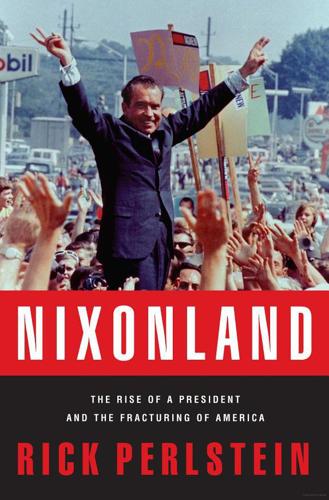
Nixonland: The Rise of a President and the Fracturing of America
by
Rick Perlstein
Published 1 Jan 2008
Pat Brown, forced to campaign in the primary to put down a sudden conservative challenge from Sam Yorty for the Democratic nomination, came to Norwalk later in the month. The same people heckled him so loudly reporters couldn’t phone in their stories. Martin Luther King was in Chicago. In 1956, Eleanor Roosevelt had said that if the Windy City desegregated, it would set a lovely example for the South. Mayor Daley replied that there was no segregation in Chicago. He was still proclaiming it—even though, in 1965, after Dick Gregory led silent desegregation marches past Daley’s Bridgeport house, neighborhood school-girls adopted a new jump-rope chant: “I’d like to be an Alabama trooper / That is what I’d truly like to be / ’Cause if I were an Alabama trooper / I could kill the niggers legally.”
…
A week later the Justice Department officially affirmed that the administration was “unequivocally committed to the goal of finally ending racial discrimination in schools, steadily and speedily, in accordance with the law”—but that “a policy requiring all school districts, regardless of the difficulties they face, to complete desegregation by the same terminal date is too rigid to be either workable or equitable.” The next day was the NAACP’s July 4 national convention. There, HUD secretary George Romney said every American was “entitled to full and equal citizenship.” Roy Wilkins responded that the administration’s double-dealing was “almost enough to make you vomit.” It was hard to play both sides sedulously, the higher the stakes got. “Complete desegregation by the same terminal date”—the start of the 1969–70 school year—was exactly what the federal Fifth Circuit Court of Appeals had demanded of Mississippi on August 11, 1969.
…
In Cleveland the grand jury turned in its verdict that the riots were the responsibility of Communists. In Brooklyn two white men were shot after a brawl over racial slurs; in Grenada, Mississippi, “while,” the New York Times reported, “state and local law-enforcement officials stood by, laughing and chuckling,” a white mob ran off six hundred desegregation marchers. (“You’re going to see a show tonight,” the sheriff had promised newsmen.) In Philadelphia, Pennsylvania, that week, Secretary of State Dean Rusk’s twenty-five-year-old son, a leader of the National Urban League’s militant faction, stepped up to the podium at the group’s convention and said the civil rights movement suffered, if anything, from “too much reasonableness.”
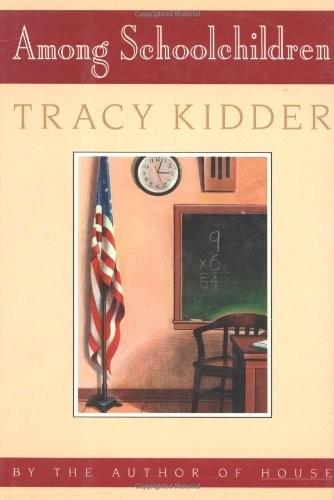
Among Schoolchildren
by
Tracy Kidder
Published 14 Jun 1989
(For the first half of the 1980s, Holyoke ran its schools entirely on state money; on occasion, a former mayor used some of the funds for fixing potholes, too.) Against long odds, school districts all over the country have been desegregated. And yet while public schools have always helped a relative few rise out of poverty, they have not proven to be the "great equalizers" that Horace Mann dreamed of. Many schools, of course, remain desegregated only in theory. Many high schools are segregated internally, thanks to "tracking," a system Conant helped promote, which in theory sorts students according to natural ability, and in practice most often sorts them along lines of race and economic class.
…
Somehow he always seemed to find the money for new books or materials or field trips. She thought Kelly's classes remained small partly because of Al's clever budgeting. She gathered that Al sometimes fell out of favor on Suffolk Street, school administration headquarters, but she thought it significant that during the first crucial year of desegregation, Suffolk Street had sent Al to Kelly, to soothe the white parents who had demanded proof that their children would be safe down in the Flats. Al, with a great deal of help from the chief secretary, Lil, kept the school running smoothly. The office of the Director of Bilingual Education for the city was situated in Al's school.
…
As always, the numbers would fluctuate throughout the year, but in a sense would remain the same; about a fifth of the students would leave, to be replaced by a roughly equal number of newcomers. About 60 percent of the children came from families receiving some form of public assistance. By design—the system was desegregated in the early 1980s—Kelly School's student body conformed statistically to the citywide population, and so did the student body in Chris's class. Holyoke's borders enclose some working farms, some forest, and a gigantic mall beside the interstate, one site around which the new, suburban Holyoke is growing.

Mapmatics: How We Navigate the World Through Numbers
by
Paulina Rowinska
Published 5 Jun 2024
Some cities, realizing how grave the situation had become for students of colour, introduced ‘busing’, which involved sending school buses to drive children to schools outside their attendance zones. In many US cities, this desegregation attempt wasn’t particularly successful, as white families would opt to move away, send their children to private, fee-paying schools, or protest and threaten the policymakers until they gave up on the integration efforts. And, as we’ve seen, they could also create separate school districts. This desegregation policy has also been tried outside the US. In 2006, the Danish city Aarhus started busing children from schools where many students spoke Danish as a second language to schools where most students were native Danish speakers.
…
In Jefferson County, so many weirdly shaped school districts have already seceded that the current map would make the most gerrymandered electoral district map look innocent. But in this instance, the county school system had had enough and they sued Gardendale. The court pointed out that the racially motivated split would violate the desegregation order, thus forbidding the secession. However, the court’s decision was more an exception than the rule, and due to gerrymandered school districts, non-white students continue to be discriminated against all over the US. Segregated schools in segregated communities How does a student end up in one public school and not in another?
…
As countries have been increasingly taking the power of school choice from the authorities and giving it to the parents, school segregation levels seem to have worsened. In places where parents don’t directly choose the school, they often still contribute to segregation by influencing attendance zone boundaries. In the US, after Brown vs Board of Education, while some families fled to the suburbs to avoid sending children to newly desegregated schools, other white families remained in the cities and lobbied for attendance zones that would separate their communities from neighbouring Black ones. Sometimes this was as simple as drawing an east–west border as opposed to a north–south one, as happened in Detroit, where white families tend to live north, and families of colour south of the original boundary.
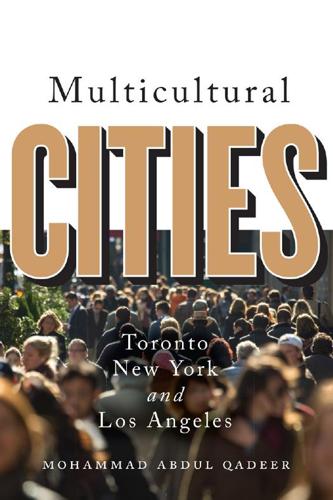
Multicultural Cities: Toronto, New York, and Los Angeles
by
Mohammed Abdul Qadeer
Published 10 Mar 2016
Judd and Simpson, 139. 6 Bill Bishop, The Big Sort: Why the Clustering of Like-Minded America Is Tearing Us Apart (New York: Mariner Books, 2008). 7 Alejandro Portes and Robert Bach, Latin Journey: Cuban Immigrants in the United States (Berkeley: University of California Press, 1985). 8 Toronto Star, “High-Rise Ghettos,” Life Section, 3 February 2001, M1–3. 9 Peter Marcuse, “Enclaves Yes, Ghetto No: Segregation and the State,” in Desegregating the City, ed. David P. Varady (Albany: State University of New York Press, 2005), 16–17. 282 Notes to pages 60–70 10 Ceri Peach, “The Ghetto and the Ethnic Enclave,” in Desegregating the City, ed. Varady, 31–48. Peter Marcuse, ibid., 15–30. 11 Marcuse, ibid., 18. 12 Missionary Outlook (Toronto) 30, no. 12 (12 Dec. 1910), 267. 13 Feng Hou and Garnett Picot, “Visible Minority Neighbourhoods in Toronto, Montreal and Vancouver,” Canadian Social Trends, Spring 2004, 8–13. 14 Mohammad Qadeer, Sandeep K.
…
Waters, and Jennifer Holdaway, Inheriting the City (New York: Russell Sage Foundation, 2008), 82, figure 2.6. 11 Among immigrants some part of the incidence of one-parent families may be attributed to the temporary separation of parents due to the delayed immigration of a parent, but the differences among immigrant groups are so large that ethnic-cultural factors are unmistakably the main contributors. 12 Kasinitz et al., Inheriting the City, 116–18. 13 Bonnie Tsui, American Chinatown: A People’s History of Five Neighborhoods (New York: Free Press, 2009). 14 Matthew Jacobson, Whiteness of a Different Color: European Immigrants and the Alchemy of Race (Cambridge: Harvard University Press, 1998). 15 Christopher B. Doob, Race, Ethnicity and the American Urban Mainstream (Boston: Pearson, 2005), 50–7. 16 Douglas Massey and Nancy Denton, “Spatial Assimilation as a Socioeconomic Outcome,” American Sociological Review 50, no. 1 (1985), 94–106. 17 Ceri Peach, “The Ghetto and Ethnic Enclave,” in Desegregating the City, ed. David Varady (Albany: State University of New York Press, 2005), 31. 18 John Myles and Feng Hou, “Changing Colours: Spatial Assimilation and New Racial Minority Immigrants,” Canadian Journal of Sociology 29, no. 1 290 19 20 21 22 23 24 25 26 27 Notes to pages 132–5 (2004), 29–55.
…
Eric Fong and Rima Wilkes, “The Spatial Assimilation Model Reexamined: An Assessment of Canadian Data,” International Migration Review 33, no. 3 (1999), 594–620. Min Zhou, Contemporary Chinese America (Philadelphia: Temple University Press, 2009), 6–7. Frederick Boal, “Urban Ethnic Segregation and the Scenario Spectrum,” in Desegregating the City, ed. Varady, 65. R. Alan Walks and Larry Bourne, “Ghettos in Canada’s Cities? Racial Segregation, Ethnic Enclaves and Poverty Concentration in Canadian Urban Areas,” The Canadian Geographer 50, no. 3 (2006), 294–5. Robert Murdie, “Diversity and Concentration in Canadian Immigration: Trends in Toronto, Montreal and Vancouver 1971–2006,” Research Bulletin #42 (Toronto: University of Toronto, Centre of Urban and Community Studies, 2008).
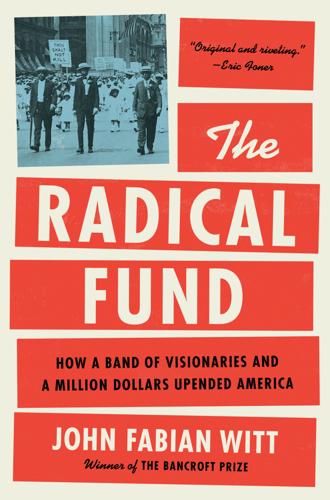
The Radical Fund: How a Band of Visionaries and a Million Dollars Upended America
by
John Fabian Witt
Published 14 Oct 2025
The 1954 decision in Brown v. Board of Education ruled racially segregated public schools unconstitutional. Brown is how historians remember the Fund, when it is remembered at all. But the Fund’s joint campaign set in motion a mostly forgotten parallel case, too. Coming a decade before the famous desegregation case, Steele v. Louisville & Nashville Railroad told unions and employers they had to deal fairly with Black workers. Steele marked a culmination of the Fund’s efforts to shape the racial maldistribution of modern capitalism’s spoils. For the directors of the Fund, race emancipation and class liberation traveled together.
…
He rehearsed earlier litigations like the successful challenge to racially restrictive zoning in Louisville and the organization’s winning case against whites-only Texas primary elections in the 1927 Supreme Court decision Nixon v. Herndon. In the revised proposal, the committee earmarked resources for school funding equalization suits, voting rights cases, railroad desegregation cases, jury service cases, and residential segregation cases. Black civil rights in Haiti and the Virgin Islands made the new, expanded list of projects for the committee’s proposal. The animating idea was action to upend the psychological environment shaping the behavior of Black labor. The worker, said the committee, must come to hold “a new belief in salvation by economic reform achieved by himself.
…
By attending to institutional structure, Margold aimed to advance the project of recouping Black people’s own tax dollars.67 Important traces of the Garland Fund’s abiding interest in labor remained in Margold’s plan, too. In particular, the blueprint revived the Committee on Negro Work’s plan to desegregate labor unions. Where Morris Ernst had understandably worried that suing white labor unions would fracture the progressive labor movement coalition, Margold proposed an attack not on unions’ private membership rules but on state laws banning integrated private associations. In Virginia, labor unions were white not merely because they excluded Black workers on their own accord; the law required segregated unions, at pain of a $5,000 fine or up to twelve months in jail.
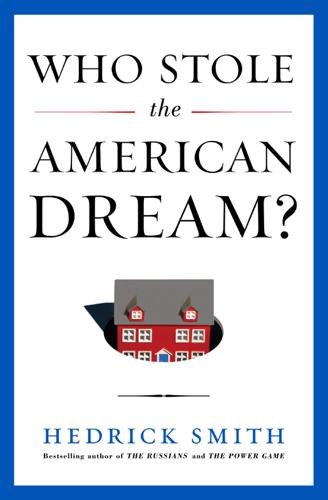
Who Stole the American Dream?
by
Hedrick Smith
Published 10 Sep 2012
By the 1960s, practicing law in Richmond, Powell had become one of America’s leading corporate attorneys—in fact, he was president of the American Bar Association from 1964 to 1965. He had been shocked by the Supreme Court’s 1954 school desegregation decision but thoughtfully counseled Virginians against what was then known in the South as hard-line “massive resistance” to school desegregation. Much later, during his tenure on the Supreme Court from 1972 to 1987, Powell often voted with the conservatives, but he also played a moderating role, gaining a reputation as the balancer, the compromiser, in a Supreme Court buffeted by sharp ideological divisions.
…
There were Freedom Riders, black and white, who had been savagely bludgeoned by a white mob in Montgomery or whose Greyhound bus had been torched by a Molotov cocktail outside Anniston. There were college students such as John Lewis, whom I had seen beaten and burned with lit cigarettes while trying to desegregate lunch counters in Nashville; preachers such as Reverend Fred Shuttlesworth from Birmingham, who had been slammed against a church wall by a high-powered police fire hose, and youngsters who had braved nightsticks and snarling police dogs. There were doctors and lawyers and business proprietors who had used their homes or stores as collateral for bond to free thousands of civil rights marchers across the Old Confederacy.
…
As the Reverend Martin Luther King, Jr., said, to resounding cheers, this gentle but expectant crowd felt “the fierce urgency of now.” Few people in America knew better than King how to move a nation and how to shake the power structure out of its reluctance and inertia by dramatizing social and economic injustice. In nearly a decade since the Supreme Court’s 1954 decision ordered school desegregation, civil rights legislation had been bottled up in Congress. It was the power of ordinary middle-class Americans, the exercise of grassroots democracy, that broke the logjam. It was the lunch counter sit-ins, the brave Freedom Riders, and the students marching through cities like Birmingham that were altering the attitudes of a nation and the political climate in Washington, by exposing the ugly face of racism and the harsh wages of social and economic injustice in America.
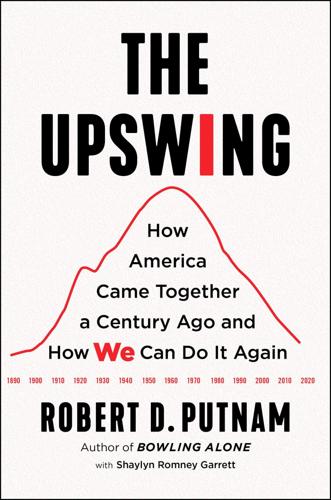
The Upswing: How America Came Together a Century Ago and How We Can Do It Again
by
Robert D. Putnam
Published 12 Oct 2020
Clotfelter, After Brown: The Rise and Retreat of School Desegregation (Princeton: Princeton University Press, 2004), 16. 30 Margo, Race and Schooling in the South, 64. 31 Clotfelter, After Brown, 16. 32 For a discussion of Northern school segregation, see Gerald N. Rosenberg, The Hollow Hope: Can Courts Bring About Social Change?, 2nd ed., American Politics and Political Economy (Chicago: University of Chicago Press, 2008), 98–100; Franklin, The Education of Black Philadelphia, 37–47; and Davison M. Douglas, Jim Crow Moves North: The Battle over Northern School Desegregation, 1865–1954, Cambridge Historical Studies in American Law and Society (New York: Cambridge University Press, 2005), 139–51. 33 Anderson, The Education of Blacks in the South, 1988; Jeannie Oakes, Keeping Track: How Schools Structure Inequality (New Haven: Yale University Press, 1985); Jeannie Oakes and Gretchen Guiton, “Matchmaking: The Dynamics of High School Tracking Decisions,” American Educational Research Journal 32, no. 1 (1995): 3–33, doi:10.3102/00028312032001003; Grace Kao and Jennifer S.
…
With the advent of Reaganism, however, the Republicans became steadily more skeptical about environmentalism, a trend capped by their leaders’ uncompromising denial of climate science in the twenty-first century. Education: Roughly 40 percent of Republicans in the House and Senate had voted alongside roughly 80 percent of Democrats in favor of the landmark Elementary and Secondary Education Act of 1965, part of LBJ’s War on Poverty. But as the issue of school desegregation heated up and free market orthodoxy permeated the Republican Party in the 1980s, the two parties began to divide on the issue of public vs. private or charter schools, a division that would remain into the next century. Eventually, even a technical debate about reading pedagogy between “phonics” and “whole language” approaches became the subject of the party-inflected “Reading Wars.”54 So the renewed party polarization of the last half century began with race—the one constant and central conflict in American history—but polarization soon came to be about much more than race.55 By the years of Obama and Trump, bipartisanship in Congress had become virtually nonexistent; on six major votes of this period, the administration received support from 95 percent of their own party, but only 3 percent of the opposition.56 Statistically speaking, party polarization was rapidly approaching mathematical perfection.
…
Remarkably, however, even the sharp upward trend toward school integration, which began after Brown, leveled off in the early 1970s, after which a modest trend toward re-segregation began.35 Thus, in the same moment that a near century-long trend toward racial convergence on measures of quantity and quality of education halted, the national project of desegregation also stagnated and even began to reverse course. And troubling disparities between majority-white and majority-black schools (in class sizes, per-pupil spending, teacher pay, and curricular tracking) persist today.36 Thus, measures of the drive for racial equality in the quality, quantity, and integration of education also show a clear “foot off the gas” pattern, with progress being made in the first two thirds of the century, followed by stagnation beginning in roughly the 1970s—precisely when America began its downward plunge from “we” to “I.”
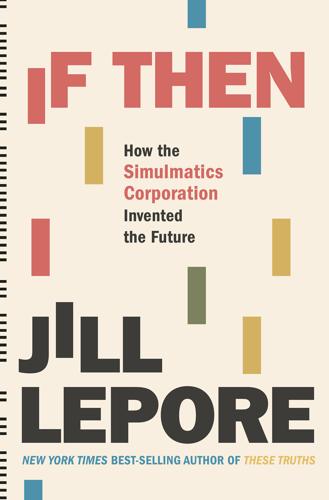
If Then: How Simulmatics Corporation Invented the Future
by
Jill Lepore
Published 14 Sep 2020
He raised money for liberal causes, especially civil rights and civil liberties; he grabbed checks out of thin air, like a magician who pulls a nickel out from behind your ear. He served on the boards of the Fund for the Republic (which fought for the freedom of speech), the American Freedom of Residence Fund (which fought for desegregated housing), and Operation Crossroads Africa (a precursor to the Peace Corps). The civil rights attorney Harris Wofford, who would serve as John F. Kennedy’s special assistant for civil rights and help found the Peace Corps in 1961, once advised Martin Luther King Jr., “Let me suggest that some time soon you try to talk with a good friend of mine, a very astute public relations man, Ed Greenfield.”6 Very astute, my good friend, knows everyone.
…
Board had not been met: most southern schools simply refused to abide by it, and unless the federal government was willing to act, there wasn’t much that could be done about that. The Democratic Party needed black voters, but much of the party was composed of white, segregationist southerners. Adlai Stevenson could not figure out how to thread this needle. In 1956, three days after he spoke in Fresno, Stevenson told a mostly black audience in Los Angeles that desegregation ought to “proceed gradually” and that care must be taken “not to upset, overnight, traditions and habits older than the republic.” These traditions, of course, included not only segregation but terrorism, the murder of children, the raping of women, and the lynching of men. Stevenson’s stumbles, and his timidity, cost him.
…
In a report on Los Angeles, they concluded that “Stevenson has lost a good deal of badly needed support among Negroes and other minority groups.”58 On May 13, they submitted their final reports to Greenfield. Their leading recommendation had to do with civil rights: “Do not make the mistake of thinking that civil rights and desegregation are important issues only to the Negroes.”59 In the June 5 California primary, Stevenson beat Kefauver, 1,139,964 to 680,722, with 62.6 percent of the vote.60 The senator from Tennessee withdrew from the race. Edward L. Greenfield & Co.’s Social Science Division claimed credit. The 1956 Democratic National Convention was held in the same stockyard amphitheater on the South Side of Chicago where Stevenson had accepted his party nomination four years before.
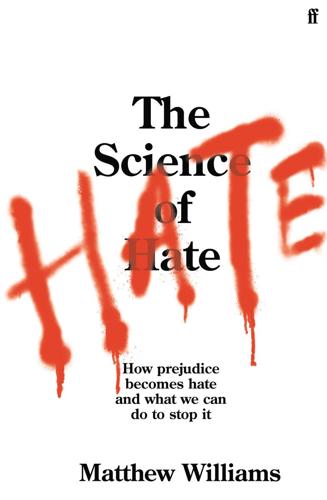
The Science of Hate: How Prejudice Becomes Hate and What We Can Do to Stop It
by
Matthew Williams
Published 23 Mar 2021
In what became regarded as one of the first large-scale social engineering experiments, the Newark low-rent public housing project assigned black and white residents to separate blocks, and compared their experiences to two similar blocks in New York City that were desegregated. Compared to their counterparts in the segregated blocks, white housewives in desegregated housing reported better experiences with black neighbours, and came to hold them in higher esteem. Following the publication of the results, a policy was enacted that ordered housing be ‘allocated on the basis of need, regardless of race, religion and color’.
…
Eventually he pulled away from his sisters and his brother. He would refuse to drink out of the same glasses as them, even if washed, and would cover chairs they had sat on with a cloth before sitting down himself. James attended one of the largest high schools in the area and to his chagrin witnessed the first enrolments of black pupils. School desegregation came late to Alabama due to staunch resistance by state officials, resulting in violent clashes between civil rights groups and police. James was now exposed to violence both inside and outside of his family. Around this time he took an interest in the ideology of the extreme right, which blossomed in adolescence with his avid consumption of the Bible and Mein Kampf.
…
The Housing Act of 1949 set out a rapid programme of public housing building to clear the slums in US cities. It was seen by some as an opportunity not just to clean up deprived areas, but also to end racial segregation in housing. This was a controversial move, as scientific opinion on residential desegregation was mixed at the time. The early experiments were producing encouraging results, but there was no guarantee that these would be replicated on the streets. But to build swathes of public housing that were segregated by race would have given the impression that the federal government endorsed ‘black only’ and ‘white only’ housing blocks and neighbourhoods, and would do more damage to multicultural relations.
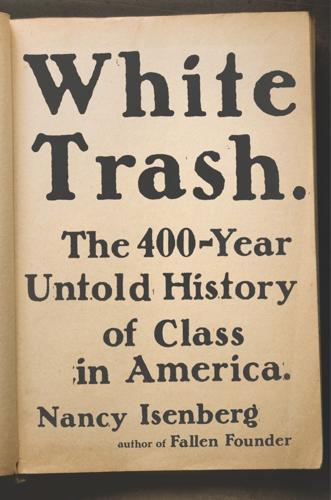
White Trash: The 400-Year Untold History of Class in America
by
Nancy Isenberg
Published 20 Jun 2016
Daniels liked what he saw in Norris, Tennessee, a planned town that was part of the TVA. It was not the photoelectric cell lighting and heating of the big school building that impressed him so much as the “collision of children” inside the school—the “hill children of the big, poor families” alongside the children of engineers. Here was a clear-cut experiment in class desegregation. If only this was America, he thought.63 As Ma Joad from The Grapes of Wrath had put it, Daniels repeated for his southern audience: the poor are always coming. He praised the TVA for discovering that ordinary southern whites were receptive to training if given a fair chance. Some, he acknowledged, were “underfed,” some “feeble-minded, perverted, insane.”
…
Which brings us to Hazel Bryan and the crystalization of the modern media circus.41 • • • Nineteen fifty-seven was a crucial year of social experiment and consciousness-raising. Little Rock, Arkansas, grabbed national and international attention when Governor Orval Faubus thwarted the racial desegregation of Central High School. On September 4, fifteen-year-old Elizabeth Eckford attempted to enter the school building, but was blocked by the Arkansas National Guard. Outside the classroom building, reporters had gathered. Will Counts of the Arkansas Democrat and Johnny Jenkins of the Arkansas Gazette set the tone for how the day would be remembered.
…
Under the direction of teachers, the majority gradually filed out of the building, though some, including Hazel’s best friend, Sammie Dean Parker, later claimed to have leapt from the second-floor window.45 Two new schools had been built in Little Rock: Horace Mann High for black students, and R. C. Hall High (nicknamed “Cadillac High”) for the wealthy families on the west side of the city. Only Central High, built in the 1920s and catering mostly to working-class families, however, was selected for desegregation. Armis Guthridge of the Capital Citizens’ Council, the lead spokesman for antidesegregation forces, willfully fanned the flames of poor white resentment when he announced that the rich and well-to-do were going to see to it that the “only race-mixing that is going to be done is in the districts where the so-called rednecks live.”
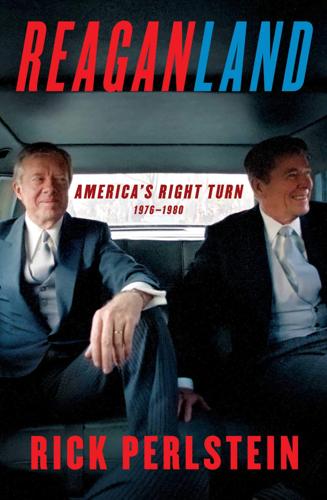
Reaganland: America's Right Turn 1976-1980
by
Rick Perlstein
Published 17 Aug 2020
He offered frank complaints about the numbness of campaign routine, and explained why he believed pardoning Vietnam draft evaders was civic duty; thoughtfully discussed why he refused to position himself simply in either the liberal or conservative camp despite media criticism that he was trying to be all things to all people; spoke candidly about his own moral failing in neglecting to speak against school desegregation until Brown v. Board of Ed, and in supporting the Vietnam War until 1971. He was blunt about America’s failings, too, citing the CIA’s abuses of power in particular; people had become inured to that sort of thing, he complained; some perhaps even “prefer lies to truth. But I don’t think it’s simplistic to say that our government hasn’t measured up to the ethical and moral standards of the people in this country.”
…
It had been a remarkable innovation when Barry Goldwater toured the Deep South for Richard Nixon in 1960—wearing “a Confederate uniform,” Lyndon Johnson darkly joked—since no Republican had ever won electoral votes there. Then, in 1964, Goldwater won Mississippi, Alabama, Georgia, South Carolina, and North Carolina. When Richard Nixon attempted to repeat the accomplishment in 1968, intimating his sympathy for the region’s desire to keep the federal government from forcing racial desegregation upon it, it was dubbed the “Southern strategy.” When he swept the South along with almost all the rest of the nation in 1972, experts wondered whether the Party of Lincoln had flipped Dixie for good. Then, however, the Democrats nominated a Southerner, and pundits began talking about the Republican Southern strategy as a thing of the past.
…
Then, however, the Republican Party changed directions on the issue for good: they nominated Barry Goldwater, who voted against the 1964 Civil Rights Act. He got only 6 percent of the black vote. In 1968, Nixon followed Goldwater’s lead, aiming his appeal at white segregationists in the South, and white Northerners opposed to busing to desegregate public schools. In 1972, nonwhites were practically the only voters who didn’t support Richard Nixon, giving him 13 percent. But for some Republicans this new reality had not yet sunk in. Mal MacDougall predicted Ford would receive “what a Republican presidential candidate can normally expect”: 30 percent of the back vote.
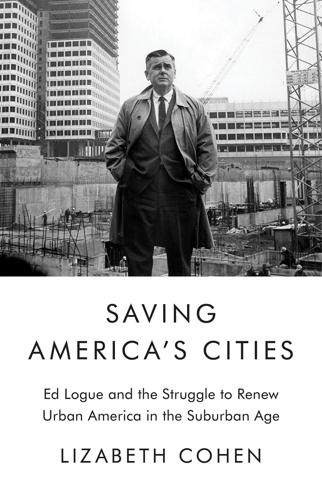
Saving America's Cities: Ed Logue and the Struggle to Renew Urban America in the Suburban Age
by
Lizabeth Cohen
Published 30 Sep 2019
Soon after taking office, he appointed George Crawford (the namesake for the architect Paul Rudolph’s Crawford Manor elderly housing) as the first black corporation counsel to the City of New Haven, and he desegregated New Haven’s fire department as well as its housing projects, the latter at the encouragement of the civil rights organization Congress of Racial Equality (CORE).63 The mayor also launched a front-page fight in 1963 by announcing publicly that the segregationist governor George Wallace of Alabama would be “officially unwelcome” in New Haven, despite his invitation from the Yale Political Union, Logue’s old debating society.64 That same year Lee forced notoriously racist building trade locals in New Haven to accept black members if they wanted any more city construction contracts.65 And in what became a very controversial move, Lee, fed up with suburban blindness to the city’s problems, encouraged black residents of New Haven to block late-afternoon rush-hour traffic with a “sit out” in the middle of one of the city’s main arteries to convince homeward-bound suburban commuters “to walk through the slums and see the conditions which prevail.”66 What proved even more contentious was Lee’s appointment of a human rights committee in June 1963 that, after a year of intense politics and public hearings, recommended passage of a nondiscrimination Equal Opportunities Ordinance, which the New Haven Board of Aldermen in turn approved.67 The law provided the pressure needed to expand the controversial scattered-site housing effort that so outraged white middle-class homeowners.68 Intense as these conflicts proved, they paled when compared with the prolonged struggle to desegregate New Haven’s schools. In 1958, when two new high schools opened, Lee quietly set the boundary between the two districts so as to equalize the black student population attending each.69 But the next stage of school integration was harder to do sub rosa. In 1964, the school board announced, under pressure from the national NAACP, a plan to desegregate New Haven’s neighborhood schools with extensive busing. In a district where 38 percent of the students were nonwhite, ten of the thirty-one elementary schools had nonwhite enrollments over 50 percent, as did two of the four junior-high schools.
…
Papa, also called for more listening “to the people who know the needs of the people in New Haven” to stem the tide of the middle-class exodus to the suburbs. Papa and his fellow Republicans shared the Left’s criticism of the Lee-Logue regime as undemocratic in violating majority rule, such as when its appointed Board of Education promoted school desegregation and its Redevelopment Agency built scattered-site affordable housing in neighborhoods hostile to it. They in fact anticipated how calls for a more grassroots democratic mobilization against mainstream liberalism would in time travel from the political Left to the political Right.44 RACE IN THE NEIGHBORHOODS Harris’s unexpected intervention at the National Commission hearing also changed the conversation about race.
…
Although some of their actions might be considered tokenism, they viewed them as symbolic racial politics much needed in their segregated city. Lee lived in Newhallville, a black neighborhood, until 1964. Soon after taking office, he appointed George Crawford (the namesake for the architect Paul Rudolph’s Crawford Manor elderly housing) as the first black corporation counsel to the City of New Haven, and he desegregated New Haven’s fire department as well as its housing projects, the latter at the encouragement of the civil rights organization Congress of Racial Equality (CORE).63 The mayor also launched a front-page fight in 1963 by announcing publicly that the segregationist governor George Wallace of Alabama would be “officially unwelcome” in New Haven, despite his invitation from the Yale Political Union, Logue’s old debating society.64 That same year Lee forced notoriously racist building trade locals in New Haven to accept black members if they wanted any more city construction contracts.65 And in what became a very controversial move, Lee, fed up with suburban blindness to the city’s problems, encouraged black residents of New Haven to block late-afternoon rush-hour traffic with a “sit out” in the middle of one of the city’s main arteries to convince homeward-bound suburban commuters “to walk through the slums and see the conditions which prevail.”66 What proved even more contentious was Lee’s appointment of a human rights committee in June 1963 that, after a year of intense politics and public hearings, recommended passage of a nondiscrimination Equal Opportunities Ordinance, which the New Haven Board of Aldermen in turn approved.67 The law provided the pressure needed to expand the controversial scattered-site housing effort that so outraged white middle-class homeowners.68 Intense as these conflicts proved, they paled when compared with the prolonged struggle to desegregate New Haven’s schools.

Boyd: The Fighter Pilot Who Changed the Art of War
by
Robert Coram
Published 21 Nov 2002
Opening casinos and restaurants to blacks, a new market, would make more money for the casino owners. Desegregation would be good for business. This the Mafia understood. A few days later the casino owner called Dr. McMillan again. “It’s okay. They’re going to integrate this town.” The national media picked up the story. Las Vegas would no longer discriminate in public accommodations. Black people could stay at Strip hotels and eat at restaurants there. A formal agreement desegregating all hotel / casinos on the Strip was signed in March 1960, and that is the date usually accepted for the desegregation of hotels and restaurants in Las Vegas. But three years earlier, John Boyd forced the desegregation of Las Vegas.
…
He and other black entertainers such as Pearl Bailey, Nat King Cole, Louis Armstrong, Harry Belafonte, and Eartha Kitt also performed at the famous hotels on the Las Vegas Strip, but they could not stay in those hotels, nor could they eat in the restaurants. They stayed on the west side at the Apache Hotel or in rooming houses. In early 1960 the Las Vegas National Association for the Advancement of Colored People (NAACP) told the mayor of Las Vegas that southern-style marches would begin unless the Strip was desegregated within thirty days. Mafia dons who then owned and operated many of the Las Vegas casinos thought black people were after a piece of the action. Dr. James McMillan was a dentist and leader of the Las Vegas civil rights movement. He recalled that a casino owner called the NAACP and passed along the word from Mafia leaders.
…
But three years earlier, John Boyd forced the desegregation of Las Vegas. It happened this way. Boyd was becoming more and more interested in math and aerial tactics. He did not want his staff contaminated by the raucous Friday afternoons on base, especially at the Stag Bar behind the Officers Club, so he and Sprad began inviting their staffs to a Friday brunch at the Sahara Hotel. Boyd always was first in line at the enormous buffet for which Las Vegas hotels remain famous. After shoveling the food down, he shoved his chair away from the table, reached into his breast pocket for a Dutch Master, ripped away the cellophane, bit off the end, and struck a match.
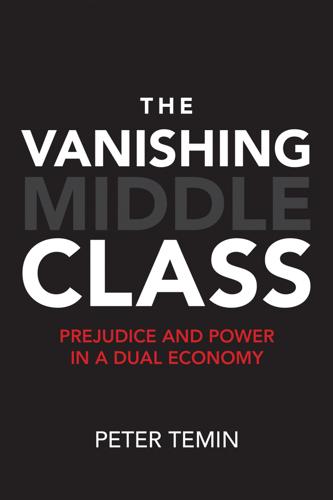
The Vanishing Middle Class: Prejudice and Power in a Dual Economy
by
Peter Temin
Published 17 Mar 2017
Schools in the North have become as segregated as they were in the South before Brown v. Board of Education. The media are full of observations, analyses, and hand-wringing about schools with predominantly black students. A recent paper found that “school desegregation significantly increased educational attainment among blacks exposed to desegregation during their school-age years, with impacts found on ... attending college, graduating with a four-year college degree, and college quality.” But the residential pattern of black cities and white suburbs makes this kind of gain hard to expand.10 American education has split into two separate educational systems, echoing the division of the population into two sectors.
…
They were excluded from white neighborhoods by restricted access to mortgages and the opposition of white neighbors. The Detroit school district was two-thirds black by the 1970s, and the NAACP filed suit against Michigan Governor William Milliken and others, charging direct discrimination against blacks in the drawing of school districts. The Supreme Court held that school districts were not obligated to desegregate unless it could be proven that the lines were drawn with racist intent. Arbitrary lines that produced segregated districts were not illegal. Intent is a familiar concept in criminal law, where it has been used for many, many purposes. The application to public policy, however, is fraught with problems.
…
Justice Lewis F. Powell, Jr. New York: Scribner’s. Johnson, Lyndon B. 1966. “To Fulfill These Rights.” In Public Papers of the Presidents of the United States: Lyndon B. Johnson, 1965, Vol. II, 635–640. Washington, DC: Government Printing Office. Johnson, Rucker C. 2011. “Long-Run Impacts of School Desegregation and School Quality on Adult Attainment.” NBER Working Paper No. 16664, January. Johnston, Katie. 2016. “Western Mass. Prisoner Rehabilitation Program Lauded.” Boston Globe, June 20. Jones, Charles I. 1997. “On the Evolution of the World Income Distribution.” Journal of Economic Perspectives 11 (3) (Summer): 19–36.
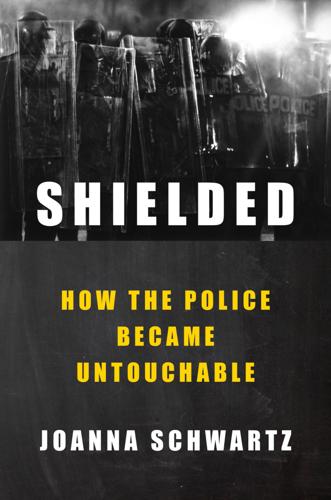
Shielded: How the Police Became Untouchable
by
Joanna Schwartz
Published 14 Feb 2023
Even if the Court’s allowance in Brown II that states act “with all deliberate speed” robbed that order of much of its power, it marked the beginning of widespread federal court injunctions issued to cure constitutional violations by local governments. In the decade after the Supreme Court’s 1961 decision in Monroe v. Pape, the Court looked approvingly on court-ordered injunctions in school desegregation and voter apportionment cases. As the Court explained in 1971, in Swann v. Charlotte-Mecklenburg Board of Education, one of several Supreme Court cases addressing states’ resistance to desegregating schools, “Once a right and a violation have been shown, the scope of a district court’s equitable powers to remedy past wrongs is broad, for breadth and flexibility are inherent in equitable remedies.”
…
Although Screws was a criminal case, its interpretation of “color of state law” was applied in Section 1983 cases and, ultimately, in Monroe v. Pape (1961). Swann v. Charlotte-Mecklenburg Board of Education, 402 U.S. 1 (1971). In Swann, a unanimous decision, the Supreme Court held that district courts had broad powers to order injunctive relief aimed at desegregating schools following the Court’s decision in Brown v. Board of Education (1954). Taylor v. Riojas, 141 S. Ct. 52 (2020) (per curiam). The Supreme Court reversed the lower courts’ grant of qualified immunity in Taylor, ruling that “any reasonable officer should have realized that Taylor’s conditions of confinement [in ‘shockingly unsanitary’ prison cells] offended the Constitution.”
…
See injunction courts of appeals, federal, 248 criminal prosecution, of police officers, xi–xii cross section of community, jury as, 141–43, 154–55 Crump, Ben, 129 D Daley, Richard J., 15 Dallas, Texas Police Department, 33–35, 44–45, 47, 240–41 Timpa, T., in, 33–35, 44–47, 89–90, 240 Timpa, V., in, 33–35, 43–47, 89–90, 240–41 damages under Section 1983, 10–11, 146, 198 state and local laws on, 14 Darden, Steve, 99 deadly force, 63–66, 255 deliberate indifference, 103–4, 106–7, 109, 111 Delio, Peter, 135–37, 149 excessive-force claims against, 147, 151–52 restitution sought from, 153–54 Department of Justice (DOJ), 248 on civilian complaint systems, 217 Civil Rights Section, 8 injunction and, 172 Los Angeles Police Department and, 216 police departments investigated by, 14, 16, 173 deposition, 248 desegregation, 162, 255 detentions, secret and unlawful, 99 deterrence goals, of civil rights legislation, 225, 229–30, 232–35 Dillard, Dustin, 45–47 Dirge for the Charlatans (television show), 180–82 discipline, for police officers, xii, 230–31 discovery, 248 Ashcroft v.
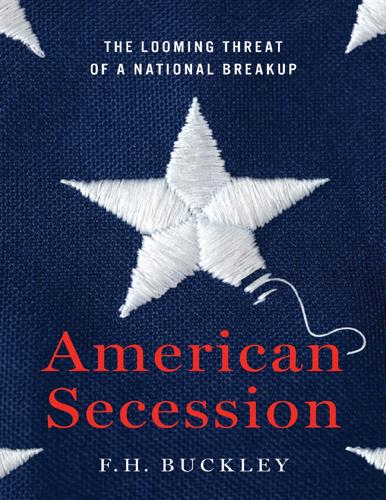
American Secession: The Looming Threat of a National Breakup
by
F. H. Buckley
Published 14 Jan 2020
The question of a state’s right to veto a federal law lingered in the constitutional shadows, and was not even wholly laid to rest by the Civil War. In the 1950s, several southern states embarked on a plan of “massive resistance” to court-ordered desegregation, and Arkansas amended its state constitution to maintain segregated schools. But this amendment was struck down by the Supreme Court in Cooper v. Aaron,3 along with the theory that a state could veto federal law. The Court ruled that the Constitution’s Supremacy Clause4 made the Constitution the supreme law of the land, and that the desegregation decision in Brown v. Board of Education5 was binding on the states. And this was finally the end of the nullification doctrine.
…
Alberta Capone, Al Carlisle, Frederick Howard, 5th earl of Carlisle Commission (1778) Cascadia Independence Party Catalonia censorship Chase, Salmon P. Chicago Daily Times Chick-fil-A Chile China; and “Beijing Consensus”; happiness in; longevity in; military expansion of; Ming era; prosperity in; repression in Churchill, Winston Citizens United v. Federal Election Commission civil rights; and desegregation; and Mississippi murders; opt-outs on; Selma marches for Civil Rights Act (1964) Civil War (U.S.); and Buchanan; as cautionary tale; and Davis trial; and federal employees; Fort Sumter attack; military size in; and nullification; and Peace Convention; press censorship in; public opposition to; and reconciliation; reenactments of; and slavery; and Supreme Court; and “victor’s constitution” Clinton, Bill Clinton, Hillary; on deplorables; and Electoral College Coase, Ronald Cobb, James Code of Federal Regulations Cohen, Steve Colbert, Stephen Cold War Colorado Common Sense (Paine) Communist Manifesto, The Confederacy; army of; and compact theory; and southern culture Considerations on the Government of Poland (Rousseau) Constitutional Convention (Philadelphia); and Article V; failure scenario for; on federalism; on forced union; on foreign threats; on representative ratio; as “runaway convention”; on secession; on separation of powers; and Virginia Plan Continental Congress Controlled Substances Act Cooper, Jim Cooper v.
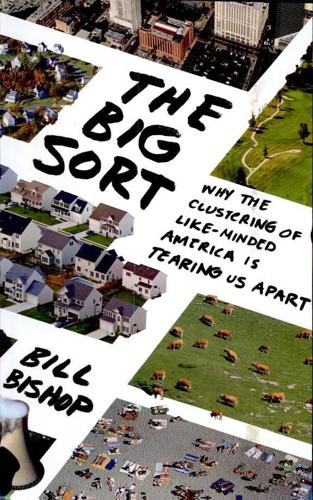
The Big Sort: Why the Clustering of Like-Minded America Is Tearing Us Apart
by
Bill Bishop
and
Robert G. Cushing
Published 6 May 2008
In 1964, 41 percent of Americans wanted the federal government to integrate schools. The demand for integrated schools was nearly universal by the early 1990s—95 percent of Americans wanted their schools integrated—but the support for federal intervention to enforce desegregation laws had dropped to 34 percent. It's possible, of course, that Americans felt there was no longer a need for the government to desegregate schools—a reasonable response if schools were already integrated. But by the early 2000s, America's public schools were resegregating; they were less integrated than they had been in the 1970s.63 Something more fundamental had changed in the way Americans thought about government.
…
(At the time, the percentage of blacks registered to vote in Mississippi was smaller than it had been in 1899.) He signed the 1965 Voting Rights Act in August and immediately dispatched forty-five federal agents to the South to register black voters. Earlier that year, in March, Johnson's Justice Department ordered all schools to desegregate, threatening to withhold federal funds from any district that didn't integrate its schools by the fall of 1967. On the first day of school in the fall of 1965, Gene Roberts of the New York Times reported that southern educators "said it was the biggest day of integration in the Souths history."38 On January 25, LBJ proposed a budget containing what the New York Times described as the "biggest expansion of domestic welfare and educational programs since the New Deal of the nineteen thirties."39 Two months later, Johnson signed the bill creating the Appalachian Regional Commission, the first, but certainly not the last, War on Poverty bill to reach the president that year.
…
In the 1950s, followers of the "human relations movement" had an "almost mystical faith in 'getting to know one another'as a solvent of racial tensions."4 They believed that simple contact between groups would work to reduce racial prejudice. It was a way of thinking so prevalent at the time that it became part of the reasoning used by the U.S. Supreme Court to desegregate public schools in 1954.5 When social psychologists began to study what happened when groups came in contact, however, the findings pointed to something less than the democratic ideal. People do gravitate toward others with similar opinions and ways of life, and they tend to minimize the differences within the groups to which they belong.

The Library: A Fragile History
by
Arthur Der Weduwen
and
Andrew Pettegree
Published 14 Oct 2021
Stephen Cresswell, ‘The Last Days of Jim Crow in Southern Libraries’, Libraries & Culture, 31 (1996), pp. 557–72. 16. A story beautifully told in Shirley Wiegand and Wayne Wiegand, The Desegregation of Public Libraries in the Jim Crow South: Civil Rights and Local Activism (Baton Rouge, LA: LSU Press, 2018). 17. Robbins, Censorship, p. 107. Wayne Wiegand, ‘“Any Ideas?”: The American Library Association and the Desegregation of Public Libraries in the American South’, Libraries: Culture, History, and Society, 1 (2017), pp. 1–22. 18. Eric L. Motley, Madison Park: A Place of Hope (Grand Rapids, MI: Zondervan, 2017), pp. 129–36. 19.
…
Wagner, Ralph D., ‘Not Recommended: A List for Catholic High School Libraries, 1942’, Libraries & Culture, 30 (1995), pp. 170–98. Wani, Zahid Ashraf, ‘Development of Public Libraries in India’, Library Philosophy and Practice (ejournal, 2008). Wiegand, Shirley, and Wayne Wiegand, The Desegregation of Public Libraries in the Jim Crow South: Civil Rights and Local Activism (Baton Rouge, LA: LSU Press, 2018). Wiegand, Wayne, ‘“Any Ideas?”: The American Library Association and the Desegregation of Public Libraries in the American South’, Libraries: Culture, History, and Society, 1 (2017), pp. 1–22. Postscript: Reading Without Books Ari, Amro, ‘Power, Rebirth and Scandal: A Decade of the Bibliotheca Alexandria’, Jadaliyya, October 2012, https://www.jadaliyya.com/Details/27221.
…
Those who presented themselves at their counters would be brusquely shown the door.15 In many jurisdictions the already discredited principle of ‘separate but equal’ was further dishonoured by the provision of a single, badly equipped building in the black quarter, often paid for by philanthropic donation. Desegregation came slowly to the libraries of the American South.16 It is a story which reflected no great credit on anyone in authority during the period, not least the American Library Association, which consistently put professional solidarity (not to say an easy life) over any attempt to enforce social justice for African-American readers.
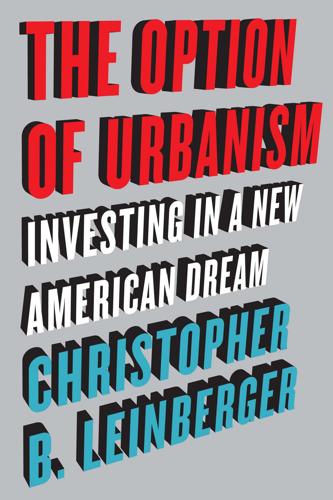
The Option of Urbanism: Investing in a New American Dream
by
Christopher B. Leinberger
Published 15 Nov 2008
As mentioned in chapter 1, home mortgage guidelines after World War II mandated racial segregation in the new suburbs. “Redlining” of 40 | THE OPTION OF URBANISM predominantly black, poor areas in the city became common practice as growth spiraled outward and banks and federal insurance programs refused to support redevelopment or business investment in the cities. The desegregation of public schools mandated in 1954 hastened white flight to the suburbs, leaving city schools to cope with a disproportionately poor student body. The civil rights movement may have been launched with the successful bus boycott in Montgomery, Alabama, but low-income AfricanAmericans ultimately lost the war for better transportation services.
…
As white middle-class riders abandoned bus transit and other public transit systems, the decreasing ridership, political support, and funding meant that there was nominal service to the new suburbs. In many metropolitan areas there was active opposition to the extension of transit to the suburbs to keep minorities from even commuting there. The official desegregation of housing mandated in the 1968 Fair Housing Act allowed blacks and other minority middle-class residents to leave the center cities, just as the majority white population had been doing. This had the ironic result of weakening vibrant black and other minority commercial and housing districts.
…
I NDEX f indicates entries in figures, n indicates endnote numbers. 1930s, 1, 4, 13, 16, 20, 25, 45–46, 65, 82, 178n14 1950s, ix, 33–36, 43, 69, 86, 90, 92, 127, 140, 155–157 1955 vs. 1985, 1–4, 11, 44, 180n30, 195n23 Atlanta, 4, 36, 42–43, 52, 74, 76, 93–97, 101, 120, 155, 158, 172, 189n6–7, 195n1 Auto-dependent, iv, 68 Baby boomers, 86, 89 Back to the Future, 2, 22, 34, 197n9 Bailey, L., 198n14 Beaumont, C., 180n35 Bel Geddes, N., 18, 25, 31, 43, 116, 178n9 Ben-Joseph, E., 180n28 Berube, A., 68, 177n4 Bezdek, R., 188n56 Biederman, Dan, 169 Block busting, 145 level, 195n21 Boredom, 90 Boston, 61, 93–96, 101, 107, 119, 189n6 Brooks, D., 39, 88, 182n10 Built environment, 2–8, 11, 17, 23, 32–33, 49, 63, 74, 83–84, 88–90, 104, 114, 117, 146, Adams, J., 185n23 Affordable housing, 65, 78, 133, 138–144, 163, 175, 191n4, 195n2, 196n3–6, 197n11 Agricultural jobs, 22, 23, 91 manufacturing, 13, 19, 23–24, 97 Airports, 42, 161 American Dream, 4, 9, 11–29, 87–92, 130, 150–176, 179n20, 189n5 Apartments, 17, 50, 55–58, 87, 102, 106–109, 122, 124, 141, 145– 146, 193n9 Arigoni, D., 196n3 Associations (see Neighborhood groups) Asthma, iv, 9, 75, 84 201 202 | INDEX 150–155, 160, 172–176, 181n1, 186n36, 191n3 pendulum, 3–5, 9–10, 61, 88, 146, 149 Business improvement districts (BIDS), 167–169 Carbon load, iv Carter, S., 177n1 Cattaneo, A., 181n2 Cervero, R., 186n28 Chen, D., 187n40 Chicago, 41, 60, 101, 119 Choice, 137, 166, 170, 189n6–7 Cisneros, Henry, 191n4 City planning, iv, 29 Civil rights movement, 40 Cohen, D., 186n38 Commercial brokerage firms, 46, 49, 60 Commercial development, 27, 34, 66, 116, 153, 158 Community decline, 9 Community development, iv, 97, 168 Concentrated poverty, 69, 184n9, 191n4 Condos, 98–99, 102 Consumer preferences, 10, 88 survey, 93–96, 106, 181n3 Cook, J., 181n9 Corkery, M., 190n25 Corn, J., 17, 178n8 Corporate strategic planning, xi, 37, 57, 104 Critical mass, 123, 169 199n25 Curry, T., 182n2 D’Arcy, M., 188n61 Debt, 46, 48–49, 160, 197n8 Density, see also Floor area ratio, 21, 72, 79, 113, 132, 166 Department of Transportation (DOT), 142, 164–165 NJDOT, 198n20 Desegregation, 40 Depression, the, 1, 4, 6, 12–15, 20–25, 33, 45, 63, 65 Detroit, 8–9, 57, 97, 102, 119–122, 137, 157, 177n6 Developers, 11, 32–35, 48–53, 58–59, 63, 71, 103, 106, 111–112, 129–132, 141–142, 156, 160, 162, 168–169, 174, 183n12, 194n16 Zell, S., 59 Development, commercial, 27, 34, 116, 153, 158 economic, 24, 91, 163, 170 land, 26, 123 real estate, 20 47, 106, 163 sub-urban, 5, 10, 29, 64, 66, 71, 74, 77, 79–81, 88, 114–115, 130–131, 140, 146, 150, 162, 167 urban, 29, 119, 124, 126, 176 walkable, 128, 135, 158 Displacement, 140 Domestic policy, 2, 4, 25, 27–29, 44, 67, 82, 150–151, 171–173, 176 Driver product types, 33, 38 apartment, 43, 51 hotel, 43, 45, 51–54 industrial, 45–56 office, 51, 56 retail, 43–45, 51–53 Drivable sub-urbanism, 4–11, 17, 24–29, 31, 39, 52, 59, 64–69, 72–88, 93–96, 113–119, 130, 135, 137, 139, 156–159, 172– 173, 187n50, 191n3 INDEX | 203 car manufacturing, 9, 24, 97 greenhouse gas emissions, 10, 74–78, 84, 172, 186n31 highways, 7, 16–21, 27–28, 33–40, 59, 62, 80, 158, 164, 180n34 oil industry, 9, 24 positive consequences, 64, 66 free parking, 66–67, 184n6, 192n6 JLUs, 54, 65, 66 unintended (negative) consequences, 9–11, 62, 67, 75, 78, 82, 85, 90, 132, 138, 141–149, 167 auto dependence, 68, 83, 97 elites, 70, 83, 184n12 job access, 69, 83 nondriver exclusion, 69–70, 83 poverty, 38, 68–69, 83, 140, 184n9, 191n4 social segregation, 68, 83 “Drive until you qualify,” 65, 67, 78, 139 Duany, Andres, 118 Duncan, J., 188n51 Economically sustainable, 11, 97, 167 Economic effects, 77, 84 Burchell, R., 78, 184n4 competitiveness, 78, 80, 84 Downs, A., 78 oil dependency, 81, 84, 173 personal finances, 77 Economic growth, 7, 36, 40, 91, 175, 179n25 built environment, 2–8, 11, 17, 23, 32–33, 49, 63, 74, 83–84, 88–90, 104, 114, 117, 146, 150–155, 160, 172–176, 181n1, 186n36, 191n3 Edge cities, 41–43, 59, 62, 69, 157–159 Edgeless cities, 59, 62, 87, 183n13 Edmonds, B., 190n27 Empty nesters, 89, 112 Engelke, P., 186n36 Entertainment, 5, 33, 54, 86, 110, 117, 119, 134, 168 Environmental effects, 71, 83 air quality, 73–74, 84, 165, 188n55 climate change, 74–75, 84, 166– 167, 172–175, 186n30 heat islands, 73, 83, 185n24 land consumption, 9, 71–72, 83, 175 water quality, 73, 83 Equity, 160–164, 168, 171, 175, 197n8 Euclidean zoning codes, 151, 196–197n2 Ewing, R., 185n19, 186n28 Export jobs, 179n27 Exurbia, 7, 62, 72, 177n3 Farmer’s markets, 148, 196n9 Farms, 23, 28, 64, 72, 87–88, 185n16, 190n19 Favored quarter, 35–44, 54–57, 62, 69, 134–141, 157 race and poverty, 38 Federal-Aid Highway Act of 1956, 27 Jackson, K., 21, 28, 179n19, 186n29 Federal Housing Administration (FHA), 25 Federal Reserve, 47–48, 183n8 asset class, 48–49, 64, 104, 161 Feehan, D., 199n24 Feit, M., 199n24 Floor area ratio (FAR), 113–119, 122–126, 158, 191n1–3 204 | INDEX Florida, R., 91 Foreign policy, 82, 84, 130 Friedman, T., 82, 188n60 O’Hanlon, M., 82, 188n61 trade-offs, 84, 92–93 For-sale housing, 45, 54–55, 64–65, 100, 151 Frank, L., 74–76, 96, 105, 113, 186n29, 186n33, 186n36–37, 189n7–8 Freeways, x, 13, 30, 39, 42, 56, 117, 158, 164 Frey, W., 177n4 Frumkin, H., 186n29 Garreau, J., 42 Gelernter, 178n6 General Motors (GM), 19, 25, 57 Gentrification, 138–141, 144, 196n6 Giuliani, Rudolph, 169 Glaab, C., 179n23 Global warming, iv, 199n27 Gowen, A., 197n4 Greenfield towns, 123 “Hand me down” housing, 140 Hansen, J., 172, 199n27 Health implications, 75–77, 84 Hickenlooper, John, 119, 166 High-density housing, 5, 109, 159 retail, 5, 44 work, 5, 78, 141 High-income housing, 38, 140 Hirsch, R., 188n56 Horrigan, B., 178n8 Housing, see also Affordable housing, 9, 31, 33, 44, 78, 96, 99, 117, 151, 163 projects, 115, 140–141, 191n4 rental, 39, 45, 109, 198n11 Impact fees, iv, 162–163 Inam, A., 94–95, 189n6 Inclusionary zoning, iv, 141–142 Industrial economy, 23–26, 91 car-based, 24–25, 84 rural ideal, 25 sub-burban ideal, 25, 40 Infrastructure development, 9, 29, 35, 40–41, 68, 80, 160–168, 171–174, 181n1 underwriting, 11, 160 Interstate highway system, 27–28, 31 Jackson, K., 21, 28, 179n19 Jackson, R., 186n29 Jacobs, J., 117 Jillson, C., 22, 179n20 “Just like us” (JLUs), 54, 65–66 Katz, B., 68, 184n9 Kostyack, J., 185n19 Kunstler, J., 77, 82, 188n58 Kutner, L., 185n23 Land consumption, 9, 71–72, 83, 175 Land value, 102–103, 142–144 Lang, R., 59, 183n13 Lasch, C., 70, 184n12 Lawrence, F., 74–75, 96, 186n29 Le Corbusier, 25, 113, 115, 158, 191n4 Le Corbuier’s Plan Voisin, 192n5 Leinberger, C., 183n9, 196n6 Levine, J., 26, 93–96, 105, 189n7 Lewis, T., 180n34 Life and Death in Great American Cities, 117 Lifestyle centers, 108–109, 124, 167 Limited-access highways, 33–38, 53, 59, 62 INDEX | 205 Lipman, B., 187n47 Locally undesirable land uses (LULUs), 42 Local-serving neighborhood retail center, 5, 128, 179, 12–13, 48, 122, 146–148 Los Angeles, 4, 36, 42–43, 61, 107, 115, 121–122, 128, 134, 141, 159, 172 Louis, B., 190n15 Louv, R., 77, 187n43 Low-density housing, 26, 79–80 regulatory guidelines, 26, 165, 197n6 Lucy, W., 41, 76, 187n Malamund Smith, J., 184n5 Market share, 29, 43, 90 McCann, B., 186n37 McPherson, M., 181n9 Media, 21, 86 Metropolitan areas, x-xi, 3–9, 17–18, 23, 26, 28, 31, 33, 36–38, 41–44, 59–63, 72– 80, 87–103, 118, 123, 128, 135–139, 142, 155, 164–165, 170–175, 177n2, 179n27, 185n16, 199n21 Metropolitan planning organization (MPO), 199n21 Miller, J., 190n26 Minorities, 40, 55 Minority housing, 37, 38, 69 redlining, 26, 39 Mumford, L., 18, 178n12 Myers, D., 189n2 National Interstate and Defense Highways Act, 27 Nee, B., 17, 178n15 Neighborhood groups, 71, 83, 130–134, 145 Neighborhood-serving retail, 33–35, 38, 128 Nelessen, A., 92–93, 189n5 Nelson, A., 88–89, 104–105, 125, 129, 144, 189n1, 194n17 Neverlands, 114–115, 140, 153, 192n5 redevelopment, 156–159 New economy, 11, 91 New Urbanism, 5, 87, 97, 106, 112, 117–118, 152, 158, 191n3–4 New York City, 36, 98, 130, 161 New York City World’s Fair, 15 Futurama, 12–31, 43–44, 63, 85, 116, 130, 172, 179n18 Not-in-my-backyard (NIMBY) groups, 71, 83, 133 Obesity, 9, 84 Obsolete housing, 80, 127, 140, 144–146, 153–156 Office space, 29, 33, 37, 43–47, 51, 56, 60, 74, 101, 109, 121–130, 136, 155–156, 158, 171, 192n8 Orfield, M., 40, 182n11 Owen, D., 200n29 Parking ratios, 150, 192n6 Pendall, R., 187n40 Pendulum (see Built-environment pendulum) Philadelphia, 8–15, 22, 36–37, 61, 119, 120–127, 133, 141, 157, 168, 170, 177n6 Phillips, D., 187n41 Phoenix, 4, 36, 42, 97, 101, 172 Pianca, E., 180n35 Population growth, 61–62, 72–73, 83, 144 206 | INDEX Poverty, 38, 68–69, 83, 140, see also Concentrated poverty Preindustrial “walking” cities, 21 nineteenth century, 21–23, 121–122, 154 twentieth century, 2, 4, 6, 9, 20–26, 39, 72, 85, 88, 115, 131, 151, 154 Prewar housing, 184n2 Privacy, 12, 14, 21, 24, 66–67, 115 Projects, see Housing projects Public housing, 115, 140 failure of, 191n4 Puentes, R., 198n14 Putman, R., 185n13 Race, 38, 40, 182n9, 192n5, 194n11 Rail transit, 3, 22, 30, 95, 112, 119, 123–124, 127, 151, 158–159, 163, 166, 171, 190n17, 193n10, 194n11 Real estate product types, 32, 38, 47, 49, 50–57, 59, 61, 115, 183n9 driver product types, 33 follower products, 33 Rees, W., 75, 186n34 Redevelopment, xi, 40, 61, 80, 125– 129, 153, 156–158, 167–169 Regional malls, 5, 35, 39, 109, 155, 159 Regional-serving walkable urbanism, 118, 124–128, 135–139, 173–174, 195n22 downtown-adjacent, 90, 119–122, 128, 132, 136, 146 greenfield town, 123 redeveloped malls, 118, 125–128 suburban town, 80, 88, 90, 97–98, 118, 122–123, 129 traditional downtown, 35–36, 99, 118–119, 167 REIT, 49–50, 58 Resolution Trust orporation (RTC), 47–49, 183n6 Reston Town Center, 102, 119, 123–124, 125f, 127, 136, 153 Retail chains, 109, 146–149 Retirement, 51, 128, 153, 160 Revitalization, 5, 88, 106, 129, 146, 156, 169 model cities program, 29 urban development action grants, 29 urban renewal, 29 Road diet, 197n7 Roulac, S., 8, 177n5 Rural areas, 22–23 S&Ls, 46–49, 182–183 crisis, 46 Safe, Accountable, Flexible, Efficient Transportation Equity Act (SAFETEA-LU), 164–165, 198n18 Schmid, T., 186n36 Seattle, 37, 98 Segregation, (see also Social segregation) 39–40, 65 Seinfeld, 87, 90, 106, 131 Shearin, R., 194n12 Shibut, L., 182n2 Shoup, D., 67, 184n6 Singer, A., 177n4 Smith-Lovin, L., 181n9 Social engineering, 25, 44, 67, 84, 137 segregation, 68–71 Solomon, D., 180n28 Southworth, M., 180n28 Sprawl, 78, 93, 122, 131, 151, 160, 184n4, 186n29 Street grid, 5, 199 INDEX | 207 Stein, B., 185n23 Strip malls, 5, 90, 92, 118, 125, 131, 148 Subdivisions, 6, 28, 35, 47, 50, 55, 88 Subsidies, 9, 11, 29–31, 67, 112, 144, 151, 162, 171–173 Suburban town center, 88, 90, 129 Superhighways, 17–21 Sustainable development, 112 Target market, 54–55 Terrestrial affiliation, 64, 67, 115, 184n1 Toll roads, 161 Torng, G-W., 189n6 Town center, 87–90, 112, 123, 129 Traditional neighborhood development (TND), 93, 117 Transect, 191n3 Transit-oriented development, 112, 117, 190n27, 199n20 Transportation, 3–4, 21–22, 27–32, 40, 63, 67–68, 74–81, 83, 93, 96, 116, 127, 142, 144, 151, 163, 166, 171–175, 181n1 infrastructure, 142, 165 Transportation Equity Act, 164, 182 Unemployment rate, 12, 69 Urbanism, see Walkable urbanism U.S.
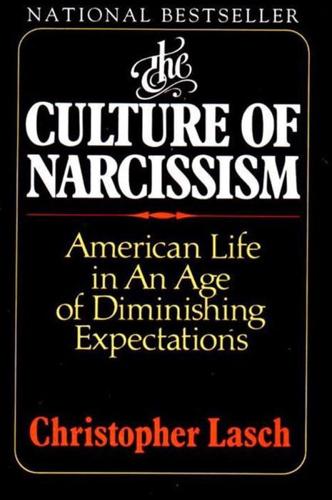
The Culture of Narcissism: American Life in an Age of Diminishing Expectations
by
Christopher Lasch
Published 1 Jan 1978
According to this supposedly traditional view, the school func" " tions best when it transmits the basic skills on which literate societies depend, upholds high standards of academic excellence, and sees to it that students make these standards their own. The struggle for desegregated schooling implied an attack not only on racial discrimination but on the proposition, long embedded in the practice of the schools, that academic standards are inherently elitist and that universal education therefore requires the dilution of standards-the downward adjustment of standards to class origins and social expectations. The demand for desegregation entailed more than a renewed commitment to equal opportunity; it also entailed a repudiation of cultural separatism and a belief that access to common cultural traditions remained the precondition of advancement for dispossessed groups.
…
Clark " pointed out, Social scientists and educators, in the use and practice of the concept of cultural deprivation, have unintentionally provided an educational establishment that was already resistant to change . . with a justification for continued inefficiency, much more respectable and much more acceptable in the middle of the twentieth century than racism. The struggle over desegregation brought to the surface the in" herent contradiction between the American commitment to uni- versal education on the one hand and the realities of a class society on the other. Americans in the nineteenth century had adopted a system of common schooling without giving up their belief in the inevitability of social inequality.
…
In the sixties the most glaring exception to official egalitarianism-the racially segregated system of separate but equal schooling-began to crumble under the combined onslaught of the courts, the attorney general s office, and the federal bureaucracy-only to give way to new patterns of discrimination in ostensibly integrated schools, together with un- mobile blacks in whom the passion for education burns as brightly as it ever did in descendants of the Puritans or in Jewish immigrants, desegregation represented the promise of equal education in the basic subjects indispensable to economic survival even in an otherwise illiterate modem society: reading, writing, and arithmetic. Black parents, it would seem, clungto what seems today an old-fashioned-from the point of view of educational innovators, a hopelessly reactionary-conception of education.
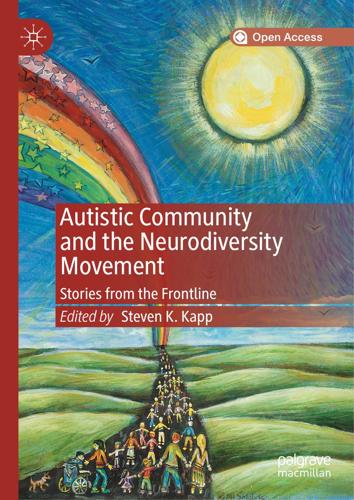
Autistic Community and the Neurodiversity Movement: Stories From the Frontline
by
Steven K. Kapp
Published 19 Nov 2019
I was nine years old. The Chicago neighborhood I came from, Marquette Park, and the suburb we’d recently moved to, Evergreen Park, were targeted for desegregation marches that summer. People in the neighborhoods were terrified, and many of them prepared to “defend” the neighborhoods, with rocks, bricks, and baseball bats. When the Archdiocese of Chicago announced (in response to the campaign) that it would begin busing African American students to desegregate my school in the fall, violence and threats of violence against African Americans reached near wartime intensity. A house, a few blocks away, was burned to the ground amid rumors (probably false) that it had been sold to an African American family.
…
Tisoncik But if it is necessary to give credit to just one individual for the founding of autistics.org, I know who that person is. The true founder of autistics.org is Dr. Martin Luther King Jr. and he founded it in Chicago in 1966. In 1966, Martin Luther King moved to Chicago, to lead a housing desegregation campaign. Dr. King was not then seen as the harmless and mostly fictional figure we venerate today. He was a radical agitator, hated and feared by most white people, and considered a criminal and likely communist by the government. The difference between MLK Jr. and more “radical” figures like Malcolm X and the Black Panthers was one of tactics, never of content, and no one during his lifespan doubted or watered down his militancy.
…
See also “anti-cure” perspective on autism; “pro-cure” perspective on autism D Dalmayne, Emma 265 DANDA (Developmental Adult Neuro-Diversity Association) 214 Dawson, Geraldine 224–226, 228 Dawson, Michelle 83, 90, 95, 98, 295 DCD (Developmental Coordination Disorder) 258, 259, 262–264 deficit model, of disability. See medical model, of disability deinstitutionalization 195 Dekker, Martijn 2, 12, 109, 298, 307 dementia 292 Derber, Charles 287 Des Roches Rosa, Shannon 155, 162, 294 desegregation 66 developmental disability (DD) 11, 65, 83, 85, 180, 312 developmental diversity 309 diagnosis/Diagnostic and Statistical Manual (DSM) 9, 23, 42, 90, 167–189, 263, 308 323 and critiques of the neurodiversity movement, 295, 298, 299 disability developmental 11, 65, 82, 83, 85, 180, 312 medical model of.

Age of the City: Why Our Future Will Be Won or Lost Together
by
Ian Goldin
and
Tom Lee-Devlin
Published 21 Jun 2023
The outlawing of racial segregation in schools in 1954, and later the introduction of compulsory busing within school districts to improve the racial mix of schools, had the unintended consequence of accelerating the exit of White families from inner city areas in favour of predominately White school districts in the suburbs. Desegregation in schooling profoundly altered the lives of Black students who were able to attend mixed schools, with higher rates of high school graduation and a better chance of escaping from poverty.20 Mixed schools also helped to foster mutual understanding and acceptance among pupils of different races.
…
(eds), Imagining the Future City: London 2062 (Ubiquity Press). 15 de Vise, P., 1976, ‘The suburbanization of jobs and minority employment’, Economic Geography, Vol. 52, No. 4. 16 Hobbs, F. and Stoops, N., 2002, ‘Demographic trends in the 20th century’, US Census Bureau (census.gov). 17 Cited in Wilkerson, I., 2016, ‘The long-lasting legacy of the Great Migration’, Smithsonian Magazine. 18 Wilson, W., 1987, The Truly Disadvantaged (University of Chicago Press). 19 Rajan, R., 2019, The Third Pillar (William Collins). 20 Hannah-Jones, N., 2019, ‘It was never about busing’, New York Times. 21 Clark, W., ‘School desegregation and white flight: a re-examination and case study’, Social Science Research, Vol. 16, No. 3. 22 Rhodes, J. and Brown, L., 2019, ‘The rise and fall of the “inner city”: race, space, and urban policy in postwar England’, Journal of Ethnic and Migration Studies, Vol. 45, No. 17. 23 Ehrenhalt, A., 2013, The Great Inversion (Vintage). 24 Edlund, L., et al., ‘Gentrification and the rising returns to skill’, NBER working paper. 25 Authors’ calculations based on Zillow data and US Census population weightings. 26 Autor, D., et al., 2017, ‘Gentrification and the amenity value of crime reductions’, NBER working paper. 27 Gropius, W., 1969, ‘Principles of Bauhaus production’, in Wingler, H.
…
Cintu, A., 2021, ‘Record apartment conversions make 2021 most successful year in adaptive reuse’, RentCafe (rentcafe.com). Citi GPS, 2020, ‘Technology at work v5.0: a new world of remote work’ (oxfordmartin.ox.ac.uk). Clark, D., 2022, ‘Average age of mothers at childbirth in the United Kingdom from 1938 to 2020’, Statista (statista.com). Clark, W., ‘School desegregation and white flight: a re-examination and case study’, Social Science Research, Vol. 16, No. 3. Cline, E., 2014, 1177 B.C.: The Year Civilization Collapsed (Princeton University Press). Clossick, J., 2014, ‘The industrial city’, in Knox, P. (ed.), Atlas of Cities (Princeton University Press). Cohen, B., 2022, ‘Yes, Zoom has an office.
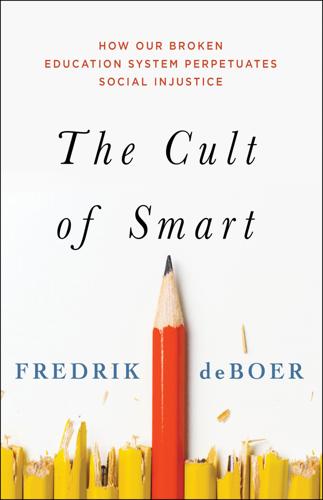
The Cult of Smart: How Our Broken Education System Perpetuates Social Injustice
by
Fredrik Deboer
Published 3 Aug 2020
As ugly as their motives are, and as much as we should oppose them, the rich people who use geography and zoning to exclude poor students of color from their school districts have understood a basic reality about schooling: outcomes are mostly a matter of who gets sorted in and who gets sorted out. And these dynamics become self-perpetuating. As school districts gain a reputation for being high quality because they’ve excluded harder-to-educate students, their property values rise, which in turn excludes even more poor students. For the record, I believe we need robust desegregation efforts to break this cycle and to better integrate students from across the socioeconomic spectrum in our public schools. I just don’t think that doing so will likely have much impact on quantitative educational metrics. This reversal of perceived cause and effect seems quite obvious, yet the idea is almost entirely absent from education talk, in either liberal or conservative media.
…
Much of the energy in education research comes from people dedicated to ending these inequalities. The basic dynamics are pretty well understood, even as the underlying causes are immensely controversial. Large group differences between white, black, and Hispanic American students have been observed since the beginning of desegregated schooling. These gaps shrank significantly in the 1970s and early 1980s, then stagnated, and have been slowly shrinking again in recent years. Today, these gaps stand somewhere in the .5 to 1.0 standard deviation range in both math and reading. That is, if the average white student sits at 50 percent of all students at a given academic task, the average black student lies somewhere between 15 percent and 30 percent.
…
creative class creative work credential creep criminal justice system juvenile detention system and moral luck criterion referencing “Cuck Philosophy” (YouTube essayist) Cult of Smart and blank-slate thinking and college admissions competition definition of ending the and equality of environment and intelligence and “smart kid” professions and totalizing ideology “culture of poverty” CUNY Currid-Halkett, Elizabeth Deary, Ian Degler, Carl degree creep Democratic party and centrism and education policy and neoliberalism and partisan politics and single-payer health insurance and social democrats 2020 presidential candidates Democratic Socialists of America (DSA) Department of Education Descartes, René desegregation DeVos, Betsy Dewey, John impact on American education The Need of an Industrial Education in an Industrial Democracy Douglas, Daniel Douthat, Ross Dream Hoarders (Reeves) Drew, David E. dropouts and dropout rates and compulsory education laws and education gaps and expansion of access to college lowering of legal dropout age and myth of educational plasticity and survivorship bias Duncan, Arne Dynarski, Mark ebooks, hypothetical experiment Economic Policy Institute ed-tech iPads online social network for writing practice education journalism education reform movement and “blame the teachers first” school of thought and labor and neoliberalism “no excuses” model “no limits on growth” model and relative versus absolute learning and teachers and tracking and untalented students See also reforms, realistic educators.
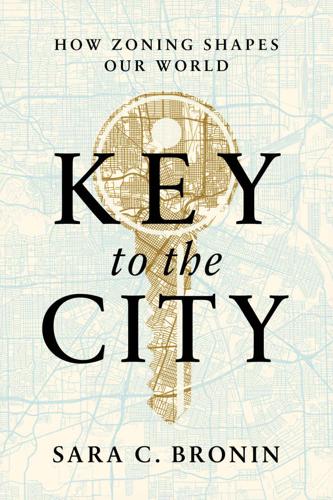
Key to the City: How Zoning Shapes Our World
by
Sara C. Bronin
Published 30 Sep 2024
Deborah Berke and Phil Bernstein invited me to teach a “Curating Cities” course at the Yale School of Architecture, which allowed me to test some of my ideas and introduced me to a spectacular crop of budding architects. Rand Cooper provided invaluable editorial assistance, and Luke Reynolds—my tireless deputy at Desegregate Connecticut—offered ideas and encouragement. Thanks also go to the students, among them Giacomo Cabrera, Emma Cotnoir, Duncan Grimm, Jessica Kim, and Danny Woods, who pitched in to fact-check and assemble sources. Finally, thank you to Margo Beth Fleming, my agent, and Huneeya Siddiqui, my lead editor, who not only skillfully shepherded this book through many rounds of edits, but also wrote to me from vacation spots with their zoning queries—and to Matt Weiland, for picking up the book in the first place.
…
Vehicle-Miles Dataset Table. 93 28 percent of such emissions: U.S. Environmental Protection Agency, Sources of Greenhouse Gas Emissions: Total U.S. Greenhouse Gas Emissions by Economic Sector in 2021, showing a total of 6,340 million metric tons of CO2 equivalent. 93 have 35 percent higher vehicle miles traveled: Desegregate Connecticut, “The Environmental Case for Zoning Reform,” 2021. 93 In Connecticut, for instance: Justin Sears and Leslie Badger, “Mapping Household Energy & Transportation Affordability in Connecticut,” Vermont Energy Investment Corporation for CT Green Bank, 22–23 (2020). 93 affordability gap primarily burdens Connecticut’s poor: Sears and Badger, “Mapping Household Energy,” 24–25. 93 14 percent overall and about a quarter of urban residents: DataHaven, 2023 Community Wellbeing Index (2023).
…
The Atlas logs minimum lot sizes between 0.92 and 1.84 acres or more, because many jurisdictions had minimum lot sizes of 40,000 square feet, which is 0.92 acres (an acre is 43,560 square feet). Similarly, many jurisdictions used 80,000 square feet, about 1.84 acres. 127 state even has large-lot zoning: Desegregate Connecticut, “Get on Board for Transit-Oriented Communities,” 2021. 127 resulted in 4.5 percent of the state being converted: Emily Wilson, Chester Arnold, and John Volin, “Connecticut’s Changing Landscape,” University of Connecticut CLEAR Story Map Gallery, https://clear.uconn.edu/storymaps/. 129 regulates air quality and atmosphere composition: Intergovernmental Panel on Climate Change, IPCC Fourth Assessment Report: Climate Change (2007) § 4.4.2. 129 precipitation has dropped 40 percent: Defenders of Wildlife, “Climate Change and the Sonoran Desert Region.”
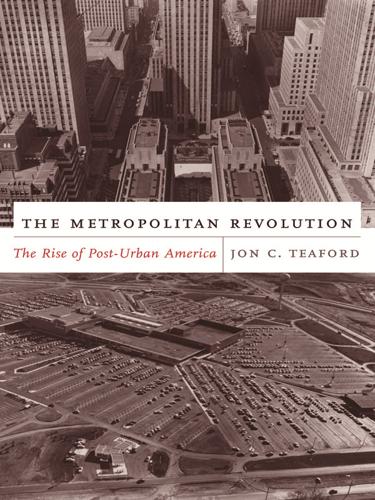
The Metropolitan Revolution: The Rise of Post-Urban America
by
Jon C. Teaford
Published 1 Jan 2006
The postwar decade also witnessed some desegregation of public facilities. In 1949 Saint Louis opened its public swimming pools to African Americans. At Fairgrounds Park, however, a gang of young whites attacked black swimmers as a crowd of an estimated two thousand whites heckled African Americans who sought to use the pool. After a two-year court battle, in 1954 Kansas City, Missouri, opened the formerly white-only Swope Park swimming pool to African Americans. Mitigating this integration victory was the reluctance of whites to patronize the desegregated pool, with attendance falling to one-third its normal level during the first summer of integration.70 In Washington, D.C., blacks were gradually admitted to white facilities.
…
Mitigating this integration victory was the reluctance of whites to patronize the desegregated pool, with attendance falling to one-third its normal level during the first summer of integration.70 In Washington, D.C., blacks were gradually admitted to white facilities. In 1949 the Roman Catholic Church instructed Washington’s parochial schools to desegregate. Two years later, the lunchroom of the Hecht Company department store opened to blacks. Within a few months, other department stores and drugstores in the downtown shopping area followed suit and admitted African Americans to their lunch counters and restaurants. In the early 1950s, the National Theatre, Washington’s only venue for Broadway productions, opened its doors to black patrons.
…
Yet in the mid-1950s, only communities in the border states took steps to dismantle their systems of separate black and white schools. In the cities of the Deep South, such as Atlanta, construction of separate schools for blacks and whites continued, and not until the early 1960s did the Georgia metropolis make even a token effort to desegregate its schools.72 Just as Shelley v. Kraemer did not destroy the racial barriers in housing, Brown v. Board of Education did not suddenly end racial separation in schooling. In the black–white cities of the mid-1950s, racial customs thus prevailed over judicial doctrine; life did not conform to the law.
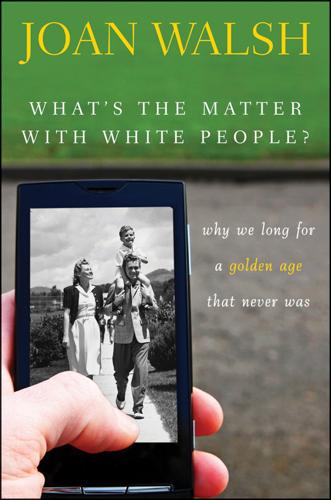
What's the Matter with White People
by
Joan Walsh
Published 19 Jul 2012
Conceived the month Walter O’Malley announced that the Dodgers were leaving Brooklyn, I always wondered if my mother needed a new love to take their place (in fact, a December 1957 subway strike figured prominently in stories about my conception, which may account for my lifelong soft spot for public employees’ unions). The week I was born, Life magazine featured a story on school desegregation, “Integration goes on—but with ugly incidents,” and a photo of Rev. Martin Luther King Jr. being jailed in Alabama. The same month, September 1958, the devout Irish Catholic turned devout American socialist Michael Harrington would begin the US tour that inspired his searing exposé of the hidden poor, The Other America, which helped drive the Johnson administration’s War on Poverty.
…
A few months later, my father watched his old neighborhood go up in flames while the Yankees beat the Los Angeles Dodgers in the World Series. “Ladies and gentlemen, the Bronx is burning,” Howard Cosell told the nation, but it felt like he was speaking to my dad. Back in Shorewood, A Better Chance was losing its funding, as local parents stopped contributing to the private, voluntary desegregation effort program. In 1979, it quietly disbanded. It was news enough to make the New York Times, in a story headlined “Liberal Whites Turn Cold to Blacks.” The Times saw the program’s demise as evidence that “whites seemed increasingly committed to integration as an ideal . . . but increasingly reluctant to support the mechanisms of integration.”
…
The “people of color” alliance sometimes seemed less about inclusion than retribution for past misdeeds, real or imagined or committed hundreds of years before you were born. It also seemed silly. When San Francisco’s African American superintendent told me in an interview that the Chinese parents who scuttled the desegregation plan didn’t understand American civil rights history, she was attacked as a racist after my article appeared, which made her head spin. “People of color” sure didn’t agree on education issues. None of us was served by the way we talked about this stuff anymore. I came to hate the term white privilege, even as I believed it still existed, as colorless and odorless (to white people) as oxygen.
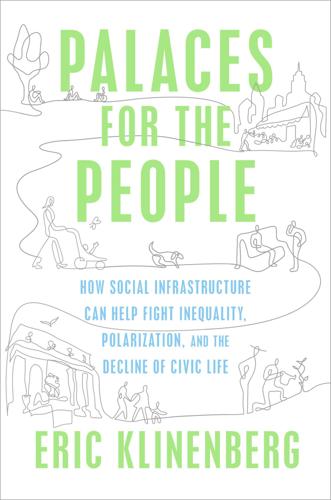
Palaces for the People: How Social Infrastructure Can Help Fight Inequality, Polarization, and the Decline of Civic Life
by
Eric Klinenberg
Published 10 Sep 2018
Board of Education, for instance, a federal judge in Baltimore ruled against the NAACP’s demand that the city integrate its public swimming pools, on grounds that “pools were ‘more sensitive than schools’ because of the visual and physical intimacy that accompanied their use.” The US Court of Appeals for the Fourth Circuit overruled this decision, forcing Baltimore to desegregate all public pools. But the city resisted and didn’t give up its legal challenges until it lost the last one possible, when the US Supreme Court declined to review the case. Baltimore was no outlier. Cities in the North and South responded to the desegregation orders by abandoning public facilities, building new private clubs, or closing down municipal pools altogether. Some cities were more creative. St. Louis reimposed sex segregation, so that black men and white women could never swim together.
…
The local YMCA, however, remained segregated through the 1960s, and opened white-only swimming pools on the condition that the city provide tax exemptions, free water for its pools, and free park use. This secret deal went unchecked until 1970, when news of the arrangement leaked and courts forced the YMCA to end its segregationist practices. In private, however, white families had another way to deal with forced desegregation: they retreated from public spaces and built pools in their own backyards. Between 1950 and 1975, the number of residential in-ground swimming pools in the United States increased from about twenty-five hundred to more than four million. Racism was obviously not the only factor in this building boom, but it played an unmistakably important role in the demise of public social infrastructures that supported collective life.
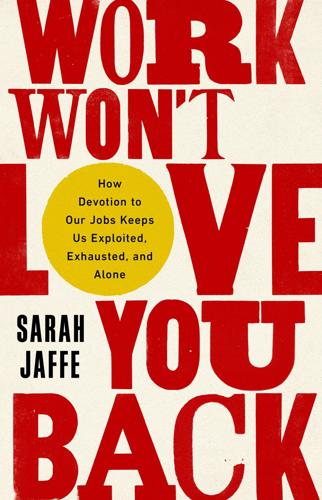
Work Won't Love You Back: How Devotion to Our Jobs Keeps Us Exploited, Exhausted, and Alone
by
Sarah Jaffe
Published 26 Jan 2021
Board of Education decision in 1954. While teachers’ unions broadly supported the school desegregation process, the fallout from the fight largely hit Black educators, many of whom lost jobs when Black schools were closed. Black students might be going to previously all-white schools, but white parents were damned if they were going to have their kids taught by Black teachers. Black teachers, who had gone above and beyond the ill-funded school system in which they had taught, who had marched and organized and fought for desegregation and served as anchors and caretakers for the Black middle class, lost their jobs as payment for all their care.
…
Citron, who had taught in Harlem for nineteen years, was known for “writing an African American history curriculum, inviting students to her home, and using her own money to buy needy children eyeglasses, books, shoes, and food.” 23 In other words, the teachers who were purged were doing what they had been recruited to do: care for the children in their charge, fight for them, put those children before themselves. They built connections with the local families and used their power as a union to make those families’ demands heard. 24 In response to the Red Scare, the Teachers Union went deeper into the community, demanding desegregation, construction of schools and play spaces in Black neighborhoods, and the hiring of Black teachers. This was in spite of spying, police infiltration, and sometimes racialized hate mail—one anti-Semitic hate letter “juxtaposed a loyal and patriotic ‘American mother’ to Godless Jewish Communists.”
…
Militant and surging unions were winning collective bargaining rights, and the hard-charging United Federation of Teachers (UFT), having won the right to represent all of New York City’s teaching force through a strike, wound up clashing with Black community activists. The UFT was focused on the “bread-and-butter” needs of teachers. Meanwhile, frustrated with desegregation efforts implying that Black children were deficient and Black teachers incompetent, Black community organizers were agitating for community control of schools, arguing that it was racism, not Black deficiency, that left Black students underachieving. Teachers who had pulled back from the community found themselves deemed uncaring by activists, who argued that Black communities already had the ability to improve the schools, if officials would just get out of the way. 29 The UFT at the time was designed to make teaching more professional, more like “work” and less like “home.”
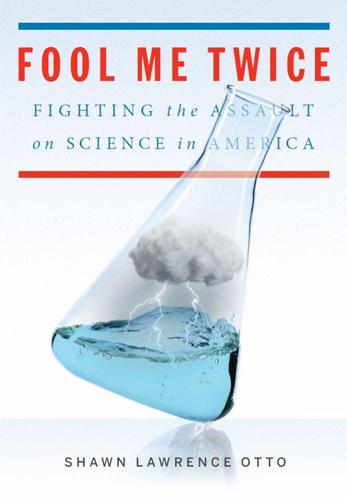
Fool Me Twice: Fighting the Assault on Science in America
by
Shawn Lawrence Otto
Published 10 Oct 2011
Our only option was to plan for an attack on American soil. This knowledge changed American culture and its relationship to science. For example, it has long been the prevailing opinion that American suburbs developed as a result of the increased use of the car, GI Bill—funded home construction, and white flight from desegregated schools after the 1954 Supreme Court decision in Brown v. Board of Education of Topeka. But in reality the trend had started several years before Brown. In 1945, the Bulletin of the Atomic Scientists began advocating for “dispersal,” or “defense through decentralization” as the only realistic defense against nuclear weapons, and the federal government realized this was an important strategic move.
…
SCIENCE CLASS WITHOUT OBJECTIVE TRUTH The 1960s and 1970s were a time of momentous social change, particularly related to civil rights. For the first time, the United States was making a serious effort to educate African American children to the same standard as white students. One of the primary methods employed was school desegregation. This posed complex challenges for teachers, who were tasked with educating more diverse classrooms as black students whose communities had been uprooted first by highway construction and then by busing found themselves thrown into the mix with more advantaged white students. It seemed unrealistic to demand equal performance from students who did not have the same level of socioeconomic support or shared cultural references.
…
See also Evolution Dawkins, Richard, 126–27 Deductive reasoning, 43 Deepwater Horizon oil spill, 250–51, 265 Deficit model of science, 288–90 DeLay, Tom, 14–15 Democracy biology and, 54–55, 90 challenges facing, 33–34 complexity of world and, 6 danger of, 315 freedom and, 250, 252 Jefferson’s argument for, 51–53 knowledge and, 3–4, 90, 219 plurality and, 111 politics and, 87 science and, 55–57, 90, 97, 123, 157, 245–47 Democratic Party, 17, 59–61, 290 Demonstrative knowledge, 50 Denialism, 6, 130, 138, 195, 221–23, 296 Descartes, René, 43–45, 50 Desegregation, 124 Deutsch, George, 16 Diamond, Sara, 110 DNA, 78, 120 Dobson, James, 111 Doppler effect, 68 Douglas, Stephen, 87 Dualism, 43 Dubner, Stephen, 229–31 Duck and Cover (film), 80, 84 Dumbing down of nation, 11–15, 143–45 Dyck, Markus, 194 E Earth, age of, 27–28 Eberle, Francis, 292 Economics climate change and, 223–24 commoditization and, 312–13 ecosystem services and, 258 externalities and, 253 growth of economy and, 256–57 market, 302 in Middle Ages, 25 natural public capital and, 258, 265 opportunity cost and, 257 science and, 187, 255–56 SEEP challenges and, 187 self-interest and, 250, 260 sustainability and, environmental, 258, 261 tragedy of the commons and, 247–51, 268 tyranny on the commons and, 253–55 Ecosystem services, 258, 265 Ecosystem, value on, 259 Education Bloom’s view of, 127–28 cultural studies and, 128–29 desegregation and, 124 inclusiveness and, 126 Jefferson’s view of public, 34, 59 objectivity and, 126–28 science, 124–25, 291–93 sex, 17, 274–76, 279 social constructivism and, 125–26 Ehlers, Vernon, 14–15, 222 Ehrlich, Paul, 256 Einstein, Albert, 61–63, 69–70, 75, 77–78, 114, 119, 141–42 Eisenhower, Dwight D., 82, 90, 97, 314–15 Electromagnetic field health risks, 140–43 Elitism, 91 Endangered Species Act, 20, 192, 195 Energy companies, 197–98, 201, 224, 239 Energy conservation, 240–41 Engagement of science, 8, 293–94 English common law, 39–40 Enlightenment, 46, 112 Environmental problems, 96, 101–2, 252.
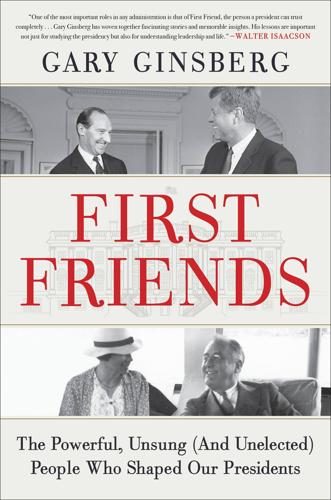
First Friends: The Powerful, Unsung (And Unelected) People Who Shaped Our Presidents
by
Gary Ginsberg
Published 14 Sep 2021
As Clinton grew into adulthood, he realized more and more how culturally at ease he felt with Black people, especially those from the South. Years later, Michael Waldman, Clinton’s chief speechwriter for the last six years of his presidency, recalled flying on Air Force One to Little Rock for the fortieth anniversary of the 1957 desegregation of Little Rock High School. Several of Clinton’s closest Black Arkansan friends were on the flight. As the plane got closer to Little Rock, Waldman recalled, “Clinton visibly relaxed, his drawl deepened, there was more laughter.” At the same time, he also knew as a progressive Southern Democrat that to win elections he had to build a multiracial coalition between Black voters and white working-class voters.
…
With his wife, Shirley, and newborn daughter, Vickee, twenty-five-year-old Jordan came home to Atlanta in 1960 to find a community as racially divided as when he had left eight years before. He soon saw firsthand the intractability of racial injustice in his state. Just three days after graduating from Howard, he was clerking for one of Atlanta’s most prominent civil rights attorneys, Donald Hollowell, known then for successfully litigating many of the cases that desegregated Georgia’s colleges. When Hollowell opened his practice in 1952, he was one of only fifteen practicing Black lawyers in the whole state. That number had swelled, but conditions for Black people who found themselves on the wrong side of the law remained deplorable. As Hollowell’s only legal assistant, Jordan was thrown right into the frenzy and tedium of his office—researching cases, fact-checking citations, talking to witnesses, and driving him to and from his appointments.
…
He persevered because he liked the casework, especially the highly publicized case of two Black students who were denied admission to the University of Georgia because of their race. Jordan found the key piece of evidence—a white woman with the exact same credentials as his clients had been accepted—that tilted the case in favor of the plaintiffs. The university was forced to desegregate, and the day his clients enrolled, a throng of angry white students confronted them. Jordan accompanied one of the Black students—Charlayne Hunter—to the registrar’s office through a “howling mob… just unbounded hatred and fear on open display.” Later, as one of America’s most prominent Black journalists for PBS NewsHour, Charlayne Hunter-Gault would remember Jordan’s “poise in the midst of chaos” as he walked her though a sea of vile racial epithets.

Gang Leader for a Day: A Rogue Sociologist Takes to the Streets
by
Sudhir Venkatesh
Published 13 Aug 2010
J.T. told me he never wanted to run for office, but he was certainly attracted to the new contacts he was gaining through the Black Kings’ political initiatives. He talked endlessly about the preachers, politicians, and businesspeople he’d been meeting. J.T. knew that Chicago’s gangs were politically active in the 1960s and 1970s, pushing for desegregation and housing reform. He told me more than a few times that he was modeling his behavior on those gang leaders’. When I asked for concrete examples of his collaboration with his new allies, he’d vaguely say that “we’re working together for the community” or “we’re just trying to make things right.”
…
Boys & Girls Club grant proposal for meeting on drive-by shooting at midnight basketball at school program at Brass (squatter) Bridgeport Butler, Charlie cabdrivers Caldwell, Booty California Calumet Heights Candy Carla carpenters Carrie car thieves Cartwright, Ms. Catrina Clarisse and essays of funeral of Taneesha incident and on women Census, U.S. Chantelle Charlie Cheetah Cherise Cherry Chicago African-American migration to black communities in desegregation in gang and drug problem in midnight basketball league of Ms. Mae’s move to politics of school teachers’ strike in winter in Chicago, University of Chicago Blackhawks Chicago Bulls Chicago Housing Authority (CHA) black market of Ms. Bailey and Ms. Reemes and Robert Taylor built by in Robert Taylor demolition and rehousing scheduled demolition of Lake Park projects by security of sex exchanged for rent forgiveness Chicago State University Chicago Sun-Times Child and Family Services Department cigarettes Cisneros, Henry civil rights movement Clarisse (prostitute) cleaners cleaning ladies Cleveland, Ohio Cliff (gang leader) Clinton, Bill: and Chicago midnight basketball league and housing project demolition Robert Taylor visit of welfare reform by C-Note (squatter) anger at S.V. of J.T. and S.V.’s study of Taneesha incident and Cobras cocaine Coco Cold Man (Black Kings leader) Columbia University Comaroff, Jean Combs, Leonard (Old Time) community-based organizations (CBOs) Congress, U.S.
…
conservatives cooks crack Black Kings’ deals in dilution of economics of epidemic of extent of use of prostitutes’ use of Creepy crime in Lake Park projects Crustie’s culture of poverty Curly Curtis Daley, Richard J. Daniels, Ms. Dan Ryan Expressway Darryl day care Democratic National Convention () Denny, Ms. desegregation Des Moines, Iowa Disciples domestic violence Doritha drive-by shootings Black Kings’ discussions of by Disciples dropouts drugs Black Kings’ traffic in economy of Dunbar High School DuSable High School Duster, Lenny Easley, Ms. economics, economy: of crack of drugs J.T. and underground economists education Elder, Ms.

The Speech: The Story Behind Dr. Martin Luther King Jr. S Dream
by
Gary Younge
Published 11 Aug 2013
He sent Burke Marshall, the US assistant attorney general, to Alabama to negotiate a settlement. Shuttlesworth, who had been injured after being knocked down by one of the hoses, was in the hospital. Marshall negotiated with King and the local white merchants. For the business community it was primarily a pragmatic decision. They clinched a deal that would bring about the desegregation of lunch counters and the end to demonstrations in the city and planned a press conference to announce it. But this agreement wasn’t without its difficulties. In particular it raised questions about the ability of those who negotiated it to maintain credibility with the people they claimed to be negotiating for.
…
demanded Joseph Rauh, of the Office of Emergency Management, as Randolph rejected every draft he proposed on Roosevelt’s behalf. “What the hell has he got over the president of the United States?” A week before the march was scheduled to take place, Roosevelt blinked, issuing Executive Order 8802, which established a Fair Employment Practices Committee and effectively desegregated the war industries. It was only then that Randolph finally agreed to cancel the march, arguing that its objectives had been reached. While some in the movement condemned him for demobilizing so many, his standing grew as a result of the victory. “Randolph now became, and would remain for almost a decade, the most popular and sought-after black political figure in America,” writes Anderson.
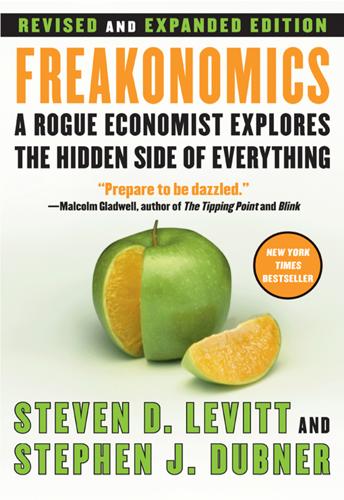
Freakonomics: A Rogue Economist Explores the Hidden Side of Everything
by
Steven D. Levitt
and
Stephen J. Dubner
Published 11 Apr 2005
Perhaps the most heartening gain had been in infant mortality. As late as 1964, a black infant was twice as likely to die as a white infant, often of a cause as basic as diarrhea or pneumonia. With segregated hospitals, many black patients received what amounted to Third World care. But that changed when the federal government ordered the hospitals to be desegregated: within just seven years, the black infant mortality rate had been cut in half. By the 1980s, virtually every facet of life was improving for black Americans, and the progress showed no sign of stopping. Then came crack cocaine. While crack use was hardly a black-only phenomenon, it hit black neighborhoods much harder than most.
…
Still, just about every parent seems to believe that her child will thrive if only he can attend the right school, the one with an appropriate blend of academics, extracurriculars, friendliness, and safety. School choice came early to the Chicago Public School system. That’s because the CPS, like most urban school districts, had a disproportionate number of minority students. Despite the U.S. Supreme Court’s 1954 ruling in Brown v. Board of Education of Topeka, which dictated that schools be desegregated, many black CPS students continued to attend schools that were nearly all-black. So in 1980 the U.S. Department of Justice and the Chicago Board of Education teamed up to try to better integrate the city’s schools. It was decreed that incoming freshmen could apply to virtually any high school in the district.
…
Wade Rogers, Will Rosenthal, Robert Rudolph the Red-Nosed Reindeer (May) Sacerdote, Bruce Sachs, Jeffrey Sailer, Steve Salmon, Felix Salomon Smith Barney Samuelson, Paul Sandman, Peter Satel, Sally Scalia, Antonin Schelling, Thomas Scholastic Aptitude Tests (SATs) schools choice of desegregation of quality of see also students; testing Schwarzenegger, Arnold Seale, Bobby Seinfeld self-esteem self-experimentation self-interest of experts impartial observation vs. truth and Sen, Amartya Senate, U.S. September 11 terrorist attacks sex oral sex education sex scandals Shangri-La Diet Shawn, William sleep Slemrod, Joel Smith, Adam smoking Snyder, Mitch social promotion social science Social Security societal norms sociologists Socrates Soviet Union, collapse of Spears, Britney Splash sports: cheating in drugs in gambling on glamour of incentives in judging of throwing matches and games in Stanford University Center for Advanced Study of Behavioral Sciences Law School state-year interaction stealing white-collar Stetson, John B.
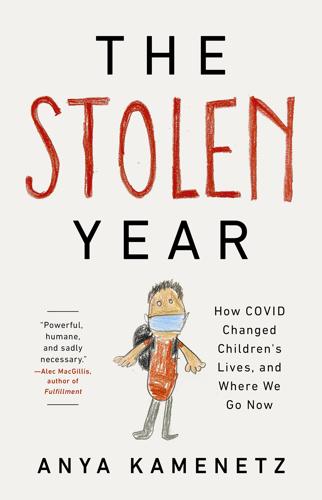
The Stolen Year
by
Anya Kamenetz
Published 23 Aug 2022
Then there are millionaires and billionaires who see K–12 education as another “sector” ripe for disruption with for-profit and online alternatives. In other words, the core constituencies of today’s Republican Party, who are otherwise seemingly so disparate, unite on this one issue. It turns out originally it was Brown v. Board of Education, the Supreme Court decision in 1954 that ordered school desegregation, that brought together these strange bedfellows. Nancy MacLean tells the story in Democracy in Chains, her essential 2017 intellectual history of the US Right. James McGill Buchanan, a University of Chicago–trained economist and converted socialist, seized on southern white segregationist fervor in the 1950s to establish a broad, powerful anti-majoritarian movement.
…
Meaning, no collectively funded infrastructure to provide education as a public good. As Jack Schneider and Jennifer Berkshire argue in their 2020 book A Wolf at the Schoolhouse Door: The Dismantling of Public Education and the Future of School, the anti–public school political movement has grown in strength, taking on new guises, even as the desegregation efforts of the 1960s and 1970s recede. The solidarity established by the common school model of the northern colonies, where local families took up a collection to hire a schoolmaster, has eroded, and an entire political party favors the model that held sway in the southern colonies: children educated privately at home, by churches or charities, or however they can get it.
…
The NAACP resettled her with a white couple who were Quaker activists and academics across the country in California. There she finished high school, went on to college and graduate school, and became a journalist and author. The fall after she first entered school, in August 1958, the Arkansas state legislature passed four laws designed to block desegregation by closing Little Rock’s four public high schools, Black and white, entirely. It became known as the Lost Year. The Lost Year was an example of what Heather McGhee calls in her 2020 book, The Sum of Us, “draining the public pool.” Her book describes how white Americans time and again will allow the destruction of a public good rather than share that public good with nonwhites.

The Color of Money: Black Banks and the Racial Wealth Gap
by
Mehrsa Baradaran
Published 14 Sep 2017
Romney had said that to “solve problems of the ‘real city,’ only metropolitan-wide solutions will do.” Florence Wagman Roisman, “Affirmatively Furthering Fair Housing in Regional Housing Markets: The Baltimore Public Housing Desegregation Litigation,” Wake Forest Law Review 42 (2007): 333, 387. 24. Christopher Bonastia, Knocking on the Door: The Federal Government’s Attempt to Desegregate the Suburbs (Princeton, NJ: Princeton University Press, 2006), 106. 25. Lamb, Housing Segregation, 82-85. 26. Hannah-Jones, “Living Apart.” 27. Kotlowski, Nixon’s Civil Rights, 56. 28. Ibid. 29. Hannah-Jones, “Living Apart.” 30.
…
Black banking became a symbol of resistance, black power, defiant self-determination, and active resistance to white racism.6 Black economic power and autonomy had a natural appeal in the face of segregation and racism, but also constitute a political diversion and a proxy for more meaningful reform. President Nixon threw his weight behind black banking so that he could oppose controversial desegregation programs and woo white moderates and conservatives unwilling to push any further on racial reforms. Presidential candidate Nixon’s civil rights platform was centered on “black capitalism." He urged “more black ownership, black pride . . . and yes, black power."7 The deceptively vague formula of black capitalism was a neutralizing racial detente amid an unprecedented and violent black insurgency and a hostile white backlash.
…
After the breakthrough success of the 1956 Montgomery bus boycott, King was launched onto the national stage. He immediately wrote a formative article outlining his goals and a road map for the movement called “We Are Still Walking." King expressed his ambitious agenda, which he said extended “far beyond the desegregation of the buses," but was “a long-range constructive program." He listed six of the group’s top goals for the future, and the top two were to organize banks: 1. To establish the first bank in Montgomery to be owned and operated by Negroes. We have found that in the present situation many Negroes who are active in the protest have been unable to secure loans from the existing banks. 2.
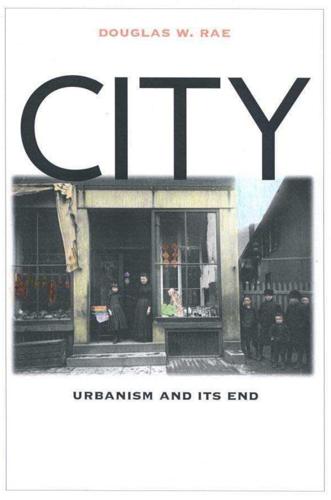
City: Urbanism and Its End
by
Douglas W. Rae
Published 15 Jan 2003
The Census of Manufacturing provides most of the jobs data. Inflation is calculated using the BLS urban wage deflator. 12. See, among others, George C. Galster, “Polarization, Place, and Race,” North Carolina Law Review 71, no. 5 ( June 1993), or John F. Cain, “The Influence of Race and Income on Racial Segregation and Housing Policy,” in Housing Desegregation and Federal Policy, edited by John M. Goering (Chapel Hill: University of North Carolina Press, 1986). The classic study of race in New Haven predates the arrival of this family, as well as most other black households. See Warner, New Haven Negroes. 13. I have relied heavily here on one exceptional collection of work on the history and consequences of zoning in the United States, namely, Haar and Kayden, Zoning and the American Dream. 14.
…
Burnham, Daniel H., and Edward H. Bennett. Plan of Chicago (1909). New York: Princeton Architectural Press, 1993. Cahn, Edgar, and Jean Cahn. “The War on Poverty: A Civilian Perspective.” Yale Law Journal 73, no. 8 (1964). Cain, John F. “The Influence of Race and Income on Racial Segregation and Housing Policy.” In Housing Desegregation and Federal Policy, edited by John M. Goering, 99–118. Chapel Hill: University of North Carolina Press, 1986. Calder, Isabel MacBeath. The New Haven Colony. New Haven: Yale University Press, 1962. Calthorpe, Peter. The New American Metropolis: Ecology, Community, and the American Dream. New York: Princeton Architectural Press, 1986.
…
Hayward, Clarissa Ryle. De-Facing Power. Cambridge: Cambridge University Press, 2000 Hegel, Richard. Carriages from New Haven: New Haven’s Nineteenth-Century Carriage Industry. Hamden, Conn.: Archon, 1974. Helper, Rose. “Success and Resistance Factors in the Maintenance of Racially Mixed Neighborhoods.” In Housing Desegregation and Federal Policy, edited by John M. Goering, 170–94. Chapel Hill: University of North Carolina Press, 1986. Herman, Barry E. “Max Adler, 1841–1916.” Jews in New Haven 7 (1997): 315 –16. Hill, Everett G. A Modern History of New Haven and Eastern New Haven County. New York: S. J. Clarke, 1918.
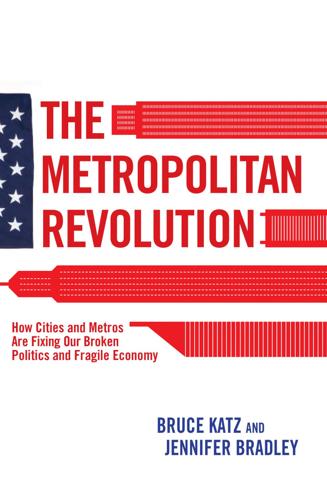
The Metropolitan Revolution: How Cities and Metros Are Fixing Our Broken Politics and Fragile Economy
by
Bruce Katz
and
Jennifer Bradley
Published 10 Jun 2013
During the 1970s, the share would more than double, and minorities, mostly African Americans and Hispanics, would make up a quarter of the city’s population.5 In 1969 a federal court found that the Denver School Board had a deliberate policy of concentrating black students in a few schools, going so far as to deploy twenty-eight of the school district’s twenty-nine portable classrooms at schools in just one neighborhood “to contain an overflow of black students.”6 The court insisted on desegregation, and the school board implemented an unpopular plan to bus students to achieve a different racial mix in schools.7 For four years, the city was roiled by busing protests, including the bombing of one-third of the school bus fleet in a parking lot, sporadic outbreaks of violence, and an antibusing boycott of Denver schools led by the school board’s president.8 The rapid population growth of the suburbs during this period, and particularly the movement of middle- and upperclass whites to these communities, made Denver officials anxious that the city would become, as one planning department study put it, “the ghetto of the metropolitan area, containing in its population primarily the poor and uneducated and a few of the very wealthy.”9 In 1970 the city of Denver was home to 47 percent of the region’s population but 95 percent of the region’s black population and 70 percent of its Hispanic population.10 Denver city leaders embarked on an effort to bring the suburban population into Denver by expanding the city and county’s boundaries through the process of annexation (Denver is a combined city and county 03-2151-2 ch3.indd 44 5/20/13 6:50 PM DENVER: THE FOUR VOTES 45 under Colorado law).
…
As the annexed territory developed, the department stores, hardware stores, and strip malls within it would contribute to a stronger bottom line for the city. But many people living in the unincorporated territories, happy with their school systems in Arapahoe County, or Jefferson County, or Cherry Creek, did not want any part of Denver’s desegregation battles and busing schemes. And suburban towns like Aurora and Greenwood Village also wanted to be able to grow by taking a share of the unincorporated territory between their borders and Denver’s—why should the city reap all the benefits of new development? Between 1969 and 1974, a flurry of annexations and incorporations ensued, which hardened the boundaries and soured the politics of Greater Denver.
…
—the political appointees and career executives concerned do not seem themselves as involved with, much less responsible for the urban consequences of their programs and policies. They are, to their minds, simply building highways, guaranteeing mortgages, advancing agriculture, or whatever. No one has made clear to them they are simultaneously redistributing employment opportunities, segregating or desegregating neighborhoods, depopulating the countryside and filling up the slums, etc: all these things as second and third consequences of nominally unrelated programs.2 Moynihan was describing the way that federal and state governments have organized themselves as a collection of balkanized executive agencies overseen by separate legislative committees.

Amazing Stories of the Space Age
by
Rod Pyle
Published 21 Dec 2016
Cited in part from original publication and an article by Dwayne Day, “Theft, the Sincerest Form of Flattery,” Space Review, April 16, 2012. 6. Ibid. 7. Ibid. 8. Robert Windrem, “How the Soviets Stole a Space Shuttle,” NBC News Space Report, November 4, 1997. 9. Ibid. 10. Ibid. CHAPTER 22: MAJOR MATT MASON: A MAN FOR THE NEW SPACE AGE 1. NASA did make institutional desegregation a priority by the mid-1960s, however. “Chapter IV: The Marshall Reconstruction,” NASA, http://history.msfc.nasa.gov/book/chptfour.pdf (accessed September 21, 2016). 2. Henry Samuel, “European Space Agency Unveils ‘Lunar Village’ Plans as Stepping Stone to Mars,” Telegraph, January 15, 2016, http://www.telegraph.co.uk/news/worldnews/europe/france/12102673/European-Space-Agency-unveils-lunar-village-plans-as-stepping-stone-to-Mars.html. 3.
…
See rocket fuels Curiosity (Mars rover), 100 DARPA, 61, 167 Das Marsprojekt [The Mars Project] (von Braun), 35–36, 92, 235–36, 309n8 mission plan described in, 38, 43–51, 52–53, 305n14 after arrival on Mars, 48–49 Mars ferries, 45–48 use of large gliders while on Mars, 36, 38, 39, 41 Davy Crockett M-29 nuclear howitzer, 32, 275 Deep Space Industries, 295 Defense Research and Engineering, 136 Delta rockets, 252, 294 Department of Defense, 133, 140, 165 desegregation at NASA, 322n1 Destination Moon (movie), 56 Devon Island (aka “Mars on Earth”), 8, 52–53 Directed Gas Weapon for Close-In Fighting, 271, 273 “Directorate of R&D, Future Weapons Office,” 266–73 Discovery (space shuttle), 254, 256–57, 258 Disney, Walt, 50, 51, 86–87, 297, 309n13 Disneyland (TV show), 86 Doolittle raid on Tokyo, psychological impact of, 16, 301n9 “Dorian” (telescopic camera), 136, 139, 143–44 Dornberger, Walter, 158, 170 Dragon capsule, 212, 322n2 Dream Chase mini-shuttle, 78–79 D-ring on the Skylab, 245–46 “dry workshop,” 235 Duke, Charlie, 151–52 Dunne, Dick, 153 Dyna-Soar, Project (X-20 spaceplane), 64, 112, 157–68, 170, 177, 179, 182, 250, 285 compared to Spiral, 286 designed so that orbiter could be reused, 249 drawings of, 161, 163 end of, 130, 131, 166, 167, 251 mission changed from glider to orbital craft, 164–65, 315n5 possible use of weapons on, 265 renamed the X-20, 110, 164–65 as replacement for A-12/SR-71 spy plane, 166 rescue plans for, 214–15 specifications for, 158, 160, 162 X-15 design used for, 110, 166, 179 Dyson, Freeman, 59–60, 62, 64, 66 Early Manned Planetary-Interplanetary Roundtrip Expeditions (EMPIRE).
…
See National Advisory Committee on Aeronautics nanosats, 295 NASA, 34, 74–77, 87–88, 167, 191, 310n4 abandoning Apollo program for space shuttles, 280, 293. See also Apollo program; space shuttles abort capabilities design, 75–76, 148, 161, 255, 261 budget comparisons (1958 and 1962), 310n3 definition of boundary of space, 315n1 desegregation at, 322n1 difficulties in designing reusable vehicles, 249–50, 307n3 formation as civilian agency, 34, 79, 109–110, 160, 265, 280 funding of private enterprise projects, 296 goals for focusing on moon landing, 114 post-Apollo, 250–51 setting Mars as a goal, 65–66 “Grand Tour” of planets, studying concept of a, 93–94.

Rage Inside the Machine: The Prejudice of Algorithms, and How to Stop the Internet Making Bigots of Us All
by
Robert Elliott Smith
Published 26 Jun 2019
In Rage Inside the Machine, Robert Elliott Smith accomplishes what few people could attempt: to humanize the discourse on artificial intelligence. He tears the topic of AI from the grasp of the techno-elite and puts it into all our hands. Robert the computer science professor lays bare exactly what the algorithms are doing, while Robert the boy who grew up in newly desegregated Alabama lays bare the biases – scientific and social – that risk being hard-coded into our culture all over again (mostly, without even the programmers realizing it). The mass adoption of AI is happening, right now. The next decade of design choices will shape the next century of social consequences.
…
Four months later, Birmingham’s 16th Street Baptist Church, the rallying point for the children’s protest that led to this agreement, was bombed, injuring twenty-two worshippers, and killing four black schoolgirls. But by the time I reached elementary school, the protests were largely over; the civil rights movement was ostensibly victorious, at least as a matter of law. In response to legally mandated desegregation orders, black kids from a poor area of the Birmingham outskirts were bussed to the all-white elementary school I attended, but, while the law appeared to have settled the race issue, my school remained a place of obvious division and conflict. At the time, I was a bullied, nerdy kid, and given the racial prejudice I’d grown up around, I was afraid of the new kids from Airport Heights, a slum at the end of Birmingham’s runway.
…
For instance, the Pioneer Fund was established in 1937 by, among others, eugenicist and Nazi advisor Harry Laughlin, to support advocacy and research that promoted the cause of ‘race betterment’. The Fund’s work continues to this day, although their banner has been modified to read ‘human race betterment’. Through the years, the Fund has supported repatriating African-Americans to Africa, opposed the civil rights movement, opposed desegregation bussing, and supported anti-immigration efforts, as well as financing academic publishing and research in anthropology and sociology, most of which is related to the issue of race. Perhaps the best-known work based on Pioneer Fund supported research was the 1994 book The Bell Curve: Intelligence and Class Structure in American Life, a book that has received renewed endorsement with the rise of the alt-right movement, and in turn revived Spearman’s century-old ideas of the g factor.
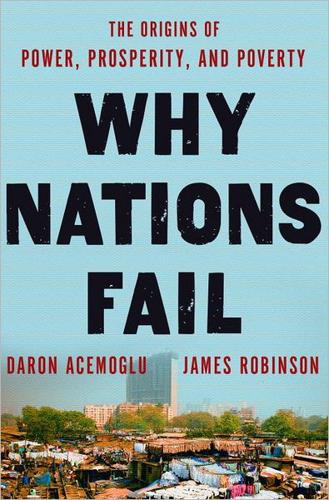
Why Nations Fail: The Origins of Power, Prosperity, and Poverty
by
Daron Acemoglu
and
James Robinson
Published 20 Mar 2012
The rulings of the Supreme Court meant that southern educational facilities had to be desegregated, including the University of Mississippi in Oxford. In 1962, after a long legal battle, federal courts ruled that James Meredith, a young black air force veteran, had to be admitted to “Ole Miss.” Opposition to the implementation of this ruling was orchestrated by the so-called Citizens’ Councils, the first of which had been formed in Indianola, Mississippi, in 1954 to fight desegregation of the South. State governor Ross Barnett publicly rejected the court-ordered desegregation on television on September 13, announcing that state universities would close before they agreed to be desegregated.
…
State governor Ross Barnett publicly rejected the court-ordered desegregation on television on September 13, announcing that state universities would close before they agreed to be desegregated. Finally, after much negotiation between Barnett and President John Kennedy and Attorney General Robert Kennedy in Washington, the federal government intervened forcibly to implement this ruling. A day was set when U.S. marshals would bring Meredith to Oxford. In anticipation, white supremacists began to organize. On September 30, the day before Meredith was due to appear, U.S. marshals entered the university campus and surrounded the main administration building. A crowd of about 2,500 came to protest, and soon a riot broke out. The marshals used tear gas to disperse the rioters, but soon came under fire.
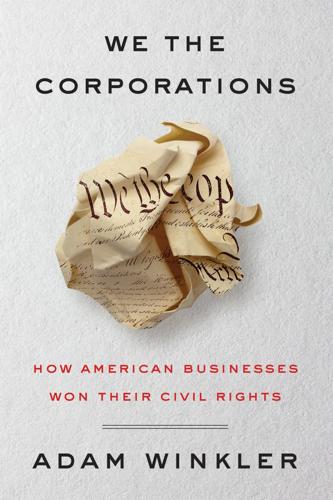
We the Corporations: How American Businesses Won Their Civil Rights
by
Adam Winkler
Published 27 Feb 2018
Hamilton labeled the Beards’ story the “conspiracy theory” of the Fourteenth Amendment.27 In later years, however, other historians reexamined the evidence and found much to disagree with in the Beards’ analysis. No one looked more closely than Howard Jay Graham, a deaf librarian who became the nation’s leading expert on the Fourteenth Amendment. In the 1950s, Graham played an influential role as an advisor to the NAACP in the drafting of its briefs in Brown v. Board of Education, the school desegregation case. Back in 1938, however, Graham published a two-part series of articles in the Yale Law Journal refuting the Beards’ charges. The Beards, Graham argued, badly misconstrued Bingham’s speeches and were too easily swayed by Conkling’s misleading argument in San Mateo. Graham’s reconstruction of the history of the Fourteenth Amendment’s drafting led him to conclude that the Joint Committee had not engaged in a secret, purposeful effort to mislead the public and protect corporations.28 Conkling was another story altogether.
…
“This case cannot be properly considered without being viewed against the background and setting in which it arose,” Marshall and Carter’s brief argued. The NAACP’s victory in Brown required racial integration of schools and, in response, “Alabama officials have committed themselves to a course of persecution and intimidation of all who seek to implement desegregation.” “The truth is that Alabama seeks, in these proceedings, to silence petitioner and its members” and “eradicate opposition” to Jim Crow. Rather than viewing the NAACP as a corporation, Marshall and Carter saw the NAACP as one of the political dissenters Justice Harlan Fiske Stone had worried about in his Carolene Products footnote
…
”6 Yet only after Lewis Powell left the Philip Morris board and joined the Supreme Court would he come to be called “the most powerful man in America.” He was one of four justices named by President Richard Nixon, who set out to dismantle the liberal Warren court of the 1950s and 1960s. Under the chief justiceship of Earl Warren, the court had issued a reliable stream of liberal rulings desegregating schools, expanding the rights of criminal defendants, guaranteeing sexual privacy, and giving private citizens wide leeway to bring antitrust suits against business. Nixon’s court, by contrast, would end busing, limit the scope of civil rights laws, and curtail securities fraud and antitrust suits.
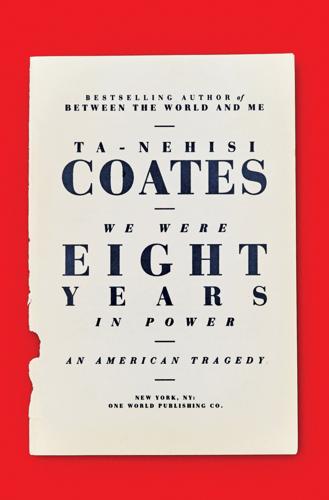
We Were Eight Years in Power: An American Tragedy
by
Ta-Nehisi Coates
Published 2 Oct 2017
They’ve seen themselves bandied about as playthings in the presidential campaigns of Ronald Reagan (with his 1980 invocation of “states’ rights” in Mississippi), George Bush (Willie Horton), Bill Clinton (Sister Souljah), and George W. Bush (McCain’s fabled black love child). They’ve seen the utter failures of school busing and housing desegregation, as well as the horrors of Katrina. The result is a broad distrust of government as the primary tool for black progress. In May 2004, just one day before Cosby’s Pound Cake speech, The New York Times visited Louisville, Kentucky, once ground zero in the fight to integrate schools. But the Times found that sides had switched, and that black parents were more interested in educational progress than in racial parity.
…
I talked about how I’d read the book in one sitting and the challenge I imagined of crafting a singular essay, in the same fashion, meant to be read in a few hours but to haunt for years. I told him we were in an extraordinary moment—the era of a black president and Black Lives Matter—much like Baldwin had written amid the fight for desegregation. Here he offered this admonition—“The road is littered with knockoffs of The Fire Next Time.” But he still encouraged me to try. To invoke the name James Baldwin, these days, is to invoke the name of both a prophet and a God. More than his actual work, Baldwin, himself, has been beatified. That is why young writers descend on his long-abandoned house, like pilgrims into the Holy Land.
…
When David Duke, a former grand wizard of the Ku Klux Klan, shocked the country in 1990 by almost winning the Republican primary for one of Louisiana’s seats in the U.S. Senate, the apologists came out once again. They elided the obvious—that Duke had appealed to the base, racist instincts of a state whose schools are, at this very moment, still desegregating—and instead decided that something else was afoot. “There is a tremendous amount of anger and frustration among working-class whites, particularly where there is an economic downturn,” a researcher told the Los Angeles Times. “These people feel left out; they feel government is not responsive to them.”
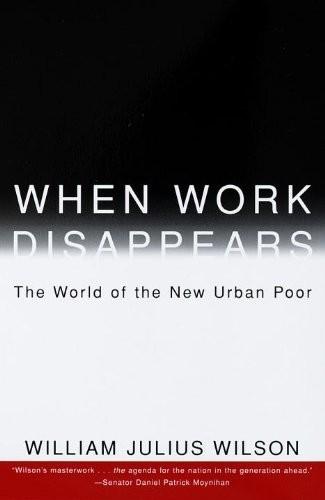
When Work Disappears: The World of the New Urban Poor
by
William Julius Wilson
Published 1 Jan 1996
In Dade County, there is a tendency for the black Cubans, Dominicans, Puerto Ricans, and Panamanians to define themselves by their language and culture and not by the color of their skin. Indeed, largely because of the willingness of Hispanic whites and Hispanic blacks to live together and to mix with Haitians and other Caribbean blacks in neighborhoods relatively free of racial tension, Dade County is experiencing the most rapid desegregation of housing in the nation. By contrast, native-born, English-speaking African-Americans continue to be the most segregated group in Miami. They are concentrated in neighborhoods characterized by high levels of joblessness and marred by pockets of poverty in the northeast section of Dade County.
…
Strategies representing either equality of individual opportunity or affirmative action are not designed to address the important problem of racial segregation. As demonstrated in Part 1 of this discussion, living in segregated ghettos creates barriers to employment and adequate employment preparation. Accordingly, the reduction of racial segregation would surely improve the job prospects of African-Americans. However, “a federal policy of rapid desegregation in housing is a political and practical impossibility.” As long as there are areas to which whites can retreat, it will be difficult to reduce the overall level of segregation. Blacks move in, whites move out. And this process can be surprisingly rapid, as we have seen in neighborhoods like Greater Grand Crossing in Chicago (see Chapter 2).
…
Noel Salinger of the Harris School of Public Policy Studies, University of Chicago, helped to shape some of the views I express here on affirmative action. 46 the long-term intergenerational effects of having one’s life choices limited by race: Heckman (1995). 47 However, “a federal policy of rapid desegregation”: Jargowsky (1994), p. 310. 48 The gains, over a period of decades, could be substantial: Jargowsky (1994). 49 “But the experiment is being closely watched”: New York Times (1994). 50 quotation from Vivian Henderson, Henderson (1975), p. 54. 51 quotation from Joseph A. Califano: Califano (1988), p. 29.
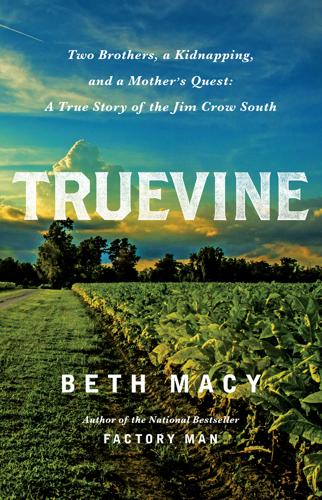
Truevine: Two Brothers, a Kidnapping, and a Mother's Quest: A True Story of the Jim Crow South
by
Beth Macy
Published 17 Oct 2016
It was Byrd and his minions who would go on to godfather Virginia’s “massive resistance” scheme to protest the Supreme Court’s 1954 Brown v. Board of Education decision. They forged new state laws and policies in defiance of the decision, and many Virginia schools were closed in an attempt to block desegregation. Austin was no champion of civil rights, according to his grandson, Robert M. Brown, a lawyer in Newport News, Virginia, who writes crime fiction on the side. Brown preferred his great-grandfather Hoge to his grandfather Austin, who seemed to live under the elder man’s shadow. Wilbur Austin “lived rent-free, no utilities or anything, in this giant house owned by his father-in-law,” Brown said, along with other members of the extended family.
…
“In my opinion, three persons in Roanoke who have been pushed around too much are the real estate owner, the taxpayer, and the man who is trying to operate a business.” That same week, Johnny Cash performed at the Roanoke Fairgrounds, where the Muse brothers had once played. His hit that year was, fittingly, a train song—“Orange Blossom Special.” And the U.S. Office of Education told the Roanoke school superintendent that his plan to desegregate the city’s schools—eleven years after the Brown v. Board of Education decision—had finally been approved. If Boswell had been the neighborhood heavy, then Wilbur Austin was his antidote, especially once he’d joined forces with Houp in the late 1930s. “Lawyer Austin was very well known among blacks,” Sarah said.
…
(The North American Carnival Museum & Archives) Roanoke judge J. Lindsay Almond presided paternalistically over the Muse brothers’ case in the late 1930s and 1940s at the urging of their mother’s attorney, Wilbur Austin Jr. Later, as governor of Virginia from 1958 to 1962, he was the chief defender of massive resistance, the state’s official refusal to desegregate schools in the wake of the U.S. Supreme Court’s Brown v. Board of Education. (Courtesy of The Library of Virginia) Jordan’s Alley natives Madaline Daniels and Sarah Woods Showalter (right) recalled the neighborhood slumlords who bullied tenants. Showalter’s adopted father, John Houp, was a store owner, bail bondsman, and assistant to Roanoke lawyer Wilbur Austin Jr., and he helped Austin manage the Muses’ extended legal case.

Stuck: How the Privileged and the Propertied Broke the Engine of American Opportunity
by
Yoni Appelbaum
Published 17 Feb 2025
Jews arrived in the 1940s, setting off a massive wave of white flight. By the 1960s, according to one estimate, 80 percent of the neighborhood was Jewish—complete with synagogues, butchers, and delicatessens. That same decade, Black families began to arrive, following Supreme Court rulings striking down racial covenants and desegregating the schools. Realtors used blockbusting tactics in nearby neighborhoods to precipitate racial panic, but local civil rights activists were determined to show that integration could work. They banded together into a group dubbed Neighbors Inc. “You shouldn’t have to tell a Jew what is wrong with ghettos,” Marvin Caplan, the driving force behind the group, wrote in The Atlantic.
…
They gravitated toward newer sectors—aerospace, home appliances, automobiles—whose growth was turbocharged by the influx of workers. As Americans moved, the economy boomed. And then, right as mobility seemed to achieve its greatest triumphs, the backlash commenced in earnest. * * * The first source of resistance to mobility was opposition to desegregation. Flint’s experience was in some ways extreme, but it stood in for a broader pattern. All over the country, middle-class white families moved out of their rented apartments in the city and into single-family homes in the suburbs. Their new neighborhoods were typically residential monocultures, maintained by the zoning rules and restrictive covenants demanded by government lenders.
…
GO TO NOTE REFERENCE IN TEXT Steward wrote his racially restrictive deeds: “Our Letter Bag—a Law Question,” Real Estate Record and Builder’s Guide, Sept. 13, 1890, 336; William Austen Carney, Real Estate Business Self-Taught (Los Angeles: W. A. Carney, 1906), 63. GO TO NOTE REFERENCE IN TEXT As time went on: Karen Tumulty and Alice Crites, “LBJ Fought a Quiet Battle to Desegregate Housing—His Own,” Washington Post, Jan. 5, 2015. GO TO NOTE REFERENCE IN TEXT These covenants might best: Cass R. Sunstein, “Law’s Expressive Function,” Good Society 9, no. 2 (1999): 55–61. GO TO NOTE REFERENCE IN TEXT Hailing it as a “progressive step”: “Tilts on West Measure,” Baltimore Sun, Sept. 27, 1910, 16.

Progress: Ten Reasons to Look Forward to the Future
by
Johan Norberg
Published 31 Aug 2016
Macon County, Georgia, took the price for absurdity by seriously debating a proposal that the country maintain two separate sets of public roads, one for each race, and rejecting the idea only because of the prohibitive cost.11 A few steps had already been taken by the government. President Truman had desegregated the armed forces and ended discrimination in federal employment. In 1954 the Supreme Court desegregated public schools, and when the Arkansas Governor called out the National Guard to stop Little Rock Central High School from accepting nine black students, President Eisenhower sent federal troops to the high school to protect the students. But the major steps towards racial equality were taken by the African Americans’ own civil rights movement.
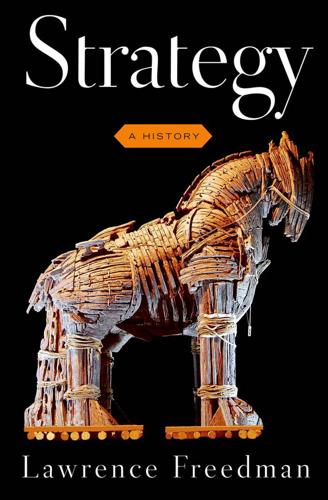
Strategy: A History
by
Lawrence Freedman
Published 31 Oct 2013
The movement spread through a network of churches and campuses.34 In May the first “freedom rides” intended to desegregate bus terminals across the South left Washington, DC. The tactic fit in naturally with the direct action philosophy of King and Rustin, and they had little difficulty embracing it as a new stage in the campaign. By this time the white establishment was becoming more subtle in their tactics. Rustin may have been right that transport was a natural target, but following the Supreme Court ruling cities did not put up much resistance to desegregating buses. Voter registration, the other major push, was the best way to get real political power for blacks over the long term, but it was a slow process, especially when local officials felt able to interpret the law to keep out black voters.
…
Enthused by the febrile radical, intellectual atmosphere of late 1930s New York, he joined the Young Communist League until he realized that it had no special commitment to racial justice. In 1941 he became involved with Philip Randolph, a leading black campaigner close to the labor movement. Randolph had picked up on how the early mobilization for war increased the economic importance of black workers. He proposed a march of ten thousand people on Washington demanding desegregation of the armed forces and an end to racial discrimination in the war industries.18 The march was canceled when President Roosevelt signed the Fair Employment Act which banned discrimination in the war industry, though not the armed forces. Rustin thought Randolph should have held out for more concessions, and went off to work for Muste.
…
In the case of Birmingham, this was achieved as much by sustained economic pressure on the city center as by the excesses of the local police. The two combined to produce a dramatic effect. Again to quote Rustin, “Businessmen and chambers of commerce across the South dreaded the cameras.”39 By causing protracted disorder, the hope was that business leaders in Birmingham would be persuaded to accept that desegregation and hiring more blacks was the price of economic survival. A further objective was to shift the political calculus of the Kennedy administration in favor of a civil rights bill. The theater of conflict was the city center, a relatively compact space that could be flooded with protestors unless the authorities found a way to stop them.
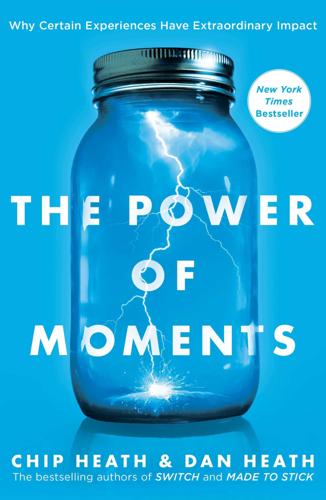
The Power of Moments: Why Certain Experiences Have Extraordinary Impact
by
Chip Heath
and
Dan Heath
Published 2 Oct 2017
Nash said, “Mayor West, do you feel that it’s wrong to discriminate against a person solely on the basis of his race or color?” West agreed it was wrong. Then, Nash continued, shouldn’t lunch counters be desegregated? “Yes,” Mayor West admitted. Many in the white community were inflamed by the mayor’s response. Nevertheless, three weeks later, the lunch counters reversed their discriminatory policies, and for the first time, black customers were served alongside whites. The desegregation of the lunch counters in Nashville was one of the first big successes of the civil rights movement. It was a victory built on courage—the courage of a group of students who were willing to face humiliation, injury, and incarceration to protest immoral treatment.
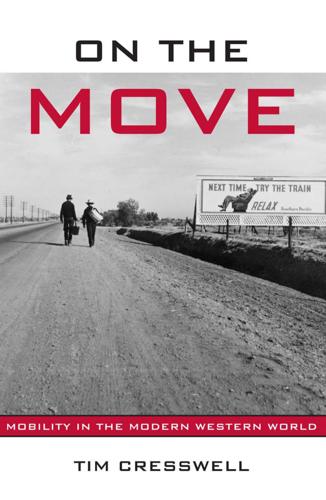
On the Move: Mobility in the Modern Western World
by
Timothy Cresswell
Published 21 May 2006
Ford, The Legal Geographies Reader: Law, Power, and Space (Oxford: Blackwell Publishers, 2001); Nick Blomley, Law, Space and the Geographies of Power (New York: Guilford, 1994); David Delaney, “The Boundaries of Responsibility: Interpretations of RT52565_C011.indd 288 3/7/06 9:01:56 PM Notes • 289 31. 32. 33. 34. 35. 36. 37. 38. 39. 40. 41. 42. 43. 44. 45. 46. 47. Geography in School Desegregation Cases,” in The Legal Geographies Reader, ed. Nicholas K. Blomley, David Delaney, and Richard T. Ford (Oxford: Blackwell, 2001), 54–68; David Delaney, Law and Nature (Cambridge: Cambridge University Press, 2003); David Delaney, Race, Place and the Law (Austin: University of Texas Press, 1998). For a full account of these, see Tim Cresswell, The Tramp in America (London: Reaktion, 2001).
…
Isin, Being Political: Genealogies of Citizenship (Minneapolis: University of Minnesota Press, 2002); Engin F. Isin and Patricia K. Wood, Citizenship and Identity, Politics and Culture (London: Sage, 1999). Isin, Being Political: Genealogies of Citizenship, 3. Ibid., 4. For an account of legal rights, see Delaney, “The Boundaries of Responsibility: Interpretations of Geography in School Desegregation Cases.” Chafee, Three Human Rights in the Constitution of 1787. Karl Marx, “On the Jewish Question,” in The Marx-Engels Reader, ed. Robert C Tuckner (New York: Norton, 1978), 26–52, 35. Ibid., 43. Duncan Kennedy, “The Critique of Rights in Critical Legal Studies,” in Left Legalism/Left Critique, ed.
…
Berkeley: University of California Press, 1984. Deben, Leon. “Public Space and the Homeless in Amsterdam.” In Amsterdam Human Capital, edited by Sako Musterd and Willem Salet, 229–46. Amsterdam: Amsterdam University Press, 2003. Delaney, David. “The Boundaries of Responsibility: Interpretations of Geography in School Desegregation Cases.” In The Legal Geographies Reader, edited by Nicholas K. Blomley, David Delaney and Richard T. Ford, 54–68. Oxford: Blackwell, 2001. ————. Law and Nature. Cambridge, U.K.; New York: Cambridge University Press, 2003. ————. “Laws of Motion and Immobilization: Bodies, Figures and the Politics of Mobility.”
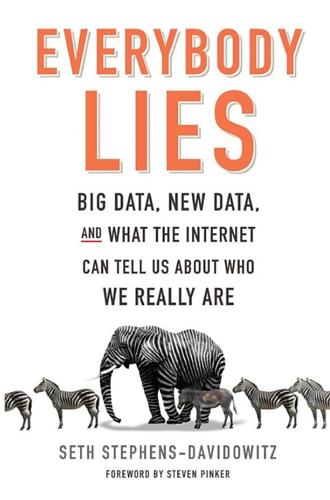
Everybody Lies: Big Data, New Data, and What the Internet Can Tell Us About Who We Really Are
by
Seth Stephens-Davidowitz
Published 8 May 2017
If this were the case, the chances that two Americans on a given news website have opposing political views would be roughly 50 percent. The internet would be perfectly desegregated. Liberals and conservatives would perfectly mix. So what does the data tell us? In the United States, according to Gentzkow and Shapiro, the chances that two people visiting the same news site have different political views is about 45 percent. In other words, the internet is far closer to perfect desegregation than perfect segregation. Liberals and conservatives are “meeting” each other on the web all the time. What really puts the lack of segregation on the internet in perspective is comparing it to segregation in other parts of our lives.
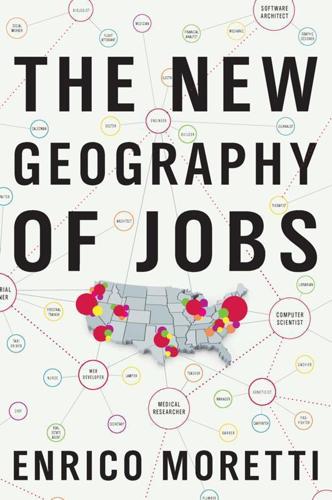
The New Geography of Jobs
by
Enrico Moretti
Published 21 May 2012
Menlo Park had many low-income families in 1969, but today most of its new residents have a college degree or a master’s degree and a middle- to upper-class income. Geographically, American workers are increasingly sorting along educational lines. At the same time that American communities are desegregating racially, they are becoming more segregated in terms of schooling and earnings. Certainly any country has communities with more or less educated residents. But today the difference among communities in the United States is bigger than it has been in a century. The divergence in educational levels is causing an equally large divergence in labor productivity and therefore salaries.
…
Gains in the share of college graduates since 1980 Evidence indicates that American cities are more racially integrated today than at any time in the past century, a trend that has been accelerating in the past two decades. In 2010, for example, there were virtually no all-white neighborhoods, and the number of predominantly black neighborhoods has plummeted. It is somewhat ironic that at the very moment that our neighborhoods were desegregating racially, our country was segregating educationally. This has tremendous economic implications, but also social and political ones. A country that is made up of regions that differ drastically from one another will end up culturally and politically balkanized. Moreover, the concentration of large numbers of poorly educated individuals in certain communities will magnify and exacerbate all other socioeconomic differences.
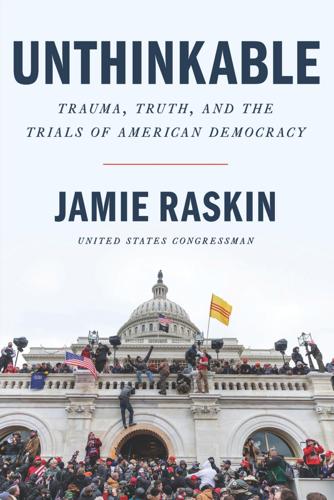
Unthinkable: Trauma, Truth, and the Trials of American Democracy
by
Jamie Raskin
Published 4 Jan 2022
To which Tommy replied: “You mean they let him back into jail.” In seventh grade, there was an arduous independent research paper requirement for kids in Tommy’s magnet program. They had been studying the history of segregation and desegregation, so Tommy, who was at the time slightly obsessed with college fraternities, chose to write an original paper about the response of fraternities and sororities at the University of Maryland to the desegregation of the college and the campus in the 1950s. His research involved interviews with graduates from the period and a scrupulous review of old issues of the Diamondback, the college’s student newspaper, and Terrapin, its yearbook.
…
Michael “Mike” Miller, the president of the Maryland State Senate and the longest-serving state senate president both in Maryland and in American history. Tommy kept coming across Miller’s name and photograph in his research because Miller was president of the College Park student body during the period in question and also head of one of the lead Greek fraternities on campus at the time of desegregation. I knew Miller well and had an interesting relationship with this charming old-school politician. A conservative Democrat and consummate inside-moves politician with great personal magnetism, he had strongly backed the incumbent against me when I ran for Senate in District Twenty, putting huge amounts of money into her race while refusing to meet with me.
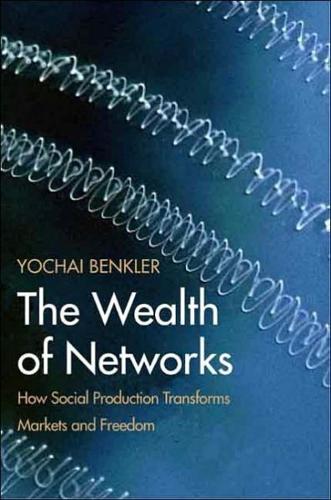
The Wealth of Networks: How Social Production Transforms Markets and Freedom
by
Yochai Benkler
Published 14 May 2006
Look for it only in books, for it is no more than a dream remembered, a Civilization gone with the wind. 488 --MGM (1939) film adaptation of Margaret Mitchell's novel (1936) 489 Strange Fruit 490 Southern trees bear strange fruit, Blood on the leaves and blood at the root, Black bodies swinging in the southern breeze, Strange fruit hanging from the poplar trees. 491 Pastoral scene of the gallant south, The bulging eyes and the twisted mouth, Scent of magnolias, sweet and fresh, Then the sudden smell of burning flesh. 492 Here is the fruit for the crows to pluck, For the rain to gather, for the wind to suck, For the sun to rot, for the trees to drop, Here is a strange and bitter crop. 493 --Billie Holiday (1939) from lyrics by Abel Meeropol (1937) 494 In 1939, Gone with the Wind reaped seven Oscars, while Billie Holiday's song reached number 16 on the charts, even though Columbia Records refused to release it: Holiday had to record it with a small company that was run out of a storefront in midtown Manhattan. On the eve of the second reconstruction era, which was to overhaul the legal framework of race relations over the two decades beginning with the desegregation of the armed forces in the late 1940s and culminating with the civil rights acts passed between 1964-1968, the two sides of the debate over desegregation and the legacy of slavery were minting new icons through which to express their most basic beliefs about the South and its peculiar institutions. As the following three decades unfolded and the South was gradually forced to change its ways, the cultural domain continued to work out the meaning of race relations in the United States and the history of slavery.
…
Sometimes shock can come in the form of economic crisis, as it did in the United States during the Great Depression. Often it can come from an external physical threat to social institutions, like a war. Sometimes, though probably rarely, it can come from law, as, some would argue, it came from the desegregation decision in Brown v. Board of Education. Sometimes it can come from technology; the introduction of print was such a perturbation, as was, surely, the steam engine. The introduction of the highcapacity mechanical presses and telegraph ushered in the era of mass media. The introduction of radio created a similar perturbation, which for a brief moment destabilized the mass-media model, but quickly converged to it.
…
As the following three decades unfolded and the South was gradually forced to change its ways, the cultural domain continued to work out the meaning of race relations in the United States and the history of slavery. The actual slogging of regulation of discrimination, implementation of desegregation and later affirmative action, and the more local politics of hiring and firing were punctuated throughout this period by salient iconic retellings of the stories of race relations in the United States, from Guess Who's Coming to Dinner? to Roots. The point of this chapter, however, is not to discuss race relations, but to understand culture and cultural production in terms of political theory.

Thinking Without a Banister: Essays in Understanding, 1953-1975
by
Hannah Arendt
Published 6 Mar 2018
Practically, greater awareness of the basic issue in this particular case may lead to a revaluation of the steps recently taken to further desegregation. It is, for instance, an open question whether discrimination can be extended to the right to choose one’s neighbors. Certainly the most outrageous aspect of segregation lies in the field of public communications, precisely because they are public; discrimination in railroads and buses offends our feeling of human dignity, because it occurs in a sphere where we are all equals. Schools, and education in general, are a borderline area where private and public rights and interests overlap. Thus it may not have been wise to start desegregation in education, it would have been less wise to start it with housing, but it would have been indispensable—as recent events have clearly pointed out*2—to end segregation in public communications, and to begin desegregation in the least disputable realm. 2: States versus Federal rights.
…
Thus it may not have been wise to start desegregation in education, it would have been less wise to start it with housing, but it would have been indispensable—as recent events have clearly pointed out*2—to end segregation in public communications, and to begin desegregation in the least disputable realm. 2: States versus Federal rights. The whole structure of the country rests on an adequate balance of State and Federal powers. The basic issue here is the nature of power. The idea that power is not indivisible but, on the contrary, can be divided without becoming less powerful, is one of the central concepts of the Constitution. It is precisely divisibility which distinguishes power from strength and force: divided power can mean more power for all concerned, whereas divided force is always less force.
…
It is precisely divisibility which distinguishes power from strength and force: divided power can mean more power for all concerned, whereas divided force is always less force. This means practically that the desegregation program must also be judged in terms of the power balance, and that any violation of states’ rights, actually guaranteed by the Constitution, would lead to weakening of regional power and ultimately perhaps to a most undesirable weakening of the union as a whole. b) Intrusion upon Privacy.—Several apparently unconnected events have contributed to making this a particularly acute issue today. Although certain personal rights which we thought to be the very essence of the right to privacy have not been noticeably endangered—such as, in my opinion, the rights “to be protected against unlawful searches and seizures” or to own property—other rights which were never mentioned have suddenly been jeopardized by Congressional Committees demanding information concerning one’s friends and relatives or reports of opinions uttered in private, by wiretapping, by factory questionnaires inquiring into personal matters, by newspapers, reporters who feel entitled to interviews, etc.

Mistakes Were Made (But Not by Me): Why We Justify Foolish Beliefs, Bad Decisions, and Hurtful Acts
by
Carol Tavris
and
Elliot Aronson
Published 6 May 2007
Because a silly argument on our side and a good argument on the other guy's side both arouse dissonance, the theory predicts that we will either not learn these arguments very well or will forget them quickly. And that is just what Edward Jones and Rika Kohler showed in a classic experiment on attitudes toward desegregation in North Carolina in 1958.3 Each side tended to remember the plausible arguments agreeing with their own position and the implausible arguments agreeing with the opposing position; each side forgot the implausible arguments for their view and the plausible arguments for the opposition. Of course, our memories can be remarkably detailed and accurate, too.
…
See blacks African National Congress (ANC), [>] aggression, catharsis in expressing, [>]–[>], [>]–[>] (n.16) Akiki, Dale, [>] Albers, James, [>] alien abduction, [>], [>]–[>], [>]–[>], [>] (n.15) Allport, Gordon, [>]–[>] Al Qaeda, [>]–[>], [>] (n.17) America Held Hostage (TV program), [>] American Enterprise Institute, [>] American Medical Association, [>] Council on Ethical and Judicial Affairs, [>] American Presidency Project, [>] (n.2) Amin, Idi, [>], [>] Amnesty International, [>] anatomically correct dolls, childhood sexual abuse and, [>], [>], [>]–[>], [>] (n.22) Andrews, Will, [>], [>], [>] anger, catharsis in expressing, [>]–[>], [>]–[>] (n.16) antidepressants, [>]–[>] apartheid, end of, [>]–[>] Aronson, Elliot, [>]–[>], [>]–[>], [>]–[>], [>] Ash, Timothy Garton, [>]–[>] AstraZeneca Pharmaceuticals, [>] authority, obedience experiments of Milgram and, [>]–[>], [>], [>] (n.27)—[>] autism, childhood vaccinations and, [>]–[>], [>]–[>] (n.19) autobiographical memory, [>]–[>] baseball, [>]–[>], [>]–[>], [>] Bass, Ellen, [>], [>]–[>], [>] (n.40) Bates, Edward, [>] Baumeister, Roy, [>]–[>] Baxter, Charles, [>] (n.2) Bayer Corporation, [>] Bay of Pigs fiasco, [>] Beck, Martha, [>] bedwetting, childhood sexual abuse and, [>] behaviorism, cognitive dissonance and, [>] -[>] benevolence benevolent dolphin problem, [>]–[>], [>]–[>] virtuous circle and, [>]–[>] Bennis, Warren, [>] Berent, Stanley, [>], [>] Bergman, Ingrid, in Casablanca, [>], [>] Bernstein, Elitsur, [>], [>] Berscheid, Ellen, [>] Bible, [>], [>] Biko, Stephen, [>]–[>] bin Laden, Osama, [>] bioethicists, [>]–[>] Birkenau concentration camp, [>] blacks Civil War and, [>], [>] desegregation and, [>]–[>] electric shock experiments and, [>]–[>] end of apartheid in South Africa, [>]–[>] prejudice and, [>]–[>], [>]–[>], [>]–[>], [>]–[>] slavery and, [>], [>], [>] tooth extractions in Sudan, [>]–[>], [>]–[>] blaming difficulties of placing blame, [>]–[>] in marriage, [>]–[>] of parents, [>]–[>], [>]–[>] the victim, [>], [>], [>], [>]–[>] Blass, Thomas, [>] (n.27) blind spots, [>]–[>] confirmation bias and, [>] conflicts of interest, [>]–[>], [>]–[>] in driving, [>] ego preservation and, [>], [>] (n.2) gifts and, [>]–[>], [>]–[>] lack of awareness of, [>]–[>] prejudice and, [>], [>]–[>] privilege as, [>]–[>], [>] (n.6) stereotypes and, [>]–[>] us-versus-them mentality and, [>]–[>] blood pressure measures, catharsis and, [>]–[>] Blue States, [>] Bogart, Humphrey, in Casablanca, [>] Bokassa, Jean-Bédel, [>] Borchard, Edwin, [>]–[>] brain.
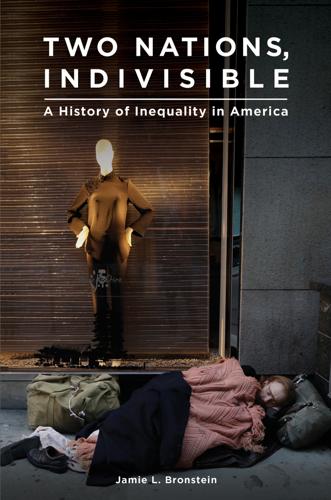
Two Nations, Indivisible: A History of Inequality in America: A History of Inequality in America
by
Jamie Bronstein
Published 29 Oct 2016
Public housing was also racially segregated, and needy white families were placed into public housing more rapidly than were black families.20 The drive for racial equality in the 1950s focused on the legal and social realms rather than the economic realm. Court decisions like Brown vs. Board of Education of Topeka, Kansas (1954), which mandated school desegregation, undermined the idea that separate facilities could ever be equal. A series of decisions by the Warren and Burger Supreme Courts broadened the notion of legal equality.21 But the few programs available in the 1950s to address employment portrayed the unemployed as lacking “human capital.” It was assumed that with sufficient training or the inculcation of work skills, the unemployed would naturally be hired as the economy grew.
…
TANGIBLE SOLUTIONS Historically, education has been held out as the great equalizer. When they were founded, American public schools were supposed to equip every child with the skills needed for employment and for citizenship. But the opportunity was fleeting. The Brown decision, which called for desegregation of schools, overlapped with housing segregation and the flight of better-off families from cities to suburbs. Prekindergarten programs demonstrably help poor children, but providing them is expensive.77 Urban schools were left catering largely to underprepared students from challenging social environments, and court decisions preventing busing urban students to outlying suburbs, and vice versa, narrow the options.78 In many urban areas, schools are more racially segregated now than they have ever been.79 President Obama suggested in 2015 that free community college tuition for all Americans might help address the inequality gap.80 Higher education is touted as the surest road to a higher income than one’s parents, but federal government studies now show that the greatest income benefits of a college education accrue to students who can afford to attend the highest tier of schools.
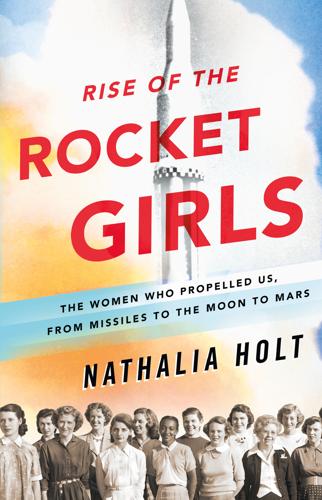
Rise of the Rocket Girls: The Women Who Propelled Us, From Missiles to the Moon to Mars
by
Nathalia Holt
Published 4 Apr 2016
Her grandmother worked as a cook for Pasadena’s prominent Jowitt family, so Janez knew all too well the importance of social hierarchy in the town. Peeking from the kitchen door as a child, she had witnessed the Jowitts’ garden parties: ladies dressed in bold print A-line dresses with crisp collars, whispering about one another. By 1950 these same women were heating up school board meetings, strongly opposing desegregation and pushing out the school superintendent who promoted it. Despite the racism that surrounded them, the Jowitts adored Janez’s grandmother. They bought her a house and a car and even sent her on vacations. It was in this house that Janez often spent the night, especially after working long days in the lab.
…
Accidents at JPL during the 1950s were described by former staff in author interviews; little documentation exists. The inertial guidance system of the Sergeant is described in Koppes, JPL and the American Space Program. Leslie Greener, Moon Ahead (New York: Viking Press, 1951). Opposition to desegregation in Pasadena in 1950 and the consequences for the school superintendent are reported in Adam Laats, The Other School Reformers: Conservative Activism in American Education (Cambridge, MA: Harvard University Press, 2015). Janez Lawson’s marriage to Theodore Bordeaux was announced in the California Eagle, September 2, 1954.
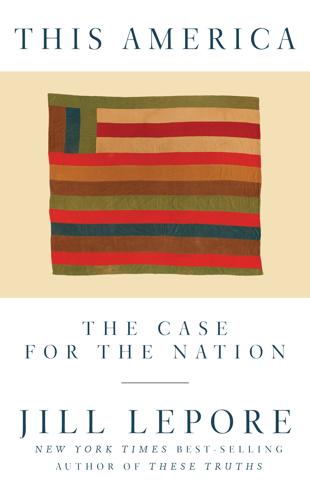
This America: The Case for the Nation
by
Jill Lepore
Published 27 May 2019
Carr’s study of the subject in 1945, one of many early announcements of the end of nationalism. This neglect left American intellectuals particularly ill-equipped to confront the turmoil over Brown v. Board of Education after 1954, when white southerners began forming White Citizens’ Councils to oppose desegregation, in the name of a white nation. Cold War liberalism, for all its celebration of American civic ideals, turned only belatedly and inadequately to the question of civil rights. Schlesinger served as a speechwriter for two-time Democratic presidential candidate Adlai Stevenson. Accepting the nomination for the presidency in 1956, Stevenson called for a “New America.”
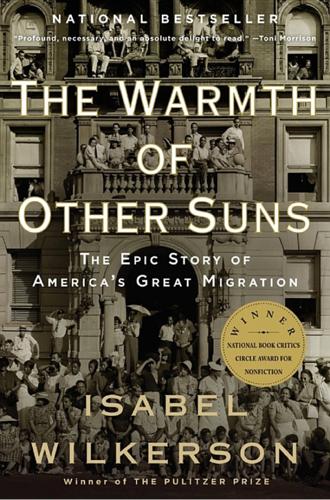
The Warmth of Other Suns: The Epic Story of America's Great Migration
by
Isabel Wilkerson
Published 6 Sep 2010
Blacks stabbed a white peddler and a white laundryman to death.82 Two white men were killed walking through a black neighborhood, and two black men were killed walking through a white neighborhood.83 White gangs stormed the black belt, setting houses on fire, hunting down black residents, firing shotguns, and hurling bricks.84 All told, the riots coursed through the south and southwest sides of the city for thirteen days, killing 38 people (23 blacks and 15 whites) and injuring 537 others (342 blacks, 178 whites, the rest unrecorded) and not ending until a state militia subdued them. Contrary to modern-day assumptions, for much of the history of the United States—from the Draft Riots of the 1860s to the violence over desegregation a century later—riots were often carried out by disaffected whites against groups perceived as threats to their survival. Thus riots would become to the North what lynchings were to the South, each a display of uncontained rage by put-upon people directed toward the scapegoats of their condition.
…
That sentiment, if true, would have been explained away by the blacks who left as an indication that the blacks who stayed may have been more conciliatory than many of the people in the Great Migration. It wasn’t until the 1970–71 school year that integration finally came to Chickasaw County, and then only after a 1969 court order, Alexander v. Holmes, that gave county and municipal schools in Mississippi until February 1970 to desegregate. But even that deadline would be extended for years for particularly recalcitrant counties. All the marching and court rulings did little to change some southerners’ hearts. A 1968 survey found that eighty-three percent of whites said they preferred a system with no integration. And they acted on those preferences.
…
The results “suggest that the New York environment is capable of raising the intellectual level of the Negro children to a point equal to that of the Whites.” Klineberg’s studies of the children of the Great Migration would later become the scientific foundation of the 1954 Supreme Court decision in the school desegregation case, Brown v.42 the Board of Education, a turning point in the drive toward equal rights in this country. In the end, it could be said that the common denominator for leaving was the desire to be free, like the Declaration of Independence said, free to try out for most any job they pleased, play checkers with whomever they chose, sit where they wished on the streetcar, watch their children walk across a stage for the degree most of them didn’t have the chance to get.
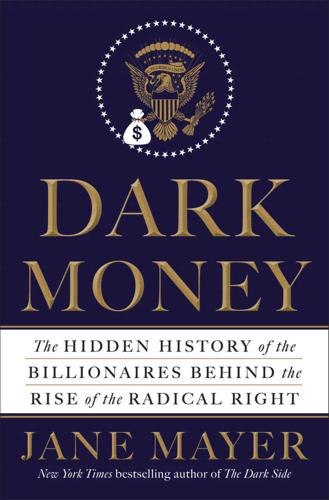
Dark Money: The Hidden History of the Billionaires Behind the Rise of the Radical Right
by
Jane Mayer
Published 19 Jan 2016
Protestant churches, public schools, universities, labor unions, the armed services, the State Department, the World Bank, the United Nations, and modern art, in his view, were all Communist tools. He wrote admiringly of Benito Mussolini’s suppression of Communists in Italy and disparagingly of the American civil rights movement. The Birchers agitated to impeach Chief Justice Earl Warren after the Supreme Court voted to desegregate the public schools in the case Brown v. Board of Education, which had originated in Topeka, in the Kochs’ home state of Kansas. “The colored man looms large in the Communist plan to take over America,” Fred Koch claimed in his pamphlet. Welfare in his view was a secret plot to attract rural blacks to cities, where he predicted that they would foment “a vicious race war.”
…
In response, the columnist Drew Pearson slammed Koch’s “gimmick” and exposed him as a hypocrite for having profited himself from Soviet Communism by building up the U.S.S.R.’s oil industry. Fred Koch continued to be active in extremist politics. He provided substantial support for Barry Goldwater’s right-wing bid for the Republican nomination in 1964. Goldwater, too, opposed the Civil Rights Act and the Supreme Court’s landmark desegregation decision, Brown v. Board of Education. Instead of winning, the Far Right helped ensure the Republican Party’s humiliating defeat by Lyndon Johnson that year. In 1968, Fred Koch went further right still. Before the emergence of George Wallace, he called for the Birch Society member Ezra Taft Benson to run for the presidency with the South Carolina senator Strom Thurmond on a platform calling for racial segregation and the abolition of all income taxes.
…
When one ALEC administrator complained that Scaife’s foundation had too much influence over the organization’s agenda, a Scaife employee retorted that they operated on “the Golden Rule—whoever has the gold rules.” Weyrich, meanwhile, dramatically enlarged the conservative groundswell by co-founding with Jerry Falwell the Moral Majority, which brought social and religious conservatives into the pro-corporate fold. Weyrich was particularly adept at capitalizing on white anger over desegregation. The results of these efforts became visible in 1980. At the top of the ticket, Reagan, a movement conservative, overwhelmingly defeated Carter. Conservatives, whose obituaries had been written by the liberal elite just a few years before, were stunningly resurgent. The upset reverberated at every level, including the Senate, where four liberal marquee names, George McGovern, Frank Church, John Culver, and Birch Bayh, were all defeated.
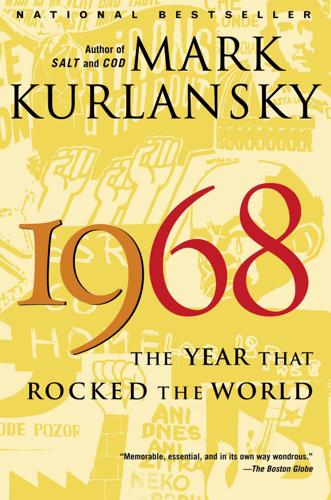
1968: The Year That Rocked the World
by
Mark Kurlansky
Published 30 Dec 2003
The area in rural southwestern Georgia was infamous for segregation and had been the object of one of the first federal suits for voting rights under the 1957 Civil Rights Act. Little Albany, with seventy-five thousand people, about a third of whom were black, was the biggest population center in the area, and SNCC, with the encouragement of local blacks, decided to launch a voter registration drive there. The registration drive expanded to desegregation of public buildings, including the bus station, and Martin Luther King was brought in. There were numerous encounters between the protesters and the law over several months, with mass arrests, including of King, but at no point did the polite, well-spoken sheriff use violence. Pritchett had been able to anticipate the protesters’ every move because he had informants from the Albany black community.
…
Thornberry was an old friend of Johnson, who had advised him not to accept the vice presidential nomination and then changed his mind and was at Johnson’s side when he was sworn in as president after John Kennedy’s death. A congressman for fourteen years, he became an undistinguished circuit court judge. He had been a segregationist until Johnson came to power and then reversed his stance, coming out on the desegregation side of several notable cases. But cronyism was not the main issue; it was the right of Johnson to appoint Supreme Court justices. Republicans, who had been in the White House only eight of the past thirty-six years, felt they had a good chance of taking over in 1968, and some Republicans wanted their own judges.
…
Among his chief inquisitors were Strom Thurmond of South Carolina and John Stennis of Mississippi, who denounced him for being a liberal in “decisions by which the Court has asserted its assumed role of rewriting the Constitution.” It was a new kind of coalition, and in carefully coded language they were attacking Fortas and the Warren Court in general for desegregation and other pro–civil rights decisions as well as for protection for defendants and rulings tolerating pornography. Fifty-two cases were brought up in which it was claimed that in forty-nine of them Fortas’s vote had prevented material from being ruled pornography; this was followed by a private, closed-door session in which the senators reviewed slides of the allegedly offensive material.

There Is Nothing for You Here: Finding Opportunity in the Twenty-First Century
by
Fiona Hill
Published 4 Oct 2021
I gave him the money and he handed me all the pizzas, averting his gaze from Tom. As we left, he said loudly, “I guess they’ll let anyone into Harvard now.” On the way back to campus in the car, Tom offered me my first crash course on race in America. I was clearly clueless. He enlightened me on the specific history of Boston and the desegregation of the city’s public schools. Boston had begun to integrate its de facto geographically segregated school system only in 1974, and then only because of a court order after a landmark class-action lawsuit filed by the National Association for the Advancement of Colored People (NAACP). The beginning of forced busing of students from predominantly Black to white neighborhoods had been met with months of violent protests, particularly in the largely Irish Catholic areas of South Boston.
…
As Tom explained, by the time the court-ordered busing ended in 1988, white students had emptied out of Boston’s school district. The public schools were now mostly Black. This was the exact opposite outcome to the intent of the original ruling. It was one of the issues that Tom had been looking at in his PhD studies. The scars of desegregation were still raw in Boston. This was literally just yesterday, not the distant past. People like the man in the pizzeria, Tom noted, had probably gone through school during the Boston busing and were still aggrieved. There were very few Black graduate students like Tom at Harvard in the 1990s. Although the undergraduate student body was rapidly diversifying, racial tensions were rife on and around the campus.
…
as caste system/race significance, 18, 104, 105, 107–9, 306 civil rights movement/legislation, 105 Danica’s experience, 108 divides around Boston area, 103–4 divisive policies/consequences, 307 generational wealth differences, 157 institutionalized restrictions, 307 opportunity gaps and, 308–9 pitting Blacks against working-class whites, 307 race as negative amplifier, 306 school desegregation and, 106–7 segregation, 307 slavery/slave trade and, 306 Tom’s experience, 106–7 See also gender discrimination discrimination/class (UK) accent/dialect and, 65, 99–100, 102, 104 education and, 161–64, 306, 320–21 geographic origin and, 17–19, 65, 89–90, 99–101 Hill/examples, 64–65, 99–101, 102 Hill realization of her class, 17–18, 22 Hill unprepared educationally and, 103, 104, 105, 106–9 Labour Party promoting social mobility and, 102–3 Malika’s experience, 104–5 middle class described, 18 place in society, 17–19 prevalence/significance, 18, 308 questions asked to establish/conse-quences, 17–18, 38, 45, 65 upper class described, 18–19 See also gender discrimination discrimination/class (U.S.)

Nudge: Improving Decisions About Health, Wealth, and Happiness
by
Richard H. Thaler
and
Cass R. Sunstein
Published 7 Apr 2008
Despite the attention they receive in the media, market-based programs like vouchers are available to relatively few students nationwide. One popular alternative is a policy known as controlled choice, which emerged in the wake of 1970s court rulings prohibiting busing for the purpose of achieving desegregation. The idea was to continue integration by guaranteeing students a priority space at a nearby school or a school that a sibling attended, while giving them the option to apply for enrollment somewhere else. School administrators in Boston adopted a computer algorithm designed to assign as many students as possible to their first-choice schools, while still giving priority to the neighborhood students.
…
defined-benefit retirement plans defined-contribution retirement plans design: controlled by choice architects, details of, human factors incorporated into, informed, neutral, starting points inherent in, user-friendly Design of Everyday Things, The (Norman) Destiny Health Plan difficulty, degree of digital cameras discount pricing discrimination, laws against Disulfiram (antabuse) diversification heuristic divorce: and “above average” effect, and children, difficulty of obtaining, economic prospects affected by, law of, mandatory waiting period for, obtainable at will Doers dog owners, social pressures on Dollar a day incentive domestic partnership agreements “Don’t Mess with Texas,” eating: and conformity, and food display, and food selection, gender differences in Economist Econs: easy choices for, homo economicus, incentives for, investment decisions by, and money, not followers of fashion, Reflective Systems used by, unbiased forecasts made by, use of term education, accountability in, in Boston, in Charlotte, charter schools, child’s right to, and competition, complex choices in, controlled choice in, desegregation of, incentive conflicts in, No Child Left Behind, in San Marcos, Texas, school choice vouchers, status quo bias in, testing standards, test scores, underperforming in, in Worcester “efficient frontier,” Einstein, Albert elimination by aspects emails, Civility Check for Emanuel, Rahm Emergency Planning and Community Right to Know Act (1986) “emoticons,” employers: employee benefits offered by, profit-sharing plans of, and retirement plans endowment effect energy, invisibility of energy conservation: and cost-disclosing thermostats, and framing, and home-building industry, and social influences, voluntary participation programs in energy efficiency Energy Star Office Products Enron Corporation environmental issues, acid deposition program, air pollution, auto emissions, auto fuel economy, cap-and-trade system in, Clean Air Act, climate change, command-and-control regulation of, energy conservation, energy efficiency, energy use, feedback and information, greenhouse gas emissions, incentives for, international, Kyoto Protocol, nudges proposed for, ozone layer, recycling, risk labeling, and social influences, trading systems in, and tragedy of the commons, transparent costs of, voluntary participation programs Environmental Protection Agency (EPA), and auto fuel economy, Energy Star Office Products program, Green Lights program of, Toxic Release Inventory of Equities (stocks) equity premium ERISA (Employee Retirement Income Security Act of) error, expecting “everything matters,” evil nudgers expectations Experion Systems externalities FAFSA (free application for federal student aid) families, dispersion of Family and Medical Leave Act Federal Express, Federal Housing Administration (FHA) Federal Trade Commission (FTC) feedback, plans (college savings accounts) flexible spending accounts follow through failure to, Food and Drug Administration (FDA) food display food selection footnotes, uses of forced choice forcing function Ford, Harrison (k) plans framing France, organ donations in Franklin, Benjamin freedom of choice, danger of overreaching, elimination of, Just Maximize Choices, opposition to, and presumed consent, and required choice frequency Friedman, Milton friendly discouragement fungibility gains and losses gambling, low stakes, mental accounting in, self-bans, and strategy Gandhi, Mohandas gas tank caps Gateway Arch, St.
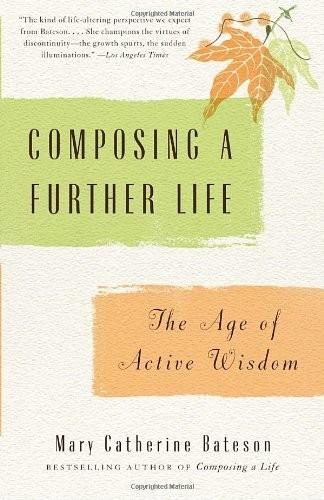
Composing a Further Life: The Age of Active Wisdom
by
Mary Catherine Bateson
Published 13 Sep 2010
Rosa Parks had triggered the Montgomery bus boycott in 1955 by refusing to accept bus segregation, and the Southern Christian Leadership Conference was founded in 1957, the same year that Little Rock public schools were desegregated under the eye of the National Guard. By 1960 the focus had shifted to voter registration and a push for legislative change, with the March on Washington in August 1963, when Dr. King made his “I have a dream” speech. Resistance to voter registration and desegregation was increasing and came to a head in Selma, Alabama, in 1965. “The staff and trainees of the Urban Training Center were there, staying in people’s houses and joining in demonstrations.
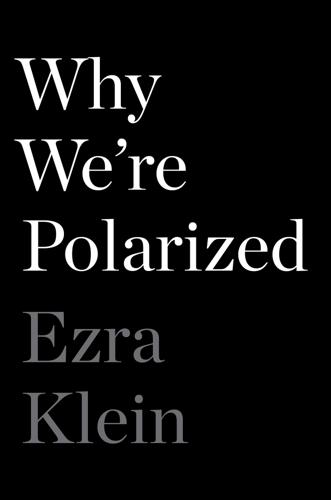
Why We're Polarized
by
Ezra Klein
Published 28 Jan 2020
Race was not on the table as an area of disagreement in Congress.” But then race became an area of disagreement. Democrats didn’t just want to redistribute from rich northern whites to poor southern whites. They also wanted to redistribute from richer whites to poorer blacks. Furthermore, beginning in 1948, with President Harry Truman’s military desegregation orders, the Democratic Party became a vehicle for civil rights, betraying its fundamental compact with the South. It’s in this era that a Republican—Barry Goldwater, running on a platform of “states’ rights”—carried much of the old Confederacy in a presidential election for the first time. The story of how the Democratic Party came to embrace civil rights is complex.
…
O., Jr., 22 King, Martin Luther, Jr., 133, 267 King, Steve, 149 Klara, Samara, 11–12 Klein, Ezra: California identity of, 211–12 credentials of, xv–xvi, xviii, 139 journalistic mission of, 147, 250 multiple identities and preferences of, 67–68 thesis of, xvi–xvii, xxiii Kolko, Jed, 104 Kremp, Pierre-Antoine, xivn Krupnikov, Yanna, 11–12 Landrieu, Mitch, 25 “landslide counties,” 39 Latinos, see Hispanics Lavine, Howard, 43, 48, 62–63 Leahy, Patrick, 200 Lee, Frances, 214–18, 222 left-wing populism, 122 Lehman Brothers, 252 Levinson, Sanford, 98 Levitsky, Steven, 38, 178 LGBT acceptance, 159 liberals, liberalism: Democratic Party’s embrace of, 1–17 identification statistics for, 231 media information sources of, 234–35 psychological dimension of, 43–44 white, 130–31 Libertarian Party, 3 Liberty University, 246 Limbaugh, Rush, 113, 115, 132, 158, 237 Lincoln, Abraham, 28 Linz, Juan, 200–203, 208, 222 Lippmann, Walter, 146 Lloyd, Mark, 244 local political identity, 266 local politics, interests of, 208–14 loneliness, 57–59 Long, Huey, 178 Lowi, Theodore, 218 Lubell, Samuel, 214 lynchings, 268 McCain, John, x, xii, xvi, 84, 182, 188, 191 McCain-Feingold Act (2002), 184 McCarthy, Joseph, 34 McConnell, Mitch, 177 in Garland nomination, 199–200, 203–4, 207, 260 McDonough, John, 83 McEnery, John, 25 McGovern, George, 38, 192, 195 McKinnon, Mark, 172–73 Maddow, Rachel, 140, 159 Madison, James, 11, 209 magazines, 140–41, 147 “majority-minority America,” 132 Malcolm, X, 267 Manatos, Mike, 221 “Man Bites Blue Dog” (Utych), 193 manipulation: mindfulness vs., 263–64 polarization vs., 261 Mann, Thomas, 225–27 “Man Who Knew Too Little, The,” 264–65 March on Washington for Jobs and Freedom, 133 marginalized groups, identity politics in, xx–xxi margins, popular vote vs. electoral college, x, xiii marriage, cross-party, 75 Mason, Lilliana, 36–37, 68–69, 73–74, 259 Mazzone, Jason, 199 media, xviii–xix, 263 anger fueled by, 159, 167–68 audiences for, 139–41, 143–58 as both reflective and creative, 164–70 as business, 155 conservative rhetoric in, 113–15 content preferences in, 143–44 economic influence on, 144 as identity-based, 169–70 information ecosystems in, 236, 238 liberal bias in, 237–38 market demand in, 150–51 nationalization of, 211–12, 265–66 partisan divide in, 77, 139–70, 227, 234–39 persuasion vs. reinforcement in, 160–61 polarization reinforced in, 68, 145, 158–63, 251 political coverage in, see political journalism racial diversity portrayed in, 110 as reflective and creative, 169 Trump covered in, 64, 165–69, 265 see also news; newspapers media advertising, 145–46 media analytics, 150–52 media market, competitive, 140–41, 143–50 Medicaid, 207, 214, 252 Medicare, 14–15, 33, 207, 209, 221 meditation, 262 mega-identity politics, 69–70, 72, 74 Michel, Bob, 217 Mickey, Robert, 23, 24, 25–26, 27 “micro-awakenings,” 58 military desegregation, 28 Milk, Harvey, 267 millennials, 115, 126 Miller, Patrick R., 60–62 Miller, Rob, 182–83 mindfulness, 261–63 “moderate majority,” 34–35 moderates, 193–94, 231, 248 “modified one-party system,” 218 Montgomery, Jacob, 242 monuments, removal of, 25 “more information” hypothesis, 89, 90 motivated reasoning, 100, 101 Moyers, Bill, 30 multiparty democracy, 254–55 Muro, Marc, 39 Murtha, Jack, 213 Murthy, Vivek, 57 Muslim Americans, 149, 169 Nader, Ralph, 172 narcissism, 177 national anthem, 70, 110 National Guard, 268 national identity, 210–11 National Interstate Popular Vote Compact, 251 nationalization, 188–89, 208–14, 265–66 National Science Foundation, 94 nation-building, 201 Native Americans, 34, 167–68, 267 negative partisanship, 8–10, 62–65, 185, 193, 234 Nelson, Ben, 208–9, 213 New America, 254 New Deal, 26 New Democrats, 172, 242 news: appearance of neutrality in, 147 as business, 155 focus on political extremes in, 149 media sources of, 139–44 online media archives of, 141 shaped by media and journalists, 164–70 see also media newspapers, 140–41, 143, 150 digital business model of, 146 partisan vs. independent, 145–46, 198 “News vs.
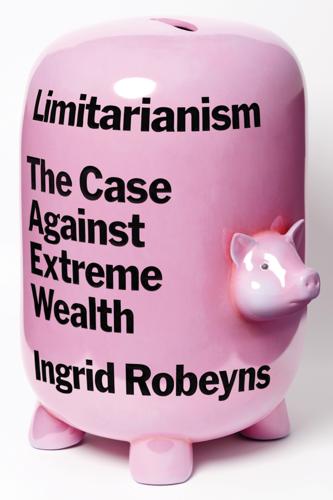
Limitarianism: The Case Against Extreme Wealth
by
Ingrid Robeyns
Published 16 Jan 2024
You might think that there is nothing that the government needs to do; that it is up to us to make choices that will widen our social circles. Alas, relying on voluntary action will not do the trick. If class desegregation is made voluntary, then we can expect that many very rich and privileged people will not join in. They will remain firmly shielded in their bubble, in their parallel society. Many wealthy people are “upward looking” in the sense that they look to those who are even richer as their benchmark. Research predicts that this group will resist attempts to desegregate: as we’ve seen, limiting their social circles to similarly well-situated people is one of their strategies for avoiding feeling bad about their wealth.
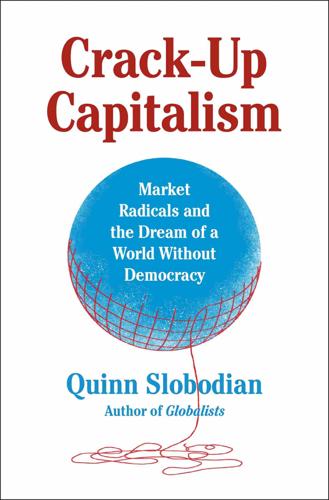
Crack-Up Capitalism: Market Radicals and the Dream of a World Without Democracy
by
Quinn Slobodian
Published 4 Apr 2023
Its director was Rothbard’s kindred spirit and closest partner, Llewellyn “Lew” Rockwell Jr., both a radical libertarian and an advocate of racial separatism ever since his first position at the conservative publisher Arlington House (named, with little subtlety, after the last residence of Confederate general Robert E. Lee). As an editor, Rockwell commissioned books on the disastrous effects of desegregation and the betrayal of white politics in southern Africa, published alongside David Friedman’s Machinery of Freedom and panic-mongering bestsellers like How to Profit from the Coming Devaluation.17 One book Rockwell pitched to an author was called Integration: The Dream that Failed; his personal opinion was that the only option was a “de facto segregation for the majority of both races.”18 Like Rothbard, Rockwell combined extreme laissez-faire politics with a fixation on race.
…
Born in New York City in 1945, David grew up in the academic enclave of Hyde Park, where his father taught at the University of Chicago. Though not a gated community, Hyde Park was a postage stamp of under two square miles surrounded by the poorer and blacker neighborhoods of the South Side, and a front line in the fight over race and property in midcentury America. Attempts to desegregate the enclave in the 1940s ran into a wall of opposition from its residents. In one pamphlet, homeowners described the neighborhood’s racial covenants as “morally justified and not motivated by prejudice.” They argued that the restrictive covenants were “private contracts” that offered security of investment and “safeguards against the deteriorating influence of undesirable neighbors.”11 In Capitalism and Freedom, Milton Friedman expressed his own opposition to laws against discrimination.

Palo Alto: A History of California, Capitalism, and the World
by
Malcolm Harris
Published 14 Feb 2023
But it meant no to high-rise apartment buildings, and in the early 1970s, the city board banned new buildings over 50 feet tall.28 Shielded by official if not de jure housing segregation, housing development expanded in the 1950s and early 1960s, only to draw down sharply as suburban whites planned long-term solutions to the threat of “open housing.” Schools, like houses, were at the center of the desegregation struggle, and there, too, reactionaries had a zoning solution. As the East Palo Alto population increased, Palo Alto had to build a new high school. Liberals suggested a north-south dividing line to produce two integrated schools; that’s not what happened. In 1958, the new school went right in the middle of East Palo Alto, segregating the teenagers for the first time in a manner that endures to the present day, with few exceptions.
…
Stan Puryear (later Muata Weusi-Puryear), a computer programmer who moved to the area in the early 1960s to pursue a doctorate in symbolic logic at UC Berkeley, became president of the Palo Alto–Stanford branch of the NAACP, which swelled with professors and students and was able to funnel substantial funds to the southern movement, in addition to organizing protests against new attacks from the real estate industry.23 Palo Alto SNCC and Mid-Peninsula CORE worked to desegregate employment, education, and housing individual by individual. That meant negotiating for affirmative action in hiring at shops, getting signatures for open-housing promises from homeowners, and “sneaking out” black kids into white liberal houses so they could access the residentially segregated Palo Alto schools.
…
Jensen’s 1969 piece for the Harvard Educational Review summarized the change in attitude the author underwent at Stanford. It was the longest article in the journal’s history, filling here, and it was a bombshell, propelling “Jensenism” into mainstream American politics. Tasked with addressing the failure of American schools, after formal desegregation, to educate black and white students up to the same test scores, Jensen lays down his cards in the first sentence: “Compensatory education has been tried,” he writes, “and it apparently has failed.”52 The paper is a kind of common ancestor of contemporary varieties of American race science, relying on a mishmash of pseudoscience and appeals to racist “common sense.”
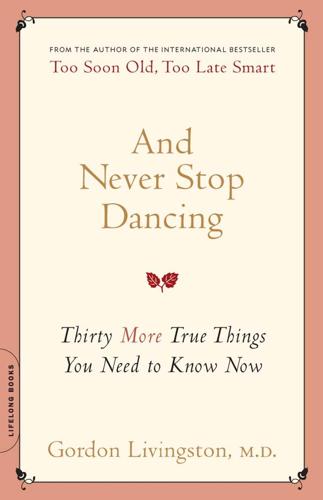
And Never Stop Dancing: Thirty More True Things You Need to Know Now
by
Gordon Livingston
Published 15 Feb 2006
Unlike the inclusive, nonviolent, and forgiving beliefs that inspired the civil rights marchers, the faith of the fundamentalists is coercive, exclusive, and of a piece with the stance taken by that other Alabama hero of 1963, Governor George Wallace, who incited the resistance of citizens to federal authority by “standing in the schoolhouse door” to oppose the desegregation of the state university. An ostensible pillar of conservative belief is the enforcement of restrictions on government interference in people’s lives. However, as with the Ten Commandments, fundamentalist conservatives are eager to force their social views on the rest of us, usually on moral and religious grounds.
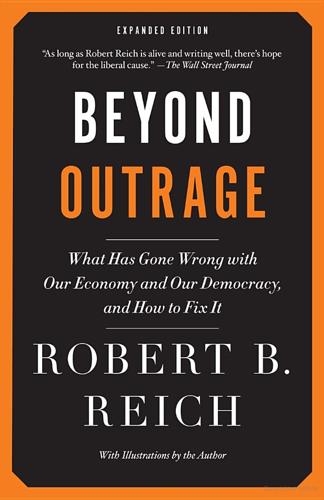
Beyond Outrage: Expanded Edition: What Has Gone Wrong With Our Economy and Our Democracy, and How to Fix It
by
Robert B. Reich
Published 3 Sep 2012
Gingrich unleashed destroyed whatever comity existed across party lines,” say Ornstein and Mann, “activated an extreme and virulently anti-Washington base—most recently represented by Tea Party activists—and helped drive moderate Republicans out of Congress.” America has had a long history of white southern radicals who would stop at nothing to get their way—seceding from the Union in 1861, repudiating federal laws designed to protect the rights of black citizens during Reconstruction, enacting Jim Crow laws, resisting desegregation orders in the 1950s, and refusing to obey civil rights legislation in the 1960s. The Gingrich-led government shutdown at the end of 1995 was a prelude to the 2011 showdown over raising the federal debt ceiling—which could have triggered a government default and risked the full faith and credit of the United States.
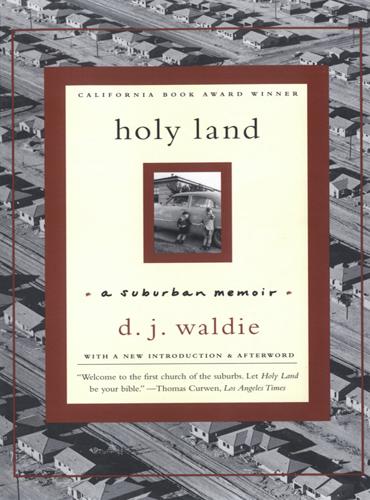
Weimar Culture: The Outsider as Insider
by
Weimar Gay
Published 31 Dec 2001
The eighteenth question asks if the new subdivision is the “white spot” of Long Beach. The answer is yes. 285 Herbert Legg left the real estate development company and ran for office. He became a county supervisor. 286 In 1940, Long Beach had 164,271 residents. It had a black population of 2,000. Jobs at defense plants, desegregated by presidential order during the war, brought the number of black residents to 15,000 in 1950. By 1960, the number had dwindled to 9,500. In 1947, city officials in Long Beach had demolished part of the federal housing built for war workers. The city tore down the part segregated for Negroes and left standing the part reserved for whites.
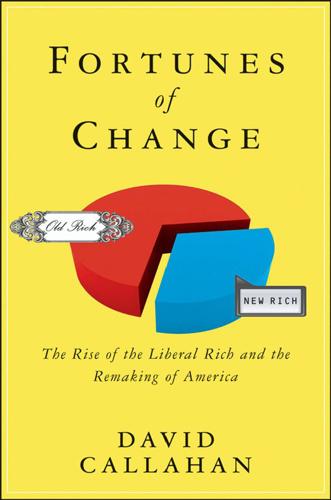
Fortunes of Change: The Rise of the Liberal Rich and the Remaking of America
by
David Callahan
Published 9 Aug 2010
Marlon Brando was perhaps the most outspoken of the new activists, backing nearly every cause of the 1960s with his name, time, and money. He was among a number of celebrities—which included Burt Lancaster, Harry Belafonte, Charlton Heston, and James Garner—who attended the 1963 civil rights march on Washington. Along with Paul Newman, Brando also participated in the Freedom Rides that aimed at desegregating bus facilities in the Deep South. A few years later, stars like Newman would be galvanized by Eugene McCarthy’s antiwar candidacy and then, in 1972, McGovern’s doomed liberal campaign. Hollywood got its first political action committee in 1984, when a dozen or so wealthy liberal women— including Barbra Streisand, Jane Fonda, and Marilyn Bergman—got together to form the Hollywood Women’s Political Committee (HWPC).
…
and “Congressional Scorecard: Measuring Support for Equality in the 110th Congress,” Human Rights Campaign. 6. G. William Domhoff, Fat Cats and Democrats: The Role of the Big Rich in the Party of the Common Man (Englewood Cliffs, NJ: PrenticeHall, 1972), 128–131. 7. Sam Roberts, “Westchester Adds Housing to Desegregation Pact,” New York Times, August 11, 2009. 8. William Henry and Elaine Lafferty, “Not Marching Together,” Time, May 3, 1993. 9. Craig A. Rimmerman, From Identity to Politics: The Lesbian and Gay Movements in the United States (Philadelphia: Temple University Press, 2001), 90–92. 10. Robert Frank, Richistan: A Journey through the American Wealth Boom and the Lives of the New Rich (New York: Crown, 2007), 197. 11.
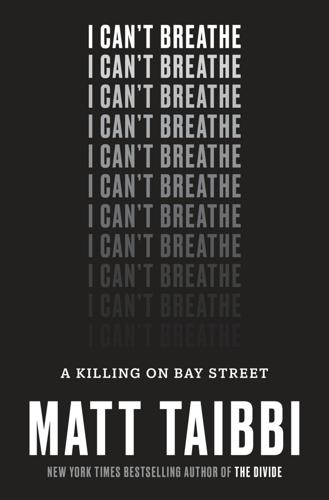
I Can't Breathe
by
Matt Taibbi
Published 23 Oct 2017
He was probably best known for helping to negotiate the pardon of Clarence Norris, the son of a slave and the last living member of the Scottsboro Boys, nine young men who’d been falsely accused of rape in 1931. His legal partnership with the stately Howard was a bit of a good cop/bad cop routine, with Meyerson playing the role of the unpredictable courtroom presence. The two men had been through tough times. In the 1972 desegregation case Alexander v. Warren, about the firing of a black teacher named Travistine Alexander, anti-integration protesters in the Arkansas town of Warren were so vociferous that the National Guard had to be called in to escort Howard and Meyerson to and from the courtroom. In the Russ case, Meyerson and Howard decided to focus on a law passed by Congress in 1948, giving the federal government the power to intervene if a person was harmed by a “deprivation of any rights, privileges, or immunities secured or protected by the Constitution.”
…
Standing at the box in the days after the Laquan McDonald video went public, Carr told a story about his youth. One night in the late 1950s, when he was about twelve years old, Carr crouched in the bushes near his house, waiting, a rifle in his hands. This was in rural Rocky Point, North Carolina, right around the time of the historic Brown v. Board of Education decision desegregating America’s schools. “I had a twenty-two and an eighteen-shot rifle,” he said. “I got my first gun when I was eleven. We used to go hunting for squirrels and rabbits.” Carr lived in a cul-de-sac off Route 117, a little looping road called Pennsylvania Avenue, where both blacks and whites lived.
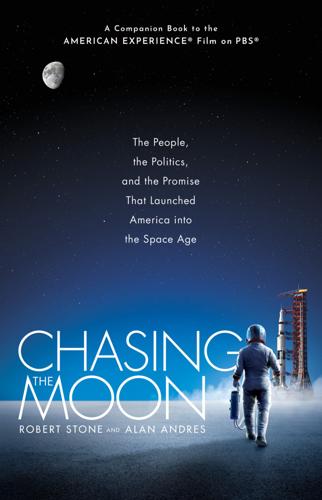
Chasing the Moon: The People, the Politics, and the Promise That Launched America Into the Space Age
by
Robert Stone
and
Alan Andres
Published 3 Jun 2019
However, Singer later remarked that the Soviet reaction to his paper was “blown out of proportion.” As Sputnik dominated the headlines, newspapers gave less attention to the big story out of Little Rock, Arkansas, where a week earlier President Eisenhower had ordered 1,200 members of the Army’s 101st Airborne Division to assist with the desegregation of Little Rock Central High School. The day before Eisenhower’s order to mobilize the troops, more than a thousand white protesters had rioted to prevent nine black students from attending the school. After Sputnik was launched, Radio Moscow seized upon an opportunity to shame the United States for hypocritically calling itself “the land of the free”: It alerted its global listeners to the exact moment when the satellite would pass over Little Rock, news that was specifically intended to be heard in the emerging independent nations of Africa.
…
Opening his office mail on a routine afternoon, Dwight encountered a letter that was unlike anything he had seen. It proposed he enroll in the test-pilot school at Edwards as part of a program to be the first African American astronaut. Well aware of the Kennedy administration’s commitment to enforcing desegregation and equal opportunity, Dwight realized this could be his chance to play an important part in moving the country forward. But he was mindful that a tremendous risk accompanied the proposal: If he was successful, he would make history and a promotion was assured; if he failed, there was likely no coming back.
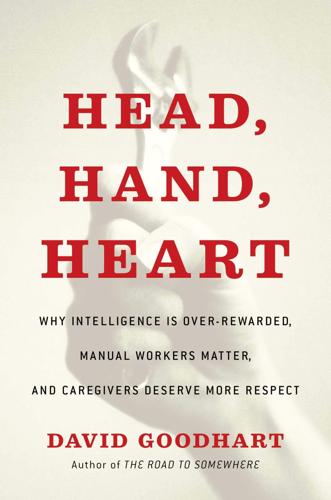
Head, Hand, Heart: Why Intelligence Is Over-Rewarded, Manual Workers Matter, and Caregivers Deserve More Respect
by
David Goodhart
Published 7 Sep 2020
In 2017 it was 36 percent for men and 40 percent for women.47 Universities, law schools, and medical schools are now at least 50 percent female, and although few women are CEOs of top companies, roughly half of the jobs in the top managerial and professional class are now taken by women.48 The top end of the labor market has been almost completely gender desegregated, but the middle and bottom end remains highly segregated, with women overwhelmingly concentrated in caring sectors like primary education, nursing, and social care. This is one reason why the graduate premium is higher for women than men: because of the bigger earnings gulf between professional women and often part-time women workers in the lowest-paid corners of the economy.
…
Many people experienced the potential of more home working during the Covid-19 crisis and became more adept at managing the technology. The public care economy is more than 85 percent female. Men are doing more domestic labor than in the past, and nearly two-thirds of all fathers are now classified as “involved fathers,” but there has been little gender de-segregation of nursing, adult social care, or primary school teaching.13 Indeed, as more women have moved into medical roles, hospitals are becoming more not less female. Some positive discrimination toward young men in some of these jobs could help create a critical mass of male employment where it remains largely absent.
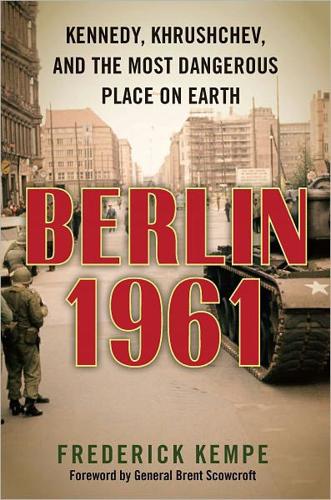
Berlin 1961: Kennedy, Khrushchev, and the Most Dangerous Place on Earth
by
Frederick Kempe
Published 30 Apr 2011
The immediate problem revolved around the “Freedom Riders,” whose efforts to desegregate interstate transportation had won only tepid support from the Kennedy administration and were opposed by nearly two-thirds of Americans. Abroad, Kennedy’s failure in Cuba, unresolved conflict in Laos, and tensions building around Berlin made his Paris–Vienna trip all the more fraught with risk. Kennedy was making the mental connection to Berlin even while wrestling with racial affairs at home. When Father Theodore Hesburgh, a member of his Civil Rights Commission, questioned the president’s reluctance to take bolder steps to desegregate the United States, Kennedy said, “Look, Father, I may have to send the Alabama National Guard to Berlin tomorrow, and I don’t want to do it in the middle of a revolution at home.”
…
The Washington Post reported on efforts to end racial discrimination in Maryland restaurants. A story on the front page of the New York Times reported that Supreme Court justices were hearing arguments related to antidiscrimination sit-ins in the South. Police were enforcing carefully laid school desegregation plans while white-robed-and-hooded Ku Klux Klansmen protested. However, the president was preoccupied by thoughts of war and how he would conduct it. His concerns were infecting the American public. Time magazine ran on its cover a color portrait of Virgil Couch, head of the Office for Civil Defense.
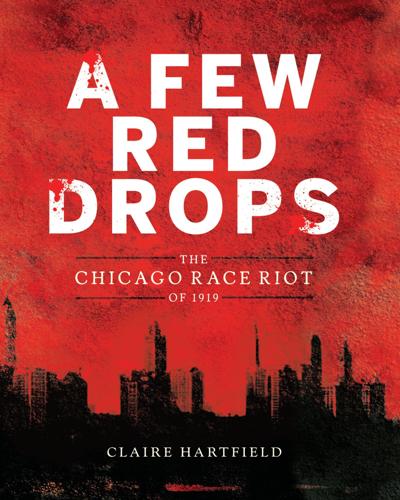
A Few Red Drops: The Chicago Race Riot of 1919
by
Claire Hartfield
Published 1 Jan 2017
Mary of Perpetual Help parish, 52 Sandburg, Carl, 169, 170 Schools, segregated, 62–63 Sisters Home Mission, 91 Slavery, 23, 24–25 So Sos (Italian gang), 57 South: black population in, 86; cotton in, 85–86; schools in, 92 South Carolina, race disturbances in, 161 State Street “Stroll,” 64 Stauber, George, 140, 141, 163 Steam locomotives, 36 Stockyards Aid Society, 72 Stockyards Labor Council, 121, 122–123 Streetcars, 60–61, 100 Strikebreakers, 69–75 Strikers, 31, 71–75, 148, 154–155 Stuart, Louise, 8 Sweitzer, Robert, 131, 132 Swift, Gustavus Franklin, 41–45, 42, 48, 67–68 Swift, Louis, 68, 74, 84, 101, 104, 121–122, 124, 132, 137, 151 Swift & Company, 41, 69, 86, 149, 167 Swift Premiums, 105, 106 T Thirteenth Amendment, 25 Thompson, “Big Bill,” 115, 116, 127, 130–132, 131, 134, 143, 146, 151–152, 165 Tongs, 57 Torpedoes (Italian gang), 57 Travelers Aid Society, 98 Tri-Street Athletic Club, 58 Tuberculosis, 108 Turtle, as Superintendent of Police, 67 Twenty-Ninth Street beach, 7, 10–11, 13, 140, 167 Twenty-Sixth Street beach, 1, 5–6, 7, 12, 126, 167 Twigglies (black gang), 57 U Underground Railroad, 19 Unions, 68–75, 123, 136, 137–138 Union Stock Yard, 76–77; black workers in, 84, 104, 143; children in, 70; “disassembly” line in, 47; divide and conquer tactics in, 67–68; domination of, by Armour, Philip, and Morris, Nelson, 42; finding uses for all animal parts as problem in, 43; inspection of cattle carcasses in, 44; jobs in, 67, 102, 132; morning “shapeup” at, 46–47; need for workers in, 84; 1904 strike against, 69–74, 125; opening of, 39, 41; pecking order in, 104; strikebreakers and, 69–73; unskilled immigrants in, 35, 45–47; women in, 68, 84; working conditions in, 47–49, 48 United States Employment Service, 128 Urban League, 98, 99, 100, 102–105, 108–111, 110–111, 138, 150, 155 V Voting rights, 33–34, 90 W Wabash YMCA, 32, 64, 100, 104–105, 113, 122, 132, 155, 155 Washington, Booker T., 93 Washington, D.C., race disturbances in, 161 Washington, Lt., 148 Washington Park, 136 Wells, Ida B., Club, 32–33 Wells-Barnett, Ida B., 27–29, 32–34, 63, 80, 85–86, 97, 100, 113, 143, 153–154, 165, 169 Williams, Charles, 1, 5–7 Williams, Eugene, 1, 5–7, 10–11, 13, 17, 18, 136, 140–141, 163, 164, 165 Williams, Lawrence, 1, 5–7 Williams, Paul, 1, 5–7 Wilson, Woodrow, 79, 80, 84, 124, 136 Wolves (black gang), 57 Women: in Black Belt, 111; concerns of packinghouse employees, 68; in Packingtown, 52, 55–57; in Union Stock Yard, 68, 84; voting rights for, 33 Women’s clubs, 82 World War I, 10, 79–84, 86–88, 121, 127 About the Author Photo by Brian McConkey CLAIRE HARTFIELD received her B.A. from Yale University and her law degree from the University of Chicago. As a lawyer, she specialized in school desegregation litigation. More recently, she has been involved in setting policy and creating programs in a charter school setting on Chicago’s West Side, which is predominantly African American. She heard stories of the 1919 race riot from her grandmother, who lived in the Black Belt in Chicago at the time, and was moved to share this history with younger generations.
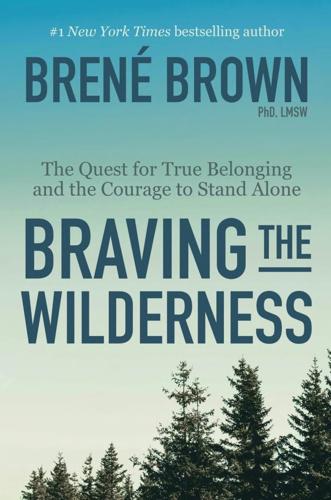
Braving the Wilderness: The Quest for True Belonging and the Courage to Stand Alone
by
Brené Brown
Published 15 Mar 2017
Experiences of not belonging are the time markers of my life, and they started early. I attended pre-K and kindergarten at Paul Habans Elementary on the west bank of New Orleans. It was 1969, and as wonderful as the city was and still is, it was a place suffocated by racism. Schools had only become officially desegregated the year I started. I didn’t know or understand much about what was happening, I was too young; but I knew that my mom was outspoken and tenacious. She spoke up a lot and even wrote a letter to the Times-Picayune challenging the legality of what today we’d call racial profiling. I could sense that energy around her, but to me, she was still just a volunteer in my homeroom and the person who made me, herself, and my Barbie matching yellow plaid shift dresses.
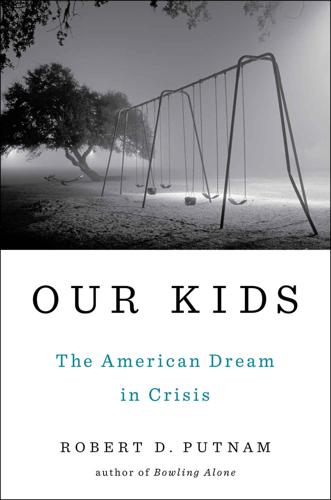
Our Kids: The American Dream in Crisis
by
Robert D. Putnam
Published 10 Mar 2015
Coleman et al., Equality of Educational Opportunity (Washington, DC: U.S. Department of Health, Education & Welfare, Office of Education, OE-38001, and supplement, 1966), 325; Gary Orfield and Susan E. Eaton, Dismantling Desegregation (New York: New Press, 1996); Claude S. Fischer et al., Inequality by Design: Cracking the Bell Curve Myth (Princeton: Princeton University Press, 1996); Richard D. Kahlenberg, “Economic School Integration,” in The End of Desegregation, eds. Stephen J. Caldas and Carl L. Bankston III (Hauppauge, NY: Nova Science, 2003), esp. 153–55; Russell W. Rumberger and Gregory J. Palardy, “Does Segregation Still Matter? The Impact of Student Composition on Academic Achievement in High School,” The Teachers College Record 107 (September 2005): 1999–2045; John R.
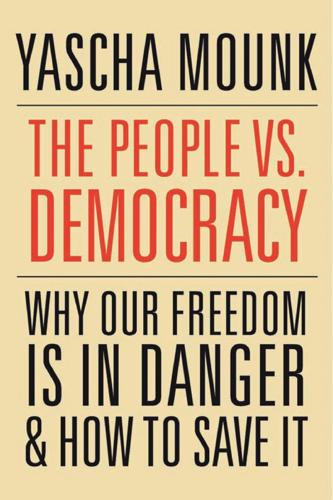
The People vs. Democracy: Why Our Freedom Is in Danger and How to Save It
by
Yascha Mounk
Published 15 Feb 2018
People from John Roberts, the chief justice, to Tomi Lahren, the conservative commentator, like to point out how noble and neutral the country’s principles are—only to use this fact to deny that there are serious racial injustices to be remedied. As Justice Roberts wrote in Parents Involved, a Supreme Court case on school desegregation, “the way to stop discriminating on the basis of race is to stop discriminating on the basis of race.”20 This is disingenuous: If private actors—from real estate agents to HR managers—continue to discriminate on the basis of race, then a state that pretends that race doesn’t exist can’t effectively remedy the resulting injustices.21 To add insult to injury, people of color do not, in practice, have the opportunity to be color blind.
…
In nearly every country, real progress toward this goal would include radical reform that is barely on the political agenda. In Germany, it would mean rethinking the three-tier school system to promote more intermingling across ethnic lines and make it much easier for immigrant children to attend university. In the United States, it would mean a renewed focus on desegregating schools. A truly liberal integration policy would set out with renewed resolve to ensure that members of minority groups do not experience discrimination or see their prospects dimmed by structural obstacles. At the same time, it would also set itself against those who—whether out of fear that they might falsely be accused of discrimination, or due to an explicit commitment to cultural relativism—exempt minority groups from the basic rights and duties of a liberal society.
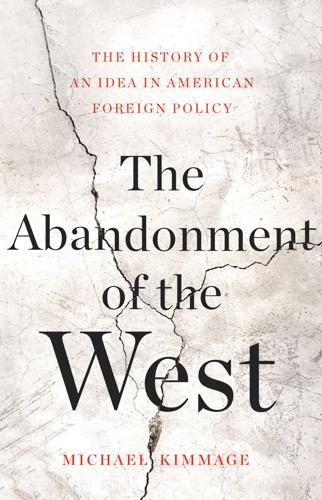
The Abandonment of the West
by
Michael Kimmage
Published 21 Apr 2020
Ultimately, William McNeill’s The Rise of the West belonged more to the 1930s, the 1940s and the 1950s than to the decade in which it was published. Popular as it was upon publication, McNeill’s 1963 book arrived at the end of an era in American politics and American foreign policy. THE LONG, SLOW work of diversifying the American national security elite began at the end of the Second World War. Truman desegregated the US military in 1948, making it a ladder for African American professional advancement in the second half of the twentieth century. Reform of the State Department was more piecemeal. The reform had a prewar intellectual foundation. To take one example: the philosopher Alain Locke contributed to the notion of the New Negro, who was intellectual, self-aware and engaged in social and political change.
…
In fact, there is already one building on the National Mall that wonderfully speaks to the post–Columbian Republic and to the best principles of the West. It is the National Museum of African American History and Culture (NMAAHC). It could not have been imagined by the makers of the McMillan Plan or by the city they refashioned without in any way trying to desegregate, although the origins of the NMAAHC lie not too far from the McMillan Plan. In 1916, a Committee of Colored Citizens was formed to honor African American soldiers. This committee helped to generate the designs for a National Negro Memorial in Washington, DC. Had it been built, it would have contained a hall of fame, a museum, a library and an auditorium.
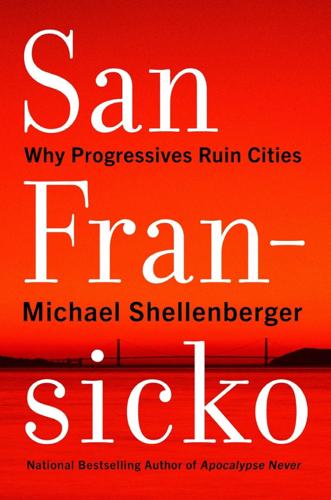
San Fransicko: Why Progressives Ruin Cities
by
Michael Shellenberger
Published 11 Oct 2021
One member of the Coalition on Homelessness compared measures like the ban on people lying and sitting on sidewalks to Jim Crow racial segregation laws in the South.4 “Sitting is not a crime” was the headline for one advertisement ahead of the election, which showed a picture of African American activists desegregating a lunch counter in the 1950s.5 In 2013, some progressive merchants in the Haight allowed the homeless to flout the law and sit on sidewalks. “I’m a vet,” said an empowered homeless man drinking beer on the sidewalk. “I’ll sit anywhere I want!”6 The homeless know they are supported by progressive elected officials, advocates, and citizens.
…
The latter saw a decline of 36 percent in the last thirty years, from 1,305 injuries per 100,000 people in 1990 to 835 per 100,000 people in 2019, the latest year for which numbers are available.29 It was wrong that the federal government channeled black families into rental apartments and white people into subsidized homeownership after World War II, but few argue that racism increased since then, and on many measures it declined significantly in the period that addiction worsened. The 1964 Civil Rights Act mandated desegregation by institutions that received federal money. In 1968 the Fair Housing Act closed loopholes on discriminatory lending. And governments, universities, and firms have used affirmative action programs to promote people of color to positions of power within organizations since 1965. America’s social safety net has expanded dramatically over the last half century.
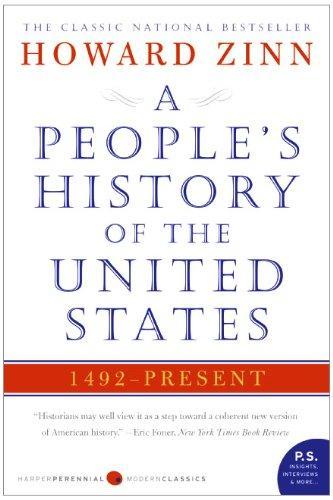
A People's History of the United States
by
Howard Zinn
Published 2 Jan 1977
But Truman—four months before the presidential election of 1948, and challenged from the left in that election by Progressive party candidate Henry Wallace—issued an executive order asking that the armed forces, segregated in World War II, institute policies of racial equality “as rapidly as possible.” The order may have been prompted not only by the election but by the need to maintain black morale in the armed forces, as the possibility of war grew. It took over a decade to complete the desegregation in the military. Truman could have issued executive orders in other areas, but did not. The Fourteenth and Fifteenth Amendments, plus the set of laws passed in the late 1860s and early 1870s, gave the President enough authority to wipe out racial discrimination. The Constitution demanded that the President execute the laws, but no President had used that power.
…
Racism, always a national fact, not just a southern one, emerged in northern cities, as the federal government made concessions to poor blacks in a way that pitted them against poor whites for resources made scarce by the system. Blacks, freed from slavery to take their place under capitalism, had long been forced into conflict with whites for scarce jobs. Now, with desegregation in housing, blacks tried to move into neighborhoods where whites, themselves poor, crowded, troubled, could find in them a target for their anger. In the Boston Globe, November 1977: A Hispanic family of six fled their apartment in the Savin Hill section of Dorchester yesterday after a week of repeated stonings and window-smashings by a group of white youths, in what appears to have been racially motivated attacks, police said.
…
In Washington, D.C., with a concentrated population of black poor within walking distance of the marbled buildings of the national government, 42 percent of young black men between the ages of eighteen and thirty-five were either in jail, or out on probation or parole. The crime rate among blacks, instead of being seen as a crying demand for the elimination of poverty, was used by politicians to call for the building of more prisons. The 1954 Supreme Court decision in Brown v. Board of Education had begun the process of desegregating schools. But poverty kept black children in ghettos and many schools around the country remained segregated by race and class. Supreme Court decisions in the seventies determined that there need be no equalization of funds for poor school districts and rich school districts (San Antonio Independent School District v.
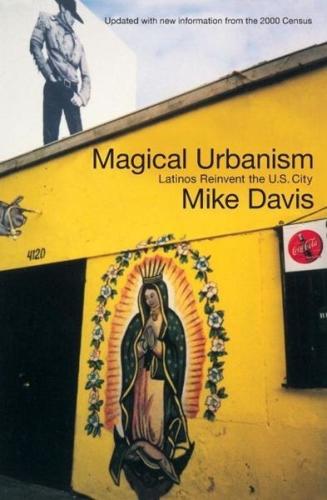
Magical Urbanism: Latinos Reinvent the US City
by
Mike Davis
Published 27 Aug 2001
According to sity's Civil more than Harvard Univer- Rights Project (using 1997 data), "nationwide, nearly 70 percent of black students and 75 percent of Latinos attend schools that are predominantly black, Latino or Native Ameri»210 can. Table 11 Resegregating (Percentage of the Pupils in US Schools 90%-100% Minority Schools) Blacks Latinos 1968-69 64.3 23.1 1972-73 38.7 23.3 1980-81 33.2 28.8 1986-87 32.5 32.2 1991-92 33.9 34.0 1996-97 35.0 35.4 Source: Adapted from Megan Twohey, "Desegregation Is Dead," National Journal, 18 September 1999, p. 2619. California, of course, has been ground zero for Latino hopes of an educational breakthrough, and nowhere has white disinvest- ment tween in urban schools produced more calamitous Anglo majority to fornia results. 1970 and 1997," as the school population shifted fell 15 percent relative to spending in the rest of the country."^^^ As long as the majority of the baby still from an "spending per pupil in Cali- a Latino plurahty, more than "Be- boom were of school age, California's public schools were a gold stand- ard for the rest of the country.
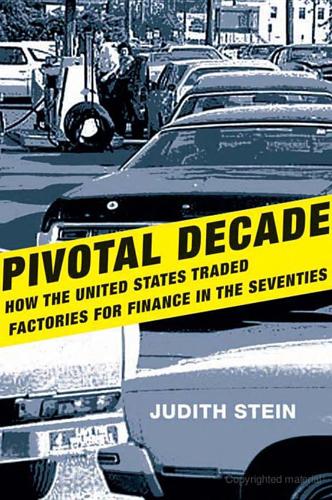
Pivotal Decade: How the United States Traded Factories for Finance in the Seventies
by
Judith Stein
Published 30 Apr 2010
But no elegant justification for busing could overcome the social facts that the judges, politicians, and activists ordering and supporting busing usually sent their children to private schools or lived in all-white suburbs. Listen to Jack Greenberg and Thurgood Marshall, both architects of Brown v. Board of Education and the NAACP’s battle to desegregate and integrate schools. Greenberg had moved his family from Manhattan to Great Neck, a white middle-class suburb in Nassau County, New York. He admitted that “this caused not a little soul searching, but I came down on the side of the best education I could find for my children. Thurgood and Connie [Marshall] had come to similar conclusions when they enrolled their own children in Dalton, an elite private school on Manhattan’s Upper East Side.
…
Carter’s media adviser produced leaflets showing a photo of Sanders with some black basketball players and distributed them in white neighborhoods.2 This time he won. Carter was no racist, but his determination to win knew few boundaries. He took his place among a group of New South governors who had accepted civil rights, black voting, and desegregation. In Florida victorious governor Reubin Askew also reached out to white Wallace voters. But Askew constructed his appeal with an economic platform that promised higher taxes on corporations and lower taxes on working families, not demagogic racial populism.3 So did Governor Dale Bumpers of Arkansas.
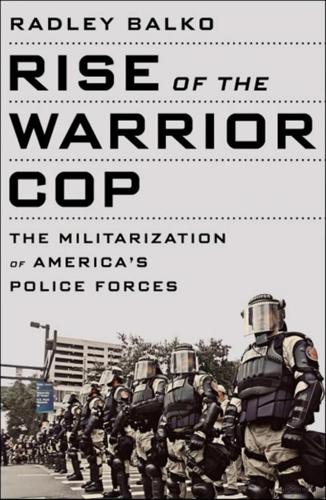
Rise of the Warrior Cop: The Militarization of America's Police Forces
by
Radley Balko
Published 14 Jun 2013
But Johnson’s critics seized on the more platitudinous and abstract recommendations: the commission asserted that ending poverty would be the single most important crime-fighting initiative and recommended minority outreach bureaus within major police departments, the establishment of multiple crime and justice research institutions, family planning assistance, recommitting to desegregation, funding for drug abuse treatment, and gun control.52 To Johnson’s critics, this was just more leftist, mealymouthed academese. There was lots of government spending (the commission didn’t bother to estimate a price tag for its recommendations), plenty of lofty talk about social uplift, and hand-wringing about the influence on crime of environmental factors—all of which rather conveniently aligned with Johnson’s other domestic policies.
…
Board of Education (though he’d later change his mind) and the 1964 Civil Rights Act. He was a signatory of “The Southern Manifesto,” which accused the US Supreme Court of overstepping its authority on integration and breeching state sovereignty. Ervin even reversed course on integration at about the time the Nixon administration made desegregating public schools a Justice Department priority. Indeed, by the time Nixon ran for president in 1968, Ervin appeared to be precisely the sort of God-and-country, law-and-order Southern Democrat Nixon was hoping to court with his campaign. The two also shared a contempt for the Warren Court. In the 1957 case Mallory v.
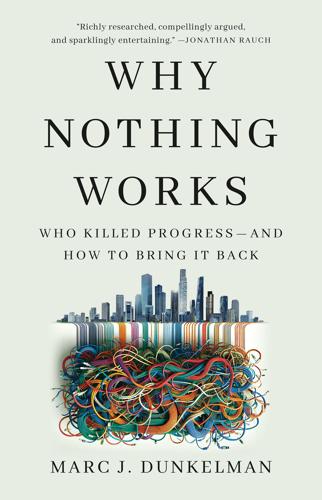
Why Nothing Works: Who Killed Progress--And How to Bring It Back
by
Marc J Dunkelman
Published 17 Feb 2025
In the years that followed, Jeffersonian efforts to corral the administrative state weren’t pursued in a vacuum. Progressives during these years were kicking the tires on new uses for the judiciary in a whole range of contexts, none more famous than Brown v. Board of Education (1954), which employed judicial authority to do what the elected branches of government had failed to get right—namely to desegregate the nation’s public schools. Often considered separately as beacons of entirely different realms of the law, these initiatives were born nevertheless from the same underlying notion that deliverance would come not by amalgamating authority, but by pushing it down to individuals. The proposition that judges could be the essential ally of those victimized by centralized power had been laughable during the Lochner era—judges had then shielded private interests from the demand of what many elites viewed as the democratic mob.
…
Dionne Jr., Why Americans Hate Politics (New York: Touchstone, 1991), 88. Harry McPherson, A Political Education: A Washington Memoir (Austin: University of Texas Press, 1995), 376. The Commission’s recommendations were quintessentially Hamiltonian, with “the creation of 2 million jobs over the next three years, a massive school desegregation program, 600,000 housing starts” among them. Gareth Davies, From Opportunity to Entitlement: The Transformation and Decline of Great Society Liberalism (Lawrence: University Press of Kansas, 1996), 203–206. 2. Annmarie Hauck Walsh, The Public’s Business: The Politics and Practice of Government Corporations (Cambridge, MA: MIT Press, 1978), 266.
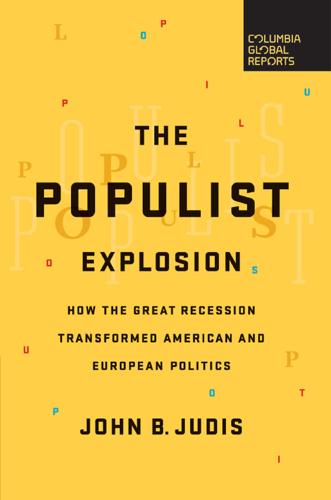
The Populist Explosion: How the Great Recession Transformed American and European Politics
by
John B. Judis
Published 11 Sep 2016
And I think that if the politicians get in the way a lot of them are going to get run over by this average man in the street—this man in the textile mill, this man in the steel mill, this barber, this beautician, the policeman on the beat . . . the little businessman. Wallace opposed busing—which became a major issue after a 1971 Supreme Court order upheld it as a means to achieve desegregation—because it was breaking up working-class neighborhoods, and he attacked the white liberals who promoted it as hypocrites who refused to subject their children to what they insisted that working- and middle-class kids be subjected to. “They are building a bridge over the Potomac for all the white liberals fleeing to Virginia,” he declared.
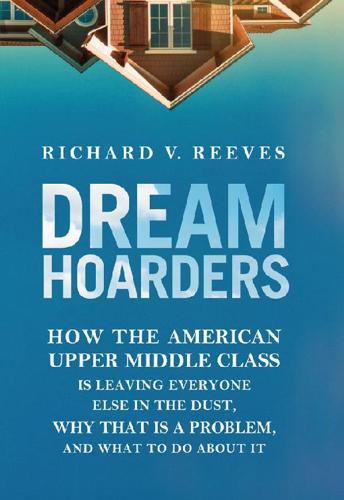
Dream Hoarders: How the American Upper Middle Class Is Leaving Everyone Else in the Dust, Why That Is a Problem, and What to Do About It
by
Richard V. Reeves
Published 22 May 2017
But another version of the American dream is about circulation and movement, that those born at the bottom can rise to the top. Relative mobility rates capture that idea. Postwar America was an engine of absolute mobility, fueled by strong and broadly shared economic growth, at least among whites. Increased opportunities for Americans of humble origins, through policies like the GI bill and school desegregation, promoted upward absolute mobility—sons of truck drivers could open profitable businesses. Nine in ten of those born in 1940 surpassed their parents’ income, Chetty finds. Memories of this Golden Age still shape the worldview of many of our nation’s leaders, even though it was the exception rather than the rule, if we take a long view of history.
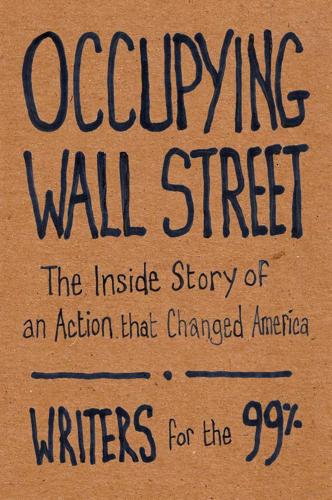
Occupying Wall Street: The Inside Story of an Action That Changed America
by
Writers For The 99%
Published 17 Dec 2011
Undergraduate organizers explicitly took inspiration from the storied CUNY student organization SLAM which took on tuition increases in the 1990s, as well as the 1969 occupation of City College by the black and Puerto Rican students, an action which resulted in the “open admissions policy” for CUNY and the effective desegregation of the CUNY system. Nevertheless, the spread-out geography of the CUNY system, its size and the busy lives of working-class CUNY students who often balance school, work parenthood and other family obligations, make CUNY organizing a mammoth task. The planning for the Day of Action was greatly helped by an alliance with students in private colleges.
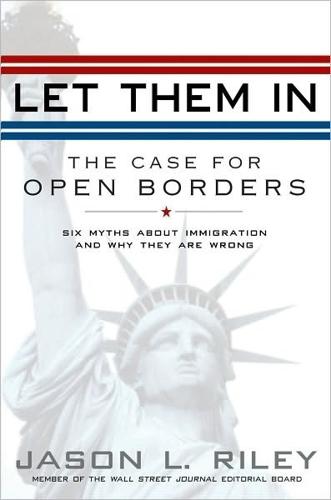
Let Them In: The Case for Open Borders
by
Jason L. Riley
Published 14 May 2008
The editor of Social Contract Press, founded by Tanton in 1990, is Wayne Lutton, another ardent white nationalist. Lutton is a trustee at Jared Taylor’s New Century Foundation and speaks at American Renaissance events. He sits on the advisory board of the Council of Conservative Citizens, the successor group to the White Citizens’ Council that fought desegregation in the 1950s and 1960s. Pseudonymously, Lutton writes articles for The Journal of Historical Review, the in-house publication of the Holocaust-denying Institute for Historical Review. In 1994, he and Tanton coauthored a book titled The Immigration Invasion. When I travel the country to report on immigration, or speak to groups in the know about Tanton and his network, I’m often asked why the mainstream media continue to cite groups like FAIR and the Center for Immigration Studies (CIS) without mentioning their origins or ulterior motives.
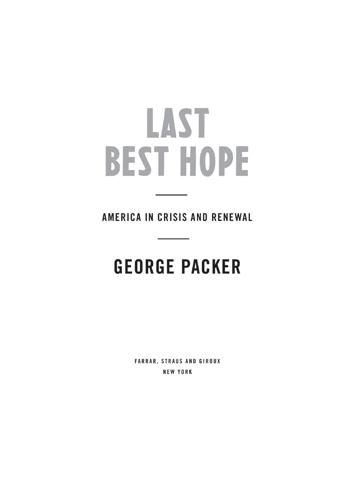
Last Best Hope: America in Crisis and Renewal
by
George Packer
Published 14 Jun 2021
“I had a sense of what ‘the Government of the United States,’ put into just those words, means in its influence, leadership, and conscience for all the people of the United States.” Perkins spent the twelve years of Roosevelt’s presidency doing more than anyone other than FDR himself to make the New Deal a reality. Everything on her list became law, most notably social security, changing the basic relation of Americans to their government. She also desegregated the Labor Department cafeteria, tried (and failed) to bring large numbers of Jewish refugees from Hitler into the country, survived a congressional impeachment effort, and endured endless insults in the press. If her story isn’t familiar to you, perhaps it’s because she had to be careful not to overshadow the men
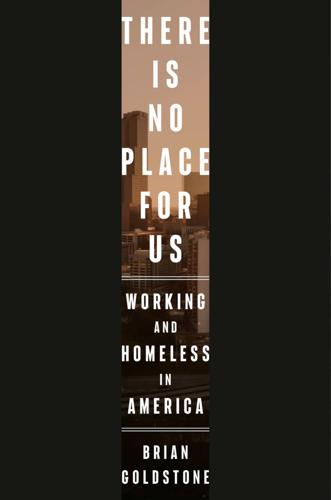
There Is No Place for Us: Working and Homeless in America
by
Brian Goldstone
Published 25 Mar 2025
By the 1970s, the racial and economic composition of public housing had undergone a drastic shift. Over the previous two decades, white families had been steadily leaving projects like Techwood for the suburbs, where they could take advantage of federally subsidized low-interest mortgages largely denied to minority families. A result was that when whites-only projects were finally desegregated in the late 1960s, these buildings had a large number of vacant apartments: the demand for such units among white families had dramatically diminished. This, combined with growing pressure to loosen eligibility requirements, led local housing authorities to begin accepting more and more low-income applicants.
…
GO TO NOTE REFERENCE IN TEXT As late as 1968: Vale, Purging the Poorest. GO TO NOTE REFERENCE IN TEXT Over the previous two decades: La-Brina Almeida, “A History of Racist Federal Housing Policies,” August 6, 2021, Massachusetts Budget and Policy Center. GO TO NOTE REFERENCE IN TEXT when whites-only projects were finally desegregated: Vale, Purging the Poorest, 18. GO TO NOTE REFERENCE IN TEXT This, combined with growing pressure: Vale, Purging the Poorest. GO TO NOTE REFERENCE IN TEXT It was at this point: Richard Rothstein, “Race and Public Housing,” Economic Policy Institute, December 17, 2012.
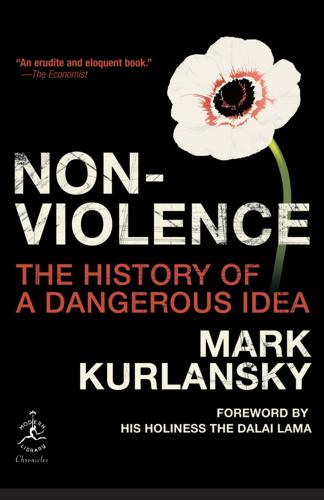
Nonviolence: The History of a Dangerous Idea
by
Mark Kurlansky
Published 7 Apr 2008
“In a world built on violence,” he wrote in a 1928 essay, “one must be a revolutionary before one can be a pacifist.” With World War II in progress, it was difficult to attract support for nonviolence in international affairs, but Muste believed that the techniques of nonviolent resistance would prove particularly effective in race issues, such as the desegregation of the South. In seeking a new young staff for the FOR, he brought in James Farmer, a large man with a booming voice who had recently received a doctorate from Howard University, where he had studied the teachings of Gandhi. Farmer was a Southerner, the son of a college professor. His father, the son of slaves, on receiving a Ph.D. from Boston University in 1918, became one of only twenty-five African-Americans ever to hold a Ph.D.
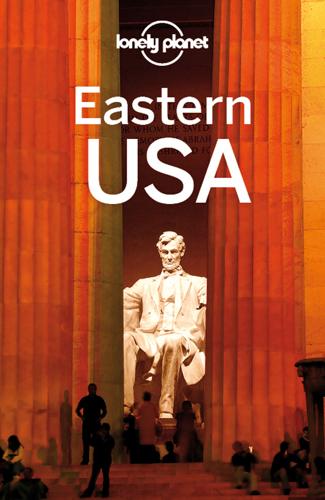
Eastern USA
by
Lonely Planet
Following its defeat the state walked a tense cultural tightrope, accruing a layered identity that included older aristocrats, a rural and urban working class, waves of immigrants and today, the burgeoning tech-heavy suburbs of DC. The state revels in its history, yet still wants to pioneer the American experiment; thus, while Virginia only reluctantly desegregated in the 1960s, today it houses one of the most ethnically diverse populations of the New South. Northern Virginia Hidden within its suburban sprawl exterior, ‘NOVA’ mixes small-town charm with metropolitan chic. Colonial villages and battlefields bump up against skyscrapers, shopping malls and world-class arts venues.
…
ALABAMA FACTS »Nickname The Heart of Dixie »Population 4.7 million »Area 52,419 sq miles »Capital city Montgomery (population 224,119) »Other cities Birmingham (population 212,237) »Sales tax 4%, but up to 11% with local taxes »Birthplace of Author Helen Keller (1880–1968), civil rights activist Rosa Parks (1913–2005), musician Hank Williams (1923–53) »Home of US Space & Rocket Center »Politics GOP stronghold – Alabama hasn’t voted democratic since 1976 »Famous for Rosa Parks and the Civil Rights movement »Bitterest rivalry University of Alabama vs Auburn University »Driving distances Montgomery to Birmingham 91 miles, Mobile to Dauphin Island 38 miles History Alabama was among the first states to secede in the Civil War. Montgomery was the first Confederate capital. Alabama lost around 25,000 soldiers in the war, and reconstruction came slowly and painfully. Racial segregation and Jim Crow laws survived into the mid-20th century, when the Civil Rights movement campaigned for desegregation of everything from public buses to private universities, a notion that Governor George Wallace opposed. In perhaps the most famous moment in civil rights history, an African American woman named Rosa Parks refused to give up her bus seat to a white passenger and was arrested; the ensuing uproar began to turn the tide in favor of racial equality.
…
The Hillcrest Neighborhood toward west Little Rock is a tiny epicenter of cafes and funky shops and is a communing ground for minority strains of counterculture in the city. Little Rock Central High School HISTORIC SITE (www.nps.gov/chsc; 2125 Daisy Bates Dr; 9:30am-4:30pm, tours 9am & 1:15pm Mon-Fri mid-Aug–early Jun) Little Rock’s most riveting attraction is the site of the 1957 desegregation crisis that changed the country forever. It was here that a group of African American students known as the Little Rock Nine were first denied entry inside the then all-white high school (despite a 1954 Supreme Court ruling forcing the integration of public schools) then escorted by the 1200-man 101st Airborne Battle Group, a pivotal moment in the American Civil Rights Movement.
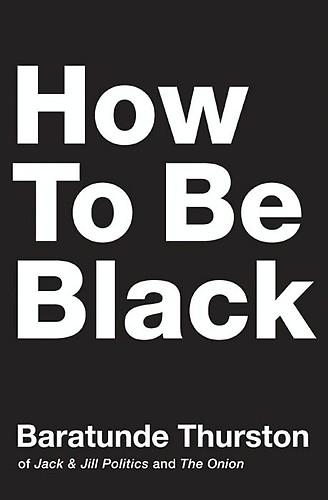
How to Be Black
by
Baratunde Thurston
Published 31 Jan 2012
No one ever asked that, because such seating arrangements were “normal.” You don’t question ten tables of nearly all white children dining. You question the one or two with nearly all black children dining. Questions implying that a black student group should not be able to control its money or that forced desegregation at cafeteria tables might be needed were notable among the set of White People Questions I experienced at Sidwell. However, my favorite by far was the following: Why don’t we have a White Student Union? I remember the student who asked this. She was confused by the existence of “students of color” meetings and the Black Student Union.

Let's Explore Diabetes With Owls
by
David Sedaris
Published 22 Apr 2013
Someone who lives in a mansion spun of golden floss, forget it, but someone who lives in an old refrigerator beside a drainage ditch—by all means, call me! Collect, even. “You need people like that in your life so you can feel better about yourself,” my mother used to tell me. The first time she said it, I was fourteen and had recently begun the ninth grade. Our school system had just desegregated, and I wanted to invite one of my new classmates to a party at my grandmother’s apartment complex. The girl I had in mind, I’ll call her Delicia, was pretty much my exact opposite—black to my white, fat to my thin—and though my family was just middle-class, I felt certain we were wealthy when compared to hers.

The Passenger
by
The Passenger
Published 27 Dec 2021
You could hear jazz coming from a tapas restaurant at the end of Botanic Avenue. The new Titanic Belfast museum spoke to the notion that even the heaviest things can be dredged up from the bottom of the sea. In the countryside the barbed wire was taken down from the checkpoints. Military radio towers were toppled. Slowly the schools were becoming desegregated, old alliances torn down. Immigrants arrived. New faces, new glances, new vistas. There were even Muslim city councillors who suffered the wrath of Catholics and Protestants alike. (There is an old joke that runs the streets of Belfast. A thug walks up to a man in the street and asks him if he is Catholic or Protestant.

The Survival of the City: Human Flourishing in an Age of Isolation
by
Edward Glaeser
and
David Cutler
Published 14 Sep 2021
early childhood programs: Heckman et al., “The Rate of Return to the High/Scope Perry Preschool Program.” The 1971 case: “Swann v. Charlotte-Mecklenburg Board of Education,” Oyez. Milliken v. Bradley: “Milliken v. Bradley, 418 U.S. 717 (1974),” Justia: US Supreme Court, 418. The busing battles: “Violence Erupts in Boston over Desegregation Busing,” History.com. Children born between: Chetty et al., “The Opportunity Atlas.” If one ranked all 330 million: The Opportunity Atlas data provides outcomes in terms of percentiles in the income distribution. We have multiplied each percentile point by 1 percent of the total American population, or 3.28 million, and rounded.
…
Villianatos, Mark, and Madeline Brozen. “Encouraging Diverse Missing-Middle Housing Near Transit.” UCLA Lewis Center for Regional Policy Studies Policy Briefs, May 1, 2019. www.lewis.ucla.edu/research/encouraging-diverse-missing-middle-housing-near-transit. “Violence Erupts in Boston over Desegregation Busing.” History.com, September 12, 1974. www.history.com/this-day-in-history/violence-in-boston-over-racial-busing. Voigtländer, Nico, and Hans-Joachim Voth. “How the West ‘Invented’ Fertility Restriction.” American Economic Review 103, no. 6 (October 2013): 2227–64. https://doi.org/10.1257/aer.103.6.2227.
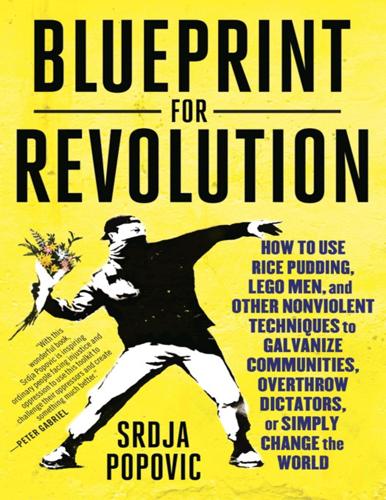
Blueprint for Revolution: How to Use Rice Pudding, Lego Men, and Other Nonviolent Techniques to Galvanize Communities, Overthrow Dictators, or Simply Change the World
by
Srdja Popovic
and
Matthew Miller
Published 3 Feb 2015
While giving instructions to one group of activists at his church about marching through the streets, he went out of his way to caution his listeners, “We don’t want a white person with a negro of the opposite sex, because we don’t want to ght that battle.” It was a battle that needed to be fought, but not just yet. In the 1960s, desegregation was possible, but mixed-race relationships weren’t. But they sure as hell would be—in time. Back in my younger days, when everyone was running around Belgrade playing cat-and-mouse games with Milošević’s goons, we spent a lot of time thinking about what small battles we could win and which were just a waste of our time and enthusiasm.
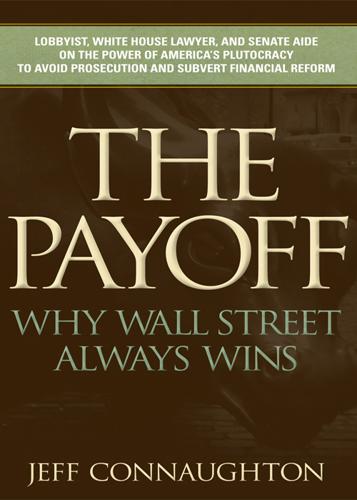
The Payoff
by
Jeff Connaughton
Not fully happy with himself as he was, he tried—in little ways that had big consequences for his campaign—to be someone else. The campaign flailed frantically, trying to stay afloat. Biden himself briefly stepped out of the Bork hearings to call an elderly African-American man who had been a cook at the diner that Biden had claimed he’d helped desegregate at a sit-in in the 1960s: “Do you remember? I was there. Can you tell people you remember me?” By then even Biden must have known it was over. On the morning of September 23, 1987, Ted told me to call the fundraising captains across the country to let them know that Biden would withdraw that day at a 1:00 p.m. press conference.

Attempting Normal
by
Marc Maron
Published 28 Apr 2013
The guy probably threw Slim a few bucks after I wandered away defeated. It was the attitude of the whole event that angered me. I wasn’t one of the Jews at the front of a civil rights march or trying to register black voters but, man, I wanted justice for Slim in the amp situation. The South might be desegregated but it may never be integrated. And by “the South” I mean America. After a late show on Friday night in Nashville, I and a couple of other comics headed out to Prince’s. We drove into the parking lot of a small strip mall. Prince’s was the only storefront open. There was a three-hundred-pound man standing in front of the place wearing a tank top, smoking a cigar, and packing a sidearm.
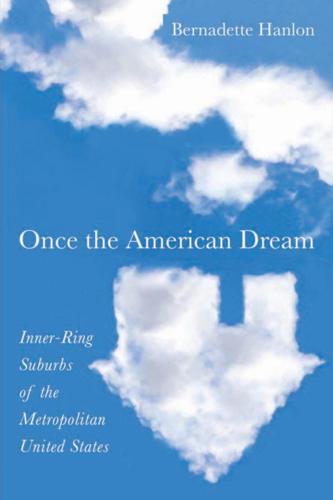
Once the American Dream: Inner-Ring Suburbs of the Metropolitan United States
by
Bernadette Hanlon
Published 18 Dec 2009
According to the Dundalk Renaissance Corporation—the suburb’s community development corporation—Dundalk has the highest concentration of Section 8 rentals among Baltimore’s suburbs. Whether Section 8 or not, rental housing is on the rise. At the same time, homeownership is on the decline, and housing values are dropping in Dundalk. In 2005, in Thompson v. HUD, a federal judge ruled that HUD violated fair housing laws by failing to desegregate public housing in Baltimore City. U.S. District Court Judge Marvin J. Garbis ordered HUD to develop a regional approach to deconcentrating public-housing recipients to suburbs beyond the city. Surrounding suburbs were not part of the lawsuit, and the question remains of how receptive they will be to participating in a regional solution.
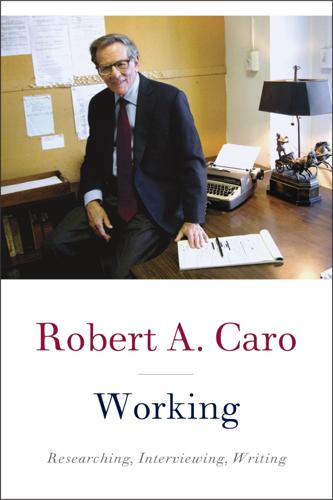
Working
by
Robert A. Caro
Published 8 Apr 2019
“We shall overcome, / we shall overcome, some day. / Oh, deep in my heart, / I do believe / We shall overcome, some day.” “We Shall Overcome” began to be sung a lot more at the beginning of the Sixties because in a way “We Shall Overcome” is the 1960s. 1960 was, as I wrote, “the year of the first sit-ins to desegregate department store lunch counters in Southern cities. The young, neatly dressed blacks, sworn to nonviolence, sitting on the counter stools were taunted in attempts to make them relinquish their seats….Police arrived, arrested them and flung them into paddy wagons. But they got their breath back, and as the wagons drove off, from their barred windows could be heard: ‘Deep in my heart / I do believe / We shall overcome some day.’ ” So during the next years, as I wrote, the hymn was sung in a thousand sit-ins, during a hundred Freedom Rides.
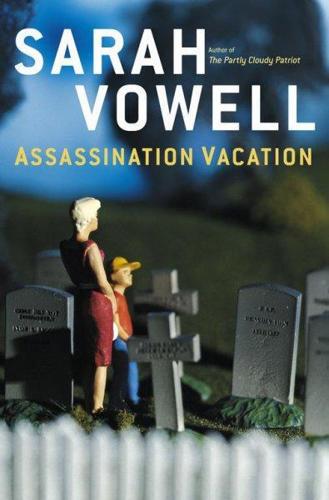
Assassination Vacation
by
Sarah Vowell
Published 28 Mar 2005
Thanks to Marian Anderson, who performed here on Easter Sunday 1939 after the Daughters of the American Revolution barred her from singing at Constitution Hall because of her skin color and of course Martin Luther King Jr., who stood on what he called “this hallowed spot” in 1963 making history with “I have a dream,” the memorial has long been physically and philosophically desegregated. So much so in fact that one time I came to the memorial with my friend Dave and as we were climbing the steps he said, “It looks fake.” “What does?” “These people,” he said, pointing at the other visitors. “Look at them. Every color, from all over the world.” “Why is that fake?” “It’s too perfect, like they were brought here by a casting agent to make a commercial.”

To Show and to Tell: The Craft of Literary Nonfiction
by
Phillip Lopate
Published 12 Feb 2013
It is Jimmy to the rescue, in part because his honesty and passion are very attractive to young people, but also because Baldwin dramatized adolescence again and again as his own particular crucible of selfhood—boy preacher, loss of faith, yearnings to write, father’s death, the forgoing of college, struggles over racial bitterness and sexual preference—and sympathized so warmly with the efforts of all youth to forge an identity. In an essay entitled “They Can’t Turn Back,” on the students trying to desegregate southern schools, he writes, parenthetically and characteristically, about the really agonizing privacy of the very young. They are only beginning to realize that the world is difficult and dangerous, that they are, themselves, tormentingly complex and that the years that stretch before them promise to be more dangerous than the years that are behind.
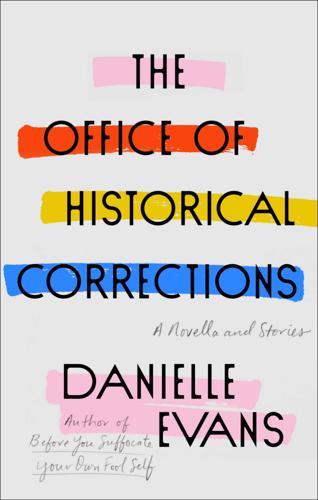
The Office of Historical Corrections: A Novella and Stories
by
Danielle Evans
Published 12 Nov 2020
I had abandoned the actual religion I was raised with as soon as I got to college, but when in moments of despair I needed the inspiration of a triumphant martyr figure who made me believe in impossible things, I thought not of saints or saviors but of my mother. When she was pregnant with me, she’d gone down to Louisiana on behalf of the Justice Department, charged with enforcing a school desegregation order that was nearly older than she was. She was twenty-five and six months pregnant, fresh out of law school and the sole employee sent to investigate. When she arrived, she was shepherded around by eleven different Black people who wanted to make sure that she knew the men in the truck who followed her with shotguns were the local Klan.
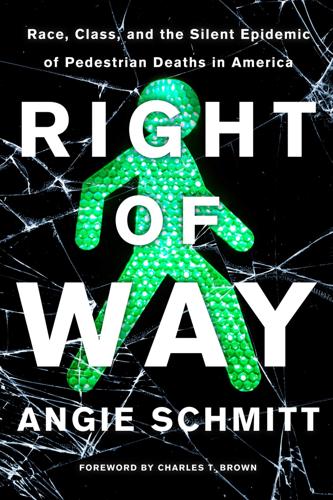
Right of Way: Race, Class, and the Silent Epidemic of Pedestrian Deaths in America
by
Angie Schmitt
Published 26 Aug 2020
Atlanta’s notorious urban sprawl has long since leap-frogged past Clayton County altogether, toward Henry and Fayette Counties to the south. Clayton County is now a suburban county. But the face of the suburbs is changing, and in many ways, the old infrastructure is ill-suited to this new era. Clayton County saw its first big boom in the mid-1970s, as blue-collar white workers flooded into the county, fleeing desegregation orders in the Atlanta public schools. Growing bedroom communities like Clayton, Cobb, and Gwinnett Counties made little to no accommodation for pedestrians. This period of suburban growth coincided with the height of the highway era in the United States. The Interstate Highway System, started under President Dwight D.

Internet for the People: The Fight for Our Digital Future
by
Ben Tarnoff
Published 13 Jun 2022
When Hurricane Sandy flooded the Brooklyn neighborhood of Red Hook in 2012, the power went out and cell phones stopped working, but the area’s mesh network stayed up, keeping residents connected and enabling them to coordinate the emergency response. If localism brings many benefits, however, it also carries some significant risks. The community is not something to fetishize. “Local control” has a long, racist history in American life. Under its banner, communities have resisted school desegregation, blocked affordable housing projects, and hoarded public money in the places that least need it. There are rich communities and poor communities, and the former tend to find ways of keeping their advantages out of the hands of the latter. Decentralization is not inherently democratizing: it can just as easily serve to concentrate power as to distribute it.

Happy-Go-Lucky
by
David Sedaris
Published 30 May 2022
we say, pointing to a bro dozer with a Confederate flag affixed to it. “That’s what a racist looks like.” When I was in seventh grade, I acted as campaign manager for Dwight Bunch, one of the three Black students at Carroll Junior High. He ran for class president—and won—with my brilliant slogan “We Like Dwight a Bunch.” Two years later our school was desegregated. Fights broke out in the parking lot. My friend Ted had his nose broken with a Coke bottle. In our twenties we both dated a number of Black guys, which I always thought made us the opposite of racists. I didn’t have sex with them because of their color but just because they were there and willing.

Jaws
by
Sandra Kahn,Paul R. Ehrlich
Published 15 Jan 2018
In the case of breastfeeding, passage of state and federal laws making it legal for women to breastfeed in public throughout the United States,16 have increased the practice, especially among minority women.17 Large-scale cultural changes are notoriously difficult to accomplish, but the eventual success of campaigns like those for desegregation, gay rights, and the reduction of smoking shows they can work. With public education efforts and political action (such as campaigning for education programs during school board elections), support for the importance of good oral posture (including classroom chairs that encouraged it18) could become part of the curriculum in the first few years of school.19 Efforts could be made to get more school cafeterias to serve more nutritious and chewy food and schools to offer courses for all students to build knowledge of sound nutrition and proper oral posture.
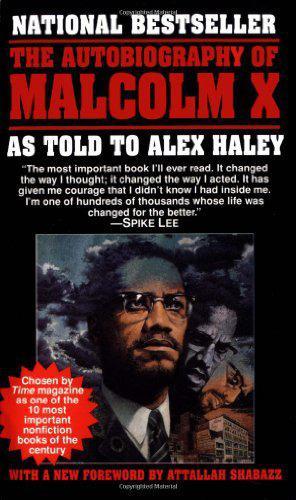
The autobiography of Malcolm X
by
Malcolm X; Alex Haley
Published 15 Aug 1999
“That was one of the greatest magical feats ever performed in America,” I'd tell them. “Do you mean to tell me that nine Supreme Court judges, who are past masters of legal phraseology, couldn't have worked their decision to make it stick as _law_? No! It was trickery and magic that told Negroes they were desegregated-Hooray! Hooray!-and at the same time it told whites 'Here are your loopholes.'” The reporters would try their utmost to raise some “good” white man whom I couldn't refute as such. I'll never forget how one practically lost his voice. He asked me did I feel _any_ white men had ever done anything for the black man in America.
…
Indeed, how _can_ white society atone for enslaving, for raping, for unmanning, for otherwise brutalizing _millions_ of human beings, for centuries? What atonement would the God of Justice demand for the robbery of the black people's labor, their lives, their true identities, their culture, their history-and even their human dignity? A desegregated cup of coffee, a theater, public toilets-the whole range of hypocritical “integration”-these are not atonement. After a while in America, I returned abroad-and this time, I spent eighteen weeks in the Middle East and Africa. The world leaders with whom I had private audiences this time included President Gamal Abdel Nasser, of Egypt; President Julius K.
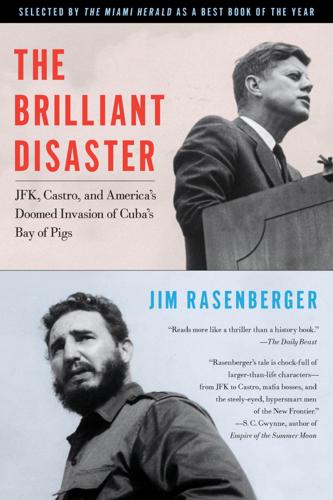
The Brilliant Disaster: JFK, Castro, and America's Doomed Invasion of Cuba's Bay of Pigs
by
Jim Rasenberger
Published 4 Apr 2011
Fulbright had backbone and decency, but he was, like many complex thinkers—particularly those who make their living as politicians—a frequently disappointing man. His principles seemed to fail him, for example, when it came to civil rights. Enlightened as his views were on international relations, his views on desegregation were no more, and perhaps less, progressive than those of his fellow southern Democrats. This was one reason why Kennedy had passed him over as secretary of state, a job he wanted and most Washington insiders assumed he would win even over strong contenders such as Stevenson, Bowles, and Rusk.
…
The president was disappointed if he hoped to use the Mass as a last chance for solemn reflection on Cuba. As if to remind Kennedy that presidents never have the luxury of confronting one serious issue at a time, the local pastor addressed himself—and Kennedy—to another unfolding drama in America that spring, the civil rights movement. The pastor delivered a prayer for desegregation. Half an hour later, Kennedy was back outside, ready to return home. Havana, Early Afternoon AS KENNEDY WAS leaving the Catholic Mass in Middleburg, Fidel Castro was concluding a two-and-a-half-hour funeral oration to a crowd of ten thousand at a Catholic cemetery in Havana. He stood at the gravesides of seven victims killed in Saturday’s air strikes.
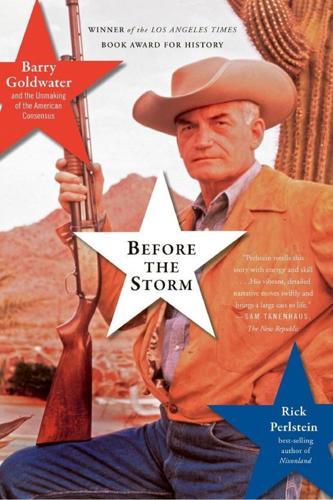
Before the Storm: Barry Goldwater and the Unmaking of the American Consensus
by
Rick Perlstein
Published 17 Mar 2009
; ”PLATFORM COMMITTEE—DON’T BE RAILROADED!” A significant plurality were Southerners. The convention had become a proxy fight in America’s second civil war. The day’s newspapers reported that Greensboro, birthplace twenty-two weeks earlier of the still-spreading sit-in movement, was on the verge of yielding to pressure to desegregate its restaurants. Congress debated whether the Temporary Commission on Civil Rights authorized by the 1957 Civil Rights Act would become a permanent Fair Employment Practices Commission. Liberal Republicans pointed out that their party owed Negro voters for one hundred years of loyalty. But the party was increasingly becoming a redoubt for those who either wished blacks ill or viewed them with indifference.
…
When the Senate passed the Civil Rights Act of 1960 in April, once again the Republican senators were unanimously in favor—or at least the ones who voted; thirty-one GOP senators stuck their finger in shifting winds and avoided the session entirely. Thanks to Rockefeller, Nixon hit the campaign trail with a platform supporting voting rights, desegregation, and a commission on equal job opportunity. But in Los Angeles the Democrats—whose 1956 platform complimented the South for resisting Brown—did the GOP one better: their unprecedentedly liberal platform (the platform hearings had been chaired by National Review whipping boy Chester Bowles) demanded timetables for federal integration efforts.
…
For the Hall of Free Enterprise, see GRR, March 16, 1964, and April 13, 1964. 328 For the board of education’s latest busing plan, see NYT, March 26, 1964. For Thirteen Most Wanted Men story, see Rainer Crone, Andy Warhol (New York: Praeger, 1970), 30. 328 For CORE and World’s Fair’s opening day, see Jacoby, Someone Else’s House, 15-32. For Farmer’s speech before the ASNE, see “Demonstrations North and South as the Pressure for Desegregation Grows,” NYT, April 19, 1964. 328 Johnson at the World’s Fair is in Jacoby, Someone Else’s House, 31. 329 Lippmann column on filibuster is quoted in Ronald Steel, Walter Lippmann and the American Century (Boston: Little, Brown, 1980), 553. 329 For Goldwater not campaigning in Oregon, see Shadegg, What Happened, 113; and John Kessel, The Goldwater Coalition: Republican Strategies in 1964 (Indianapolis : Bobbs-Merrill, 1968), 69.

Gaza in Crisis: Reflections on Israel's War Against the Palestinians
by
Ilan Pappé
,
Noam Chomsky
and
Frank Barat
Published 9 Nov 2010
Instead of facilitating futile encounters—unnecessary at any rate as they can take place at any given moment on the ground—they can provide venues for strategizing around the campaign for changing the policies of Western governments and for pondering a more genuine and comprehensive solution for the conflict. Desegregating the activity of civil society in the West, as well as inside Israel, illustrates the very essence of a one-state solution when the one-state movement is still in its embryonic stage. An activity around themes, and not according to national, religious, or ethnic identity, can be the unique contribution of the one-state movement.
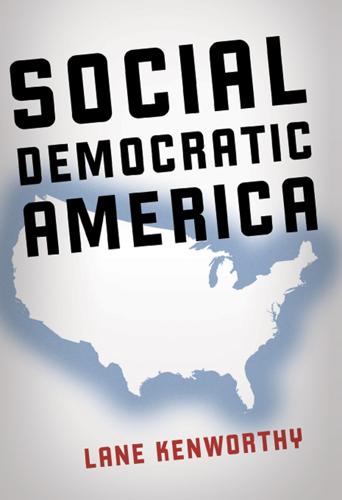
Social Democratic America
by
Lane Kenworthy
Published 3 Jan 2014
An American born into a family in the bottom fifth of incomes between the mid-1960s and the mid-1980s has roughly a 30 percent chance of reaching the middle fifth or higher in adulthood, whereas an American born into the top fifth has an 80 percent chance of ending up in the middle fifth or higher.44 Between the mid-1800s and the 1970s, differences in opportunity based on family circumstances declined steadily.45 As the farming-based US labor force shifted to manufacturing, many Americans joined the paid economy, allowing an increasing number to move onto and up the income ladder. Elementary education became universal, and secondary education expanded. Then, in the 1960s and 1970s, school desegregation, the outlawing of discrimination in college admissions and hiring, and the introduction of affirmative action opened economic doors for many Americans. But since the 1970s, we have been moving in the opposite direction. A host of economic and social shifts have widened the opportunity gap between Americans from low-income families and those from high-income families.
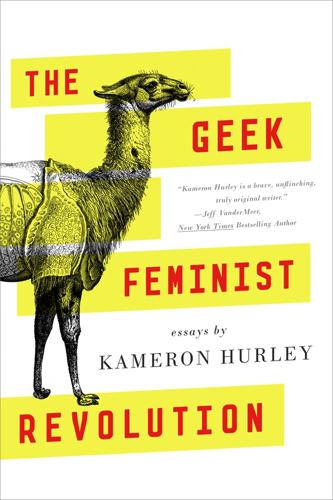
The Geek Feminist Revolution
by
Kameron Hurley
Published 1 Jan 2016
So when people tell me that including “so many” nonwhite characters in my fiction is “political” or that I’m trying to make some kind of “statement,” I can’t help countering with the fact that the “statement” made by every writer with a white monochrome world is also deeply political, even more so because it’s based on a false sense of normal that’s been carefully and systematically constructed for hundreds of years in this country (and others). I like to think that some folks slowly wake up to that lie, but until we succeed in desegregating the ways we live and work and actually start populating our media with an accurate representation of what our world looks like, I figure we’re still in for another fifty years of clunky—and increasingly ridiculous-looking—whitewashing. As a creator, as a media-maker, I know I can choose to blindly perpetuate those myths, or help overturn them.

Give People Money
by
Annie Lowrey
Published 10 Jul 2018
By 1950, about one in five white adults had attended college, versus one in twenty black adults. Researchers estimate that a “truly ‘separate but equal’ ” education system would have cut black-white wage inequality by as much as half. Again, such inequalities persist. Sixty years after Brown v. the Board of Education—the landmark case that desegregated the public school system—schools with predominantly white students spend $733 more per pupil than schools with predominantly minority students, a report by the Center for American Progress has found. And in some ways, educational segregation has gotten worse in recent years, the writer Nikole Hannah-Jones has shown.
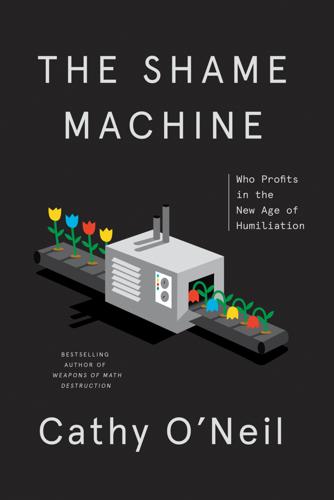
The Shame Machine: Who Profits in the New Age of Humiliation
by
Cathy O'Neil
Published 15 Mar 2022
People who experience a twinge of guilt about moving from the city to a rich white suburb for its good schools might feel ennobled by sharing on Instagram a video of a Karen caught in the act, and packaging it with a biting put-down. While this may be satisfying, it sets too low a bar for anti-racist creds. It’s much harder—but more necessary—to desegregate schools, open up zoning, and extend economic opportunities. Focusing on Karen episodes “lets white people off the hook,” wrote Christian Cooper, the Central Park bird-watcher in a Washington Post op-ed. “They can scream for her head while leaving their own prejudices unexamined.” Giving in to online rage can also trigger what is now known as “white fragility.”

This Is Not Propaganda: Adventures in the War Against Reality
by
Peter Pomerantsev
Published 29 Jul 2019
Proclaiming the message so loudly meant that policy and practice needed to at least vaguely match promises. As early as 1949 the ‘Negro question’ had been highlighted by the US embassy in Moscow as a ‘principal Soviet propaganda theme’, one which had to be battled at home for the sake of US foreign policy.7 During the 1950s the US Justice Department could argue that desegregation inside the US was important as it would help promote the country’s international image as a bastion of freedom. In the early 1970s, in the aftermath of the Vietnam War, American support for coups in Chile and US intervention in the Dominican Republic, Congress held hearings on human rights abuses in those countries.
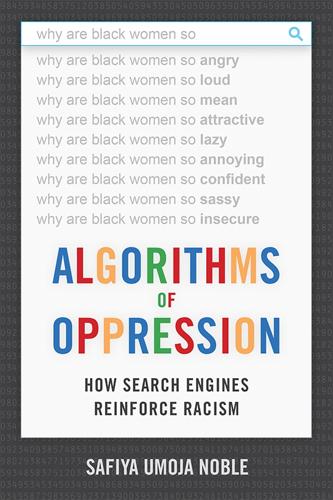
Algorithms of Oppression: How Search Engines Reinforce Racism
by
Safiya Umoja Noble
Published 8 Jan 2018
Yet the foremost national authority on hate organizations, the Southern Poverty Law Center, tracks and describes the CCC this way: The Council of Conservative Citizens (CCC) is the modern reincarnation of the old White Citizens Councils, which were formed in the 1950s and 1960s to battle school desegregation in the South. Among other things, its Statement of Principles says that it “oppose[s] all efforts to mix the races of mankind.” Created in 1985 from the mailing lists of its predecessor organization, the CCC, which initially tried to project a “mainstream” image, has evolved into a crudely white supremacist group whose website has run pictures comparing the late pop singer Michael Jackson to an ape and referred to black people as “a retrograde species of humanity.”
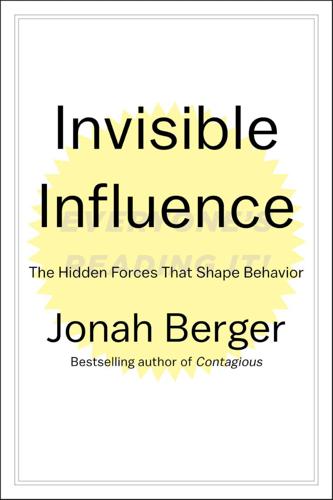
Invisible Influence: The Hidden Forces that Shape Behavior
by
Jonah Berger
Published 13 Jun 2016
For Fordham and Ogbu’s original research, see Fordham, Signithia, and John Ogbu (1986), “Black Students’ School Successes: Coping with the Burden of ‘Acting White,’ ” Urban Review 18, 176–206. For other discussions of acting white, see Carbado, Devon, and Mitu Gulati (2013), Acting White? Rethinking Race in “Post-Racial” America (New York: Oxford University Press); and Buck, Stuart (2011), Acting White: The Ironic Legacy of Desegregation (New Haven: Yale University Press). Some researchers have even challenged Fordham and Ogbu’s conclusions, arguing that both black and white students want to succeed in school and that both show higher levels of self-esteem when they do well. These researchers have suggested that successful students of all races are stigmatized for being geeks or nerds, and so, rather than being about race, the dilemma is about high achievement more broadly.

The Broken Ladder
by
Keith Payne
Published 8 May 2017
Black children’s choices were more varied and shaped by their context. For example, black children in segregated all-black schools preferred the white dolls, suggesting that they were absorbing the same cultural messages of white superiority that the white children were. By the late 1960s, as desegregation was taking place, black children in integrated schools began to show no preference, or sometimes to prefer the black dolls. In the decades since, researchers have run dozens of versions of the doll studies, most focused on children between the ages of three and seven. Among black children, the pattern remains varied and seems tied to their local backgrounds and experiences, as was the case in the original studies.

Where We Want to Live
by
Ryan Gravel
Published 2 Feb 2016
I don’t ever remember walking to buy groceries, but as a kid in the 1980s we made that half-mile journey almost daily to play video games at Razzle Dazzle or to get ice cream and Cokes at Sugar Bear. The construction of Huntley Hills corresponds exactly with the large social, cultural, and political shifts taking place in Atlanta and across America, including the desegregation of public schools, white flight out of central cities, growing dependence on two cars per family, and massive public investment in highways and other roadway infrastructure. In fact, the development of Huntley Hills was almost certainly incentivized by the concurrent construction of I-285, Atlanta’s now-infamous perimeter expressway, which opened as a four-lane highway in 1969.
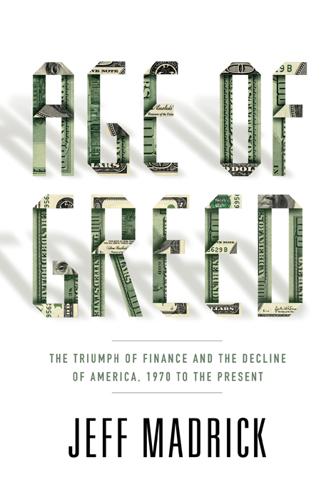
Age of Greed: The Triumph of Finance and the Decline of America, 1970 to the Present
by
Jeff Madrick
Published 11 Jun 2012
Franklin Roosevelt was the natural enemy of these believers, his waywardness and dangerous ways, as they labeled them, frequent dinner conversation for many. High taxes were justified by the war, some conceded, but after Harry Truman’s presidency these believers feared the spread of progressivism even under his Republican successor, Dwight Eisenhower. Desegregating the Little Rock, Arkansas, schools became the symbol of the misuse of federal power. These conservatives also felt that Eisenhower’s program to build the interstate highways overstepped federal bounds. For a while, the believers lost major elections: Nixon to John F. Kennedy in 1960, Barry Goldwater to Lyndon Johnson in 1964.
…
The society soon drew tens of thousands of members, many in Southern California, where one chapter after another was opened in the early 1960s. Welch wrote a self-published book accusing not only Harry Truman but also Eisenhower and his secretary of state, John Foster Dulles, of being part of a Soviet conspiracy. He had also demanded the impeachment of Chief Justice Earl Warren, who wrote the Little Rock decision desegregating the public schools. Rousselot was an early and consistent supporter, but William Buckley, also an early member of the Birch Society, turned against it as extremist. According to Lou Cannon, Ronald Reagan’s biographer, Uhler joined the Birchers, but only for six months. In 1958, Governor Pat Brown started raising taxes and establishing ambitious government programs.
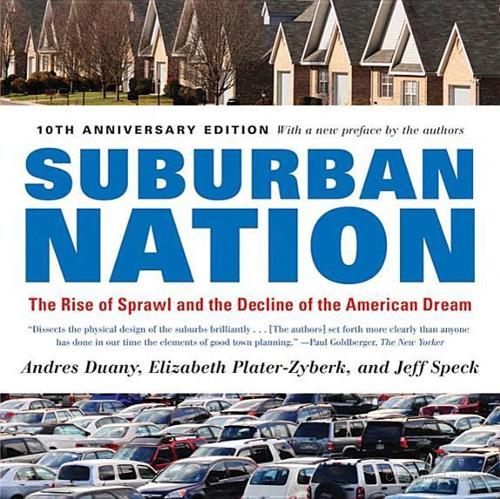
Suburban Nation
by
Andres Duany
,
Elizabeth Plater-Zyberk
and
Jeff Speck
Published 14 Sep 2010
dp Indeed, new laws that are apparently unrelated to sprawl can also be used to encourage healthy growth. For example, any program that offers state (or federal) funding to local municipalities can tie that funding to smart-growth criteria. This would mirror President Johnson’s use of Medicare as a tool to desegregate Southern hospitals, by denying Medicare dollars to whites-only facilities. dq The overly large school sites often result from requirements for one-story buildings, voluminous parking, future portable-classroom additions, and redundant playing fields. As schools follow this pattern they become Lulus (locally undesirable land uses), requiring distant siting and generating heavy traffic.
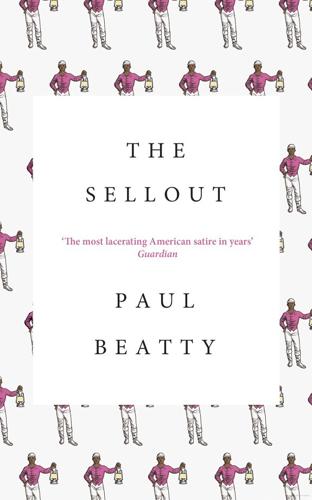
The Sellout: A Novel
by
Paul Beatty
Published 2 Mar 2016
Neither does a local media used to gangland slayings and a seemingly endless supply of psycho killers. So when Foy clacked two shots at the back end of his Mercedes crookedly parked on Rosecrans, the crowd only parted wide enough to create a fire lane through which the white kids could reach the relative safety of their school bus, where they lowered themselves into their seats. Desegregation is never easy in any direction, and after Foy fired two more rounds into their civil rights movement, progress would be even slower, because the Freedom Bus had a couple of flat tires. Foy pumped another shot into the Mercedes-Benz logo. This time the trunk popped open in that slow, majestic way that only Mercedes trunks do, and he grabbed an old bucket of whitewash out of the back.
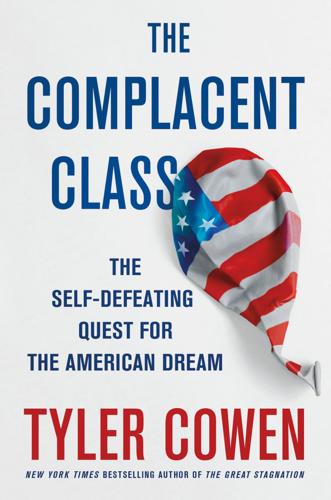
The Complacent Class: The Self-Defeating Quest for the American Dream
by
Tyler Cowen
Published 27 Feb 2017
Jencks, Christopher, and Susan E. Mayer. “The Social Consequences of Growing Up in a Poor Neighborhood.” In Laurence E. Lynn Jr. and Michael G. H. McGeary, eds., Inner-City Poverty in the United States, 111–186. Washington, DC: National Academies Press, 1990. Johnson, Rucker C. “Long-Run Impacts of School Desegregation & School Quality on Adult Attainments.” National Bureau of Economic Research Working Paper 16664, August 2015. Johnson, Steven. “The Creative Apocalypse That Wasn’t.” The New York Times Magazine, August 23, 2015. Jolly, Jennifer. “Matchmaking, with Dogs as Dates.” The New York Times, November 17, 2015.
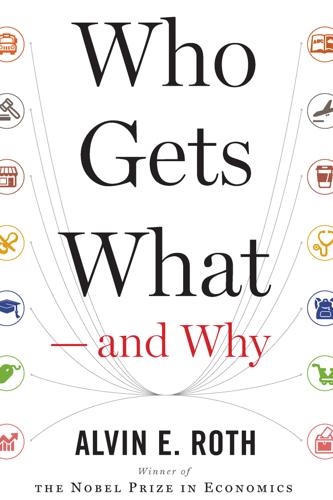
Who Gets What — and Why: The New Economics of Matchmaking and Market Design
by
Alvin E. Roth
Published 1 Jun 2015
School choice divides parents into two “parties.” People who live near good schools become the “walk-to-school party,” while those who live elsewhere become the “school choice party.” The priority policy in Boston (where people still recall the “busing wars” fought there a generation ago during desegregation) represented a compromise between the two, and the details of this compromise were adjusted from year to year based on which groups wielded the most influence. Once adjustments in priorities and related matters had been made, the old Boston system, which is still used in many other cities, worked as follows.
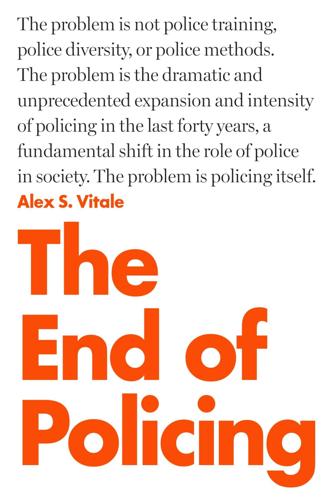
The End of Policing
by
Alex S. Vitale
Published 9 Oct 2017
He also helped drive the adoption of international treaties that allowed for a greater federal role in drug control and spread the prohibitionist ideology internationally.7 The modern War on Drugs really began with Richard Nixon, who saw it as a way of inserting the federal government more forcefully into local law enforcement. This was part of his “Southern Strategy” to win over historically Democratic Southern whites in the wake of desegregation and the civil rights movement.8 Rather than refighting a lost battle, Nixon appealed to white Southerners by using the language of law and order to indicate his desire to keep blacks in check through expanded law enforcement powers. Since most criminal law is handled at the state level, Nixon settled on drug enforcement as his avenue.

Bounce: Mozart, Federer, Picasso, Beckham, and the Science of Success
by
Matthew Syed
Published 19 Apr 2010
The same analysis applies to Jackie Robinson’s debut for the Brooklyn Dodgers. His principal achievement was not to demonstrate that blacks could play baseball—this was already well known from the strength and depth of the Negro leagues. The subversive aspect of Robinson’s debut season was not sporting but symbolic: here was a high-profile and deeply evocative act of desegregation, involving a man of extraordinary character and forbearance. Muhammad Ali drives the point home. Can it be argued that his chief contribution to racial equality was to exhibit black “worth” by winning the heavyweight championship of the world, given that he won the title from a black man, who, in turn won it from another black man?
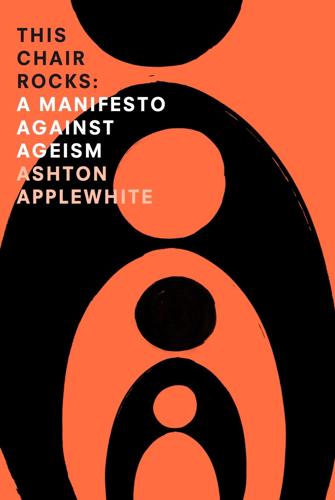
This Chair Rocks: A Manifiesto Against Ageism
by
Ashton Applewhite
Published 10 Feb 2016
The woman felt she’d missed out on a wild youth, discovered rock music in her fifties, and became an avid concert goer, usually alone. She was brave, and she was having a blast—and in a less ageist society, it wouldn’t call for courage. Not to turn this happy groupie into Rosa Parks, but that’s how desegregation happens. People with the most at stake—olders, in this case—step up and step out. They stop conforming. The open-minded welcome them, and incremental social change takes place. Dance floors and rock concerts are examples at one end of the social spectrum. What about hitting a trendy restaurant even if you’ll be the only gray head in the room, or opting for Airbnb even though older travelers tend to default to hotels, or exploring a neighborhood that skews young?
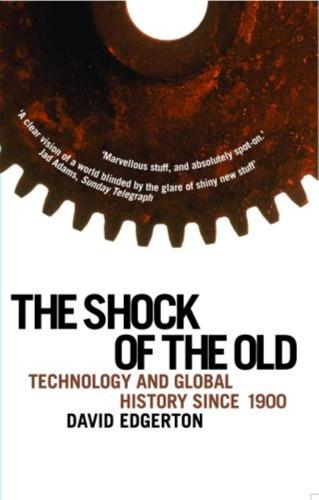
The Shock of the Old: Technology and Global History Since 1900
by
David Edgerton
Published 7 Dec 2006
In the USA the armed services were racially segregated, and the black formations were generally of very low status. There were, for example, no black pilots in the US forces in the interwar years. However, from 1941 there was segregated training for black pilots who would go into segregated squadrons; only after the war were US forces officially desegregated. Bell telephone maintained segregation and did not employ black telephone operators pre-war; after the war they did so only because the labour market forced them to.59 While in the interwar years there were large numbers of black car mechanics and taxi drivers, many whites held blacks to be bad drivers with no mechanical sense.60 No place in the world is more symbolic of the new technologies of the late twentieth century than ‘Silicon Valley’ in California.
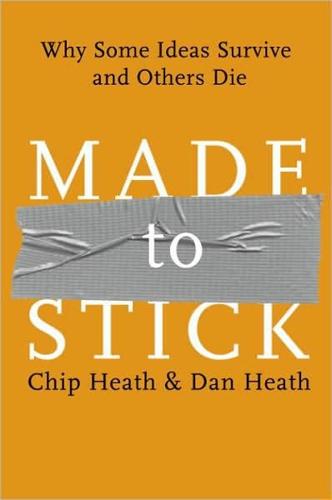
Made to Stick: Why Some Ideas Survive and Others Die
by
Chip Heath
and
Dan Heath
Published 18 Dec 2006
Americans who are likely to be drafted are not more likely to oppose military intervention or escalating conflicts that are under way. Women employed outside the home do not differ from homemakers in their support of policies intended to benefit women at work. On such diverse matters as racial busing for the purpose of school desegregation, anti-drinking ordinances, mandatory college examinations, housing policy, bilingual education, compliance with laws, satisfaction with the resolution of legal disputes, gun control and more, self-interest turns out to be quite unimportant. These findings are bracingly counterintuitive. If people aren’t supporting their own self-interest, whose interests are they supporting?
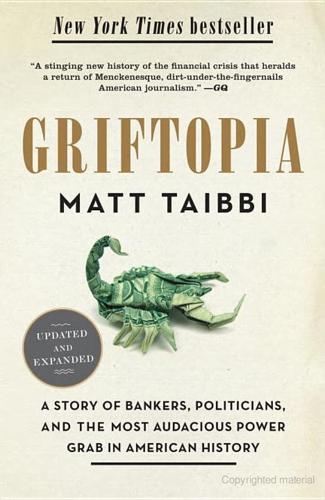
Griftopia: Bubble Machines, Vampire Squids, and the Long Con That Is Breaking America
by
Matt Taibbi
Published 15 Feb 2010
In the case of these Westchester County revolutionaries, the rallying cry was a lawsuit filed jointly by a liberal nonprofit group in New York City and the Department of Housing and Urban Development against the county. The suit alleged that Westchester falsified HUD grant applications, asking for federal grant money without conforming to federal affirmative action guidelines designed to push desegregation. The county lost the suit and as a result was now going to be forced by the federal government to build seven hundred new subsidized low-income housing units in the area. Whereas subsidized housing in the county had historically been built closer to New York City, the new ruling would now place “affordable housing” in places like Elmsford whether Elmsford wanted it or not.
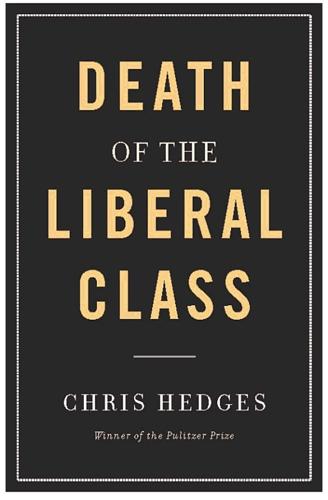
Death of the Liberal Class
by
Chris Hedges
Published 14 May 2010
Though Communists and their allies were the direct victims, the mainstream liberals and former New Dealers within the Democratic Party were the indirect ones. Condoning the campaign against communism did not protect them from being denounced for “losing” China or, like Supreme Court Justice Black, for supporting desegregation in the South. Moreover, because the left had been destroyed, when liberals came under attack they had to defend themselves from a more politically exposed position than they would otherwise have occupied. This may seem obvious, but it is a point that needs to be stressed. The disappearance of the communist movement weakened American liberalism.

Street Smart: The Rise of Cities and the Fall of Cars
by
Samuel I. Schwartz
Published 17 Aug 2015
Ferguson, it upheld the constitutionality of “white” and “colored” sections, enshrining the concept of “separate but equal” facilities for whites and African Americans for the first half of the twentieth century. Five decades later, Rosa Parks refused to take a seat in the back of a public bus in Montgomery, Alabama, igniting the yearlong boycott that was ended by another Supreme Court decision, this time desegregating the city’s buses and consequently public transit throughout the United States. Over and over again, access to public transportation and the promotion of social equality have been joined together at the hip. This isn’t just some vague Progressive liking for diversity for its own sake. Smart streets are diverse, but it’s not a cost: it’s a benefit.
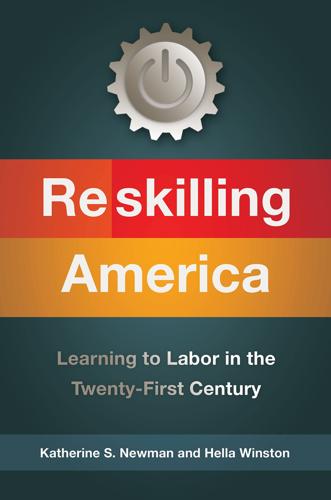
Reskilling America: Learning to Labor in the Twenty-First Century
by
Katherine S. Newman
and
Hella Winston
Published 18 Apr 2016
As Washington put the matter, “The opportunity to earn a dollar in a factory just now is worth infinitely more than the opportunity to spend a dollar in an opera house.”4 He argued that industrial education would benefit his people, and he traded away almost everything else in favor of support for this ambition. Du Bois carried the day. But his emphasis on the aspirations and cultivation of elites faded away in favor of a universal call to open the doors of educational institutions, provide employment opportunities, desegregate housing, and guarantee the right to vote. Everyone should be able to seek a spot among the ranks of the talented tenth. Accommodating to inequality—as Washington was prepared to do in the name of economic security—was unacceptable. Upward mobility into the professions was the path toward respect.

Please Don't Sit on My Bed in Your Outside Clothes: Essays
by
Phoebe Robinson
Published 14 Oct 2021
In fact, quite the opposite happened as the bodies of WOC were violated in order to maintain white dominance. For example, we oft hear about the post–World War II baby boom, which led to an estimated 78.3 million Americans birthed during this period. But looking deeper at this time period reveals a different story for non-white women. Desegregation was a threat to eugenics believers who felt the country would improve greatly if Anglo-Saxons and Nordics bred. Therefore, anyone who didn’t fit in either of those categories—Blacks, Native Americans, and, yes, some poor whites—was sterilized in order to “control” those populations. University of Michigan professor Alexandra Minna Stern writes: In North Carolina, which sterilized the third highest number of people in the United States—7,600 people from 1929 to 1973—women vastly outnumbered men and Black women were disproportionately sterilized.
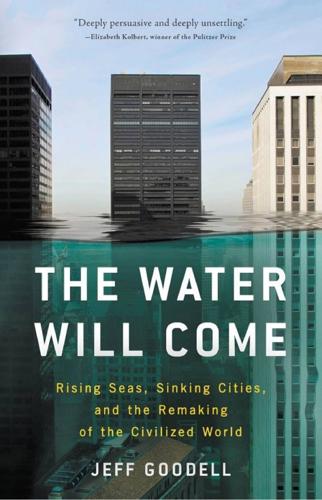
The Water Will Come: Rising Seas, Sinking Cities, and the Remaking of the Civilized World
by
Jeff Goodell
Published 23 Oct 2017
“Their main job is to break things and kill people,” said Sharon Burke, a former assistant secretary of defense and now a senior advisor at New America. God knows there are plenty of ass-kicking generals who don’t care about climate change, scoffingly referring to it as “Mother Nature with a sword.” But the military also prides itself on its practical-mindedness. Military leaders embraced desegregation long before the rest of the nation, in part because they wanted the best people they could find, no matter what color. “It’s about the mission, not the politics,” John Conger, the assistant secretary of defense in charge of military installations, told me when we talked in his Pentagon office.
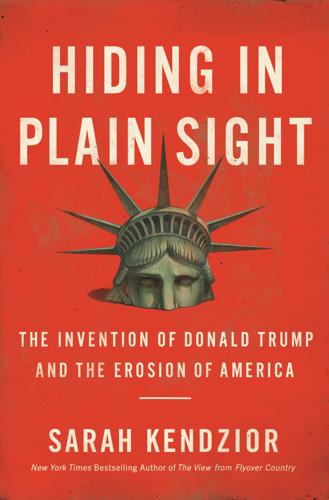
Hiding in Plain Sight: The Invention of Donald Trump and the Erosion of America
by
Sarah Kendzior
Published 6 Apr 2020
The Tea Party capitalized on that preexisting conservative base and pushed it into populism, both manufactured and genuine, as wealthy backers like the Koch brothers stayed quiet while homegrown stars, like Loesch, rose to the fore.16 The Tea Party’s rhetoric became more racist over time, with black Missouri lawmakers among the targets of their wrath.17 The St. Louis white mob—the mob that chased Elijah Lovejoy, the mob that fled the city following the desegregation of schools—was not back, exactly. It had never really gone away, never even gone underground. What was new was the structure of the national media, now dominated by cable news anchors who used heartlanders to parade bigoted ideologies they did not want to overtly claim themselves. In 2012, Missouri’s official bellwether status—the one defined by citizens voting for the presidential winner—was finally eliminated, as Mitt Romney beat Obama 54 percent to 44 percent, a stark departure from Obama’s narrow loss four years earlier.
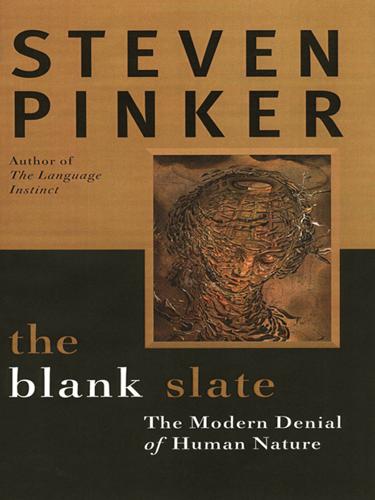
The Blank Slate: The Modern Denial of Human Nature
by
Steven Pinker
Published 1 Jan 2002
It could be completely false only if there were no variation in social status based on intellectual talent (which would require that people not preferentially hire and trade with the talented) or if there were no genetic variation in intelligence (which would require that people be either blank slates or clones). Herrnstein’s argument does not imply that any differences in average intelligence between races are innate (a distinct hypothesis that had been broached by the psychologist Arthur Jensen two years earlier),4 and he explicitly denied that he was making such a claim. School desegregation was less than a generation old, civil rights legislation less than a decade, so the differences that had been documented in average IQ scores of blacks and whites could easily be explained by differences in opportunity. Indeed, to say that Herrnstein’s syllogism implied that black people would end up at the bottom of a genetically stratified society was to add the gratuitous assumption that blacks were on average genetically less intelligent, which Herrnstein took pains to avoid.
…
The most obvious example is the debate on strict constructionism and judicial restraint on one side and judicial activism in pursuit of social justice on the other. Earl Warren, the chief justice of the U.S. Supreme Court from 1954 to 1969, was the prototypical judicial activist, who led the court to implement desegregation and expand the rights of the accused. He was known for interrupting lawyers in mid-argument by asking, “Is it right? Is it good?” The opposing view was stated by Oliver Wendell Holmes, who said his job was “to see that the game is played according to the rules whether I like them or not.” He conceded that “to improve conditions of life and the race is the main thing,” and added, “But how the devil can I tell whether I am not pulling it down more in some other place?”
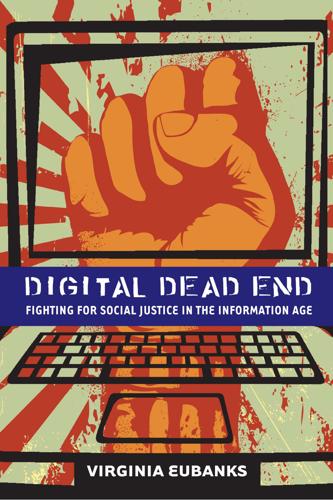
Digital Dead End: Fighting for Social Justice in the Information Age
by
Virginia Eubanks
Published 1 Feb 2011
Horton declared that its purpose was to “train community leaders for participation in a democratic society” and to help spread democratic principles to all human relationships in every political, economic, social, and cultural activity. Their programs over the last seventy-nine years—including workshops on labor organizing and education (1930s and 1940s), desegregation in the public schools (1950s), citizenship and voter registration (1950s and 1960s), civil rights organizing and leadership (1960s), strip mining and toxic waste dumping in Appalachia (1970s), economic globalization issues (1980s), and multilingual organizing, interracial coalition building, and youth leadership in the American South (1990s to the present)—have been incredibly ambitious.
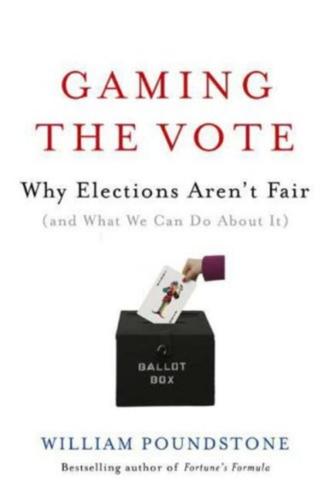
Gaming the Vote: Why Elections Aren't Fair (And What We Can Do About It)
by
William Poundstone
Published 5 Feb 2008
No one could deny that the schools were needed and 17B Who's Afraid of the Big Bad Cycle? that they would have to be built with somebody's tax money. Both parties were eager to score points with parent-voters. Adam Clayton Powell, Jr., introduced an amendment to the bill that stipulated that the federal money be given only to states with desegregated schools. Two years previously, the Supreme Court's decision in Brown v. Board of Education had ruled segregated schools unconstitutionaL Powell's state, New York, was in compliance with the Supreme Court decision. The South, however, was still dragging its feet. Southern congresspeople had loved the original school-aid bill.
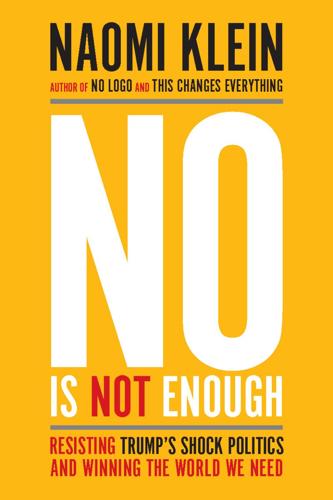
No Is Not Enough: Resisting Trump’s Shock Politics and Winning the World We Need
by
Naomi Klein
Published 12 Jun 2017
In the United States, after the carnage of the Civil War and the abolition of slavery, Blacks and their radical allies pushed for economic justice and greater social rights. They won major victories, including free public education for all children—although it would take another century before schools were desegregated. The horrific 1911 fire at the Triangle Shirtwaist Company in New York City, which took the lives of 146 young immigrant garment workers, catalyzed hundreds of thousands of workers into militancy—eventually leading to an overhaul of the state labor code, caps on overtime, new rules for child labor, and breakthroughs in health and fire safety regulations.
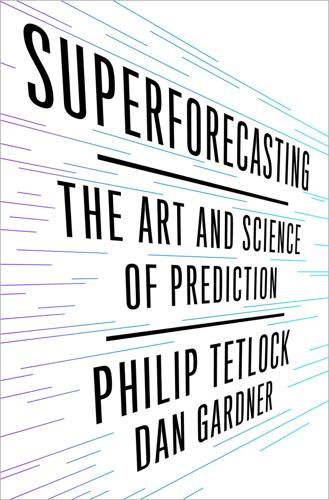
Superforecasting: The Art and Science of Prediction
by
Philip Tetlock
and
Dan Gardner
Published 14 Sep 2015
Japanese Americans “may well be the Achilles’ heel of the entire civilian defense effort,” warned Earl Warren. At the time, Warren was attorney general of California. Later, he became governor, then chief justice of the US Supreme Court—and is remembered today as the liberal champion of school desegregation and civil rights.4 But civil rights were not at the tip of Warren’s nose in World War II. Security was. His solution to the perceived threat was to round up and imprison every man, woman, and child of Japanese descent, a plan carried out between mid-February and August 1942, when 112,000 people—two-thirds of whom had been born in the United States—were shipped to isolated camps ringed with barbed wire and armed guards.
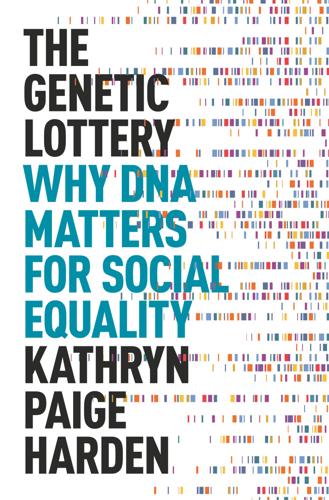
The Genetic Lottery: Why DNA Matters for Social Equality
by
Kathryn Paige Harden
Published 20 Sep 2021
If we cannot challenge racist policies, then racist power’s final solution will be achieved: a world of inequity none of us can see, let alone resist. The importance of documenting racial inequities in health outcomes like life span, obesity, and maternal mortality is obvious: How are we to close these disparities, to investigate how policies affect them, if we cannot measure them? For instance, knowing that desegregating Southern hospitals closed the Black-White gap in infant mortality and saved the lives of thousands of Black infants in the decade from 1965 to 197510 requires, at a minimum, being able to quantify infant mortality. Documenting racial inequities in health means documenting racial inequities in every bodily system—including the brain.
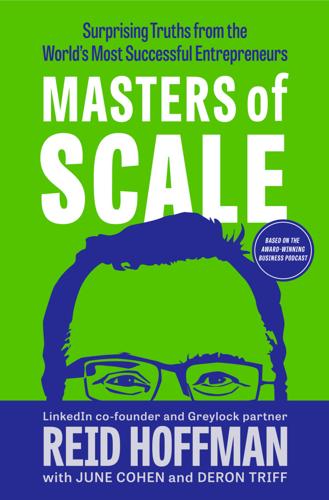
Masters of Scale: Surprising Truths From the World's Most Successful Entrepreneurs
by
Reid Hoffman
,
June Cohen
and
Deron Triff
Published 14 Oct 2021
“We figured out that we had more that was alike than was different. As we grew up, I went to birthday parties, bar mitzvahs, all those sorts of things. It created a wonderful connectivity as a human being.” Only one bus came to Robert’s neighborhood. He later learned that there had been a number of buses drafted to force the desegregation process in local schools, but someone burned a third of those buses before the process even got started. So just a single bus made it to Robert’s neighborhood, and only a few blocks of kids got the opportunity to be on that bus. Looking back, Robert deems this a “lucky” bus. “When you look at all the kids who were on that bus and their lives now on a relative basis versus the kids in my neighborhood who didn’t get on the bus,” he says, “you see a vast difference in socioeconomic progress, in educational opportunities, in what they bring to the communities that they live in now.”
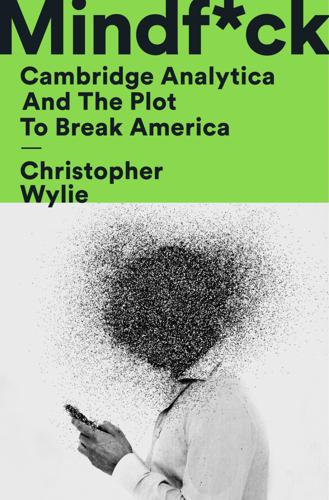
Mindf*ck: Cambridge Analytica and the Plot to Break America
by
Christopher Wylie
Published 8 Oct 2019
The Civil Rights Act of 1964 and the Voting Rights Act of 1965 represented a huge leap forward for the rights of American blacks. These sweeping sets of laws promised to right many of the wrongs that had been perpetrated against the black community for so many years by ensuring voting rights, mandating desegregation of public facilities, and instituting equal employment opportunity and nondiscrimination in federal programs. They also opened a new chapter in the politics of shamelessly stoking white fear. In the late 1960s, Richard Nixon’s “southern strategy” fueled racial fear and tensions in order to shift white voters’ allegiance from the Democrats to the GOP.

Artificial Whiteness
by
Yarden Katz
Google’s deep network gave the image the caption “A group of people standing on top of a snow covered slope.” For a statistical pattern recognizer, the light dirt might look like snow—but the sun, the clothing, and the relationship among those photographed make that an absurd description. Similarly, a 1960 photograph of Ruby Bridges, a six-year-old African American girl being accompanied to a desegregated school by U.S. marshals, is registered as “A group of men standing next to each other” (figure 3.6, middle). There are many more complex relations among the photographed that are missed. Consider the scene of an Israeli soldier holding down a young Palestinian boy while the boy’s family try to remove the soldier (figure 3.6, right).35 Google’s deep network produces the caption “People sitting on top of a bench together” (the “bench” perhaps being the boy).
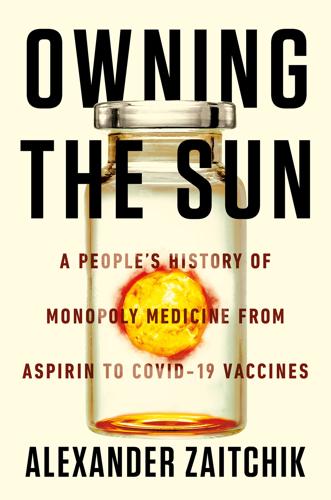
Owning the Sun
by
Alexander Zaitchik
Published 7 Jan 2022
Surviving him was a defiantly reprobate drug industry determined to avoid further challenges to its power, wealth, and monopoly birthright. 19.Kefauver had guts. He faced down mob bosses Frank Costello and Mickey Cohen in his organized crime hearings, and in 1960 risked his reelection in a southern state by supporting desegregation and civil rights. 20.Between 1864 and 1994, U.S. patents lasted seventeen years. How that number was extended, and continues to grow, is a subject explored in subsequent chapters. 21.Leaving aside its relevance for the patent issue, Bush was likely sincere in his preoccupation with the horrors of nuclear war.
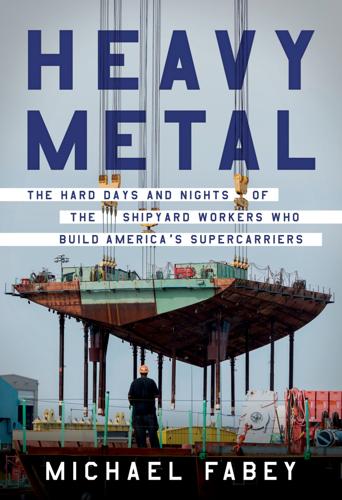
Heavy Metal: The Hard Days and Nights of the Shipyard Workers Who Build America's Supercarriers
by
Michael Fabey
Published 13 Jun 2022
Black workers simply did not have the opportunity for better jobs in the caste system of Tidewater, which hometown author William Styron described as “segregated and a world apart.” That started to change in the 1960s in Newport News, as it did throughout the country as both labor and racial tensions bubbled to a boil. Desegregation did not sit well in Tidewater, and groups like Save Our Neighborhood Schools (SONS) protested, holding signs saying BUS THE JUDGE. The unrest hit home in the shipyard when the Reverend J. Cornelius, a Black crane rigger and also president of the Newport News chapter of the NAACP, and three other shipyard workers filed a lawsuit charging the company with violating the Civil Rights Act of 1964, saying Black workers made less money for equal work and could not secure promotions.

Golden Gates: Fighting for Housing in America
by
Conor Dougherty
Published 18 Feb 2020
Proposition 14 passed in the same election in which California voters also overwhelmingly supported Lyndon Johnson for president, who nationally represented the kind of liberalism Pat Brown had perfected in California. But this wasn’t so much inconsistency as an example of how voters were theoretically for civil rights at a vague national level yet would immediately draw the line when they were asked to desegregate their own city or neighborhood. Despite the property rights sales pitch, the Prop 14 voting results skewed heavily along racial lines. Some of the most lopsided precincts were around Oakland. In San Leandro, voters in majority-white areas were 80 percent in favor of Proposition 14. Majority-black districts across the city line in Oakland voted against it by more than 90 percent.
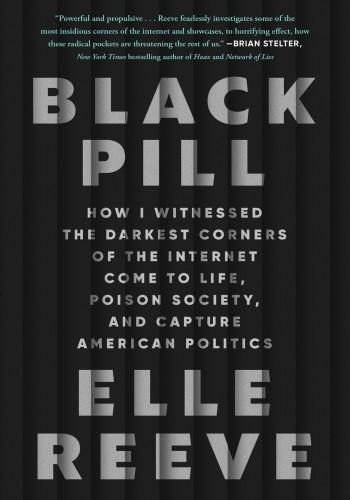
Black Pill: How I Witnessed the Darkest Corners of the Internet Come to Life, Poison Society, and Capture American Politics
by
Elle Reeve
Published 9 Jul 2024
The main way he tried to provoke me was alerting everybody’s attention to the fact that I’m a woman. In moments he feared I might have missed his subtlety, he’d smirk to make sure I got it. “I also sell these fine T-shirts, if you want. They’re twenty-five bucks. I’ll give you a little discount—five bucks—because you’re cute.” The fans liked that one. He said when neighborhoods are desegregated, boys and girls would have sex, and “we lose a white woman to race mixing.” In defense of racial profiling, he said, “If you find a girl who’s been beaten and raped behind a tree somewhere,” you wouldn’t look for suspects who were “blue-eyed blond-haired girls.” I didn’t understand whether I was supposed to imagine myself as the rapist or the victim.

The Quiet Damage: QAnon and the Destruction of the American Family
by
Jesselyn Cook
Published 22 Jul 2024
He still loved to amble through the lush green Quad to Denny Chimes, the 115-foot, 25-bell campanile tower, which sounded the same to him in 2020 as it had in ’62. Crimson Tide victories still filled him with pride. But most special about UA, to Dale, was the unparalleled camaraderie. He had been there until just before it desegregated and had since watched it slowly blossom into a more vibrant community, embracing the best parts of southern culture while progressing away from the worst. There was a timeless kinship between students past and present, from the lab geeks to the football stars and sorority sisters across grades and generations.
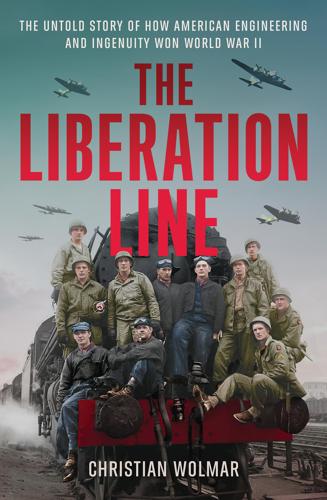
The Liberation Line: The Untold Story of How American Engineering and Ingenuity Won World War II
by
Christian Wolmar
Published 15 Dec 2024
After the war, the Red Ball Express was the subject of several documentaries and an eponymous film that, though it featured a young Sidney Poitier in one of his first major roles, masked the fact that Red Ball was very much a segregated operation. Ironically, by the time of the film’s release in 1952, this was no longer the case because the army had been desegregated for four years. Furthermore, the rather romantic name of the operation helped perpetuate the scheme’s importance as did America’s love affair with motor vehicles, though rail did later get in on the act with its Toot Suite Express, described later. Ultimately, as the report on logistics stated: “Red Ball bore many of the defects of an operation hastily organized under the pressure of events to meet an emergency: there had been insufficient time for planning; extensive use had to be made of hastily organized provisional units, with all the disadvantages inherent in such practice.”38 The report concluded: “The crippling impact which logistic difficulties were to have on plans for future operations was only gradually realized, but it was fully comprehended by the end of September, when the 12th Army Group began to dole out supplies to the armies through a strict rationing system based on assigned missions.
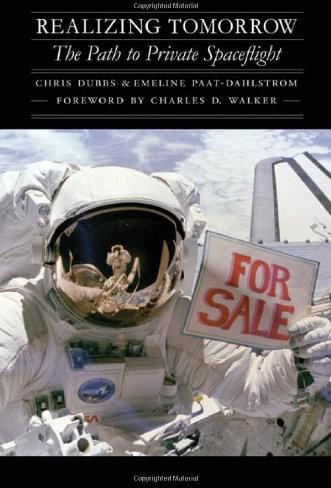
Realizing Tomorrow: The Path to Private Spaceflight
by
Chris Dubbs
,
Emeline Paat-dahlstrom
and
Charles D. Walker
Published 1 Jun 2011
Because of Burt's philosophy of keeping things private-"Don't talk about it until you're ready" -Scaled did not approach AST until zooi. That's when Smith, who headed AST, took on the task of defining how the FAA would oversee commercial space launches. It represented a big step for the agency and the high-water mark of Smith's career. Smith grew up in Alabama during the court-ordered desegregation of the school systems in the South. She and her sister were among the first African Americans to attend a white school. Her determination to "go places" led her to enroll in college at age fifteen. She credits her father with instilling in her a real "can do" spirit at an early age. "If you think you can do it, go for it," she recalled her father encouraging her.
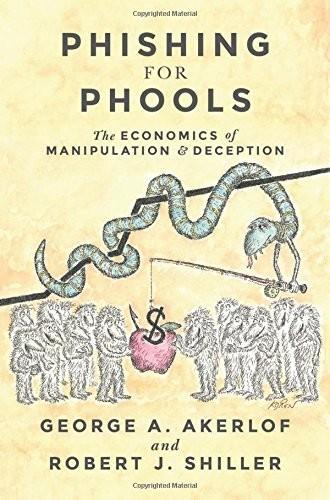
Phishing for Phools: The Economics of Manipulation and Deception
by
George A. Akerlof
,
Robert J. Shiller
and
Stanley B Resor Professor Of Economics Robert J Shiller
Published 21 Sep 2015
See also securities regulation Storer Communications, 129 stories: in advertising, 46–48, 49–53, 74, 197n34; on drunk drivers, 115–16; in financial bubbles, xiii–xiv; on government roles, 151–53; on health risks of tobacco, 105–6, 109; of house hunters, 64; in human thinking, 10, 45–46, 186–87n26, 194–95n3; on junk bonds, 132–33; mysteries, 58; news, 57–59, 106; New-Story thinking, 152–53, 154–56, 159, 160–62; in phishing, xiii–xiv, 10, 149, 162, 172–73; in politics, 74, 78, 79; in speculative bubbles, 194n3; as variable, 173 story grafting, 10, 46, 53, 74, 105, 149, 172–73 Stowe, Harriet Beecher, 84 Stulz, René M., 193nn50–51 subprime mortgages, xiv, 32–33, 36, 192n30 Sufrin, Carolyn B., 209n30 Suh, Simona, 158, 229n29 Summers, Lawrence H., 223n29, 232n15, 232nn17–18 Sunkist oranges, 51, 53 supermarkets: checkout lanes in, 1, 9; credit card fees paid by, 70; gross margins of, 202n36; product marketing in, 21 Supreme Court: Citizens United decision, 79, 160–62; Eisenhower’s appointments to, 151, 227n3; Laidlaw v. Organ, 141–42, 225n26; school desegregation, 151 Surgeon General’s Report (1964), 106–7, 108, 109 Swagel, Phillip, 76, 204n15 Swaim, William, 84–85 swaps. See credit default swaps Swearingen, Wayne, 122 Swift, Louis, 49 Swift and Company, 49 Tabarrok, Alex, 200n15 TARP. See Troubled Asset Relief Program tastes, monkey-on-the-shoulder, 4–5, 6, 20, 54, 59, 170–71, 172 taxes: on alcohol, 114–15; cuts in, 73, 203n5; on foreign earnings of corporations, 81; uncollected, 82 technical innovation.
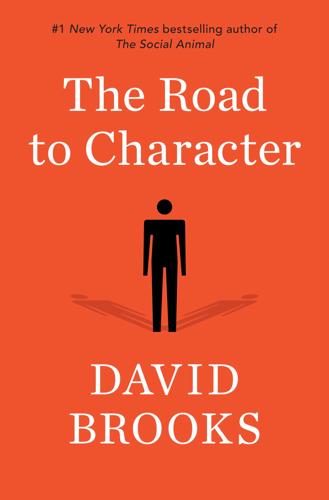
The Road to Character
by
David Brooks
Published 13 Apr 2015
Randolph is not going to call off the march, and I suggest we all begin to seek a formula.”12 Six days before the march was due to take place, Roosevelt signed Executive Order 8802, banning discrimination in the defense industries. Randolph called off the march, amid much opposition from civil rights leaders who wanted to use it to push other causes such as discrimination in the armed forces themselves. After the war, Randolph pushed more broadly for worker rights and desegregation. His great power, as always, derived from his obvious moral integrity, his charisma, his example as an incorruptible man in service to a cause. He was, however, not a meticulous administrator. He had trouble concentrating his energies on a single cause. The unabashed admiration he inspired in the people around him could threaten organizational effectiveness.
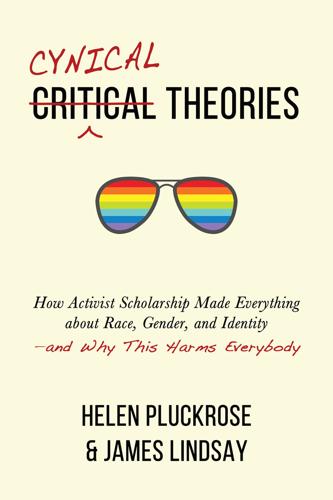
Cynical Theories: How Activist Scholarship Made Everything About Race, Gender, and Identity―and Why This Harms Everybody
by
Helen Pluckrose
and
James A. Lindsay
Published 14 Jul 2020
This is no exaggeration of his intent; Bell states this explicitly in his 1987 book, And We Are Not Saved: The Elusive Quest for Racial Justice10: “progress in American race relations is largely a mirage obscuring the fact that whites continue, consciously or unconsciously, to do all in their power to ensure their dominion and maintain their control.”11 This cynical pessimism pervades Bell’s analysis. For instance, he also considered that white people had introduced desegregation, not as a solution to black people’s problems, but to further their own interests while suppressing black radicalism during the Cold War (and at other times).12 Because of his beliefs in a pervasive and irreparable system of white dominance in U.S. society,13 he argued that such changes lead to a whole new raft of problems through which white superiority would continually assert itself over the interests of black people, for instance through white retaliation and white flight.14 This was typical of the critical-race mood at the time.
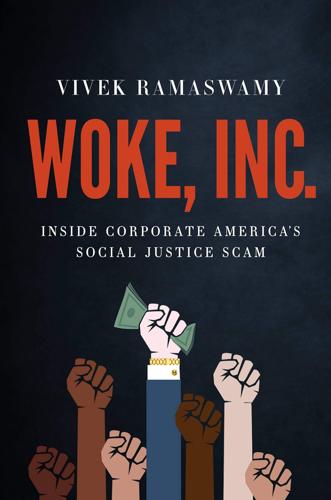
Woke, Inc: Inside Corporate America's Social Justice Scam
by
Vivek Ramaswamy
Published 16 Aug 2021
The Civil Rights Act of 1964 prohibits discrimination on the basis of race, color, religion, sex, or national origin. It was the signature achievement of the nonviolent civil rights movement led by Martin Luther King, Jr. One of its biggest components was Title VII’s ban on employment discrimination. It also had a number of provisions desegregating public spaces and prohibiting the use of voting registration laws to disenfranchise minorities. After Dr. King’s assassination led to a wave of riots, Congress passed the Civil Rights Act of 1968, which extended protection from discrimination to housing, saying that those selling, renting, and financing housing couldn’t discriminate on the basis of race, religion, national origin, and, in later additions, disability or sex.
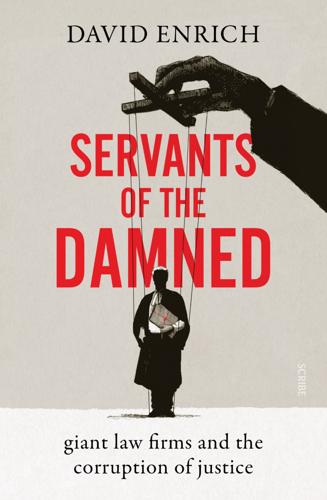
Servants of the Damned: Giant Law Firms and the Corruption of Justice
by
David Enrich
Published 5 Oct 2022
A few years later, after graduating first in his class from Notre Dame’s law school, he landed a coveted Supreme Court clerkship, working for Justice Charles Evans Whittaker. Eating lunch with other clerks in the court’s cafeteria, he was prone to liberal outbursts, especially on cases involving civil rights and school desegregation. McCartan joined Jones Day in 1960, the same year as Scalia. (The two became lifelong friends.) He initially was headed for the dry world of tax law, figuring he wasn’t cut out for the glamour of being a trial lawyer. But Jack Reavis saw something in the young man. He told McCartan that there was a glut of workers’ compensation suits—derisively known as “slip and fall” cases—and asked the partner in charge of that litigation to throw some work McCartan’s way.

Presidents of War
by
Michael Beschloss
Published 8 Oct 2018
Knowing the importance of the white South to a Democratic President and the power of white Southerners in the House and Senate, he had even once withheld his public endorsement from an anti-lynching bill. When the military draft began, A. Philip Randolph, chief of the Brotherhood of Sleeping Car Porters, came to the Oval Office and asked Roosevelt to desegregate the armed forces.*24 The President claimed that integration had already begun, although he knew that this was scarcely true. The expanding industry of war also remained largely divided by race. The head of North American Aviation openly vowed that “no matter what their qualifications,” African Americans “will only be used as janitors.”
…
But the Court, in Ex parte Endo (1944), finally scotched the internment program for those deemed “loyal” to the United States, with Douglas writing that “he who is loyal is by definition not a spy or saboteur.” *6 Some later attributed the intensity of Chief Justice Warren’s support for Brown v. Board of Education, the Supreme Court’s 1954 decision desegregating the public schools, in part to penance for his complicity in the removal of the Japanese during wartime. *7 This controversy was reflected in Paramount’s motion picture Holiday Inn, starring Bing Crosby and Fred Astaire, which premiered that summer. In a patriotic World War II musical tableau celebrating Independence Day, MacArthur was given equal prominence with Roosevelt
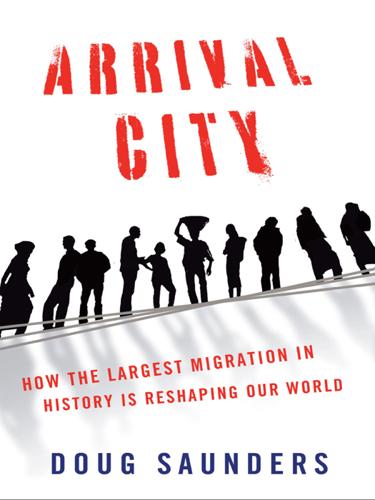
Arrival City
by
Doug Saunders
Published 22 Mar 2011
The Multiscalar Construction and Experience of Concentrated Immigrant Poverty in Gateway Cities,” Annals of the Association of American Geographers 98, no. 3 (2008); United Way, “Poverty by Postal Code: The Geography of Neighborhood Poverty” (Toronto: United Way of Greater Toronto and the Canadian Council on Social Development, 2004). 15 Smith and Ley, “Even in Canada?” 708. 16 Mohammad A. Qadeer, “Ethnic Segregation in a Multicultural City,” in Desegregating the City: Ghettos, Enclaves & Inequality, ed. David P. Varaday (Albany: SUNY Press, 2005); Kristin Good, “Patterns of Politics in Canada’s Immigrant-Receiving Cities and Suburbs,” Policy Studies 26, no. 3/4 (2005). 17 J. David Hulchanski, “The Three Cities within Toronto: Income Polarization among Toronto’s Neighborhoods, 1970–2000” (Toronto: Centre for Urban & Community Studies, University of Toronto, 2007). 18 Robert E.
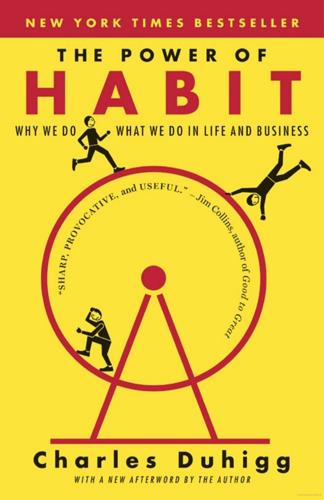
The Power of Habit: Why We Do What We Do in Life and Business
by
Charles Duhigg
Published 1 Jan 2011
.: Profiles in Power (New York: Longman, 2004). 8.4 a three-part process For more on the sociology of movements, see G. Davis, D. McAdam, and W. Scott, Social Movements and Organizations (New York: Cambridge University, 2005); Robert Crain and Rita Mahard, “The Consequences of Controversy Accompanying Institutional Change: The Case of School Desegregation,” American Sociological Review 47, no. 6 (1982): 697–708; Azza Salama Layton, “International Pressure and the U.S. Government’s Response to Little Rock,” Arkansas Historical Quarterly 56, no. 3 (1997): 257–72; Brendan Nelligan, “The Albany Movement and the Limits of Nonviolent Protest in Albany, Georgia, 1961–1962,” Providence College Honors Thesis, 2009; Charles Tilly, Social Movements, 1768–2004 (London: Paradigm, 2004); Andrew Walder, “Political Sociology and Social Movements,” Annual Review of Sociology 35 (2009): 393–412; Paul Almeida, Waves of Protest: Popular Struggle in El Salvador, 1925–2005 (Minneapolis: University of Minnesota, 2008); Robert Benford, “An Insider’s Critique of the Social Movement Framing Perspective,” Sociological Inquiry 67, no. 4 (1997): 409–30; Robert Benford and David Snow, “Framing Processes and Social Movements: An Overview and Assessment,” Annual Review of Sociology 26 (2000): 611–39; Michael Burawoy, Manufacturing Consent: Changes in the Labor Process Under Monopoly Capitalism (Chicago: University of Chicago, 1979); Carol Conell and Kim Voss, “Formal Organization and the Fate of Social Movements: Craft Association and Class Alliance in the Knights of Labor,” American Sociological Review 55, no. 2 (1990): 255–69; James Davies, “Toward a Theory of Revolution,” American Sociological Review 27, no. 1 (1962): 5–18; William Gamson, The Strategy of Social Protest (Homewood, Ill.: Dorsey, 1975); Robert Benford, “An Insider’s Critique of the Social Movement Framing Perspective,” Sociological Inquiry 67, no. 4 (1997): 409–30; Jeff Goodwin, No Other Way Out: States and Revolutionary Movements, 1945–1991 (New York: Cambridge University, 2001); Jeff Goodwin and James Jasper, eds., Rethinking Social Movements: Structure, Meaning, and Emotion (Lanham, Md.: Rowman and Littlefield, 2003); Roger Gould, “Multiple Networks and Mobilization in the Paris Commune, 1871,” American Sociological Review 56, no. 6 (1991): 716–29; Joseph Gusfield, “Social Structure and Moral Reform: A Study of the Woman’s Christian Temperance Union,” American Journal of Sociology 61, no. 3 (1955): 221–31; Doug McAdam, Political Process and the Development of Black Insurgency, 1930–1970 (Chicago: University of Chicago, 1982); Doug McAdam, “Recruitment to High-Risk Activism: The Case of Freedom Summer,” American Journal of Sociology 92, no. 1 (1986): 64–90; Doug McAdam, “The Biographical Consequences of Activism,” American Sociological Review 54, no. 5 (1989): 744–60; Doug McAdam, “Conceptual Origins, Current Problems, Future Directions,” in Comparative Perspectives on Social Movements: Political Opportunities, Mobilizing Structures, and Cultural Framings, ed.
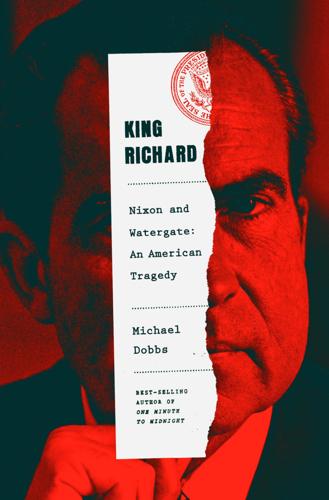
King Richard: Nixon and Watergate--An American Tragedy
by
Michael Dobbs
Published 24 May 2021
He put his feet up on the coffee table as he talked about his favorite presidents, notably Theodore Roosevelt and Woodrow Wilson. White had never “spoken to a President who gave the impression of being more completely self-possessed or in command of his job.” Nixon’s mind moved easily from one topic to another, from the desegregation of schools to rising gasoline prices to his visits to Moscow and Beijing. “Mostly he talked the shop talk of power—power as Mao Tse-tung sees it, power as the Pentagon sees it, power as the President must use it,” White later recalled. “The President, he felt, must single out a few problems of the thousands and thousands of immensely complicated affairs that clamor for his attention, and must concentrate on those.

Anatomy of the Bear: Lessons From Wall Street's Four Great Bottoms
by
Russell Napier
Published 18 Jan 2016
At the right time when bonds were cheap, economic conditions improving and commodity prices rising, the support operation provided the necessary upward impetus for prices. If a private support operation played a role in stabilising financial markets in 1932 then a public support operation played an even bigger role. Although it is always difficult to desegregate cause-and-effect in financial markets, the formation of the RFC not only assisted bank liquidity and stabilised government bond prices, but it led to some improvement in credit quality in those sectors of commerce, notably railways, where credit availability improved. As well as these support operations there is also some suggestion that the conversion of Britain’s £2 billion 5% war loan into a 3.5% perpetual loan also played an impact in stabilising bond prices in the US.
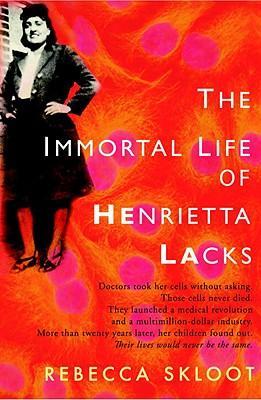
The Immortal Life of Henrietta Lacks
by
Rebecca Skloot
Published 2 Feb 2010
Donald Woodruff. Information here and in later chapters regarding segregation at Johns Hopkins came from interviews as well as from Louise Cavagnaro, “The Way We Were,” Dome 55, no. 7 (September 2004), available at hopkinsmedicine.org/dome/0409/featurei.cfm; Louise Cavagnaro, “A History of Segregation and Desegregation at The Johns Hopkins Medical Institutions,” unpublished manuscript (1989) at the AMCMA; and “The Racial Record of Johns Hopkins University,” Journal of Blacks in Higher Education 25 (Autumn 1999). Sources on the effects segregation had on health-care delivery and outcomes include: The Strange Career of Jim Crow, by C.
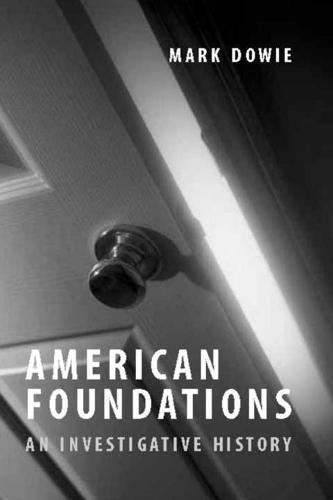
American Foundations: An Investigative History
by
Mark Dowie
Published 3 Oct 2009
Americans want their schools and colleges to teach the fundamental skills of reading, writing, and arithmetic; to nurture critical thinking; to convey a general fund of knowledge; to develop creativity and aesthetic perception; to assist students in choosing and preparing for vocations in a highly complex economy; to inculcate ethical character and good citizenship; to develop physical and emotional well-being; and to nurture the ability, intelligence and will to continue with education as far as any individual wants to go.... And this catalogue does not even mention such Herculean tasks as taking the initiative in racial desegregation and informing [students] about the dangers of drug abuse and AIDS. Public education, then, "is as radical an idea as Americans have embraced. It is by its very nature fraught with difficulty, and the institutions we have established to achieve it are undeniably flawed."' It was at the undeniable flaws in American public education that the Ford Foundation aimed its philanthropy during the 1950s, through its now-legendary Fund for the Republic.

Poverty for Profit
by
Anne Kim
That belief in tenant self-determination still animates the Housing Choice Voucher program and accounts for its continued support among conservatives as well as liberals. For conservatives, vouchers embody a combination of two values held dear: market incentives and personal responsibility. For liberals, vouchers represent a promising and powerful mechanism for desegregating communities, breaking up concentrated poverty, and giving more low-income Americans the benefit of positive “neighborhood effects.”26 Perhaps the most famous studies about the program’s potential benefits involve the Moving to Opportunity (MTO) project, a ten-year experiment begun in 1994 that gave 4,600 low-income families a chance to move out of high-poverty areas (where more than 30 percent of households live below the poverty line) through vouchers.
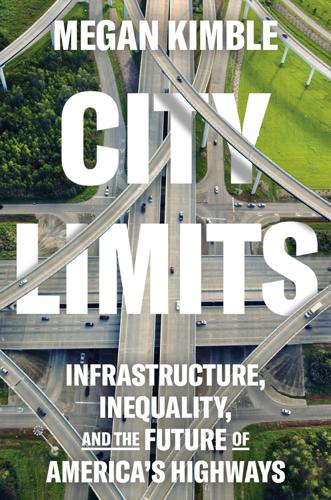
City Limits: Infrastructure, Inequality, and the Future of America's Highways
by
Megan Kimble
Published 2 Apr 2024
“Every time I hear someone say, ‘Americans love their cars,’ I realize what they are really saying is, ‘Americans love not starving to death.’ I do too. If you don’t have a car, you won’t work. You won’t get to the doctor; your kids won’t get to school.” After graduating from LSU with a law degree, Beth moved to D.C. to work in education policy, inspired by her grandmother, an advocate who fought for desegregation. But with no experience on Capitol Hill, she couldn’t find a job. To save money, she got rid of her car and eventually got hired as a legislative assistant in the office of a congressman from Pennsylvania, managing the office’s environment and natural resources policy. “The area that kept coming up as the biggest problem for the environment and natural resources is transportation.
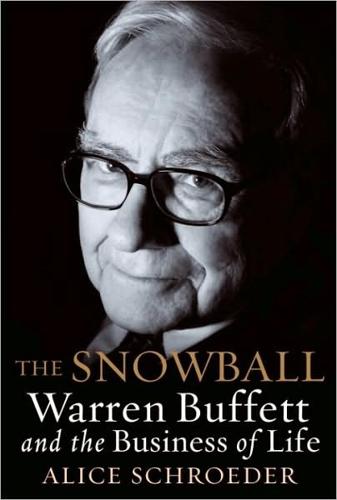
The Snowball: Warren Buffett and the Business of Life
by
Alice Schroeder
Published 1 Sep 2008
Dark-skinned diplomats had to be chaperoned, embarrassed and scandalized by a provincialism like no place else in the world. “I would rather be an Untouchable in the Hindu caste system than a Negro in Washington,” one foreign visitor said.20 The Washington Post, referred to by some right-wingers as “The Uptown Communist Sheet,” had been on a crusade about racism for some time,21 and President Truman had desegregated the military and was pushing for civil-rights reforms. But change was slow. Warren, who did not read the liberal Post, paid little attention to Washington’s racism. He was both unaware and immature, too absorbed in his own insecurity, his stunts, and his businesses. He returned that summer to his duties as relief circulation manager for the conservative Times-Herald.
…
She had become close to leaders of the black community and was all over Omaha, brainstorming, coordinating, cajoling, publicizing, working on behind-the-scenes relationships in a town where racial tensions were reaching the point of violence. Every summer now in the nation’s major cities, race riots flared after minor incidents involving the police. Martin Luther King Jr. had issued a call the previous year: Desegregating workplaces and public facilities wasn’t enough; segregated housing had to be eliminated. The idea terrified many whites, especially after riots in the Watts neighborhood of Los Angeles, which had turned into a war zone of arson, sniping, and looting in which thirty-four people were killed. Similar uprisings had taken place in Cleveland; Chicago; Brooklyn; Jacksonville, Florida; and other smaller towns.4 During a fifteen-day heat wave in July 1966, riots erupted in Omaha; the governor called out the National Guard, blaming the riots on “an environment unfit for human habitation.”5 Susie now made the elimination of segregated housing in Omaha her central cause.
…
Today it is a real estate investment trust managed by Steven Roth. 33. Interview with Bob Malott. 34. Buffett says he immediately told Malott that FMC should buy back its own stock, which was cheap. Although FMC considered the idea, it didn’t follow through. 35. Black enrollment had risen to one third and was projected to rise to nearly half in the fall. A desegregation suit was pending and the building did not conform to fire codes. Some white students had already transferred out of fears that Central and Tech High, the city’s toughest school, would be merged. Dana Parsons, “Central Parents Express Fears, Seek Changes,” Omaha World-Herald, May 9, 1974. The committee proposed changes that in effect created a magnet school oriented to college prep. 36.
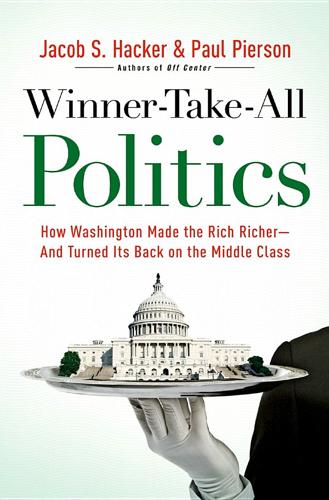
Winner-Take-All Politics: How Washington Made the Rich Richer-And Turned Its Back on the Middle Class
by
Paul Pierson
and
Jacob S. Hacker
Published 14 Sep 2010
But that misses the critical organizational side of the story—which involved Christian organizations (and especially Christian schools) as much as Christian voters. For those who would come to lead the evangelical movement, the tax status of private Christian schools, placed in jeopardy by an IRS ruling, became a hot-button issue in the late 1970s. A vast network of these schools had developed in response to desegregation, and when a Carter-appointed IRS commissioner made the ruling—and the Carter White House proved unresponsive to the resulting fury of Christian conservatives—they turned increasingly to Republicans for support. Although the tax funding issue has received far less notoriety than the abortion issue, at the time it may have actually been a greater catalyst to political organization.
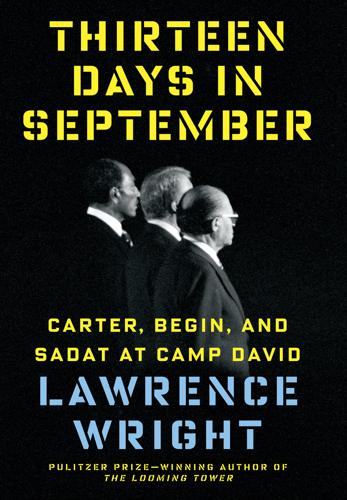
Thirteen Days in September: Carter, Begin, and Sadat at Camp David
by
Lawrence Wright
Published 15 Sep 2014
He quickly took on the role of a community leader, becoming chairman of the county school board at a time when racial integration was ripping the Deep South into bitter factions. In 1962, he tried to consolidate the three white schools in the county, but the white population saw it as a prelude to school desegregation. A homemade sign was placed in front of the Carter warehouse: COONS AND CARTERS GO TOGETHER. Carter’s initiative was voted down. As would be true at other times in his life, failure was a spur to Carter’s ambition. On the morning of his thirty-eighth birthday, he put on his Sunday pants rather than the work clothes he normally wore to the warehouse.
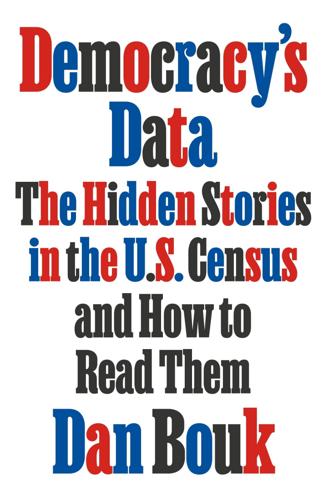
Democracy's Data: The Hidden Stories in the U.S. Census and How to Read Them
by
Dan Bouk
Published 22 Aug 2022
Niles worked for Harry Hopkins in the Commerce Department. Before that he had worked for Hopkins in the WPA, where he specialized in trading favors (especially “patronage,” or the right to hand out jobs and other opportunities). After World War II, Niles won the ear of the president and advocated that Truman desegregate the military and support a Jewish state in Palestine.5 But in 1939, Niles had his hands full doling out jobs and favors to those the administration favored. The Mississippi issue—the Austin issue—appears to have been serious enough that Niles wanted the big boss to know what was happening. He wrote to the White House.

Behave: The Biology of Humans at Our Best and Worst
by
Robert M. Sapolsky
Published 1 May 2017
Under those conditions, sustained intergroup contact generally decreases prejudices, often to a large extent and in a generalized, persistent manner. This was the conclusion of a 2006 meta-analysis of some five hundred studies comprising over 250,000 subjects from thirty-eight countries; beneficial effects were roughly equal for group differences in race, religion, ethnicity, or sexual orientation. As examples, a 1957 study concerning desegregation of the Merchant Marines showed that the more trips white seamen took with African Americans, the more positive their racial attitudes. Same for white cops as a function of time spent with African American partners.19 A more recent meta-analysis provides additional insights: (a) The beneficial effects typically involve both more knowledge about and more empathy for the Thems.
…
“Damn, I don’t care if he meant to Krazy Glue the fan belt or not—we have to buy a new one.” * “Greater good” for kids, as at any age, is in the eye of the beholder. In psychologist Robert Coles’s classic The Moral Life of Children (New York: Atlantic Monthly Press, 1986), he describes his fieldwork in the American South during desegregation, and how older children on both sides of the divide were willing to undergo sacrifice for the good of their ideological group. * I once received a lesson in kids’ private world of rule making from my then-four-year-old son. We had gone to a public bathroom together; we stood side by side at two urinals, and I finished a bit earlier than he did.

The Vietnam War: An Intimate History
by
Geoffrey C. Ward
and
Ken Burns
Published 4 Sep 2017
He asked Lieutenant General James Gavin. He asked Senator George McGovern. They all turned him down. Unseating a president still seemed a hopeless cause. Lowenstein vowed to keep looking. OUR BEST INTERESTS Eva Jefferson was the daughter of an Air Force officer and grew up overseas, on military bases—in “desegregated settings,” she remembered, though “I was usually the only little black girl in the class. If you look at my class pictures I look like the little chocolate chip in the vanilla ice cream. I was always a good student. I remember people saying, ‘Oh, you speak so well.’ The unstated part was, ‘for a black girl,’ probably a ‘Negro girl’ or ‘colored girl’ at that point.
…
He was a soldier’s soldier, a combat leader, one reporter wrote, who “could inspire aggressiveness in a begonia.” His tank battalion had been the first to break though the German lines and relieve Bastogne during the Battle of the Bulge. He had served as chief of staff to three different corps in Korea, commanded Army regulars and National Guardsmen to quell the riots that followed the desegregation of schools and colleges in Alabama and Mississippi, and served for a year in Saigon as General Westmoreland’s top deputy, earning a reputation as “the godfather of the ARVN” because of his determination to improve the performance of South Vietnamese forces. On the surface, at least, he and his predecessor could not have been more different.
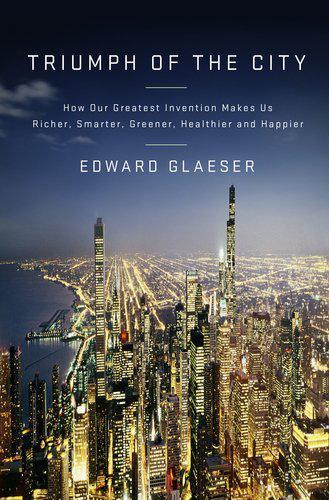
Triumph of the City: How Our Greatest Invention Makes Us Richer, Smarter, Greener, Healthier, and Happier
by
Edward L. Glaeser
Published 1 Jan 2011
Princeton, NJ: Princeton University Press, 1985. Albion, Robert Greenhalgh. The Rise of New York Port [1815-1860]. New York: Scribner’s, 1939. Alexiou, Alice Sparberg. Jane Jacobs: Urban Visionary. New Brunswick, NJ: Rutgers University Press, 2006. Amaker, Norman C. “Milliken v. Bradley: The Meaning of the Constitution in School Desegregation Cases.” Hastings Constitutional Law Quarterly 2, no. 2 (Spring 1975): 349-72. American Chamber of Commerce Research Association. ACCRA Cost of Living Index—Historical Dataset (1Q1990-2009), Arlington, VA: Council for Community and Economic Research [distributor] version 1, http://hdl.handle.net/1902.1/14823.
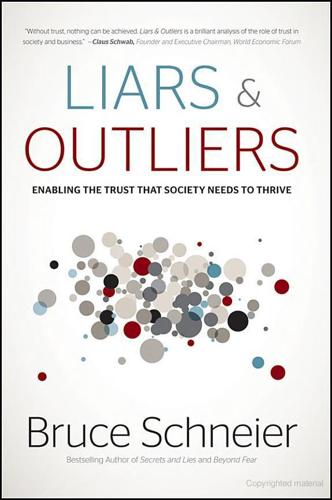
Liars and Outliers: How Security Holds Society Together
by
Bruce Schneier
Published 14 Feb 2012
And while the court rejected EPIC's Fourth Amendment arguments and allowed the TSA to keep screening, it ordered the TSA to conduct notice-and-comment rulemaking. Not a complete victory by any means, but a partial one. And there are many examples of government institutions being reined in by the court system. In the U.S., this includes judicial review, desegregating schools, legalizing abortion, striking down laws prohibiting interracial and now same-sex couples from marrying, establishing judicial oversight for wiretapping, and punishing trust fund mismanagement at the Bureau of Indian Affairs. What's important here is accountability. It is important that these mechanisms are seen publicly, and that people are held accountable.
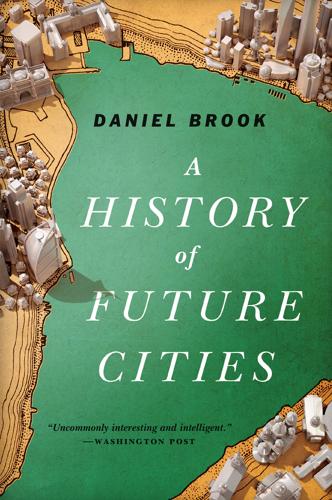
A History of Future Cities
by
Daniel Brook
Published 18 Feb 2013
As a Shanghailander historian wrote in 1928, “When a traveller arrives in Shanghai to-day he is struck by the fact that to all intents and purposes he might be in a large European city [on account of] the tall buildings, the well paved streets, the large hotels and clubs, the parks and bridges, the stream of automobiles, the trams and busses, the numerous foreign shops, and, at night, the brilliant electric lighting,—all are things he is accustomed to in the homeland.” But a look behind the façades to the interiors of the buildings—the stages upon which the social life of the city was acted out—revealed a metropolis that was more vital than anything Europe could offer. With the desegregation of public spaces—even the famously restricted Shanghai Race Club had been integrated during World War I—the balkanized metropolis where each community created its own separate world gave way to a city where all the groups came together. No building embodied this new Shanghai modernity more than the Bund’s tallest building and greatest Jazz Age skyscraper, the Cathay Hotel.
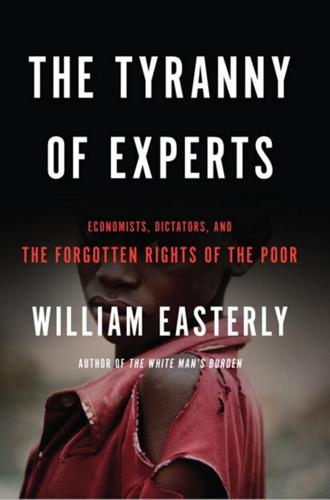
The Tyranny of Experts: Economists, Dictators, and the Forgotten Rights of the Poor
by
William Easterly
Published 4 Mar 2014
‘When we talk of freedom and opportunity for all nations’, it has been said, ‘some of the mocking paradoxes in our own society become so clear that they can no longer be ignored.’”50 Hailey knew in July 1944 that Roosevelt was in a trap. While Roosevelt tried to avoid the worst flare-ups of black discontent, he could not enforce desegregation or black voting rights in the South. Southern whites were solid supporters of the Democrats at that time, and losing them would threaten FDR’s reelection in November 1944. ANOTHER KEY MOMENT IN THIS BOOK Lord Hailey’s propaganda offensive in the United States during World War II was a combination of threat and opportunity.
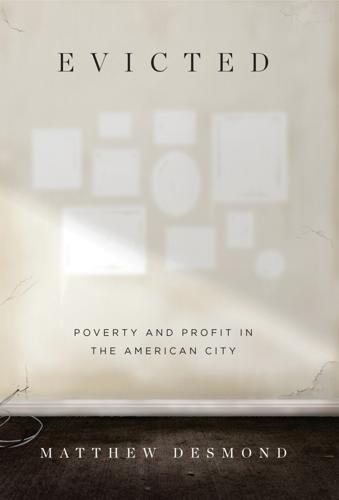
Evicted: Poverty and Profit in the American City
by
Matthew Desmond
Published 1 Mar 2016
Plus, those developers did not support public housing per se; they viewed it as a necessary vehicle through which to execute slum clearance and land grabs. Arnold Hirsch, Making the Second Ghetto: Race and Housing in Chicago, 1940–1960 (New York: Cambridge University Press, 1983), 104–34. 9. See Philip Tegeler, Michael Hanley, and Judith Liben, “Transforming Section 8: Using Federal Housing Subsidies to Promote Individual Housing Choice and Desegregation,” Harvard Civil Rights–Civil Liberties Law Review 30 (1995): 451–86; Housing and Community Development Act of 1974, Pub. L. No. 93–383, § 101(a)(1), (c)(6), 88 Stat. 633, 633–34. 10. On foreclosures of rental property, see Gabe Treves, California Renters in the Foreclosure Crisis, Third Annual Report (San Francisco: Tenants Together, 2011); Vicki Been and Allegra Glashausser, “Tenants: Innocent Victims of the Foreclosure Crisis,” Albany Government Law Review 2 (2009); Matthew Desmond, “Housing Crisis in the Inner City,” Chicago Tribune, April 18, 2010; and Craig Karmin, Robbie Whelan, and Jeannette Neumann, “Rental Market’s Big Buyers,” Wall Street Journal, October 3, 2012.
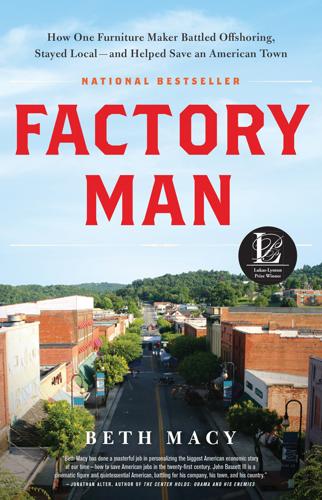
Factory Man: How One Furniture Maker Battled Offshoring, Stayed Local - and Helped Save an American Town
by
Beth Macy
Published 14 Jul 2014
Bonce Stanley would be best remembered not for his royal connections but for his allegiance to U.S. senator Harry F. Byrd Sr., the powerful Democrat who controlled Virginia politics for the first half of the twentieth century. On Uncle Bonce’s watch, Virginia closed many of its public schools rather than desegregating them as mandated by the Supreme Court, robbing the black children of Prince Edward County of five years of schooling. As Stanley put it during a 1956 press conference, “No public elementary or secondary schools, in which white and colored children are mixed and taught, shall be entitled to and received any funds from the state treasure.”
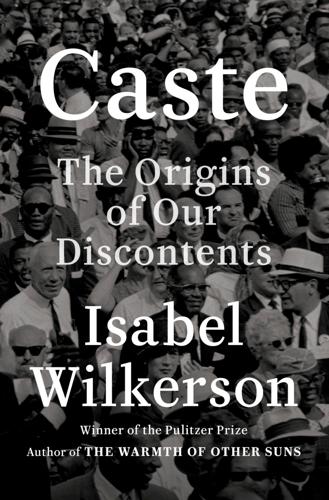
Caste: The Origins of Our Discontents
by
Isabel Wilkerson
Published 14 Sep 2020
“Teen Births,” Child Trends, May 24, 2019, https://www.childtrends.org/indicators/teen-births. The analysis was derived from Centers for Disease Control data. “The long-term downward trends”: Ibid. closed, auctioned off, or poured concrete: Albany, Georgia, “auctioned three pools and a tennis court rather than desegregate them.” The city “padlocked the library for months.” Sokol, There Goes My Everything, p. 93. When black boys instinctively rushed: “McKinney Video: Protest over Texas Pool Party Policing,” BBC, June 9, 2015, https://www.bbc.com/news/world-us-canada-33059484. Within days, the officer resigned: Jonathan Capehart, “The McKinney, Texas Pool Party: More Proof That ‘Black Children Don’t Get to Be Children,’ ” Washington Post, June 10, 2015, https://www.washingtonpost.com/blogs/post-partisan/wp/2015/06/10/the-mckinney-texas-pool-party-more-proof-that-black-children-dont-get-to-be-children/.
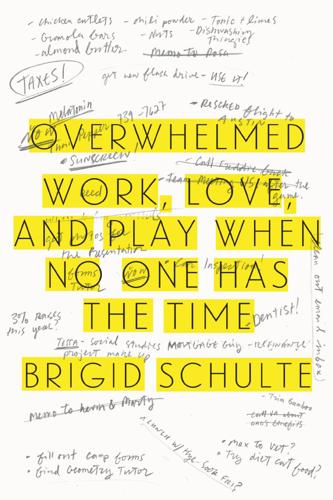
Overwhelmed: Work, Love, and Play When No One Has the Time
by
Brigid Schulte
Published 11 Mar 2014
He became determined that that dark vision of a soulless state, heartless absent mothers, and factory-raised automaton children would never come to pass in the United States.9 Buchanan quickly marshaled the support of conservative writers and activists who decried how the bill would “Sovietize” the American family. Some called the bill an experiment in Orwellian thought control and the first step toward totalitarianism. “Big Brother Wants Your Children,” ran one headline.10 Fresh from battles over forced busing and desegregation, conservatives railed against the “socioeconomic and race mix of students” these child-care centers would foster.11 Phyllis Schlafly and others opposed to the women’s movement used the bill to lobby for working mothers to return home, arguing, “There is no substitute for a mother’s presence.”12 Radical feminists, with their calls for twenty-four-hour child care to dissolve the “oppressive” nuclear family and redistribute responsibility for children, only helped Buchanan make the argument that child care would destroy families.13 As the emerging right wing mobilized, the coalition that supported the bill began to fray.
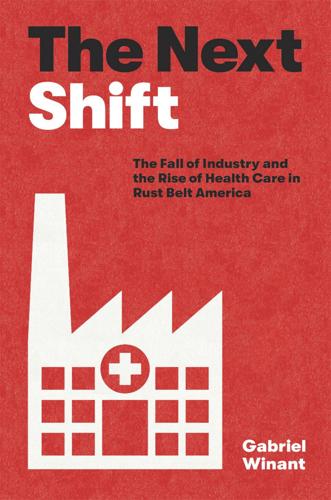
The Next Shift: The Fall of Industry and the Rise of Health Care in Rust Belt America
by
Gabriel Winant
Published 23 Mar 2021
.… These small towns had a habit of figuring out a way of Black and white folks not associating with one another even though they were all poor.”32 This paradoxical observation—his family in fact did live in a place where they were unwelcome—describes the imprint in memory of the interspersed pattern of segregation. Neighborhoods were often more integrated residentially than they were commercially or in public space. Black Pittsburghers waged desegregation campaigns at restrictive sites of public accommodation within residentially integrated neighborhoods around the region. This included bowling alleys, bars, nightclubs, skating rinks, swimming pools, laundromats, and the Kennywood amusement park.33 The Hazelwood neighborhood illustrates the residential pattern (see Map 3.2).
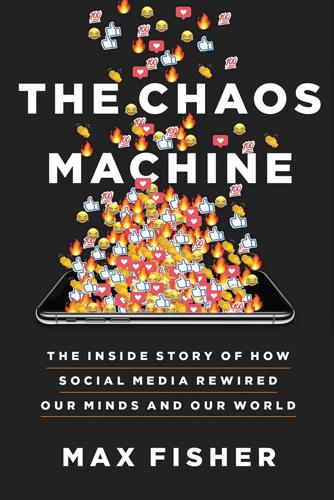
The Chaos Machine: The Inside Story of How Social Media Rewired Our Minds and Our World
by
Max Fisher
Published 5 Sep 2022
If 2016 was the year that the Valley was forced to acknowledge it served as puppeteer of a vast network of invisible strings that pulled at us like two billion marionettes, then 2017 was when its brightest programmers decided the solution was not to cut the strings, but to take even firmer control of them. It was just a matter of making us all dance to the proper tune. They were acting on a widely held misinterpretation of something known as contact theory. Coined after World War II to explain why desegregated troops became less prone to racism, the theory suggested that social contact led distrustful groups to humanize one another. But subsequent research has shown that this process works only under narrow circumstances: managed exposure, equality of treatment, neutral territory, and a shared task.
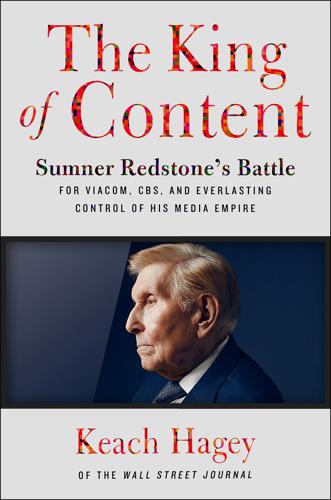
The King of Content: Sumner Redstone's Battle for Viacom, CBS, and Everlasting Control of His Media Empire
by
Keach Hagey
Published 25 Jun 2018
The research gave her a taste of legal work, and after graduating from Tufts in 1975, she went on to receive a JD degree from Boston University Law School in 1978. But her ambition was never to join a high-powered law firm. She had a job teaching constitutional law at METCO (Metropolitan Council for Educational Opportunity), the pioneering voluntary school desegregation program, when she ran into Mark Shub, the nephew of Mickey and Sumner’s longtime secretary, Tilly Berman, at a funeral. Berman was a kind of mother figure to Shari, mentoring her on how to navigate the male-dominated world of exhibition and typing up her papers for her when she was at school. Shub’s law firm, Salon, Silver, Heffernan & Shub, was looking for an associate.
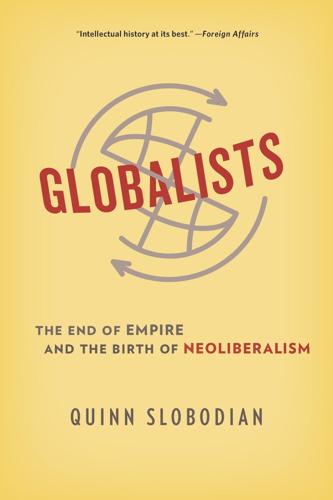
Globalists
by
Quinn Slobodian
Published 16 Mar 2018
The economist prided himself on taking unpopular positions and being “against the tide” (as his memoir was titled when published in English by Henry Regnery).143 This was certainly the case in the matter of South Africa. From 1964 until his death in 1966, Röpke’s concerns about foreign aid and “occidental civilization” converged in Southern Africa.144 Historians have shown how the National Review tacked to the right on issues of race in the late 1950s, culminating in Buckley’s 1957 editorial opposing desegregation on the grounds that whites were “the advanced race” and that science proved “the median cultural superiority of White over Negro.”145 Yet they rarely note that Buckley’s editorial is couched in a defense of European colonialism in Africa. Buckley defended British actions for maintaining colonial control in Kenya (which continued until 1964) as an example to the U.S.

To Serve God and Wal-Mart: The Making of Christian Free Enterprise
by
Bethany Moreton
Published 15 May 2009
Thomas housing projÂ�ect, once home to almost two thousand of the city’s poor. Its sturdy, low-rise duplexes dated from the New Deal commitment to shelter one-third of a nation, artifacts of the era before massive towers warehoused the urban poor. Reserved for white tenants for a generation, St. Thomas fiÂ�nally bowed to Great Society desegregation in the mid-1960s. By 1980, all of its tenants were black, even as a wave of white bargain-hunters snapped up the nearby shotgun shacks and bungalows of New Orleans’s quaint vernacular architecture. A deÂ�cade later, St. Thomas was home to all the classic trappings of postindustrial poverty: its fifty acres housed mostly single mothers with annual inÂ�comes below $5,000, plagued by poor health, lousy schools, and alarming rates of Â�violent crime.
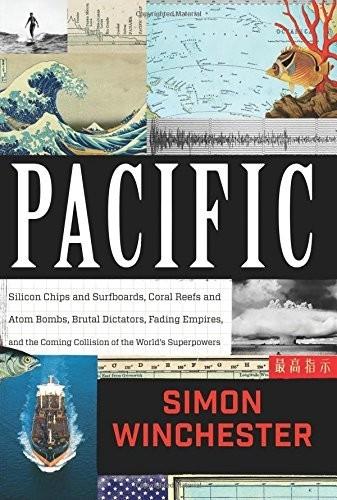
Pacific: Silicon Chips and Surfboards, Coral Reefs and Atom Bombs, Brutal Dictators, Fading Empires, and the Coming Collision of the World's Superpowers
by
Simon Winchester
Published 27 Oct 2015
A visiting Marshall Islander reported that the Bikinian exiles were emaciated, “just skin and bones,” and an American doctor found compelling evidence of real malnutrition. The islanders found an unanticipated champion. Harold L. Ickes, who had been Roosevelt’s interior secretary for more than a dozen years, the man who desegregated the national parks and who dedicated Boulder Dam and who was in many ways the personification of the practical implementation of FDR’s New Deal, got involved. By now retired, he was still a formidable champion of the underdog. In late 1947 he wrote a syndicated column decrying the treatment of the Bikini Islanders: “The natives,” he declared, “are actually and literally starving to death.”

Goddess of the Market: Ayn Rand and the American Right
by
Jennifer Burns
Published 18 Oct 2009
With her single-minded focus on capitalism, Rand missed the political realities unfolding on the ground. The violence and unrest of 1964, including the Watts riot, stoked racial anxieties. Goldwater had staked out his territory as an opponent of the Democratic approach to civil rights; whether he liked it or not, he was becoming a central figure in the political clash over integration and desegregation, and these issues, far more than capitalism, underlay his political fortunes. An eager booster of Goldwater up to his triumphant nomination at San Francisco’s Cow Palace, Rand became disillusioned as he moved into the general election. It was the same mistake Willkie had made. Goldwater began to retreat from his pro-capitalist stance, repackaging himself as a moderate who could appeal to a broad swath of voters.
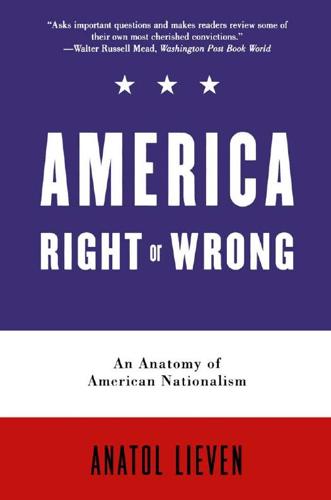
America Right or Wrong: An Anatomy of American Nationalism
by
Anatol Lieven
Published 3 May 2010
Thus in stages beginning in the 1940s, the U.S. military has deliberately turned itself into the most genuinely multiracial of all U.S. institutions, one where Blacks and others can advance to the highest ranks without having accusations of unfair preference thrown at them.100 Starting with President Harry Truman's decision to desegregate the military in 1948, this development was encouraged by all other presidents, with the conscious intention of strengthening America's civilizational appeal to "colored" peoples tempted by communism.101 For the military, this shift has increasingly become a matter of necessity as well as ideology.
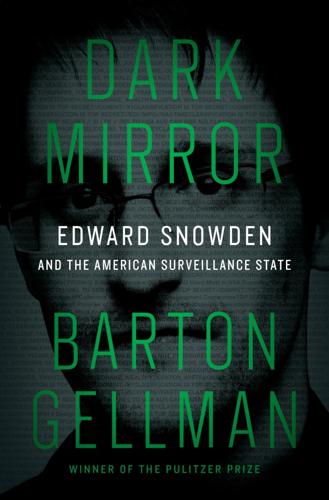
Dark Mirror: Edward Snowden and the Surveillance State
by
Barton Gellman
Published 20 May 2020
It still cared about worshippers at mosques to a degree that some judges found untoward. Not all of this history was the NSA’s, and there had been reforms, but the contingent nature of government interest was one of Snowden’s strongest points. Many advances we take for granted now in civil rights and social justice—women’s suffrage, desegregation, the right to form unions, gay marriage—relied on organized resistance against the law of their times. The Underground Railroad could not have run in a time of pervasive surveillance. The same could be said of the American Revolution. “They wouldn’t have been able to coordinate,” Snowden said of the founders.

The State and the Stork: The Population Debate and Policy Making in US History
by
Derek S. Hoff
Published 30 May 2012
Solinger, Wake Up Little Susie, 208 and 292–93 n. 9. 106. Scholars frequently manufacture population experts’ racism. For instance, Solinger, ibid., 208, suggests that anti-Black animus motivated demographer Philip Hauser, when in fact Hauser was a racial liberal who served on an advisory panel guiding the desegregation of Chicago’s public schools. 107. For his early liberalism, see Gruening, Many Battles, 57. 108. Catholic opposition squelched the fourteen maternal health clinics funded by the New Deal, but most continued with private funding, and a new law permitted the distribution of information about birth control.
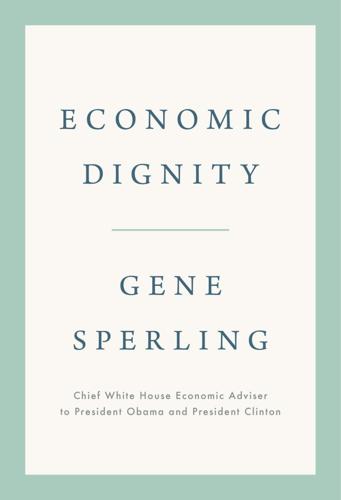
Economic Dignity
by
Gene Sperling
Published 14 Sep 2020
The buses became places where these workers could share stories of abuse, learn about rights, and exchange information about wages and workload as a critical, empowering first step to demanding improved conditions. Bolden saw her advocacy and organizing as also complementing the larger work of the civil rights movement, including the desegregation of schools. While Constance Motley was working hand in hand with Thurgood Marshall and the NAACP Legal Defense Fund to convince the Supreme Court and the white political power structure that segregation was an assault on first-class citizenship and basic dignity, Bolden saw raising the wages of black household workers as critical in that fight because “we couldn’t be going to integrate schools out there barefooted.”54 Shortly after Martin Luther King’s assassination in 1968, Bolden and others formed the National Domestic Workers Union of America (NDWUA), an education and advocacy organization committed to improving conditions for domestic workers that at its height served over ten thousand members nationally.55 Bolden led the NDWUA for twenty-eight years.56 As Ai-jen Poo, the head of the National Domestic Workers Alliance (NDWA), notes, the organization represented “the first time there was ever a voice [for domestic workers] that was powerful in terms of raising standards for the work force and improving wages.”57 Today, Ai-jen Poo has launched and run the NDWA to carry on Bolden’s efforts in organizing domestic workers around the country to fight back against the exclusions of household workers from our country’s labor protections.
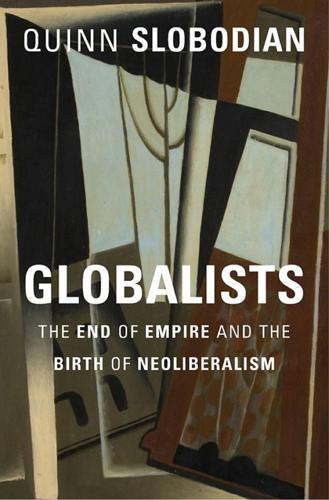
Globalists: The End of Empire and the Birth of Neoliberalism
by
Quinn Slobodian
Published 16 Mar 2018
The economist prided himself on taking unpopular positions and being “against the tide” (as his memoir was titled when published in English by Henry Regnery).143 This was certainly the case in the m atter of South Africa. From 1964 until his death in 1966, Röpke’s concerns about foreign aid and “occidental civilization” converged in Southern Africa.144 Historians have shown how the National Review tacked to the right on issues of race in the late 1950s, culminating in Buckley’s 1957 editorial opposing desegregation on the grounds that whites were “the advanced race” and that science proved “the median cultural superiority of White over Negro.”145 Yet they rarely note that Buckley’s editorial is couched in a defense of European colonialism in Africa. Buckley defended British actions for maintaining colonial control in Kenya (which continued u ntil 1964) as an example to the U.S.
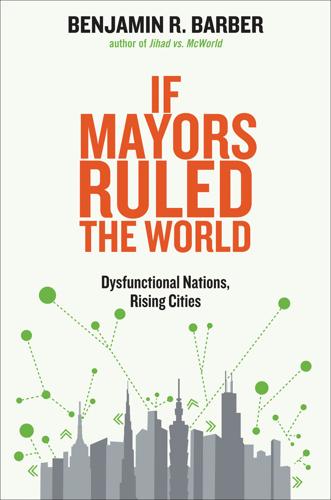
If Mayors Ruled the World: Dysfunctional Nations, Rising Cities
by
Benjamin R. Barber
Published 5 Nov 2013
Nor will prohibiting segregation by law (more or less achieved in developed societies) end it de facto in housing any more than prohibiting educational segregation will end it de facto in schools. The challenge for mitigation is clear, then, though anything but simple: equality without deracination, and anonymity without the loss of community: which is to say, community and neighborhood without de facto segregation and without the loss of equal access to all city resources; and desegregation without uniformity and without the loss of diversity and freedom. Transportation It might seem that transportation that is public is by definition a universally accessible public good relatively immune to the distortions of wealth or segregation. But what is public in theory can be less than public in practice.
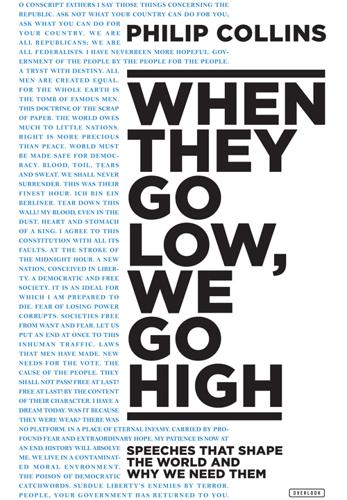
When They Go Low, We Go High: Speeches That Shape the World – and Why We Need Them
by
Philip Collins
Published 4 Oct 2017
By the end of that it is starting to die: the image of the cancelled check is too thin to bear the weight of injustice it is being asked to carry. This section is designed to set up the purpose of the speech, which is to help President Kennedy introduce a comprehensive civil rights bill. That bill was intended to do away with segregated public accommodation, protect the right to vote and the panoply of constitutional rights, desegregate all public schools and introduce a Federal Fair Employment Practices Act to debar discrimination in all employment. King’s scripted moderation is in deference to the anxieties of the president. When the civil rights activist James Bevel proposed a march from Birmingham, Alabama, to Washington, modelled on Gandhi’s famous Salt March to the Sea, President Kennedy was worried that bad publicity, maybe from violence on the day, could set back the cause.
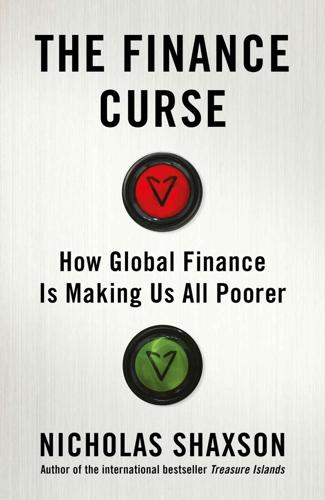
The Finance Curse: How Global Finance Is Making Us All Poorer
by
Nicholas Shaxson
Published 10 Oct 2018
All this amounted to a rather progressive agenda – or so he thought.6 Tiebout himself never really pursued his idea; it was certainly elegant, but for him it was ‘just another paper’.7 And for a long time it didn’t take off. Political centralisation was in vogue so nobody cared much for theories about local politics, and the media usually only brought up local government in the context of desegregation, incompetence or corruption. The story might well have ended there – and for Charlie Tiebout it did: he died of a heart attack in January 1968, aged forty-three. When the world finally started to wake up to Tiebout’s paper, the year after his death, it would kick off a debate about one of the most important questions in the modern global economy: what happens when rich people, banks, multinational firms or profits shift across borders in response to different incentives like corporate tax cuts, financial deregulation and so on?
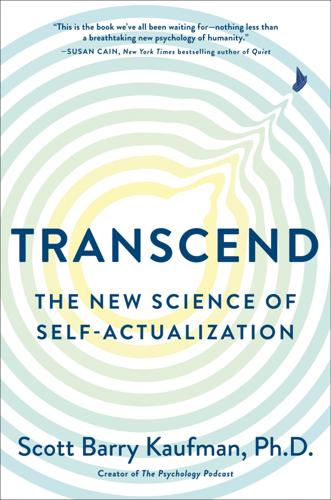
Transcend: The New Science of Self-Actualization
by
Scott Barry Kaufman
Published 6 Apr 2020
A biobehavioral model distinguishing romantic love and sexual desire. Psychological Review, 110(1), 173–192; Fisher, H. E. (1998). Lust, attraction, and attachment in mammalian reproduction. Human Nature, 9(1), 23–52; Fisher, H. E. (2004). Why we love: The nature and chemistry of romantic love. New York: Henry Holt; Tolman, D. L., & Diamond, L. M. (2001). Desegregating sexuality research: Cultural and biological perspectives on gender and desire. Annual Review of Sex Research, 12, 33–74; Jenkins, C. (2017). What love is: And what it could be. New York: Basic Books. * Well, the one exception may have been Carl Rogers. He did seem particularly optimistic about human nature!
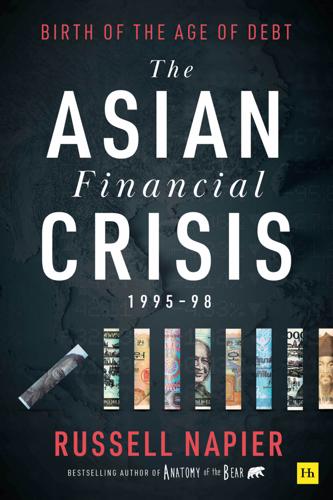
The Asian Financial Crisis 1995–98: Birth of the Age of Debt
by
Russell Napier
Published 19 Jul 2021
However, no ‘Asia’ premium will be permanently priced in due to the disintegration of Indonesia. In particular, Hong Kong will be unimpacted and as investors perceive that an extension of China’s export boom may result, interest rates in the SAR will continue to fall. The history of capital in Asia is a history of major desegregation of risk. It has happened before and it will happen again. At the time it seemed normal to assert that the rising risk premium associated with investment in Indonesia would push risk premiums in all markets classified as ‘Asian’ higher. I could not see why that would be true then and I cannot today, even with the benefit of hindsight, see why it made any sense.
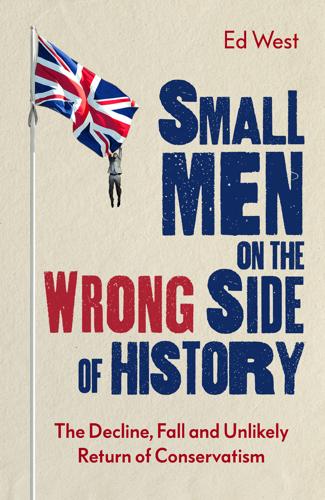
Small Men on the Wrong Side of History: The Decline, Fall and Unlikely Return of Conservatism
by
Ed West
Published 19 Mar 2020
The British have a sort of psychological awareness of 1960s America as being the era of civil rights and freedom, yet this social change went hand in hand with an enormous rise in murder in urban America, unprecedented anywhere in modern times. The homicide rate trebled or quadrupled in less than a decade in some cities, leading to an exodus of millions to the suburbs, a huge psychological shock to a lot of people that made ‘liberal’ a dirty word. For many people the experience of desegregation wasn’t the image of a stoic Martin Luther King leading a dignified protest – he was largely unpopular at the time of his death – but shocking incidents of violent crime in their neighbourhoods. Britain’s crime explosion was not so extreme, but it was considerable nonetheless, and tabloids appealed to a demographic for whom the horrific violence of the 1980s and 1990s was inconceivable in the readers’ childhoods.
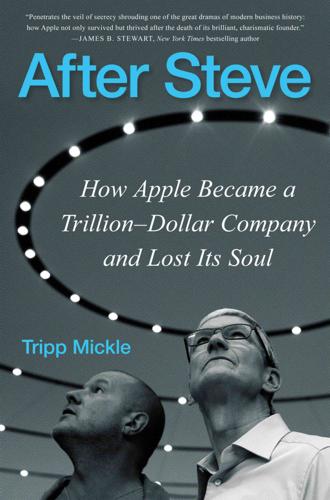
After Steve: How Apple Became a Trillion-Dollar Company and Lost Its Soul
by
Tripp Mickle
Published 2 May 2022
He spent eighteen months in South Korea before returning to the Gulf Coast, where he earned a living in the shipyards. He and Geraldine married and started a family, having three boys. The family drifted from Mobile across the bay to nearby Pensacola, Florida, where Cook’s grandfather, Canie, lived. They stayed there until it came time for the youngest, Gerald, to start school. It was 1970, and desegregation was accelerating across the Deep South. Pensacola, which had resisted busing, was ordered by a judge to integrate its schools. Tensions were high. Fights broke out between whites and Blacks at the city’s high school, with some caused by Confederate imagery. The Cooks, who were lower middle class, moved to nearby Baldwin County, Alabama, where Geraldine’s twin sister had settled.

The Rise and Fall of the Neoliberal Order: America and the World in the Free Market Era
by
Gary Gerstle
Published 14 Oct 2022
Jim Crow was not challenged (except in Washington, DC, government offices), efforts to pass anti-lynching bills in Congress failed, and the World War II army sent to Europe to crush the Nazis and their ideology of racial hatred was a thoroughly segregated institution. Black and white soldiers did not live together, fight together, or even share the army’s blood supplies.2 This toleration of white supremacy within the Democratic Party, so strong in the 1930s and early 1940s, plummeted after World War II. Truman desegregated the Armed Forces in 1946, the Democratic Party inserted into its 1948 platform a plank committing itself to the cause of racial equality, and the Supreme Court, now populated largely by Roosevelt-appointed justices, declared Jim Crow unconstitutional in its stunning 1954 Brown v. Board decision.

Ashes to Ashes: America's Hundred-Year Cigarette War, the Public Health, and the Unabashed Triumph of Philip Morris
by
Richard Kluger
Published 1 Jan 1996
By 1957, its third year on the market, Marlboro was the No. 8 best-selling cigarette and had surpassed the Philip Morris brand as the company’s bellwether and main hope for advancement. Philip Morris’s profit pinch was exacerbated in the mid-’Fifties by what came to be known within the company as The Dixie Dilemma. Ordered in 1955 to desegregate its public schools, the surly and largely white-supremacist culture of the South was snappish toward any perceived Yankee intrusions. At the likely instigation of one or more of its competitors, Philip Morris was painted throughout the old Confederacy as a warm friend of black America because it had made a modest charitable contribution to the Urban League, it employed one Negro as a minor sales executive, and its main manufacturing facilities in Virginia were somewhat more integrated than those of the other tobacco companies, most with factories in North Carolina.
…
In this age of domestic turbulence, there was no discrete “health lobby” with its champions in Congress—only a far-flung and unorganizable assortment of individual Americans worried about the cigarette habit. And there was no leadership on the issue from Lyndon Johnson’s administration, engaged in the fight for social justice and its war on poverty. “We were in monumental battles,” recalled Joseph A. Califano, Jr., then a key (and heavy-smoking) White House aide. “Our focus in the South was on desegregation—we were making enough enemies as it was,” and so to have pushed for regulation of the tobacco industry would likely have compounded the problems besetting the administration. The President’s 1964 Republican opponent, Barry Goldwater, was still more indifferent to the smoking issue. He said a health warning label on cigarette packs “would interfere with freedom”—whose and how, he did not explain.
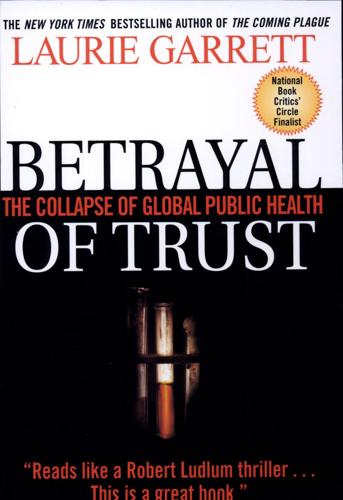
Betrayal of Trust: The Collapse of Global Public Health
by
Laurie Garrett
Published 15 Feb 2000
GNP numbers were as follows: Per capita GNP also rose radically: Source: Patterson, J. T. ibid. 231. In the early 1950s the National Association for the Advancement of Colored People (NAACP) went to the courts, suing for equal rights to education, jobs, and housing. In the most dramatic case, Brown v. Board of Education, the Supreme Court ruled to desegregate the nation’s public schools. In its opinion the court opined that segregation “generates a feeling of inferiority as to the status in the community that may affect their hearts and minds in a way unlikely ever to be undone.” A succession of landmark legal decisions followed, knocking down most of the old “Jim Crow” laws that had segregated everything from water fountains to cemeteries in the United States since the Civil War.
…
The AMA consistently defended the white privileges of its southern members, and only begrudgingly admitted African-Americans into its fraternity. Nor did it revoke the charters of state chapters that refused admission to black doctors. That action would not be taken until 1966. And the AMA would not recognize the courage of black physicians who fought to desegregate the health system—and the American Medical Association—until 1989, more than 120 years after Abraham Lincoln signed the Emancipation Proclamation. 238. Johnson, L. B., “Address Before a Joint Session of Congress.” November 27, 1963. 239. Simkins v. Moses H. Cone Memorial Hospital. 323 F 2d. 959, 970 n. 23 (1963). 240.

Frommer's San Diego 2011
by
Mark Hiss
Published 2 Jan 2007
Meanwhile, the fair also showed off the newly built 10 05_626214-ch02.indd 1005_626214-ch02.indd 10 7/23/10 11:16 PM7/23/10 11:16 PM Trivia: Segregated No More On January 5, 1931, trustees at Lemon Grove Grammar School instructed principal Jerome Green to turn Mexican children away at the door, resulting in a lawsuit. The “Lemon Grove Incident” became the first successful school desegregation court decision in U.S. history. 2 SAN DIEGO IN DEPTH Looking Back at San Diego Fine Arts Gallery (now San Diego Museum of Art, p. 144), Natural History Museum (p. 145), and Old Globe Theatre (p. 225). The park’s Spanish Revival architecture seen today was conceived in an effort to present San Diego as a place with a romantic European heritage.
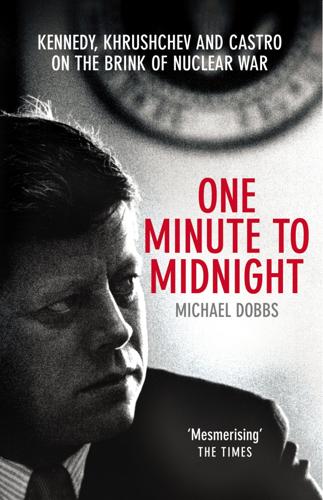
One Minute to Midnight: Kennedy, Khrushchev and Castro on the Brink of Nuclear War
by
Michael Dobbs
Published 3 Sep 2008
Inevitably, with an operation on such a scale, all kinds of problems arose. The Marines had been in such a hurry to put to sea that they sailed without proper communications equipment. Many Army units were below strength. There was a shortage of military police because some units had been dispatched to the Deep South to enforce federal court orders on desegregation. Planners had underestimated the number of vessels needed for an amphibious invasion and miscalculated the gradients at some of the beaches. There was a scramble for deep-water fording kits when the Army discovered that the beaches at Mariel were not as shallow as had been assumed. The Navy complained of a "critical shortage" of intelligence on sandbars and coral reefs at Tarará beach, which could jeopardize the "success of entire assault in western Cuba."
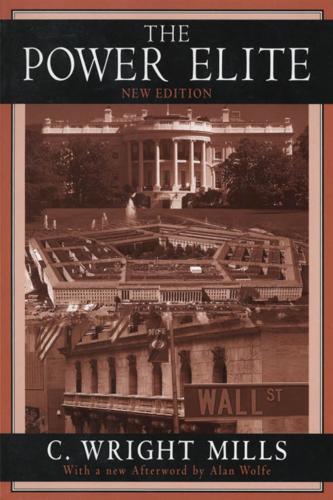
The Power Elite
by
C. Wright Mills
and
Alan Wolfe
Published 1 Jan 1956
John F. Kennedy (son of multimillionaire Joseph P. Kennedy), Democrat of Massachusetts, was reported to have spent $15,866 in his 1952 campaign, but ‘committees on his behalf for the improvement of the shoe, fishing and other industries of the state, spent $217,995.’19 * In one state, the desegregation issue seemed to matter most; in another, an Italian, married to an Irish woman, used the names of both with due effect. In one state, a tape-recording of a candidate’s two-year-old talk about whom policemen tended to marry seemed important; in another, whether or not a candidate had been kind enough, or too kind, to his sister.
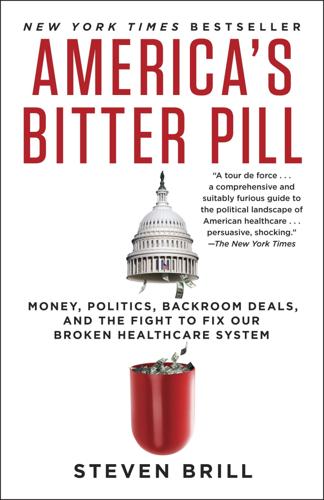
America's Bitter Pill: Money, Politics, Backroom Deals, and the Fight to Fix Our Broken Healthcare System
by
Steven Brill
Published 5 Jan 2015
Despite the president’s reelection, and despite the Supreme Court’s ruling, the Republicans acted as if Obamacare were still a pending bill to be debated, rather than the law of the land to be implemented. The closest historical precedent might have been resistance to the Supreme Court’s Brown v. Board of Education decision desegregating public schools. Yet that at least could be attacked as the decision of nine men in robes, not the duly elected House, Senate, and president. When Senate minority leader Mitch McConnell got wind of an effort by the Obama administration to enlist the National Football League and other professional sports organizations to get their players to do public service commercials to encourage Americans to sign up for coverage (much the way Mitt Romney had enlisted the Boston Red Sox to promote Romneycare), he and Senator John Cornyn of Texas successfully urged the league to steer clear.
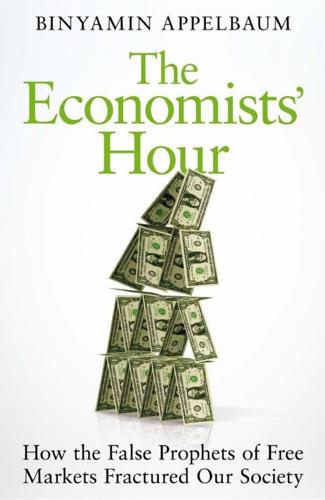
The Economists' Hour: How the False Prophets of Free Markets Fractured Our Society
by
Binyamin Appelbaum
Published 4 Sep 2019
At a meeting with executives in New York City in the summer of 1970, Shultz was pressed on what the government would do to prevent rising wages. The government? The mild-mannered Shultz exploded, telling the executives, “You’re just a bunch of crepehangers.”50 Nixon, taking notice of Shultz’s talents, asked the economist to mediate the desegregation of schools in several southern states. Then he promoted Shultz to run the Office of Management and Budget. Shortly after that change, Senator Robert Dole mentioned to Nixon that he was having trouble contacting John Ehrlichman, one of the President’s top advisers. “Ehrlichman?” Nixon responded.
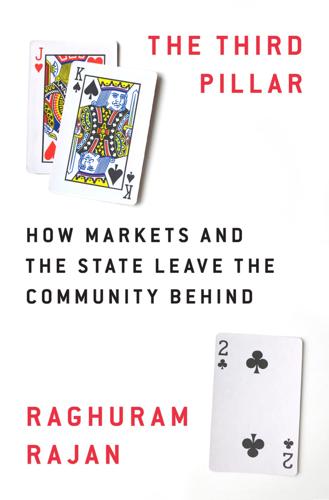
The Third Pillar: How Markets and the State Leave the Community Behind
by
Raghuram Rajan
Published 26 Feb 2019
The passage of the National Defense Education Act in 1958 and President Lyndon Johnson’s Elementary and Secondary Education Act in 1965 as part of his War on Poverty boosted federal funding for education tremendously. As this opened a pathway for the federal government into local school districts, courts began using the lever of federal education subsidies to implement district-wide desegregation programs. Even as the government increased its intervention, the student body in many schools became less diverse. The reason was simple: As more disadvantaged minorities were admitted into public schools, the white parents who could, moved their children out. The share of minority students in schools that have over 90 percent minority children decreased after the Civil Rights movement through much of the United States, but has climbed back up since.23 In the Northeast, it never decreased, and by this measure, the liberal Northeast is the most segregated region in the United States today.

The Technology Trap: Capital, Labor, and Power in the Age of Automation
by
Carl Benedikt Frey
Published 17 Jun 2019
A handful of cities with the “right” industries and a solid base of human capital keep attracting good employers and offering high wages, while those at the other extreme, cities with the “wrong” industries and a limited human capital base, are stuck with dead-end jobs and low average wages. This divide—I will call it the Great Divergence—has its origins in the 1980s when American cities started to be increasingly defined by their residents’ levels of education.… At the same time that American communities are desegregating racially, they are becoming more segregated in terms of schooling and earnings.31 This trend began with the age of computers. It is true that some professional services, like accounting, can now be delivered electronically from a distance. But new jobs, spawned by computer technologies, are highly concentrated, suggesting that place has become more significant as production has become more skill intensive.
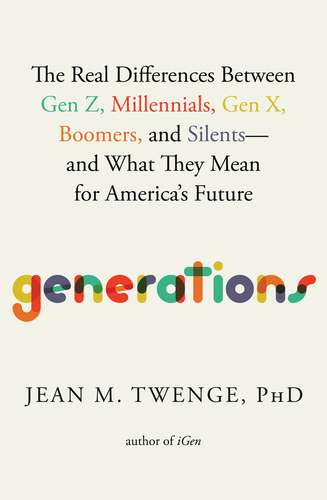
Generations: The Real Differences Between Gen Z, Millennials, Gen X, Boomers, and Silents—and What They Mean for America's Future
by
Jean M. Twenge
Published 25 Apr 2023
It took an extraordinarily long time to unwind mandated school segregation in the South; despite the Supreme Court outlawing school segregation in 1954, most southern public schools were still segregated by race well into the 1960s, and many schools in the North were de facto segregated based on racial segregation in neighborhoods. By the late 1960s, this began to change, with many schools integrating as the second half of the Boomer generation entered high school. The number of Black children attending desegregated schools jumped from 17% in 1966 to more than 80% in 1970. Boomers would not be the last generation to attend schools with a predominant racial makeup, but they were the last generation to attend schools completely segregated by race. Neighborhoods also became more integrated by race as Boomers built their families; an index of residential segregation dropped by 12% between 1980 and 2000.
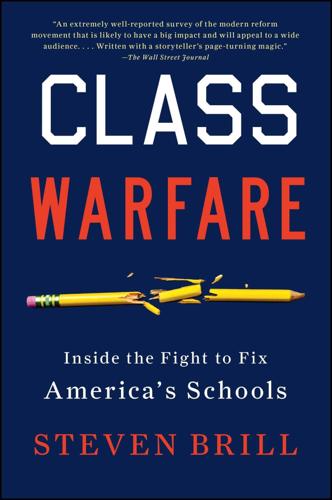
Class Warfare: Inside the Fight to Fix America's Schools
by
Steven Brill
Published 15 Aug 2011
By 2007, the contract would be 167 pages and full of restrictions on hours and other working conditions, and the starting salary would be $45,530, or more than eight times 1962’s $5,300. Through the 1960s, Shanker, who became president of the UFT in 1964, pushed his union beyond meat-and-potatoes concerns into a leadership role across a broad range of social justice issues, particularly in the area of civil rights. He led union members to the South to support desegregation sit-ins and marches, often at great personal risk. When liberal Republican John Lindsay took office in 1966, the union overcame a different kind of challenge, which earned it the enmity of many in the civil rights community but dramatically added to its political clout. Lindsay had responded to the concerns of minority groups about the terrible state of the schools in New York’s ghettos by backing the recommendation of an independent group of civic leaders that the city’s mammoth school system be decentralized so that minority communities could control their schools.
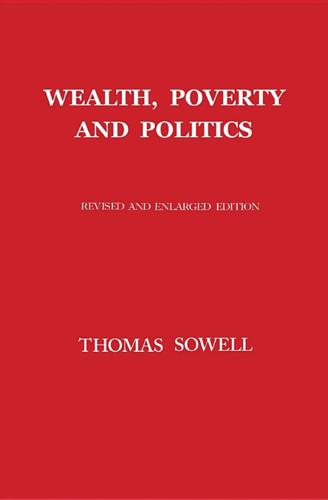
Wealth, Poverty and Politics
by
Thomas Sowell
Published 31 Aug 2015
Will Pavia, “French Zealots Just Don’t Fancy an Italian,” The Times (London), February 22, 2013, p. 28; Jeremy King, Budweisers Into Czechs and Germans: A Local History of Bohemian Politics, 1848–1948 (Princeton: Princeton University Press, 2002), pp. 4, 128. 55. See, for example, Stuart Buck, Acting White: The Ironic Legacy of Desegregation (New Haven: Yale University Press, 2010). 56. For other examples, see Ellen Churchill Semple, Influences of Geographic Environment (New York: Henry Holt and Company, 1911), p. 625. 57. Donald L. Horowitz, Ethnic Groups in Conflict, p. 153. 58. Arnold J. Toynbee, Nationality & The War (London: J.M.
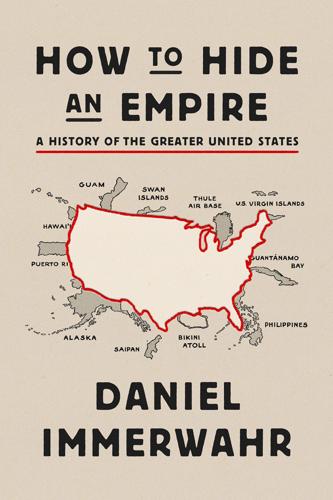
How to Hide an Empire: A History of the Greater United States
by
Daniel Immerwahr
Published 19 Feb 2019
Arch-segregationist Strom Thurmond, one of the longest-serving congressmen in the country’s history, lectured his colleagues on the “impassible difference” between Western civilization and Eastern ways. “East is East, and West is West, and never the twain shall meet,” he admonished, quoting Kipling. Southern opposition stymied Hawaiian and Alaskan statehood through the forties and fifties, but it could not hold out forever. Well-known among the civil rights movement’s triumphs are the desegregation of schools won in Brown v. Board of Education in 1954 and the prohibition of racial discrimination at the polls secured by the Voting Rights Act of 1965. Less touted in the textbooks are the admission of Alaska and Hawai‘i as the forty-ninth and fiftieth states in 1959. But those, too, were serious blows against racism.
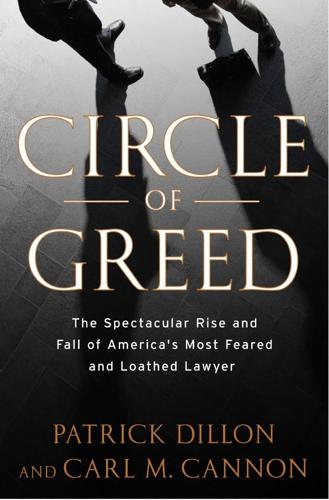
Circle of Greed: The Spectacular Rise and Fall of the Lawyer Who Brought Corporate America to Its Knees
by
Patrick Dillon
and
Carl M. Cannon
Published 2 Mar 2010
What they were doing, and doing consciously, was emulating a famous case that had changed the law and American society. That case was Brown v. Board of Education. The case of record ended up as the one involving the school board in Topeka, Kansas, but NAACP lawyers had conjoined separate school desegregation cases from five states into one. What’s more, under a new theory called “fraud on the market” that had been given birth by legal academics—and quickly embraced, applied to Rule 10b-5, and put into practice in class action securities lawsuits by Mel Weiss—these plaintiffs need not have actually seen or relied on misleading statements to bring the lawsuits.
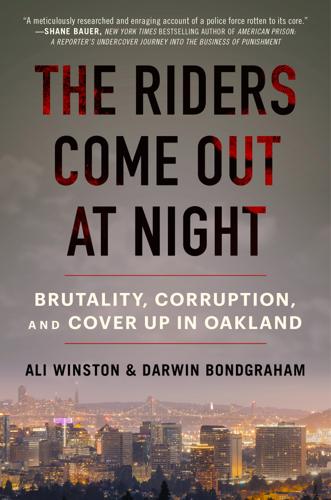
The Riders Come Out at Night: Brutality, Corruption, and Cover-Up in Oakland
by
Ali Winston
and
Darwin Bondgraham
Published 10 Jan 2023
They lit up the Oakland Unified School District’s phone switchboard with protest calls, asking, “Do you practice segregation?”3 The district’s all-white school board denied the obvious fact that the Black population, which had grown by a factor of ten in just twenty years, was being hemmed into ghettos and its kids shunted into subpar schools. In 1966 two activist groups organized a school boycott to demand rapid desegregation, busing, smaller class sizes, and free school lunches: the Oakland Direct Action Committee (ODAC), founded by an African American, Mark Comfort, and the Ad Hoc Committee for Quality Education, established by Black civil rights attorney John George. One-third of Oakland high school students participated, but the school district, city council, mayor, and county board of supervisors did their best to ignore their demands.

Moon Oregon Trail Road Trip: Historic Sites, Small Towns, and Scenic Landscapes Along the Legendary Westward Route
by
Katrina Emery
and
Moon Travel Guides
Published 27 Jul 2020
S Kansas City, Missouri: The biggest city in the state offers fantastic barbecue and vibrant nightlife. It’s conveniently close to the Oregon Trail’s official starting point in Independence (click here). S Topeka, Kansas: Trail ruts, a museum focused on the state’s history, and a monument to desegregation are all great reasons to spend some time in the Kansas capital (click here). Fuel and Services Plenty of gas stations are along the route across Missouri and into Kansas. After Topeka, you’ll hit smaller towns but will still find amenities every half hour or so. Note that many restaurants close on Sunday, especially in the rural areas between St.

USA Travel Guide
by
Lonely, Planet
Following its defeat the state walked a tense cultural tightrope, accruing a layered identity that included older aristocrats, a rural and urban working class, waves of immigrants and today, the burgeoning tech-heavy suburbs of DC. The state revels in its history, yet still wants to pioneer the American experiment; thus, while Virginia only reluctantly desegregated in the 1960s, today it houses one of the most ethnically diverse populations of the New South. SCENIC DRIVE: VIRGINIA’S HORSE COUNTRY About 40 miles west of Washington, DC, suburban sprawl gives way to endless green farms, vineyards, quaint villages and palatial estates and ponies. This is ‘Horse Country,’ where wealthy Washingtonians pursue their equestrian pastimes.
…
ALABAMA FACTS » Nickname The Heart of Dixie » Population 4.7 million » Area 52,419 sq miles » Capital city Montgomery (population 224,119) » Other cities Birmingham (population 212,237) » Sales tax 4%, but up to 11% with local taxes » Birthplace of Author Helen Keller (1880–1968), civil rights activist Rosa Parks (1913–2005), musician Hank Williams (1923–53) » Home of US Space & Rocket Center » Politics GOP stronghold – Alabama hasn’t voted democratic since 1976 » Famous for Rosa Parks and the Civil Rights movement » Bitterest rivalry University of Alabama vs Auburn University » Driving distances Montgomery to Birmingham 91 miles, Mobile to Dauphin Island 38 miles History Alabama was among the first states to secede in the Civil War. Montgomery was the first Confederate capital. Alabama lost around 25,000 soldiers in the war, and reconstruction came slowly and painfully. Racial segregation and Jim Crow laws survived into the mid-20th century, when the Civil Rights movement campaigned for desegregation of everything from public buses to private universities, a notion that Governor George Wallace opposed. In perhaps the most famous moment in civil rights history, an African American woman named Rosa Parks refused to give up her bus seat to a white passenger and was arrested; the ensuing uproar began to turn the tide in favor of racial equality.
…
The Hillcrest Neighborhood toward west Little Rock is a tiny epicenter of and funky shops and is a communing ground for minority strains of counterculture in the city. Little Rock Central High School HISTORIC SITE (www.nps.gov/chsc; 2125 Daisy Bates Dr; 9:30am-4:30pm, tours 9am & 1:15pm Mon-Fri mid-Aug–early Jun) Little Rock’s most riveting attraction is the site of the 1957 desegregation crisis that changed the country forever. It was here that a group of African American students known as the Little Rock Nine were first denied entry inside the then all-white high school (despite a 1954 Supreme Court ruling forcing the integration of public schools) then escorted by the 1200-man 101st Airborne Battle Group, a pivotal moment in the American Civil Rights Movement.
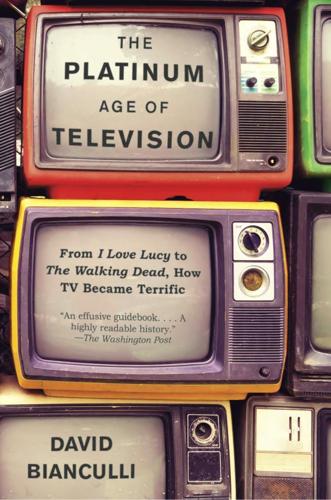
The Platinum Age of Television: From I Love Lucy to the Walking Dead, How TV Became Terrific
by
David Bianculli
Published 15 Nov 2016
The 2010–13 series Treme, examining life in New Orleans after Hurricane Katrina, was co-created with his fellow Homicide and The Wire writer-producer Eric Overmyer. And his 2015 miniseries Show Me a Hero, based on a case of a young politician in Yonkers dealing with racism and politics concerning a desegregation housing ruling, was co-written with Lisa Belkin, author of the original nonfiction book of the same name, and the Wire staff writer and story editor William F. Zorzi. All these dramas were excellent. None of them came easily. “Listen,” Simon says, describing his long-term relationship with HBO.

The Innovators: How a Group of Inventors, Hackers, Geniuses and Geeks Created the Digital Revolution
by
Walter Isaacson
Published 6 Oct 2014
“Their outlook was that what you were fed by the media was generally phony, which was one of my father’s favorite words,” Felsenstein recalled. Even after they left the Party, his parents remained left-wing organizers. As a kid, Felsenstein picketed visiting military leaders and helped organize demonstrations in front of a Woolworth’s in support of the desegregation sit-ins in the South. “I always had a piece of paper to draw on when I was a kid, because my parents encouraged us to be creative and imaginative,” he recalled. “And on the other side there was usually some mimeographed leaflet from an old block organization event.”84 His technological interests were instilled partly by his mother, who repeatedly told of how her late father had created the small diesel engines used in trucks and trains.
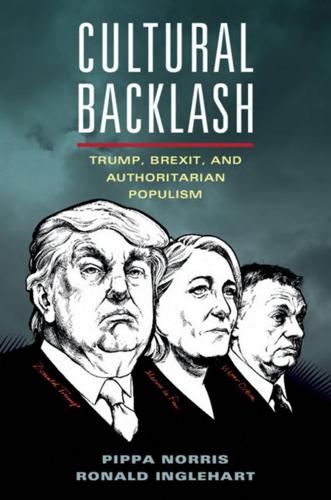
Cultural Backlash: Trump, Brexit, and Authoritarian Populism
by
Pippa Norris
and
Ronald Inglehart
Published 31 Dec 2018
The two major parties reflected the classic left–right economic cleavages, with Roosevelt quickly abandoning austerity and orthodox fiscal and budgetary policies in favor of New Deal programs reflecting Keynesian ideas of economic management, emphasizing government regulation of the marketplace, and the expansion of spending on federally funded emergency relief and public works programs designed to put Americans back to work, reduce widespread poverty and hunger, and win World War II. The post-war decades saw the growing salience of important cultural issues, notably the Civil Rights movement, desegregation, and the Civil Rights Act of 1957 prohibiting discrimination by federal and state governments based on race, color, sex, and national origin – and Trump’s America 2.0 1.0 0 –1.0 –2.0 Democratic party –3.0 Republican party –4.0 1920 1924 1928 1932 1936 1940 1944 1948 1952 1956 1960 1964 1968 1972 1976 1980 1984 1988 1992 1996 2000 2004 2008 2012 Economic << Balance of manifesto issues >> Cultural 336 Years Figure 10.2.
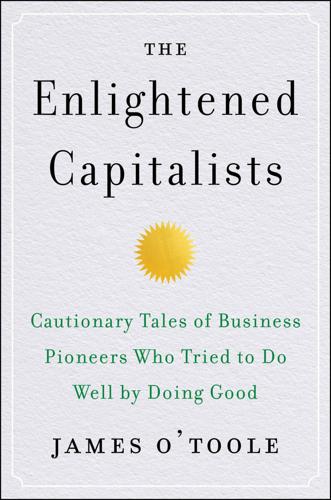
The Enlightened Capitalists
by
James O'Toole
Published 29 Dec 2018
The commission advocated equal justice for all, starting with the two hundred thousand black soldiers returning to the South after serving in Europe during World War I.33 Although the commission fought against mob violence directed at African Americans, and was vocal in its opposition to Jim Crow laws, it seems to have stopped short of advocating desegregation of schools and public places. Nonetheless, it took courageous stands in favor of voting rights for blacks, their right to serve on juries, and equal distribution of public funds for education, health, and educational institutions.34 The Atlanta-based CIC spawned the creation of numerous branches throughout the South.
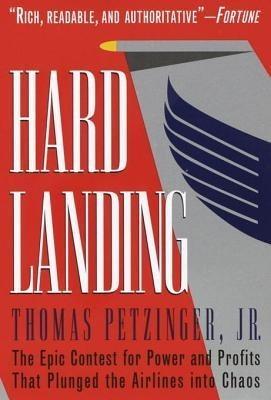
Hard Landing
by
Thomas Petzinger
and
Thomas Petzinger Jr.
Published 1 Jan 1995
Acker needed to recruit a board member to join him in championing the deal. One way to lock up such loyalty, he thought, was to give a director a financial incentive in the outcome. Acker turned to William T. Coleman, Jr., a noted civil rights attorney and power broker who had played a leading role in the landmark desegregation case Brown v. Board of Education. Coleman later stood out among civil right advocates for his Republican leanings, and had been transportation secretary in the administration of Gerald Ford. In that capacity he was among the Ford administration officials who gave momentum to the deregulation campaign that was completed during the Carter administration.
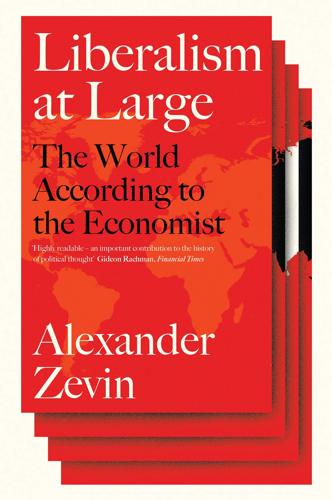
Liberalism at Large: The World According to the Economist
by
Alex Zevin
Published 12 Nov 2019
Kennedy, a rising star after the Democratic convention in 1956, asked if the Economist – to which his father Joseph, as US ambassador to London, had given him a lifetime subscription – was dumbing down by introducing line drawings. ‘His temperament was rather more conservative than I had supposed.’ Kyle was less impressed by other aspects of life in America. Washington, with its unrepresented black majority, was ‘run like a colony, and a fairly primitive one’. In reporting on desegregation and the bus boycott in Montgomery, Alabama, he was far more impressed by the courage of Rosa Parks and Martin Luther King Jr. than the white officials he met – just as in India. McCarthyism was most disturbing of all. Kyle recalled a cocktail party where the Economist was attacked as everything the senator from Wisconsin was against; on his side there was little but contempt for the ‘most notorious abuser of human rights in the name of anti-Communism’.124 While none of this made Kyle an opponent of American foreign policy, it did place him at odds with a relay of rightwing editors in London that Crowther began to appoint at the same time, the first of whom was a shadowy young Australian named Brian Crozier.
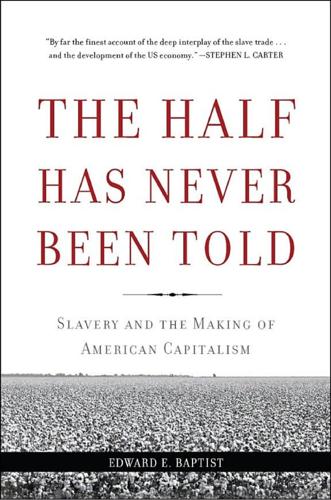
The Half Has Never Been Told: Slavery and the Making of American Capitalism
by
Edward E. Baptist
Published 24 Oct 2016
Abolitionists were snakes in the garden, responsible for a Civil War in which hundreds of thousands of white people died. Maybe the end of slavery had to come for the South to achieve economic modernity, but it didn’t have to come that way, they said. The way that Americans remember slavery has changed dramatically since then. In tandem with widespread desegregation of public spaces and the assertion of black cultural power in the years between World War II and the 1990s came a new understanding of the experience of slavery. No longer did academic historians describe slavery as a school in which patient masters and mistresses trained irresponsible savages for futures of perpetual servitude.
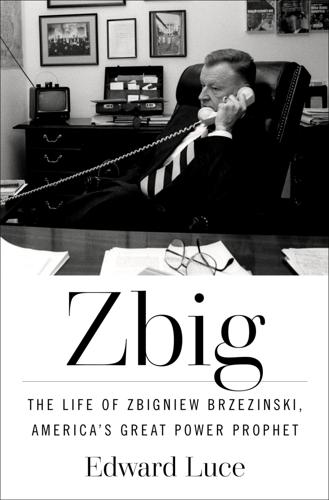
Zbig: The Life of Zbigniew Brzezinski, America's Great Power Prophet
by
Edward Luce
Published 13 May 2025
Public fear of collapsing law and order probably did more than opposition to the Vietnam War to win the 1968 election for Nixon. It was the peak year of so-called white flight from the cities. Many in what Nixon dubbed the “silent majority” were no fans of the Vietnam War. But they were susceptible to Nixon’s racial dog whistles—his so-called Southern Strategy—to wrest the desegregated South from Democratic hands. After the 1964 Voting Rights Act passed Congress, LBJ had turned to his aide Bill Moyers and said, “We just lost the South for a generation.” That proved to be an understatement. The 1968 riots made it easier for Nixon to harvest the backlash. America’s urban unrest was distinct from the Left’s anti–Vietnam War and counterculture protests, although they sometimes overlapped.

USA's Best Trips
by
Sara Benson
Published 23 May 2010
* * * Out of many contenders, there are two excellent sleeping options in Virginia’s capital: the Massad House Hotel, a cozy, centrally located study in Tudor-style budget bliss; and one of the poshest palaces of Dixie patricians, the Jefferson Hotel, a modern execution of the moonlight-and-magnolia cliché. Petersburg, just south of Richmond, is the blue-collar sibling city to the Virginia capital, its center gutted by white flight following desegregation. Petersburg National Battlefield Park marks the spot where Northern and Southern soldiers spent almost a quarter of the war in a protracted, trench-induced stand-off. The Battle of the Crater, made well known in Charles Frazier’s Cold Mountain, was an attempt by Union soldiers to break this stalemate by tunneling under the Confederate lines and blowing up their fortifications; the end result was Union soldiers caught in the hole wrought by their own sabotage, killed like fish in a barrel.
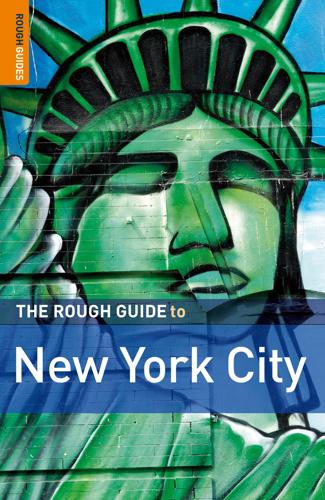
The Rough Guide to New York City
by
Martin Dunford
Published 2 Jan 2009
Across the way, the tall, narrow Theresa Towers office building, 2090 Adam Clayton Powell, Jr Blvd at 125th St, was until the 1960s the Theresa Hotel. Designed by George and Edward Blum in 1913, it still stands out from the rest of the street, thanks to its gleaming white terracotta patterns topped with sunbursts. Not desegregated until 1940, the hotel became known as the “Waldorf of Harlem.” Fidel Castro was a guest here in 1960 while on a visit to the United Nations, when he shunned midtown luxury in a popular political gesture. Look, too, for the former Blumstein’s store, 230 W 125th St at Eighth Ave, which now operates as the Touro College Medical School.
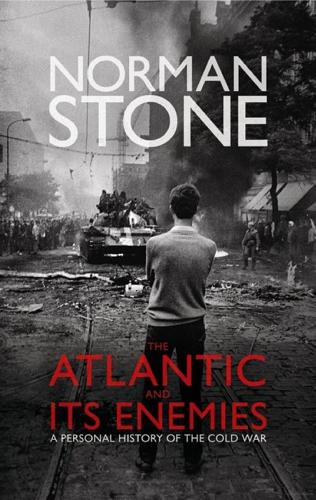
The Atlantic and Its Enemies: A History of the Cold War
by
Norman Stone
Published 15 Feb 2010
Progressive-minded criminologists had been arguing quite successfully for non-use of prison, but crime rates doubled in the 1960s whereas the numbers in prison actually fell, from 210,000 to 195,000 (by 1990 they had risen again, to one million), in accordance with modish behaviouralist ideas, and in the later 1970s, although there were 40 million serious crimes every year, only 142,000 criminals were imprisoned. The National Rifle Association membership grew from 600,000 in 1964 to 2 million in 1981. If the police and the courts would not defend Americans, what else were they supposed to do? Contempt for ordinary Americans also showed in the interpretation of the desegregation laws. The worst cases happened over school segregation. Boston schools that served poor districts were dictated to by judges who unashamedly sent their own children to private schools. The Civil Rights Act of 1964 had expressly stated that there would be no enforced bussing of children from one district to another to keep racial quotas.
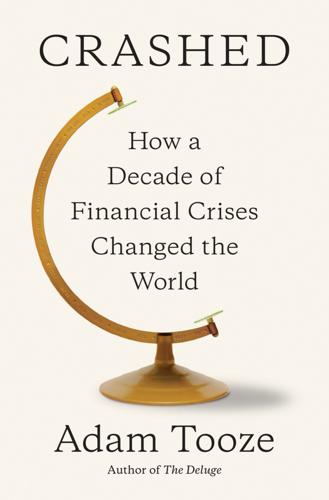
Crashed: How a Decade of Financial Crises Changed the World
by
Adam Tooze
Published 31 Jul 2018
But historians can contribute too.18 Trump offered to a bewildered present a throwback to an earlier era. Born in 1946, the same year as Bill Clinton, Trump would take office at seventy years of age, recycling a rancid version of the baby boomer narrative, which in the 1990s had still seemed fresh. Trump’s racial attitudes reflected the animosities of the era of civil rights, desegregation and New York in the 1970s. His boorish manners and sexism echoed the Manhattan party scene of the 1980s, when bond traders toasted one another as “big swinging dicks.” The sense of national crisis that drove his campaign was a reflux not so much of the recent past as of the first moment when modern Americans felt the world changing around them—the late 1970s and early 1980s.
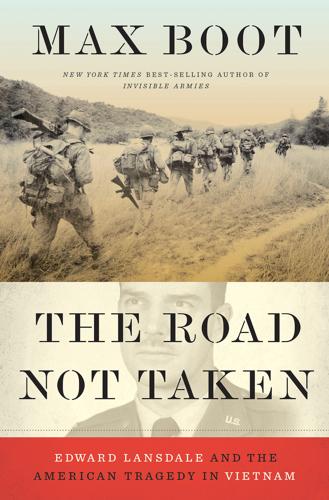
The Road Not Taken: Edward Lansdale and the American Tragedy in Vietnam
by
Max Boot
Published 9 Jan 2018
Maxwell Taylor was designated chairman, but there was no doubt who the real boss was. The attorney general was, as Arthur Schlesinger Jr. noted, “wildly busy in 1962,” with an around-the-world trip in February, a fight in April with the steel companies over alleged price fixing, a battle in September to desegregate the University of Mississippi, constant pressure against Jimmy Hoffa, and incessant feuding with Lyndon Johnson and J. Edgar Hoover about various matters. Yet he still found time to check in on Mongoose regularly in order “to needle the bureaucracy.”18 At meeting after meeting, the attorney general stressed that there had to be “maximum effort” and that “there will be no acceptable alibi” for failure.19 “Let’s get the hell on with it,” he would say.

The Great Shark Hunt: Strange Tales From a Strange Time
by
Hunter S. Thompson
Published 6 Nov 2003
There is a growing fear, shared by whites and Negroes alike, that the West End is becoming a black ghetto. Frank Stanley, Jr., the Negro leader who said "Integration here is a farce," blames urban renewal for the problem. "All they're doing is moving the ghetto, intact, from the middle of town to the West End." Urban-renewal officials reply to this by claiming the obvious: that their job is not to desegregate Louisville but to relocate people as quickly and advantageously as possible. "Sure they move to the West End," says one official. "Where else can they go?" It is a fact that whites are moving out of the West End as fast as they can. A vocal minority is trying to stem the tide, but there is hardly a block without a "For Sale" sign, and some blocks show as many as ten.

American Prometheus: The Triumph and Tragedy of J. Robert Oppenheimer
by
Kai Bird
and
Martin J. Sherwin
Published 18 Dec 2007
When Oppenheimer was asked in 1954 about these donations to the Communist Party, he explained, “I doubt that it occurred to me that the contributions might be directed to other purposes than those I had intended, or that such purposes might be evil. I did not then regard Communists as dangerous; and some of their declared objectives seemed to me desirable.” The Communist Party was often in the forefront of such progressive causes as desegregation, better working conditions for migratory farm workers, and the fight against fascism in the Spanish Civil War, and Oppenheimer gradually became active in a number of these causes. Early in 1938, he subscribed to the People’s World, the Party’s new West Coast newspaper. He read the paper regularly, taking an interest, he later explained, in its “formulation of issues.”
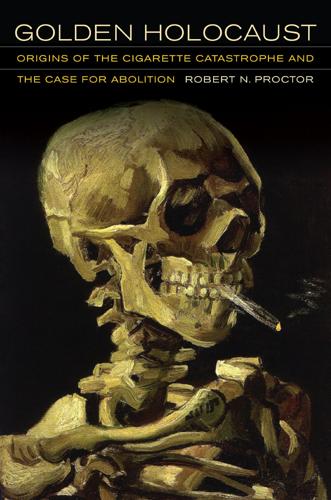
Golden Holocaust: Origins of the Cigarette Catastrophe and the Case for Abolition
by
Robert N. Proctor
Published 28 Feb 2012
Johnson of course had other things on his mind: President Kennedy had been assassinated less than two months previously, and the vice president had assumed the reins of power in some haste. Johnson was urged to embrace the report and to move against cigarettes by his undersecretary for health, the young Joseph Califano, but the president knew the Democrats were weak among whites in the tobacco-growing South, largely as a result of having championed the cause of racial desegregation. Johnson told Califano that taking on Big Tobacco could mean a loss for the Democrats in the next presidential election, a political risk he was not willing to take.44 That’s how powerful tobacco has been. More powerful arguably even than Big Oil, since Johnson felt no qualms about endorsing the reality of global warming (“This generation has altered the composition of the atmosphere on a global scale through . . . a steady increase in carbon dioxide from the burning of fossil fuels.”)45 Though widely reported as news, the Surgeon General’s report was actually something of an anticlimax for those on the frontiers of the relevant science.

Costa Rica
by
Matthew Firestone
,
Carolina Miranda
and
César G. Soriano
Published 2 Jan 2008
Figueres’ social-democratic policies and criticism of the government angers the Costa Rican elite and President Calderón. 1948 Conservative and liberal forces clash, resulting in a six-week civil war that leaves 2000 Costa Ricans dead, many more wounded and destroys much of the country’s fledgling infrastructure. 1949 Hoping to heal its wounds while charting a bold new course for the future, the temporary government enacts a new constitution abolishing the army, desegregating the country, and granting women and blacks the right to vote. 1963 Reserva Natural Absoluta Cabo Blanco at the tip of the Nicoya peninsula becomes Costa Rica’s first federally protected conservation area through the efforts of Swedish and Danish conservationists. 1987 President Oscar Arias Sánchez wins the Nobel Peace Prize for his work on the Central American peace accords, which brought about greater political freedom throughout the region. 2000 At the start of the new millennium, the population of Costa Rica tops four million, though many believe the number is far greater due to burgeoning illegal settlements on the fringes of the capital. 2006 Nobel laureate Oscar Arias Sánchez is elected president for the second time in his political career on a pro-Cafta (Central American Free Trade Agreement) platform despite winning by an extremely narrow margin. 2007 A national referendum narrowly passes Cafta.
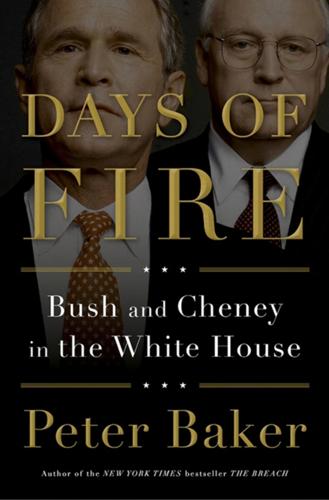
Days of Fire: Bush and Cheney in the White House
by
Peter Baker
Published 21 Oct 2013
At that point, Bush could have invoked the Insurrection Act, as his father did to restore order during Los Angeles riots in 1992, but in that case he did so at the request of the sitting governor. The last times a president invoked the act against the wishes of a governor were during the civil rights era, when Dwight D. Eisenhower and John F. Kennedy sent troops to enforce desegregation orders in the South. Bush was sensitive to the image of a white male Republican president declaring an African American city with an African American mayor and a female Democratic governor in insurrection. That, he thought, “could unleash holy hell” in the South. “I wanted to overrule them all,” he later said.

The Better Angels of Our Nature: Why Violence Has Declined
by
Steven Pinker
Published 24 Sep 2012
Horowitz discovered that in the second half of the 20th century in the West, his subject matter, the deadly ethnic riot, ceased to exist.12 The so-called race riots of the mid-1960s in Los Angeles, Newark, Detroit, and other American cities represented a different phenomenon altogether: African Americans were the rioters rather than the targets, death tolls were low (mostly rioters themselves killed by the police), and virtually all the targets were property rather than people.13 After 1950 the United States had no riots that singled out a race or ethnic group; nor did other zones of ethnic friction in the West such as Canada, Belgium, Corsica, Catalonia, or the Basque Country.14 Some antiblack violence did erupt in the late 1950s and early 1960s, but it took a different form. The attacks are seldom called “terrorism,” but that’s exactly what they were: they were directed at civilians, low in casualties, high in publicity, intended to intimidate, and directed toward a political goal, namely preventing racial desegregation in the South. And like other terrorist campaigns, segregationist terrorism sealed its doom when it crossed the line into depravity and turned all public sympathy to its victims. In highly publicized incidents, ugly mobs hurled obscenities and death threats at black children for trying to enroll in all-white schools.

California
by
Sara Benson
Published 15 Oct 2010
Free Speech & Free Spirits During World War II, members of the Armed Services were dismissed from service for homosexuality and insubordinate behavior in San Francisco, building the city’s notoriety for bohemian nonconformity. San Francisco became a proving ground for artistic freedom in 1957, when the City Lights Bookstore (opposite) won a landmark ruling against book banning over the publication of Allen Ginsberg’s Howl. Meanwhile, jazz broke down barriers in desegregated clubs, burlesque dancer Carol Doda and comedian Lenny Bruce challenged obscenity laws, and drag empress José Sarria led gay bar patrons in nightly choruses of ‘God Save Us Nelly Queens.’ Then, in what some might perceive to be a pronounced lapse in screening judgment, the CIA hired a local writer named Ken Kesey to test psychoactive drugs intended to create the ultimate soldier.

Parks Directory of the United States
by
Darren L. Smith
and
Kay Gill
Published 1 Jan 2004
Special Features: The admission in 1957 of nine black students to Central High School was a critical test of the implementation of the Supreme Court’s Brown v. Board of Education decision three years earlier, and drew national and international attention. In 1999 the Little Rock Nine each received the Congressional Gold Medal — our nation’s highest civilian honor — for their efforts to desegregate Little Rock Central High School. ★230★ LYNDON B. JOHNSON NATIONAL HISTORICAL PARK 100 Lady Bird Ln Johnson City, TX 78636 Web: www.nps.gov/lyjo/ Phone: 830-868-7128; Fax: 830-868-7863 Size: 1,570 acres. History: Authorized on December 2, 1969, as a national historic site; redesignated on December 28, 1980.